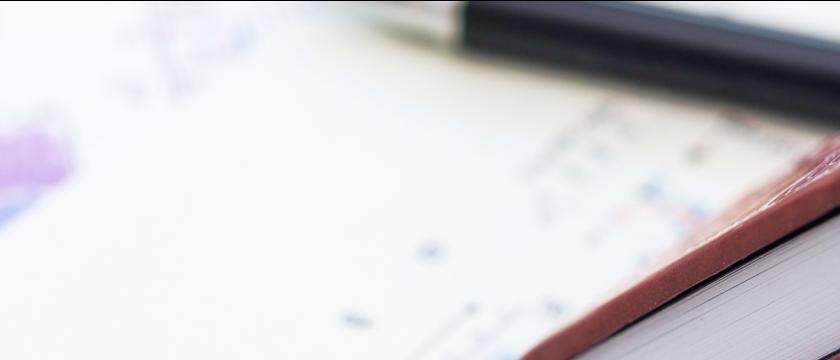Registration of public notification
If you register your e-mail address, we will notify you when the latest issue is published. If you wish, please register from the registration form. To delete your registration, please visit here.
All
All
Since the 1990s, communication technology has rapidly advanced, and specifically, the digitization of broadcasting has greatly accelerated the convergence of communication and broadcasting. This evolution has popularized broadcasting and video playback on mobile terminals, leading to a tremendous increase in wireless communication demand. Our company has been developing our business by utilizing GaN-HEMT and advanced signal processing technology to achieve high efficiency in high-power amplifiers for mobile base stations in communication systems. This paper focuses on the digital and analog signal processing technologies that form the basis of these communication systems, highlighting the currently widely used Orthogonal Frequency Division Multiplexing (OFDM) system. It also describes the technological development of communication systems, amplifiers, and GaN-HEMT models, along with future prospects.
3.7 MB

3.7 MB
With the rapid development of AI technology, autonomous driving is becoming a reality. To achieve this, it is important to have a comprehensive view of road and parking area conditions. However, achieving sufficient coverage is challenging because probe information is limited by data privacy concerns and road sensors are installed only on major roads. To address these challenges, we proposed an algorithm to detect vehicles using monochromatic images observed by an all-weather radar called Synthetic Aperture Radar (SAR). We evaluated the algorithm by comparing its results on SAR satellite images with vehicle counts obtained through visual inspection. This paper reports the results and discusses the challenges encountered in the process.
1.8 MB

1.8 MB
As production numbers of battery electric vehicles (BEVs), plug-in hybrid electric vehicles (PHEVs), and hybrid electric vehicles (HEVs) increase, the development of eAxle, which integrate motors, gears, and inverters, is accelerating. Although busbars currently dominate power supply harnesses to eAxle motors, there is a growing demand for flexible cables that offers superior vibration resistance and greater design freedom. Thus, we developed an easily deployable flexible cable, specifically for the power supply of oil-cooled eAxle motors. We selected fluoro rubber as the flexible insulating material due to its excellent resistance to ATF, which serves as both a refrigerant and a lubricant. However, we faced challenges in balancing flexibility with properties such as abrasion resistance and the prevention of adhesion between insulating materials. We addressed these issues by achieving the fine dispersion of crystalline components to enhance abrasion resistance and by controlling molecular mobility through cross-linking to reduce the adhesion of insulations. Through this study, we were able to develop a cable that meets the ISO 200°C rating, has ATF resistance and flexibility, and put it on the market.
1.5 MB
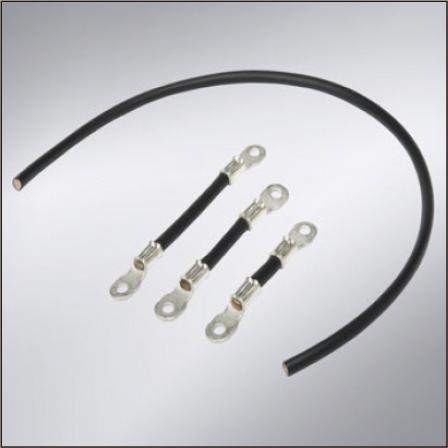
1.5 MB
The NTT proposes the IOWN concept as the next generation of information and communications infrastructure, characterized by low latency (1/200), high capacity (125 times greater transmission capacity), and energy efficiency (100 times improved power efficiency) based on an all-photonics network (APN). Through the activities of the IOWN Global Forum (IOWN GF), diverse companies from various industries worldwide participate in discussions regarding technologies and use cases for social implementation. These discussions are then presented to standardization organizations. Particularly, this enhanced low latency aims to facilitate previously impossible video services and contribute to advancements in data center configurations and financial systems. The Broad Networks (BNS) Division is actively developing foundational technologies and products for new market opportunities. As part of this effort, we developed an ultra-low latency media converter (LLMC) that leverages the characteristics of the IOWN APN. This paper reports on the design philosophy and the measured low latency performance achieved in accordance with the target specifications defined in the IOWN GF AI-assisted Entertainment Interactive Live Music (ILM) use case.
1.9 MB
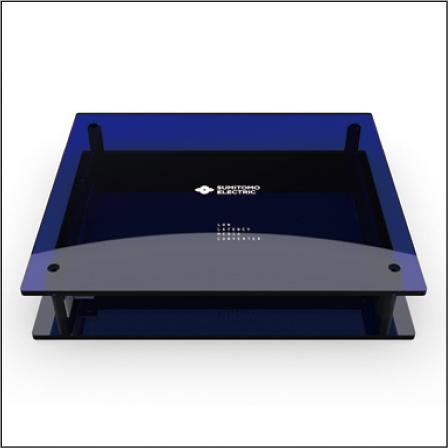
1.9 MB
This paper describes the structure, characteristics, and workability of the highly functional small-diameter 6912-fiber-count outdoor/indoor cable (small-diameter 6912-fiber-count O/I cable) designed for Data Center (DC) applications. This cable incorporates the conventional 200 μm fiber with a 12-fiber Freeform Ribbon, and a 16-fiber Freeform Ribbon suitable for parallel transmission used for AI and in DCs. To achieve a smaller diameter, we developed a central tension member (TM)-type spacer cable named “X-treme Spacer Cable.” This structure eliminates the bending directionality, which is also a characteristic of conventional spacer types, while successfully achieving a reduction in diameter and making the most of its excellent installation workability. With a non-preferential bend axis, this cable can easily be installed in space-constrained areas. Additionally, we developed a highly flame-retardant and low-smoke outer jacket material called Low Smoke Zero Halogen (LSZH), which has passed the stringent UL riser fire safety standards in North America. The use of this cable is expected to significantly reduce installation time and costs for DC optical wiring.
5.4 MB

5.4 MB
As the utilization of generative AI expands, the volume of information communication within data centers (DCs) is continuously increasing, and demands for long-distance communication such as that between DCs and trunk lines is also on the rise. Coherent optical communication technology is primarily used for this long-distance information communication. In anticipation of the widespread adoption of 800 Gbit/s digital coherent optical communication, we developed a 128 Gbaud optical modulator driver integrated circuit (IC) and a transimpedance amplifier (TIA). These ICs are required to achieve gain peak characteristics and variable gain functionality, in addition to high-speed operation matching the modulation speed of the optical signal. This report presents the IC design techniques and evaluation results necessary to achieve this performance.
2.6 MB
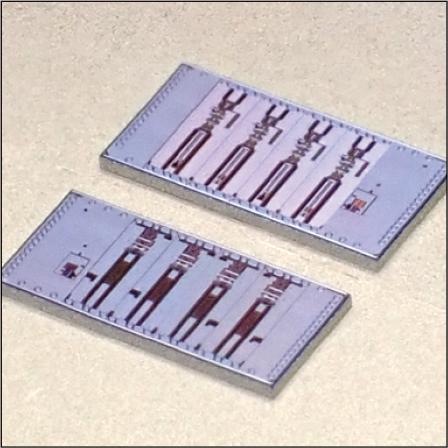
2.6 MB
Electron beam irradiation technology has been used in various industrial processes, including enhancing the heat resistance of wire coatings through cross-linking and improving the flowability of rubber sheets for tires. NHV Corporation has supplied numerous electron beam processing systems (EPS) within an extensive energy range of 100 kV to 5 MV to customers globally. In pursuit of the sustainable development goals, there is growing demand for environmental considerations, worker safety, and equipment downsizing. In response, NHV Corporation reports on the development of a new compact EPS (EB-XW) that drastically reduces the use of hazardous lead and enhances maintenance safety.
3.3 MB
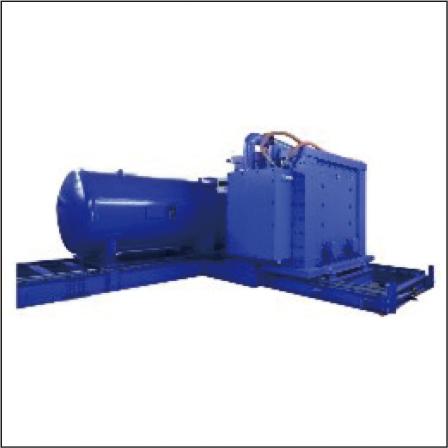
3.3 MB
Recently, the introduction of renewable energy such as solar power generation and wind power generation has been progressing in order to achieve carbon neutrality. However, the amount of power generated by renewable energy sources fluctuates depending on weather conditions, so storage battery systems are being used for grid stabilization. In addition, there is a growing need to cut peak power demand in factories, to implement power leveling during the day and night, and to supply power during blackouts. To reward these requirements, Nissin Electric Co., Ltd. has developed a new type of power conditioning system for storage batteries. We introduce these topics in this report.
2.3 MB
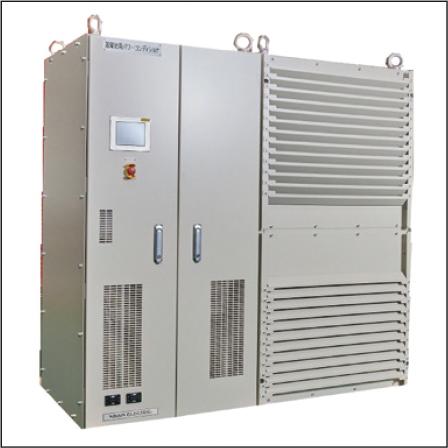
2.3 MB
Laser welding is increasingly used across various industries, especially in the automotive sector, due to rising demands for vehicle weight reduction and electrification. It is known that improvements in processing quality, such as reduced spatter, can be achieved by irradiating metal materials with a dual beam consisting of a center beam and a ring beam. While one method to achieve this involves introducing an oscillator capable of outputting dual beams, another method uses a beam-splitting diffractive optical element (DOE). The first approach faces the challenge of high implementation costs, while the second approach faces the challenge of the inability to adjust the intensity ratio of the dual beams, respectively. To address these challenges, Sumitomo Electric Hardmetal Corp. developed the Adjust-Shaper, which retrofits existing single beam systems to enable dual beam output and allows for flexible adjustment of the intensity ratio. This paper presents the product features and evaluation results from its implementation in a laser processing head.
2.3 MB
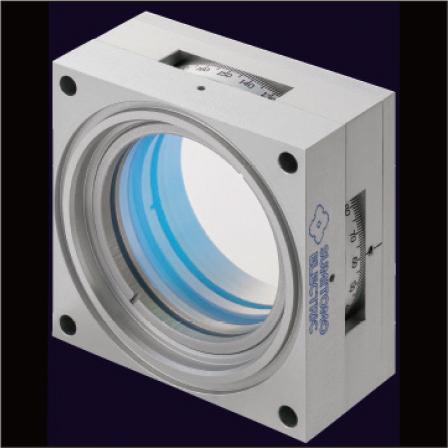
2.3 MB
Our company has traditionally relied on manual visual inspections for defect detection, which required considerable manpower and often led to inconsistencies in inspection standards depending on individual inspectors. To address these issues, we developed an AI-based visual inspection system to automate defect detection. However, a key challenge was the limited availability of defective product images for training, which impeded the enhancement of detection accuracy. To resolve this, we introduced an image generation AI capable of producing a large number of synthetic defective images from a small number of real defective samples. Furthermore, we developed a complementary method to analyze and identify the types of images that the inspection AI system is prone to misclassifying, thereby pinpointing its weaknesses. By generating targeted images to address these weaknesses and iteratively training the inspection AI system in a focused manner—a process we term the “anti-weakness training loop"—we were able to significantly improve system performance. Consequently, even with limited real defect data, we shortened the development time and enhanced the detection accuracy of the visual inspection AI system. This paper reports on the development and results of this approach.
2.9 MB
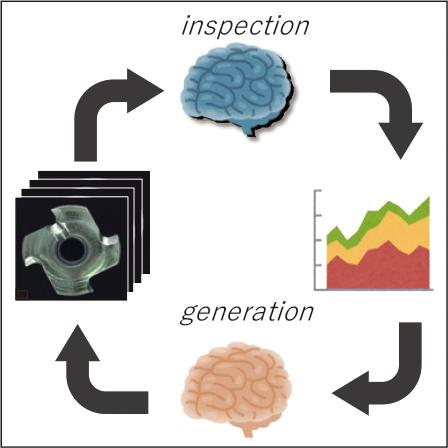
2.9 MB
We are developing and operating AI systems for automated visual inspection of products using image data. Implementing such AI in manufacturing environments presents two main challenges: First, substantial manpower is required to prepare the necessary image data and its accompanying annotations (labeled data) for AI development. Second, the basis of AI inspection results is not visualized, hindering trust in the factory setting. To address the first challenge, we applied self-supervised learning to the Transformer AI architecture, a method also adopted by ChatGPT, minimizing the need for extensive annotations. For the second challenge, we developed a function to incorporate human knowledge into AI by utilizing our novel sigmoid attention mechanisms to clarify the areas of focus. Our original sigmoid attention, adopted as a method of utilizing attention, not only enhances the visualization of the grounds for AI judgments but also contributes to performance improvement. We report our solutions to the two challenges in detail.
2.5 MB
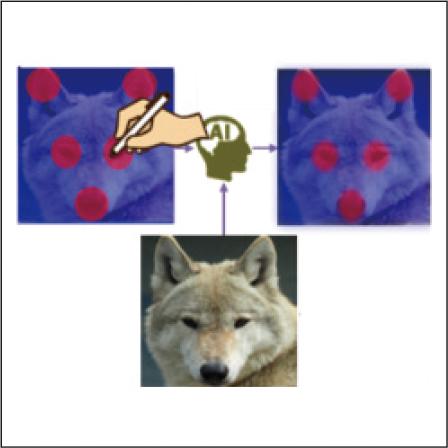
2.5 MB
Active optical cable (AOC) are optical harnesses equipped with photodetectors that enable long-distance high-speed transmission of optical signals (e.g., 100 m, 40 Gbps) over multimode fiber. In recent years, there has been increasing attention in the medical and industrial machinery sectors for the replacement of metal wiring with AOCs using optical fibers to suppress electrical noise in high-speed signal transmission paths. However, in certain applications, metal wiring is still necessary for power supply and other needs, making hybrid AOCs that combine metal wires and optical fibers essential. Additionally, with the miniaturization of devices and an increase in moving parts within the same sectors, there has been a growing demand for robust mechanical reliability in wiring materials. Yet, the difference in mechanical reliability between optical fibers and metal wires has become a concern. This report introduces the Unbreakable Active Optical Cable (UB-AOC), developed by enhancing the mechanical reliability of metal wires, which are generally less reliable than optical fibers. We have implemented a specialized resin coating on our proprietary Thick Copper Covered (TCC) wire.
1 MB
Currently, data center (DC) construction is progressing to accommodate the rapid increase in traffic due to the emergence of generative AI and machine learning. By interconnecting multiple DCs, data can be shared, and services such as backup and redundancy can be provided. To realize these services, it is necessary to install optical cables in outdoor underground ducts that connect distant DCs, and there is an expectation that many fibers can be efficiently deployed within these space-limited ducts in a short term. In this context, Sumitomo Electric Lightwave Corporation has commercialized new outdoor/indoor hybrid cables (OI cables) ranging from 288–3,456 fibers by changing the cable design from conventional central tube cable to Monotube Cable, resulting in a drastic reduction in cable outer diameter and weight compared to previous designs.
0.7 MB
In recent years, the use of microwaves for heating applications has been expanding, not only in consumer applications such as food heating in microwave ovens but also in industrial processes including food processing, drying of materials like wood and resins, as well as plasma generation in semiconductor equipment. Traditionally, magnetrons have dominated the field of microwave heating due to their low cost and high output as vacuum tube components. However, Gallium Nitride High Electron Mobility Transistors (GaN HEMTs) have garnered attention in recent years due to their long lifespan, high reliability, and low noise characteristics. Additionally, GaN HEMTs offer high controllability of phase, frequency, and output power, enabling the realization of new heating functions such as uniform heating and selective heating.
0.8 MB
Shipboard radar is used for navigation, collision avoidance, and weather monitoring, with operating frequencies varying according to application, including X-band and S-band. In recent years, there has been an expected increase in radar demand due to a growing emphasis on safety aimed at automated navigation. Among this trend, there is a shift from vacuum tube components, such as magnetrons, to solid-state components like Gallium Nitride High Electron Mobility Transistors (GaN HEMTs). This shift is driven by the fact that vacuum tube components have a relatively short replacement cycle of 1 to 2 years due to their limited lifespan, which contributes to rising operational costs. In contrast, solid-state components offer long-term reliability of over 10 years, eliminating the need for regular replacements like those required for magnetrons. Additionally, technologies such as pulse compression enable solid-state components to achieve radar performance equal to or exceeding that of magnetrons with lower power consumption, leading to expectations of continued demand growth.
0.7 MB
At Sumitomo Electric Industries, Ltd., the Industrial Materials Group is only one of five business segments that was organized according to our product category: materials, rather than market. Therefore, it is difficult to find consistency in customers, market, application, and research and development (R&D) direction in each business area. On the other hand, there is a commonness in that each industrial materials division tries to make the materials and their quality unique and thus to differentiate these materials from the products of our competitors. In the development of new materials, the responsible divisions are also common in approaching the R&D projects scientifically and efficiently by employing computational science, machine learning, and other tools, which will be discussed later. At the occasion of the publication of this special issue on industrial materials, I briefly describe the history and future direction of development in each of our businesses with a focus on materials.
1.5 MB
High-strength materials like titanium alloys and heat-resistant alloys are difficult-to-cut materials. They are used in industries such as aerospace and medical sectors, where the demand for high-quality processing and efficiency is increasing. For these demands, we have developed next-generation ultrafine-grained cemented carbide for difficult-to-cut materials. We successfully improved the interface strength between hard-phase particles to prevent damage from particle detachment and reduce wear in high-efficiency machining by enhancing the binder phase strength. By integrating these two technologies, we have achieved longer tool life in cutting difficult-to-cut materials. At the occasion of the publication of this special issue on industrial materials, I briefly describe the history and future direction of development in each of our businesses with a focus on materials.
6.3 MB
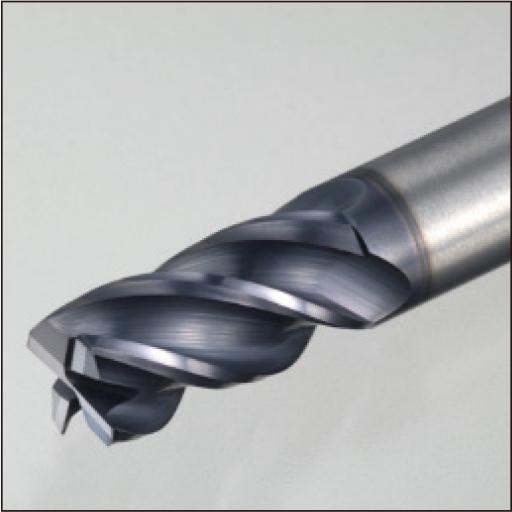
6.3 MB
During cutting processes, cutting edges cannot be directly observed, leading to reliance on skilled workers' intuition and experience for optimizing cutting conditions. In recent years, sensors equipped in machine tools have been utilized to comprehensively monitor machining conditions including cutting forces. However, their sensitivity and accuracy are insufficient due to distance between the cutting point and measurement position. To address this challenge, we have developed “Sumi Force,” a sensing tool that measures cutting forces in real-time by embedding strain sensors in the tool holder, where inserts, drills, or end mills are held, closest to the cutting point. The measured data is wirelessly transmitted outside the machine tool, enabling easy integration to various machines and production lines used by customers. This paper introduces a new solution service that utilizes “Sumi Force” to optimize machining processes for customers, and discusses the development of techniques to detect anomalies such as tool wear and breakage based on changes in cutting force.
3.8 MB
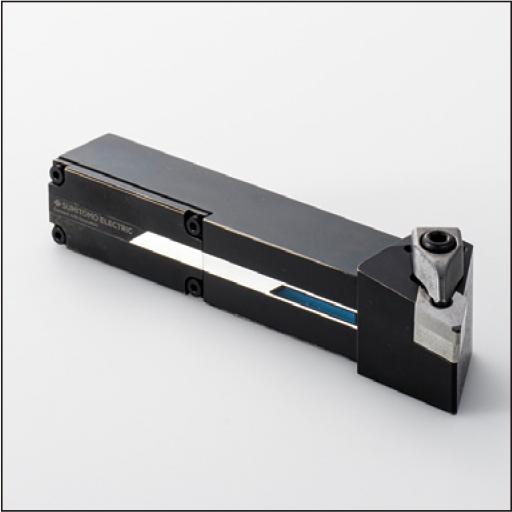
3.8 MB
Cutting tool requirements change from year to year. In the automotive industry, the shift to electrification is increasing the demand for lightweight tools that enable highly efficient machining of aluminum alloy components. In the aerospace industry, the use of difficult-to-machine materials such as nickel-based alloys and titanium alloys to reduce engine noise and fuel consumption is increasing, as is the need for through-coolant tools that can efficiently cool cutting edges when machining these materials. In response to these shifting market demands, we are employing additive manufacturing (AM) to develop innovative cutting tools. This time, by utilizing AM to form a complex internal structure, we have realized a lightweight cutter for aluminum machining that maintains the rigidity of the cutting edge while reducing the weight. Additionally, we have developed a cutter for difficult-to-cut materials that enables uniform cooling of the entire cutting edge by optimizing the internal flow path.
6.2 MB
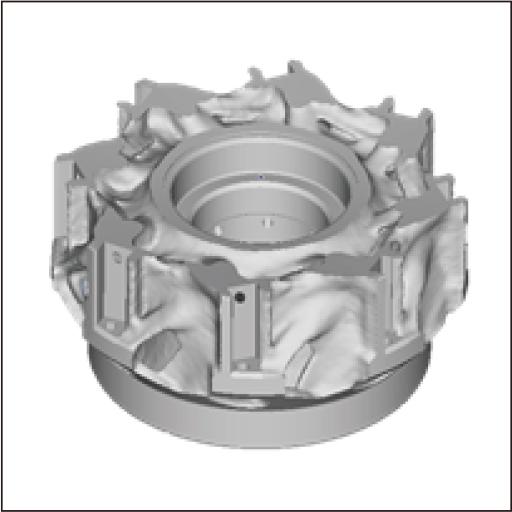
6.2 MB
In recent years, various industries, including the automotive sector, have been advancing their initiatives toward achieving green transformation (GX) by reducing CO2 emissions in cutting processes. Decreasing CO2 emissions involves cutting machine power consumption, leading to a rising demand for high-efficiency machining tools that reduce machine cycle time. To meet these requirements, we have developed the MULTIDRILL MDA Series for aluminum drilling and the MULTIDRILL MDH Series for steel and cast iron drilling. The MDA series enables high-precision, high-efficiency aluminum machining, while the MDH series delivers high-efficiency machining with reduced cutting force and power consumption for steel and cast iron processing. These tools contribute to power-saving in hole making processes.
6.1 MB
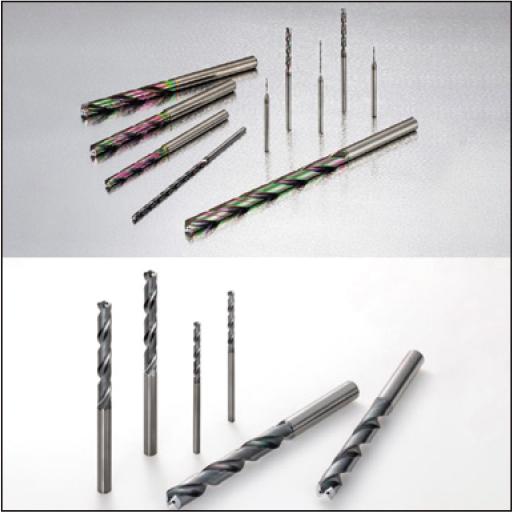
6.1 MB
Efforts are underway in the steel machining, particularly in the automotive industry, to reduce the environmental impact and to enhance resource efficiency. We introduced the AC8000P series for steel turning in 2016, featuring the new chemical vapor deposition (CVD) coating technology “Absotech,” and have since expanded our product range. In recent years, there has been a growing trend in steel turning especially toward reducing machining time and transitioning to dry cutting without the use of cutting fluids. In response to this trend, we have developed AC8115P, a new steel turning carbide grade designed for high-efficiency and dry cutting applications. AC8115P demonstrates outstanding performance by addressing the challenges of high cutting-edge temperatures, effectively minimizing tool wear and plastic deformation. This grade’s enhanced resistance characteristics are key to reducing machining costs and environmental impact in steel turning operations.
7 MB
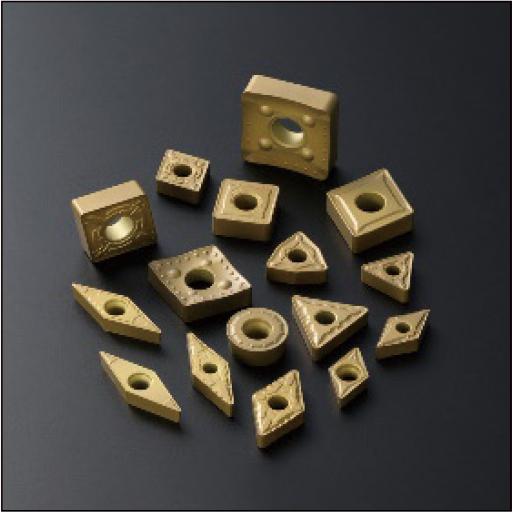
7 MB
Titanium alloys are widely used for equipment and parts in the aerospace industry due to their lightweight, high strength and excellent corrosion resistance. Additionally, these alloys are also used in the medical field because of their high biocompatibility. In recent years, both industries have experienced significant growth, leading to a marked increase in demand for cutting tools for these alloys. However, when machined, titanium alloys are prone to adhesion due to chemical reactions with tools and heavy wear resulting from low thermal conductivity, leading to a significant reduction in cutting tool life. Thus, the demand for cutting tools with stable performance and a long tool life has been increasing. The newly developed "AC9115T" and “AC9125T” are designed to improve wear resistance by applying a new physical vapor deposition (PVD) coating. These coated carbide grades help reduce the frequency of cutting edge replacement and tool consumption by extending the tool life, contributing to the reduction of machining costs.
7.9 MB
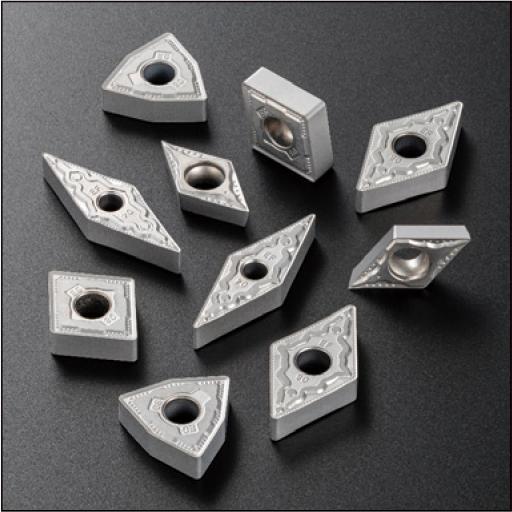
7.9 MB
The cubic boron nitride (CBN) cutting tool “SUMIBORON” is made of sintered cBN particles, which have high hardness and thermal conductivity next to diamond and low reactivity with ferrous metals, bonded with a metal and/or ceramic binder. It has contributed to the improvement of machining efficiency and cost reduction in processing hard-to-cut hardened steel, and in machining of cast iron and sintered alloy where high-precision machining is required. In recent years, the machining of cast iron and sintered alloy parts—key components in automotive and construction machinery—has seen increasing demand for stability, long tool life, and high efficiency. In addition to high dimensional accuracy and surface quality, there is also a growing need for manpower savings in production lines and the manufacturing of high-precision parts. In response to the demand, we have developed CBN cutting tools SUMIBORON BN7115 and BN7125. BN7115 is designed for finishing, offering improved chipping resistance for stable, high-quality surface machining, while BN7125 is designed for general-purpose use, with enhanced breakage resistance for stable, long tool life even under heavy cutting loads. This report describes the features and performance of BN7115 and BN7125.
2.7 MB
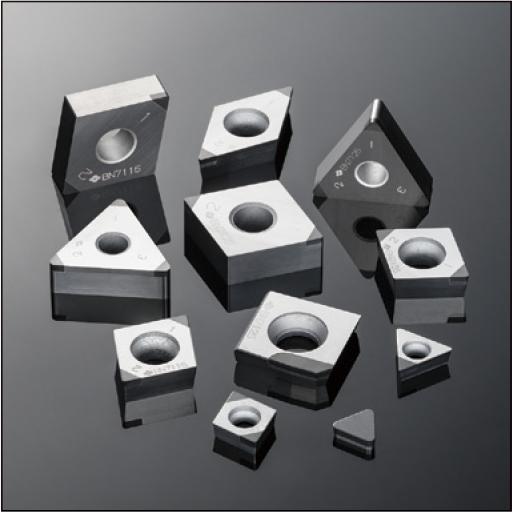
2.7 MB
SUMIBORON is a cutting tool that utilizes cubic boron nitride (CBN) sintered bodies formed from cBN particles and ceramic or metal bonding materials. Specifically, coated SUMIBORON has an expanded application range as a cutting tool for hardened steel in automotive parts. Recently, manufacturing sites have become aware of variable-volume production due to the diversification of parts and the importance of environmental considerations. Two trends have emerged: reducing CO2 emissions by lowering equipment power consumption and establishing automated product lines to address price competition. Cutting tools require higher efficiency and longer tool life. To meet customer requests, we developed four new grades in the BNC2100 series: BNC2105, BNC2115, BNC2125, and BNC2135.
2.8 MB
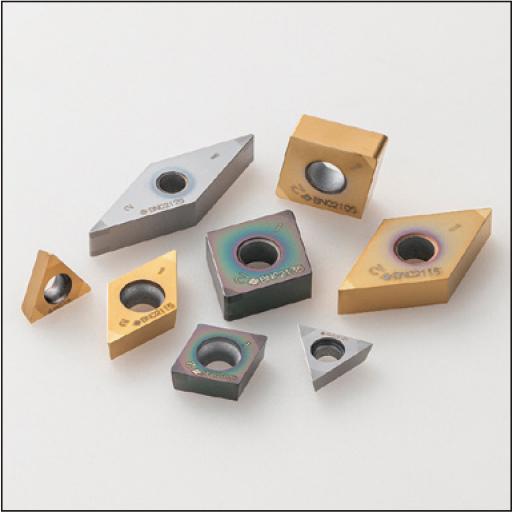
2.8 MB
The tensioning process of prestressing steel strands involves introducing the required prestressing force into concrete structures, which is a critical step affecting the structure's durability. Traditionally, this process involved manual operation of tensioning equipment for prestressing steel strands and visual readings of analog gauges for recording, leading to challenges such as labor-intensive processes, measurement errors, and the need for proximity to tensioning equipment. The automatic tension control system automates these tasks using control devices and digital measuring instruments, contributing to reduced manual labor, enhanced accuracy, and improved safety. This paper provides an overview of the wireless automatic tension control system that eliminates the need for communication cable wiring, along with examples of its application and benefits.
5.6 MB
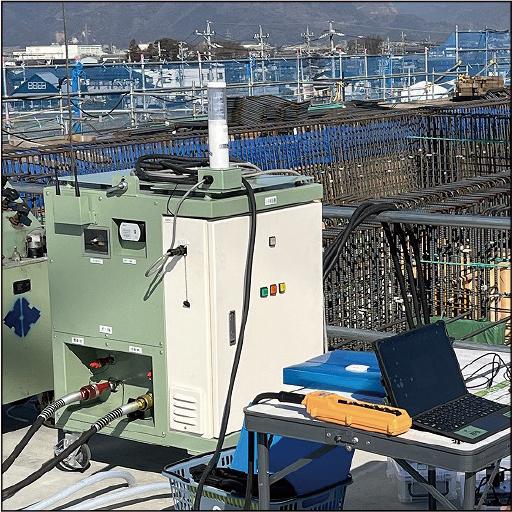
5.6 MB
Steel cords, used as reinforcement in rubber products, are essential components for automotive tires that require high standards of fuel efficiency, durability, handling stability, and noise reduction. Conventionally, the development process involved repeated experiments, evaluations, and modifications to ensure the steel cords meet the required tire performance levels. However, this approach posed challenges such as extended development periods due to the time and effort required for evaluations, difficulties in achieving sustainable society due to tire waste, and the influence of tire design factors on tire performance. To address these issues, we developed a performance prediction technology that incorporates steel cord features. This technology enables efficient and accurate examination, specification refinement, and narrowing-down and evaluation of technical interpretation in tire design involving steel cords. The technology not only enhances tire performance but also contributes to achieving the Sustainable Development Goals, earning high praise from our customers.
3 MB
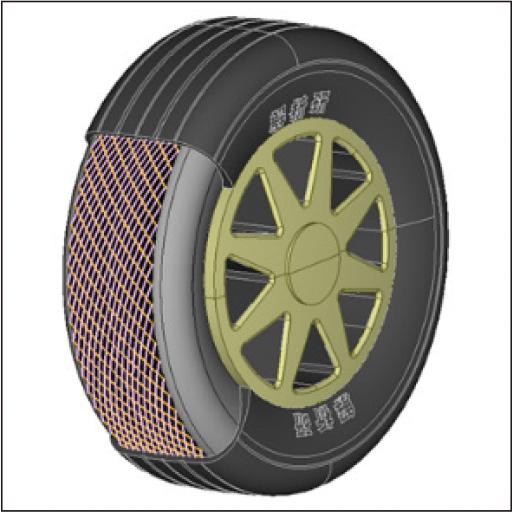
3 MB
We assessed the application of high-strength steel wires (spring wires) for creating safe and efficient blades for grass cutters. Utilizing our specially shaped wires, blades were produced and tested in the fields of the National Agriculture and Food Research Organization (NARO) using both grass trimmers and remote-controlled grass mower. By changing the steel wire's cross-sectional shape from a simple square to a pentagon with sharp apexes, we achieved cutting performance comparable to traditional chip saws. The remote-controlled grass mower successfully showed its performance in cutting down bushes and woody plants with diameters over 10 mm, which was impossible with nylon cords. Introducing a freely rotating attachment for the cutting blade prevented fatigue failure of the steel wire blade and eliminated the risk of “kickbacks.” However, during stone skipping tests, significant stone scattering occurred, and the attachment part showed weakness in impact resistance against hard objects, prompting us to propose solutions for these challenges.
9.4 MB

9.4 MB
To achieve carbon neutrality, it is necessary to reduce CO2 emissions and increase the amount of CO2 absorption simultaneously. One method to increase CO2 absorption is through carbon recycling, which involves the production of functional materials and iron carbonate (trademark: metacol), using iron and CO2, which have an affinity with our manufacturing sites. This paper reports on this method. We aim to utilize iron carbonate in our own products, incorporating the emitted CO2 into material circulation and continuously isolating it from the atmosphere. Through principle verification, functional evaluation, equipment design, factory verification, and intellectual property protection, we will proceed to validate customer value. We will confirm achieving a negative CO2 balance and profitability, and aim to contribute to carbon neutrality through carbon recycling.
1.2 MB
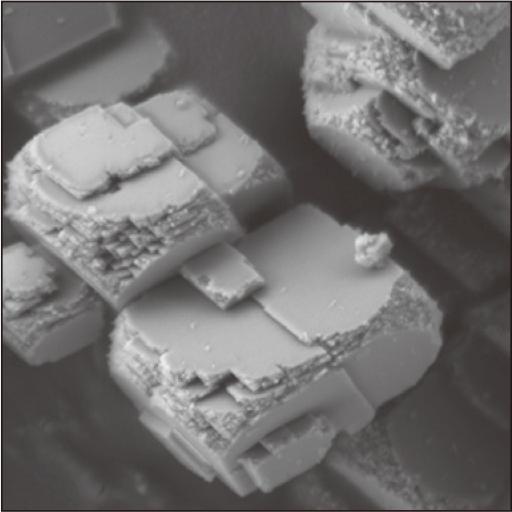
1.2 MB
Iron-based sintered parts have traditionally been used as structural components across various fields due to their ability to be efficiently net-shaped into complex shapes using powder compacting technology, leveraging the excellent balance of strength and cost that iron offers. In recent years, the demand for smaller, lighter, high-strength, non-magnetic materials has been on the rise in sensing technology required for further advancements like electric vehicles, high-performance appliances, and smart factories. In response to these trends, we have developed a new non-magnetic, high-strength iron-based sintered material that goes beyond existing materials. This paper discusses the characteristics and benefits of this newly developed material.
1.7 MB
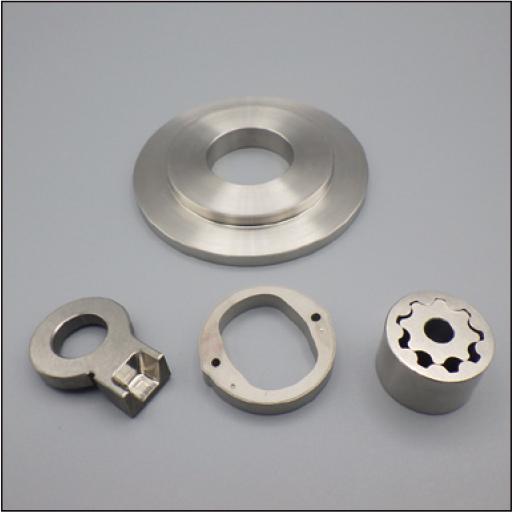
1.7 MB
We have developed soft magnetic composites (SMCs) and an axial flux machine (AFM) utilizing SMCs to contribute to the advancement of a sustainable society. The estimated CO2 emissions from SMC manufacturing are approximately one-quarter of those produced during magnetic steel sheet manufacturing. Additionally, we have developed a recycling technology that allows for the reuse of powdered motor stator as raw material for SMCs while demonstrating consistent magnetic properties before and after recycling. Furthermore, our innovative design of a 75 kW-class AFM with a power density of 12.6 kW/kg illustrates the effectiveness of SMCs and AFM in reducing material usage. Finally, we have confirmed that our 20 kW-class AFM, which incorporates low CO2 emission ferrite magnets, matches the size, power, and efficiency of a radial flux machine utilizing Nd sintering magnets.
4.7 MB
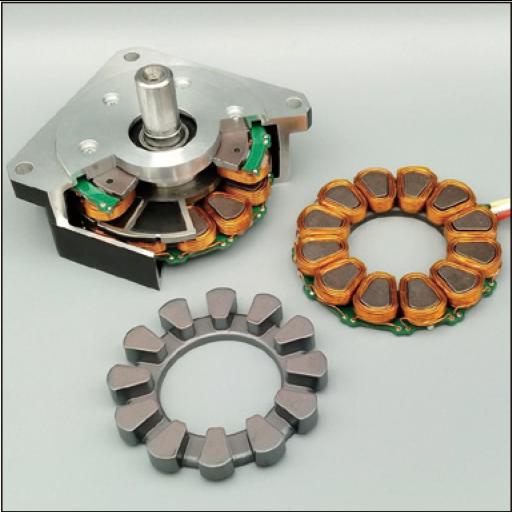
4.7 MB
Powder metallurgy involves compressing powder in a mold and sintering it to strengthen compact parts. Through innovative mold designs, near-net-shape compacts that closely resemble the final product can be achieved. Parking support parts are found in various vehicle types, including hybrids and electric cars as well as gasoline cars, and are crucial components used in parking lock systems to prevent wheel rotation during parking, with diverse shapes. We successfully developed parking support parts utilizing the shape flexibility of powder metallurgy, contributing to the growth of the sintering market. Our development includes examples like adjusting density balance by removing excess powder, compacting two different shapes, creating horizontal grooves, and integrating multiple components. Additionally, the use of partial laser hardening has enabled precise production while promoting environmentally friendly manufacturing practices.
2.2 MB
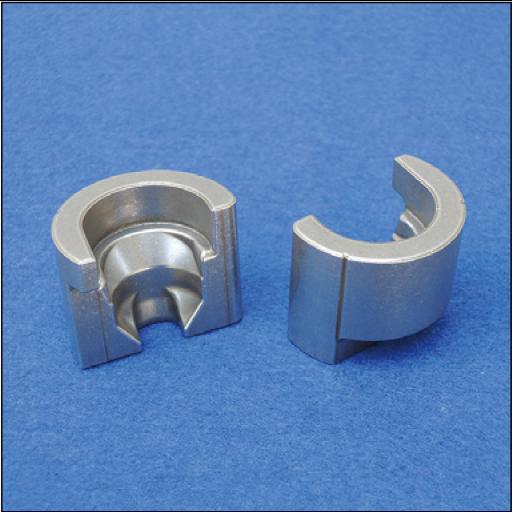
2.2 MB
Research on fusion energy, a key contender for achieving decarbonization, is becoming increasingly active. Tungsten (W) is used in the divertor of fusion reactors, which is exposed to extreme temperatures exceeding 2000°C. The DEMO-Reactor, designed to demonstrate power generation, is expected to operate for extended periods, requiring increased mechanical durability from W materials used in fusion reactors. In collaboration with universities and other institutions, A.L.M.T Corp. has evaluated various materials and has found the effectiveness of potassium (K)-doped W. Aiming to apply the findings to plasma-facing components, we have developed K-doped W thick plates tailored for this specific application. This paper reports the evaluation results of the main characteristics of these materials.
3.3 MB

3.3 MB
Sumitomo Riko Company Limited has successfully developed a water-soluble coating material with a high filling of "silica aerogel," a highly insulating material, and created a thin film high insulation material. This material has the highest level of insulation performance through air insulation and can exhibit its performance even when the thickness is 1 mm or less. In recent years, there has been a growing trend of increasing heat generation density in electronic devices and batteries due to their high integration and miniaturization. Therefore, we are considering applying this material to contribute to thermal management. Additionally, it is attracting attention as a product that can enhance the thermal efficiency of factory facilities and contribute to the reduction of energy consumption such as fuel and electricity, thanks to its easy application. It has already been adopted in the manufacturing industry.
2.8 MB
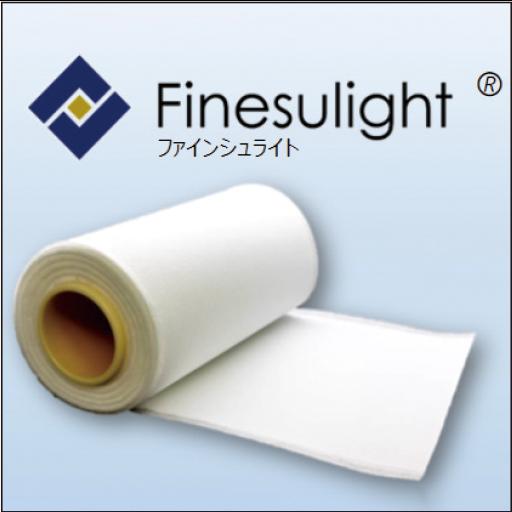
2.8 MB
In the U.S., the increase in pedestrian fatalities has led to a rising demand for pedestrian detection sensors in systems aimed at preventing traffic accidents. However, many existing sensors lack sufficient vertical detection range since they are typically installed at high positions in actual intersections, creating blind spots directly below them. In cases where the installation point is adjacent to a pedestrian crossing, there are instances where parts of the crosswalk or waiting area may go undetected. To address this issue, we have prototyped a fusion sensor combining radar with a camera. The fusion sensor eliminates blind spots below it by detecting pedestrians at the spots with the camera. Furthermore, using object recognition AI with camera images enables the sensor to identify the type of detection targets, a challenge for radar alone. This paper introduces the prototyped fusion sensor configuration and presents the results of performance verification experiments.
7.3 MB

7.3 MB
Our company is developing Analog Radio-over-Fiber (A-RoF) technology for wireless signal transmission, enabling the transmission of radio waves through optical fiber while maintaining their waveform for 5G and 6G wireless communication. This paper introduces our efforts in developing A-RoF technology, focusing on enabling the economically viable deployment of millimeter-wave (mmWave) radio communication systems , which are essential for broadband wireless communication in the eras of 5G and 6G. Additionally, we showcase the application of A-RoF technology in the 5G millimeter-wave distributed antenna system (DAS) and industrial 5G terminals supporting millimeter-wave communications.
2.1 MB
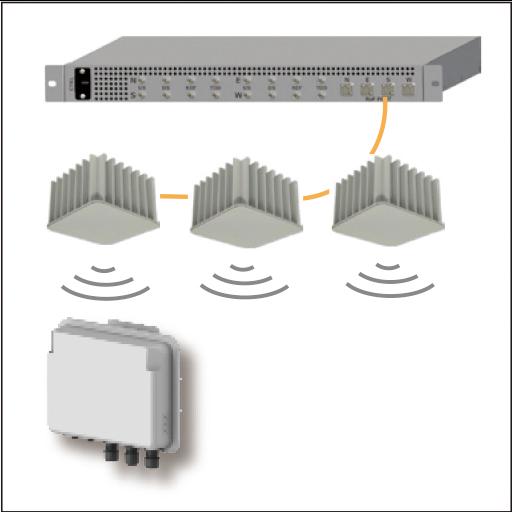
2.1 MB
Nisshin Ion Equipment Co., Ltd. has pioneered the development of “KYOKA,” the world's first mass-production material modification equipment for semiconductor device manufacturing. By combining our high-current large-area ion source technology with advancements in low-energy ion beam transport efficiency and the development of stable metal ion sources, we have successfully developed this innovative equipment. The use of this equipment is expected to advance semiconductor microfabrication technology and enhance device performance. This paper provides an overview of the demand for material modification, the structure and features of the equipment, and presents experimental results utilizing the equipment.
1.2 MB
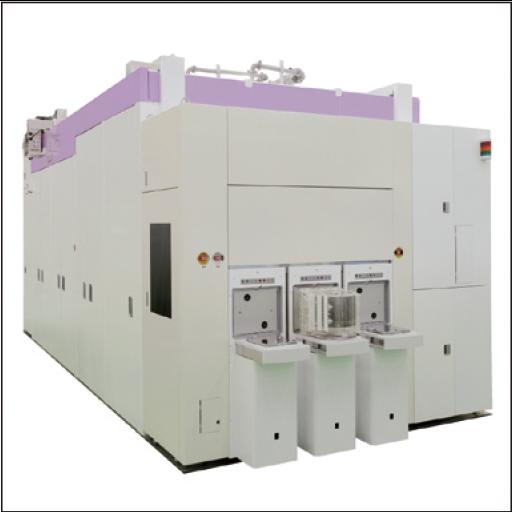
1.2 MB
Fluoropolymers have excellent properties such as heat resistance, chemical resistance, and low friction. However, their susceptibility to wear has been a significant drawback. The cross-linked fluoropolymer FEX, developed using electron beam crosslinking technology, has significantly enhanced wear resistance and paved the way for its use as a sliding material. In the past, application to general molded products was challenging due to the requirement for electron beam irradiation in a molten state exceeding the resin's melting point, causing to deformation of the molded shape. This paper presents recent insights into the utilization of FEX technology for such molded applications.
4.2 MB

4.2 MB
Evaluating the performance of electric cable products under external forces, such as bending, is crucial for assessing their behavior in real-world environments. We utilize a cutting-edge X-ray computed tomography (XCT) system to observe the effects of external forces and employ various data analysis techniques to enhance our understanding of how cable products respond dynamically to these forces. The first part of this paper introduces XCT observation results of some samples, including a bent cable and a large 1-meter sample, which were previously difficult to evaluate with former XCT systems. The latter part focuses on image analysis techniques for bent cable products, highlighting our unique technology. Through a combination of advancements in hardware and software, we can improve design processes and solve quality issues by clarifying the dynamic behavior of various cable products under external forces.
3.5 MB
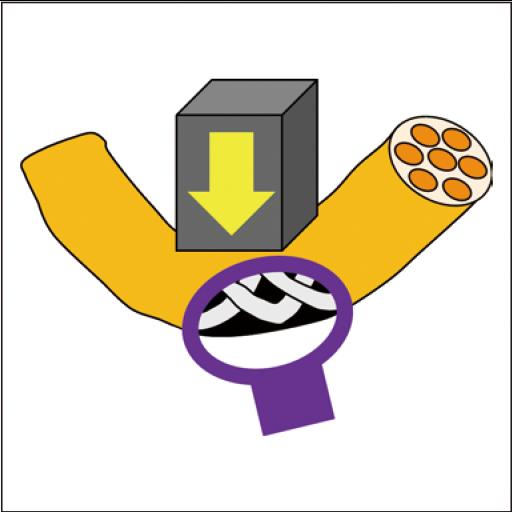
3.5 MB
For the first time for a local power utility established by a municipality, a redox flow battery system was delivered to Kashiwazaki Ideal & Realistic Energy Co., Ltd. located in Kashiwazaki City, Niigata Prefecture. As the introduction of renewable energy expands, it is expected that the introduction of long-duration energy storage (LDES) with a capacity of 6 hours or more will accelerate in the future. This installation is an example of an LDES connected directly to the power grid.
1.5 MB
In the firing process of magnets, ceramics, and other materials, many setter plates for firing, which are manufactured from molybdenum plates and rods, as well as heaters and reflectors for high-temperature furnaces are used. To improve the quality of fired products, there is an increasing demand for molybdenum mesh (mesh material) for venting during firing and preventing the sticking of the setter plate to the fired products. This mesh material is fabricated using wires of 0.5 mm or less in diameter. This paper introduces “mesh with edge folded” and “mesh with improved resistance to breakage,” both designed to address the problems of “fraying” and “breakage due to high-temperature use” observed in practical applications, as along with standard molybdenum mesh.
1.3 MB
With the advancement of autonomous driving and vehicle electrification, the number of onboard sensors is expected to increase. Powering each sensor via wired connections can lead to increased costs and weight due to power and communication cables. This paper investigates wireless power transmission using a spatial transmission method to supply power to each sensor. We confirmed that a temperature sensor embedded in the headrest could operate at 30-second intervals using wireless power transmission at a transmission frequency of 920 MHz and a transmission power of 1W. In addition, we simulated the distribution of electric field intensity inside the vehicle cabin and confirmed that the electric field intensity required for the sensor to operate could be achieved in most areas of the cabin.
3.4 MB
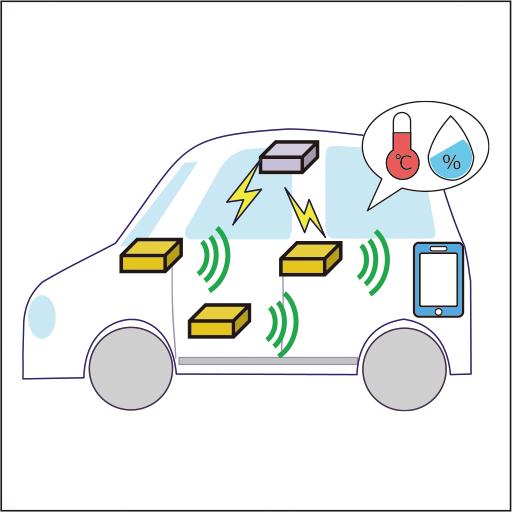
3.4 MB
For the realization of autonomous driving, 5G is expected to be used due to its superior features such as high speed, large capacity, and low latency capabilities. To enable large-scale data communication, such as sensing information transmission, it is desirable to use the millimeter-wave band, which has a bandwidth of several hundred megahertz in 5G. 5G millimeter-wave antennas use beamforming technology to transmit radio waves over long distances. We set up a scenario where a vehicle equipped with a 5G millimeter-wave antenna communications with a base station and performs beamforming control while driving, and dynamically evaluated it using 5G signals. This paper reports the evaluation method and results based on the proposed scenario.
3.9 MB

3.9 MB
The long-term reliability of optical fibers heavily depends on the durability of the protective coating layers surrounding the glass fiber. The physical properties of the inner layer coating, such as Young's modulus and gel fraction are crucial to the durability. Ultraviolet light (UV) curable resins are commonly used for coating, and accurate prediction of the physical properties under different irradiation condition is essential for optimizing the manufacturing process. However, the complex reaction mechanism involved in UV irradiation-induced radical polymerization poses challenges in accurately modeling these properties. In this study, we presents an analytical formula based on chemical reaction kinetics to determine the concentration of photoinitiators. Moreover, we successfully predict coating properties by utilizing a calibration curve that compares the photoinitiator consumption rate with the coating properties after the curing process.
1.7 MB

1.7 MB
To meet the rapidly increasing demand for optical communication traffic, a high-capacity solution is required through the high-density integration of optical devices. The challenge lies in the potential degradation of device performance due to heat generation. Consequently, there is a need for a semiconductor laser exhibiting superior temperature attributes. Addressing this, we have developed a 1.3 µm-wavelength laser, employing a GaInAs/GaAsSb/GaInAs type-II active layer on a GaAs substrate, suitable for optical communication. This has been achieved utilizing our proprietary low-temperature growth technology from highly productive Organic-Metal Vapor Phase Epitaxy. Our solution exhibits a characteristic temperature of the threshold current density of 152 K between 25°C and 100°C, a value significantly larger than the traditional 60 K of InGaAsP lasers on InP substrates. This result demonstrates the feasibility of a 1.3 µm semiconductor laser with a type-II active layer, less susceptible to performance degradation in high-temperature environments.
1.4 MB

1.4 MB
The growing demand for generative AI and high-performance computing has increased the importance of high-speed, energy-efficient communications in data centers, leading to an increased focus on co-packaged optics (CPO). The external laser sources (ELSs), a component of CPO, require high optical output power of several hundred mW and low power consumption with power conversion efficiency greater than 20%. This paper discusses the integration of a wide stripe waveguide semiconductor optical amplifier (SOA) into a 1.3 μm high-power semiconductor laser for CPO. By using an electrically isolated structure for each element, we have optimized the power distribution to achieve over 400 mW output power and 25% power conversion efficiency at a temperature of 45℃.
1.6 MB

1.6 MB
This paper presents our development of an 8-wavelength tunable electro-absorption modulator integrated laser, designed for mobile and access networks. The laser was created in response to the increased data traffic and data rate demands within 5G mobile fronthaul communication networks, particularly in areas with limited fiber infrastructure. This solution addresses the growing need for wavelength tunable optical transceivers and supports the adoption of wavelength division multiplexing. The performance of the laser was evaluated in a compact 25 Gbit/s dense wavelength division multiplexing (DWDM) transceiver, housed in an SFP28 form-factor.
1.8 MB
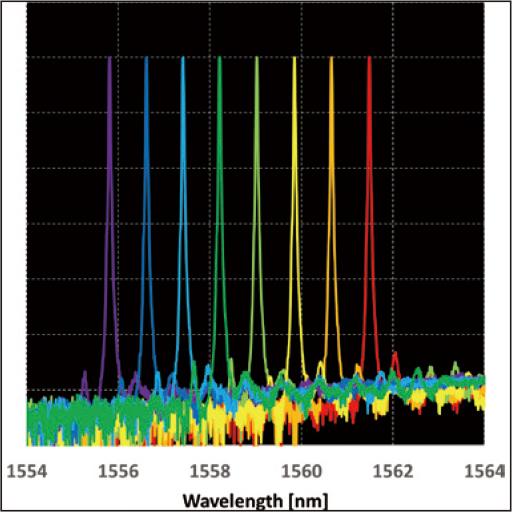
1.8 MB
This paper focuses on the “Current Integration Method (Q-t method),” widely used in Japan in recent years, to understand the electrical conduction and space charge behavior of insulating materials, in conjunction with the advancement of high voltage direct current (HVDC) technology and polymer insulation technology. The Q-t method involves connecting an integrating capacitor to the sample in series and measuring the integrated small currents passing through it. The advantage of this method is that it allows comprehensive and panoramic observation of electrical phenomena, and by applying this advantage to dielectric measurements, it enables a wide range of applications such as condition monitoring, understanding the limits of insulation material usage, material selection and evaluation. This paper provides examples of its applications and highlights its unique advantages and functionality.
1.7 MB
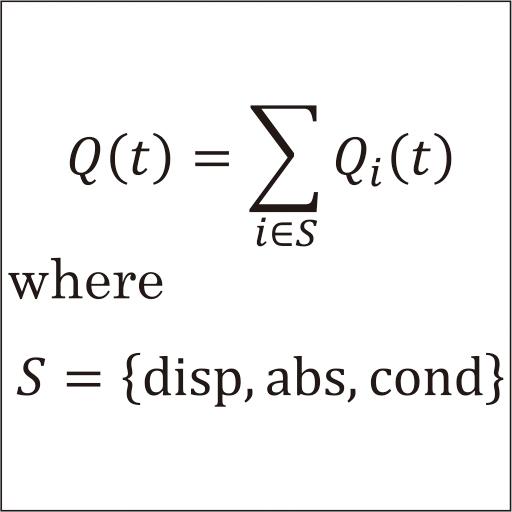
1.7 MB
The Nissin Electric Group has been enhancing manufacturing capabilities and improving productivity as part of its medium-to-long-term business plan VISION2025. Our main goal is to improve productivity by strengthening our manufacturing technology. Under the slogan “NISSIN ISSIN” (i.e., Nissin renewal), we have been promoting the smartification of our factories through activities that spin the dual wheels of expanding and inheriting important artisan skills and techniques, while also advancing projects that focus on NPS efficiency and the use of cutting-edge technologies. This paper presents an overview of these efforts.
4.4 MB
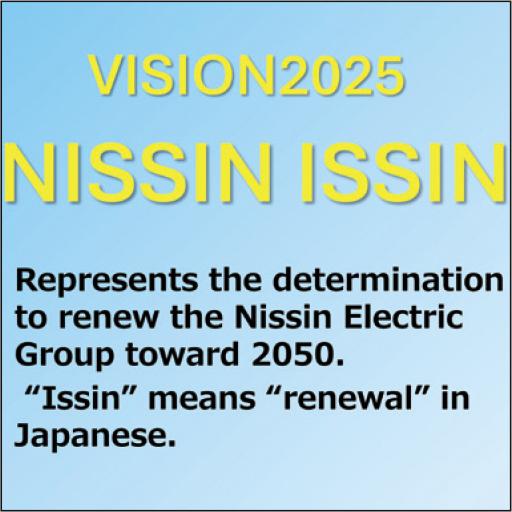
4.4 MB
Nissin Electric Co., Ltd.'s equipment and parts solution business utilizes Nissin Electric Group's power equipment manufacturing technology for the contract manufacturing of equipment parts for various industries. Established in 2000 at Nissin Electric (Thailand) Co., Ltd. (NET), this business has expanded its manufacturing bases to Vietnam and Myanmar, supplying equipment and parts worldwide. Since its foundation, Nissin Electric has consistently improved its manufacturing capabilities. This paper describes the manufacturing technology used in the equipment and parts solution business.
2 MB
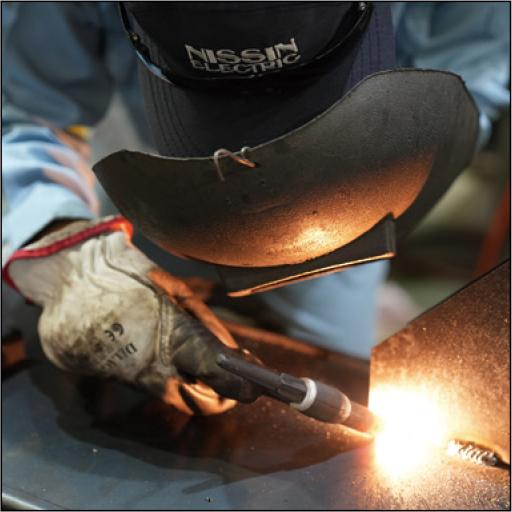
2 MB
Automotive components have complex designs and thin walls, for weight reduction. In recent years, such materials are becoming increasingly difficult to cut due to their high strength. Meanwhile, there has been a growing demand for high-speed and high-efficiency machining to reduce lead time. Under these circumstances, customers need cutting tools that have long tool life and stable cutting performance. To satisfy these demands, we have developed the new coated grade AC4125K for cast iron turning. This paper describes the features and cutting performance of AC4125K.
4.7 MB
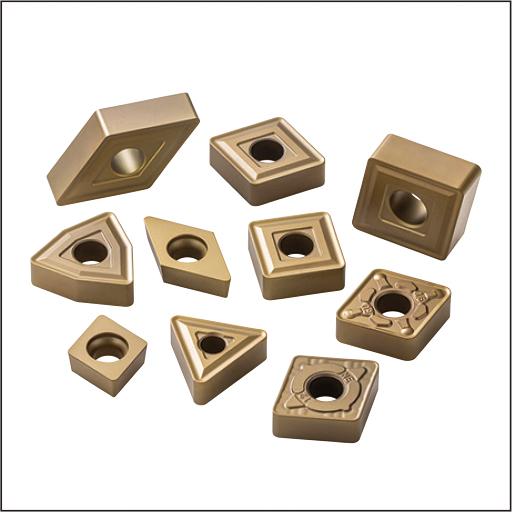
4.7 MB
Scanning transmission electron microscopy (STEM), characterized by its high spatial resolution, is a indispensable tool for atomic-level structural analysis of crystalline materials. Particularly in polycrystalline materials such as metals and ceramics, grain boundaries often determine material properties. However, due to the randomness of grain orientations, efficient extraction of grain pairs for grain boundary analysis has been a challenge. In response, we have developed a new technique for crystal orientation analysis using electron backscatter diffraction (EBSD). By applying two types of EBSD methods, reflective and transmission, to sintered tungsten carbide (WC) and cobalt (Co), we confirmed that transmission EBSD can find suitable grain pairs with practical throughput. In addition, STEM analysis successfully detected step structures and Co segregation at WC grain boundaries. The integration of STEM and EBSD analysis developed in this study presents a highly effective approach to structural analysis of polycrystalline grain boundaries for material property improvement.
4.8 MB
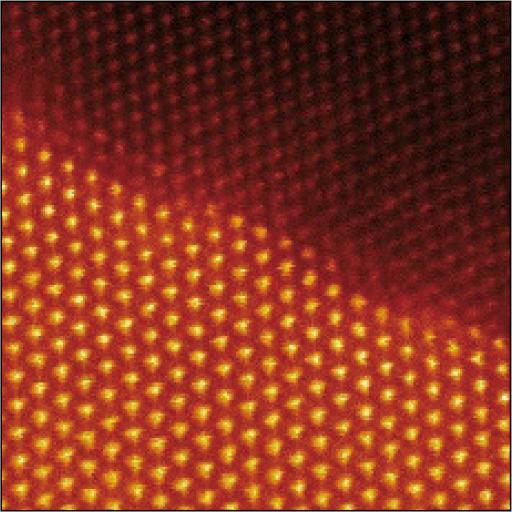
4.8 MB
In recent years, technological developments have increased the demand for high-performance radar. Electron tubes and low-power, low-frequency semiconductor elements have been used in the past, but gallium nitride high-electron-mobility transistors (GaN HEMTs), which are optimized for high power and high frequency, are being adopted to increase radar detection range and improve accuracy.
1.1 MB
Cemented carbide, a hard alloy primarily composed of tungsten carbide powder (hereinafter referred to as “WC powder”), is widely used in various fields such as the automotive, aerospace, and electronics industries, due to its high hardness and wear resistance, which can reduce processing costs and time when used as cutting tools. With the increasing demand for multi-functional and high-performance components in recent times, there is a growing need for high-precision tools, prompting the demand for cemented carbides made from fine-particle WC powder that can achieve sharp shapes.
1.2 MB
The automotive business of Sumitomo Electric Industries, Ltd. has grown over a long period of time focusing on wiring harnesses . Meanwhile, the automotive industry has been facing the challenge of a once-in-a-century revolutionary transition known as CASE (connected, autonomous, shared, and electric) innovation. The transition is not expected to be limited simply to introducing these elements of connection, automation, sharing/service, and electrification. It has the potential to change the position of cars in society and considerably transform the structure of the automotive industry.
1.3 MB
The automotive industry is currently undergoing a once-in-a-century transformation, with the global adoption of electric vehicles (EVs) playing a significant role in reducing CO2 emissions and mitigating global warming. Alongside, there is a growing need to manage power generation and load fluctuations in the power system that accompany the widespread implementation of renewable energy. In response, the Sumitomo Electric Group has made valuable contributions to society by introducing Traffic Vision Green, a mobility service product that supports comfortable EV driving, and sEMSA, an energy service product that generates optimal operation plans for distributed power sources. Looking ahead, we envision the development of efficient and cost-effective energy management systems (EMS) that consider EV operating conditions by integrating mobility and energy. This paper highlights Sumitomo Electric Group's past accomplishments and outlines our future initiatives for integrated energy management systems that merge mobility and energy sectors.
2 MB
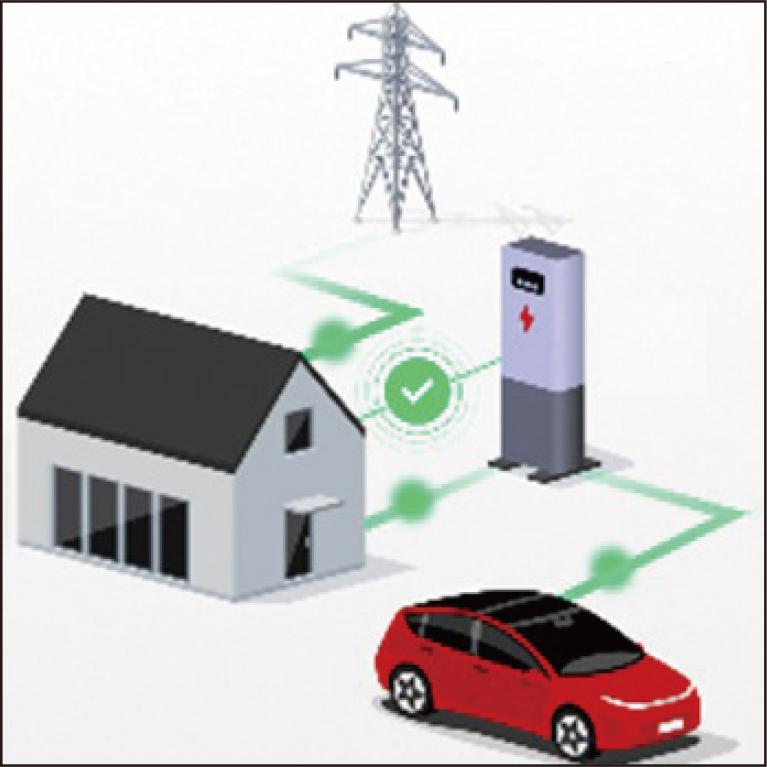
2 MB
With a commitment to environmental sustainability and carbon neutrality, electrification of mobility is progressing significantly. The Sumitomo Electric Group develops and provides a wide range of key technologies and products related to electrification, with “connecting materials/technologies” as our core focus. This paper offers a comprehensive overview of our diverse portfolio, which encompasses four distinct categories: Battery Peripheral, Motor/Inverter Peripheral, High-Voltage Interconnection Wiring/Connectors, and Charging/Infrastructure.
3.2 MB
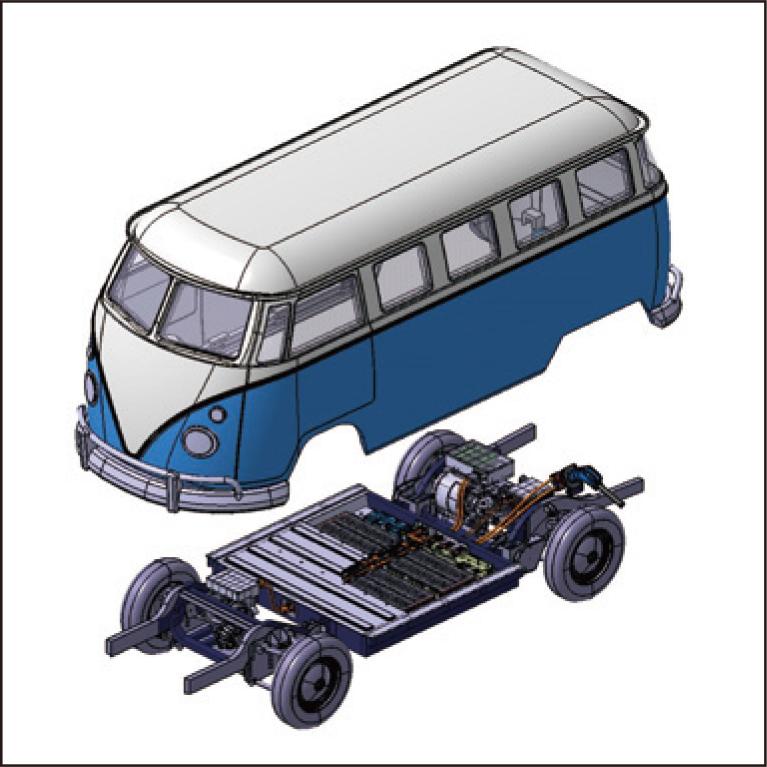
3.2 MB
The increase in motor cars, specifically hybrid electric vehicles (HEVs), plug-in hybrid electric Vehicles (PHEVs), and battery electric vehicles (BEVs), is expected to be driven by policies promoting fuel economy and CO2 emission control. In order to support the growth of BEVs, we are developing and mass-producing connection parts such as battery wiring modules, high-pressure junction boxes, and wiring harnesses for battery packs. These connection parts play a significant role in improving the performance of the battery packs by ensuring compact size, space efficiency, and high current capacity. This paper highlights the features and benefits of our battery wiring module and high-voltage junction box as essential components in the battery pack.
2.6 MB
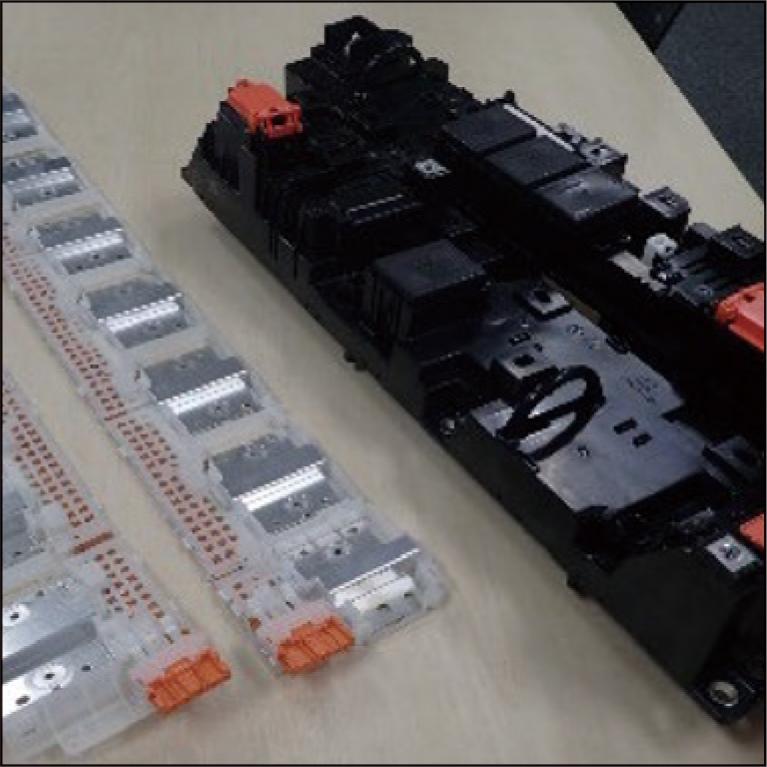
2.6 MB
Steep surges generated by high-voltage inverter-drive motors are expected to cause significant damage on the insulators of magnet wires. Sumitomo Electric Industries, Ltd. has developed a novel magnet wire with uniform closed microcells introduced into the insulation. This paper discusses the excellent dielectric properties of the newly developed magnet wire.
1.6 MB

1.6 MB
The automotive industry is becoming increasingly intellectualized through CASE (Connected, Autonomous, Shared, and Electric) innovations. While development times for in-vehicle systems are lengthening, products must be brought to the market quickly to remain competitive. We are making efforts to utilize digital engineering for design verification of in-vehicle systems in order to derive optimal architectures in a short period. We have applied mathematical optimization to the verification flow of the system architectures with the number of zone ECUs and the number of variations as parameters. This paper presents our efforts to shorten the verification time by combining the derived results with the response surface method, which predicts optimal conditions for the design parameters.
1.7 MB
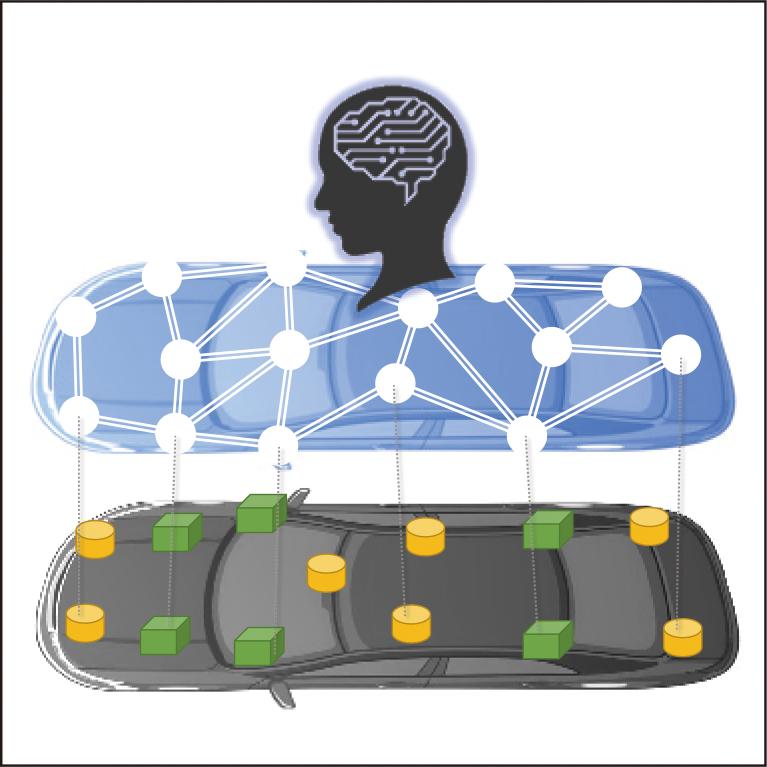
1.7 MB
Ethernet and SOME/IP (Scalable service-Oriented MiddlewarE over IP) have been increasingly applied to modern vehicles. Although SOME/IP serves as an automotive middleware solution for control message transmission, it lacks security measures, making it vulnerable to various attacks. To address this issue, we present a security extension protocol for automotive Ethernet. Furthermore, we evaluate the protocol and demonstrate its effectiveness.
1.1 MB

1.1 MB
Driven by evolutions in CASE (connected, autonomous, shared & service, and electric) technology, the need for fast in-vehicle networks has increased, making in-vehicle Ethernet an attractive next-generation communication solution. To comply with the strict communication standards set by the standards organization OPEN Alliance, our focus turned to investigating 100 M Ethernet compatibility. Initial evaluation using existing CAN components revealed disparities in transmission and crosstalk characteristics of wires and connectors. Therefore, we have developed new wires and connectors, as well as terminal processing technology, CAE analysis technology, and communication characteristic evaluation technology, all of which are necessary for the development of high-speed communication components. These efforts ensured compliance with the communication standards. We view high-speed communication components as vital elements of wiring harnesses, and are committed to their ongoing development, recognizing the significance in facilitating efficient in-vehicle communication.
4.9 MB
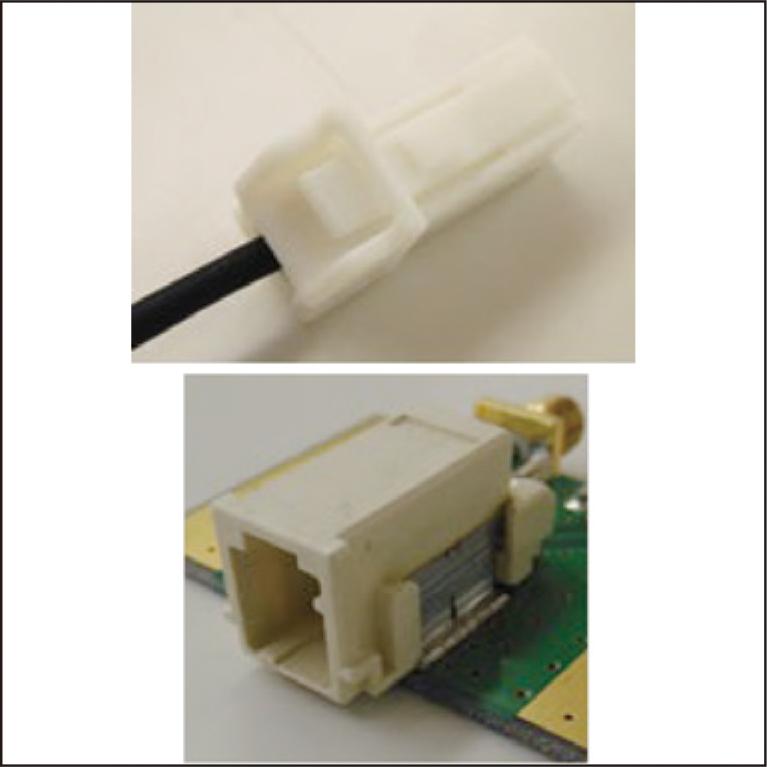
4.9 MB
With the advancement of CASE technologies, particularly automated driving, the demand for high-volume information processing devices like LiDAR is increasing, necessitating faster in-vehicle data communication. Sumitomo (SEI) Electronic Wire, Inc. is actively engaged in developing and manufacturing information transmission sub-harnesses that comply with new global communication standards to enable high-capacity data communication. Additionally, the company has developed automated processing equipment for the efficient production of widely used connectors in sub-harness processing. This paper provides an overview of in-vehicle equipment trends, communication standards, and our wire and terminal processing technology, which are integral to high-speed communication sub-harnesses that connect these devices.
2.6 MB
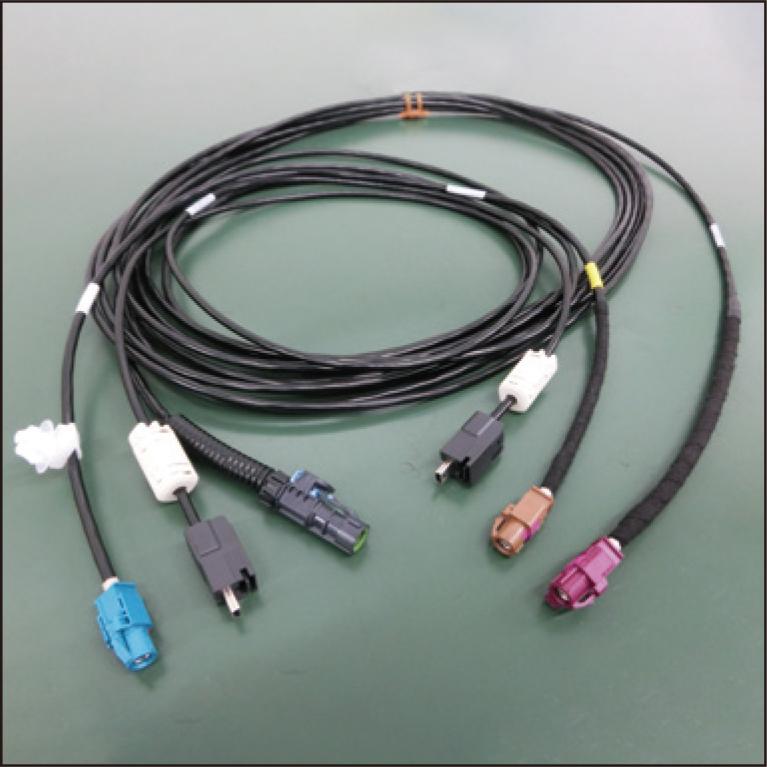
2.6 MB
This paper reports on the development of an antenna suitable for 5G millimeter wave (mmWave) communication, incorporating metamaterial technologies such as Electromagnetic Band Gap (EBG) and Artificial Magnetic Conductor (AMC). The goal is to achieve automated driving by utilizing 5G, which offers high-speed, large-capacity, and low-latency features. To enable efficient data communication, particularly for sensing information, the use of mmWave band with a bandwidth of several hundred MHz is required. However, the use of an array antenna consisting of multiple patch antenna elements on the roof of a vehicle poses challenges in terms of radiation characteristics. This study aims to address these challenges through the development of an antenna suitable for 5G mmWave communication.
2.7 MB

2.7 MB
The spread of autonomous driving and the movement toward CASE (connected, autonomous, shared & service, electric) vehicles has led to an increase in the number of devices and electrical circuits in automobiles. However, in order to improve comfort, there is a need to increase the interior space of vehicles, which requires a change in the wiring harness design to fit into smaller and tighter spaces. Meanwhile, the complex nature of wiring harness manufacturing makes it difficult to automate, resulting in a manual-intensive process that requires a large number of workers across global locations. This presents challenges in terms of cost and carbon emissions associated with long-distance shipping to OEM factories. To address these challenges, we have developed e-STEALTH W/H, a new wiring harness that not only increases interior space in vehicles but also enables automation, shifting from labor-intensive processes to localized production for local consumption. The successful adoption of our wiring harness by a major automaker underscores its effectiveness. This paper outlines the structure and key technologies of e-STEALTH W/H and provides insights into our innovative wiring harness solution.
2.2 MB

2.2 MB
In the automotive industry, with the goal of reducing CO2 emissions by improving fuel efficiency, there is a need for high-performance aluminum materials that can contribute to reducing the weight of automotive components. We have been working to improve the strength and heat resistance of aluminum alloys for forged automotive components. By improving the alloy composition and processing methods, we have developed two aluminum alloy wires with higher strength and higher heat resistance than widely used 6000 series aluminum alloys. This paper introduces the development of the aluminum alloy wires and the characteristics of the developed aluminum alloys.
2.1 MB
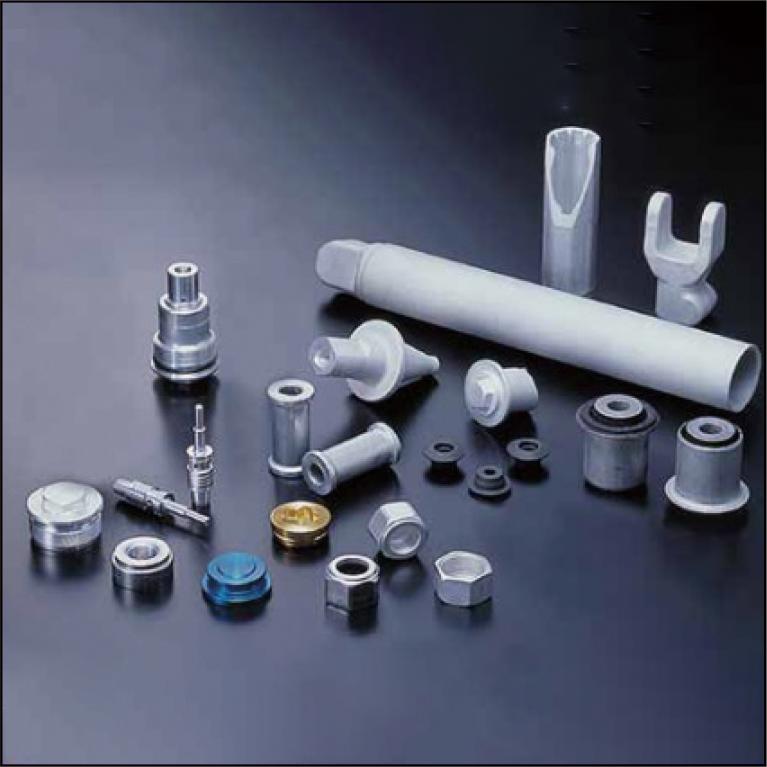
2.1 MB
The growing emphasis on mitigating global warming has highlighted the need for sustainable solutions in the e-mobility sector. In response, the automotive industry requires traction motors that deliver increased speed, torque, and efficiency. Through the integration of advanced technologies in stator magnet wire and slot cooling, we have successfully developed a downsized stator architecture for traction motors. This innovative design concept maintains maximum torque while achieving significant size reduction. Furthermore, the production process for this stator contributes to a reduction in CO2 emissions by approximately 30%, compared to conventional stators.
1.8 MB
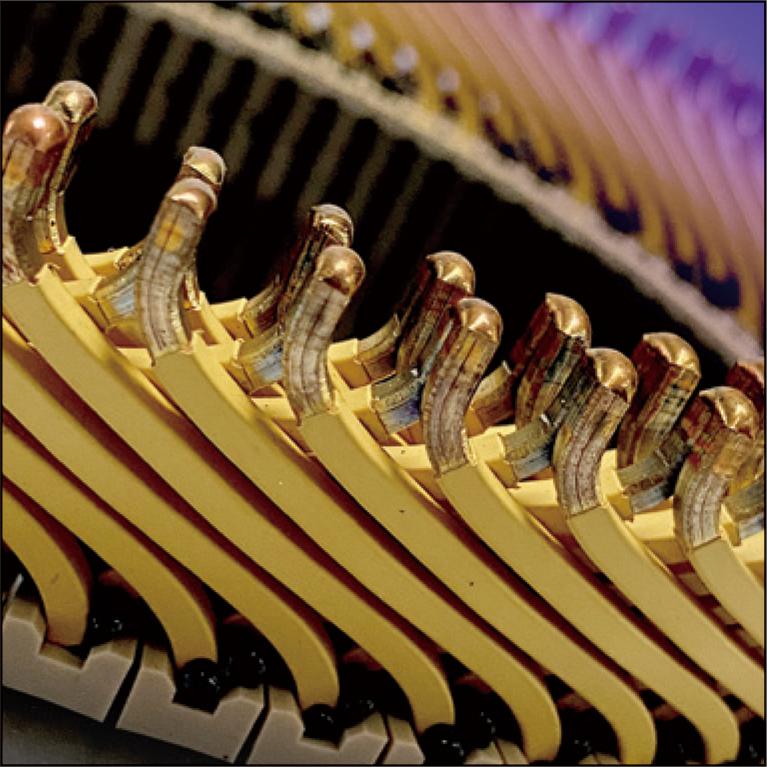
1.8 MB
As the electrification of automobiles progresses, the number of parts used in rolling and sliding environments, such as gears and bearings, which are often used in motors and reducers, is increasing. Therefore, improving their durability and reducing their friction loss are considered to be important. We coat various diamond like carbon (DLC) depending on the application. Among them, it has been confirmed that hydrogen-free DLC has a high friction reduction effect in lubricating oil. In this study, we investigated changes in durability when applying hydrogen-free DLC to gears and the friction reduction effect of hydrogen-free DLC in rolling and sliding environments. As a result, it was confirmed that coated gears with hydrogen-free DLC improve their durability. It was also confirmed that the friction reduction effect of hydrogen-free DLC is higher in environments with “lower viscosity of oil,” “higher rotation speed,” and “higher slip ratio.”
2.2 MB
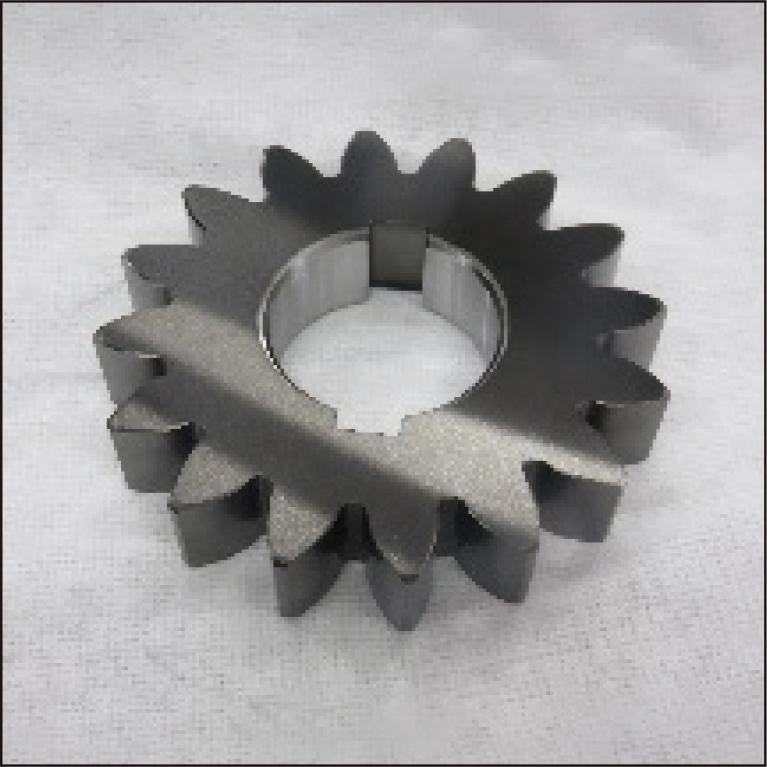
2.2 MB
To mitigate accidents involving forklifts and people, we have developed a forklift safety support system capable of detecting the presence of people near a forklift. Real-time responsiveness is crucial, necessitating immediate detection and reporting. To address this, we propose utilizing edge computing to enable swift responses. This paper introduces a forklift safety support system leveraging edge AI installed in a compact edge computer. Additionally, we discuss the evaluation of edge AI's accuracy and speed at the edge, along with the examination of techniques to enhance the accuracy efficiently.
2.8 MB
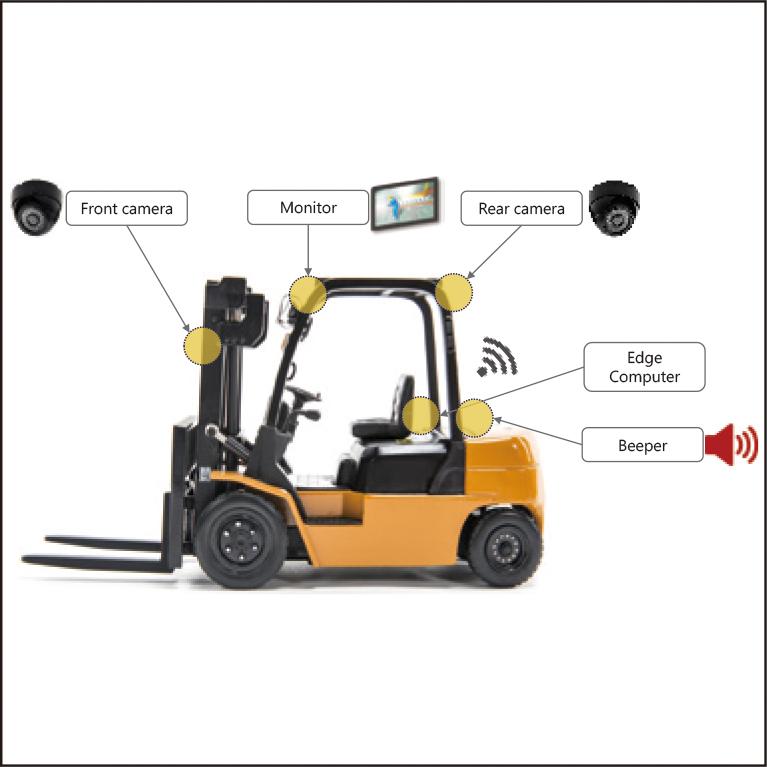
2.8 MB
As terminals for automotive connectors become smaller, the copper alloys used for the terminals are becoming thinner and stronger. Terminals are formed mainly by bending, but the higher strength of copper alloys makes bending cracks more likely to occur. In the past, this problem was handled by trial and error based on experience, but in order to cope with the recent short development period, a technique for predicting bending cracks using CAE is required. Although special elasto-plastic analysis reflecting the crystallinity of metals has been reported as a conventional prediction technique for bending cracks, it has been difficult to apply this technique to actual copper alloys for terminals. Therefore, based on the occurrence mechanism of bending cracks, we considered that shear deformation resistance in the thickness direction has a significant influence on the occurrence of bending cracks, and developed a shear test method for thin sheets in the thickness direction. Based on the measurement results, it becomes possible to predict the occurrence of bending cracks by simulating bending cracks using the general elasto-plastic analysis.
1.9 MB
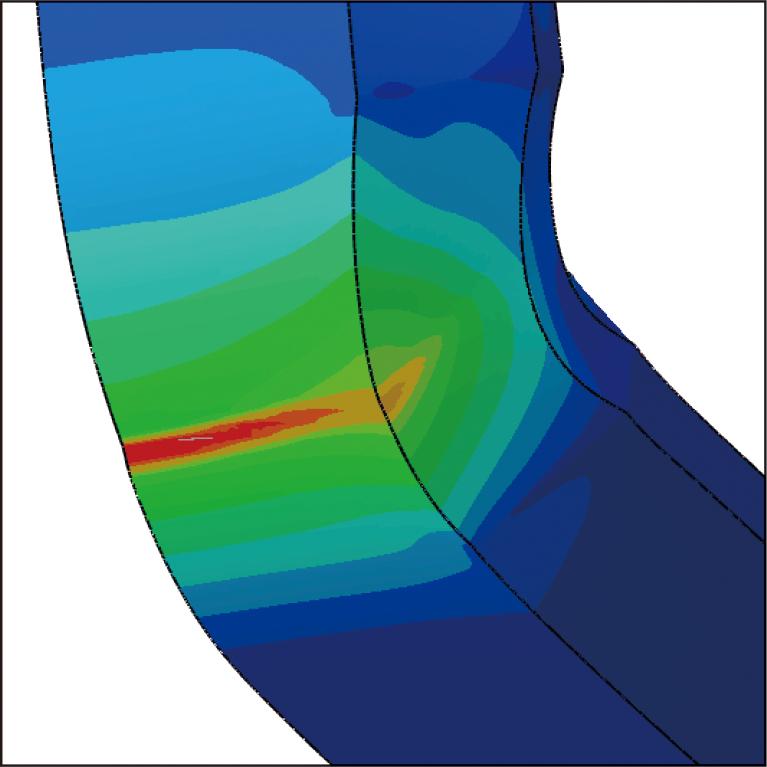
1.9 MB
Communication frequency in telecommunications has been increasing to improve data transmission speed and capacity. However, this increase also raises the possibility of unintentional radiated emissions from communication cables, leading to electromagnetic compatibility (EMC) problems. From the viewpoint of radiation, we examined the transmission and radiation characteristics of unshielded twisted pair (UTP) cable commonly used in local area networks and in-vehicle communication networks. The examination confirmed that the UTP cable emits a portion of the transmitting signal within a certain frequency band. This emission follows the same mechanism as a leaky cable. We verified that the equation derived from the leaky cable mechanism can explain the relationship between the radiation bandwidth and the radiation angle. This paper introduces the radiated emission from UTP cable and explains the radiation mechanism in detail. Additionally, we provide a guideline on how to avoid potential EMC problem related to UTP cable.
2.7 MB
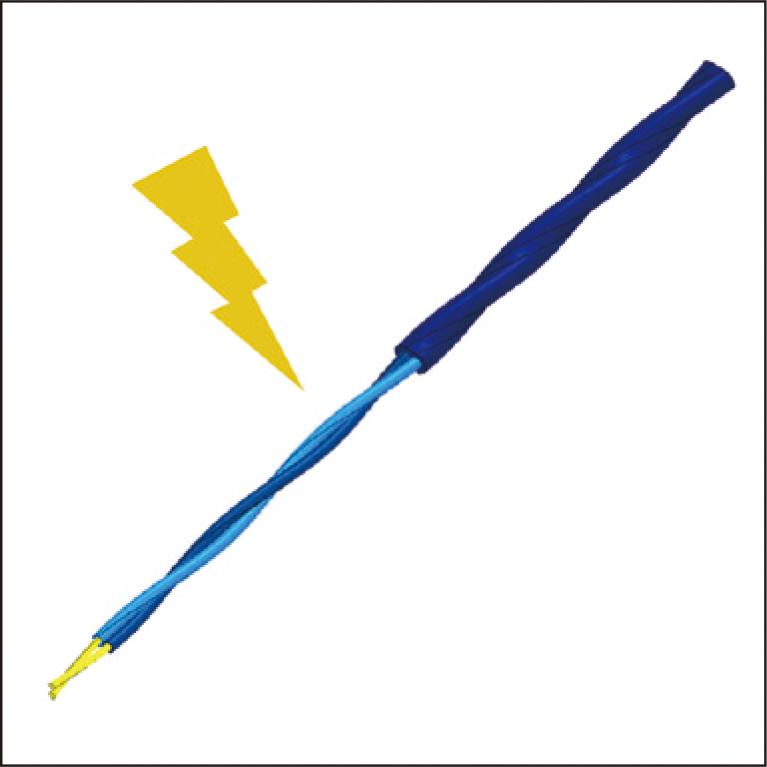
2.7 MB
Thinner optical cables are required for data center networks to meet the increasing demand of communication traffic. For these cables thinner optical fibers are essential, and one of the concerns in reducing the optical fiber diameter is the increase in attenuation by microbending in the cabling process. It is necessary to adjust the optical fiber structure based on an analytical formula that systematically estimates the effects of structural parameters. Based on Cocchini's established method for conventional optical fibers with a coating diameter of 250 μm, we have derived an analytical formula to accurately predict the microbending attenuation of optical fibers with a smaller diameter of 165 μm or less.
1.5 MB
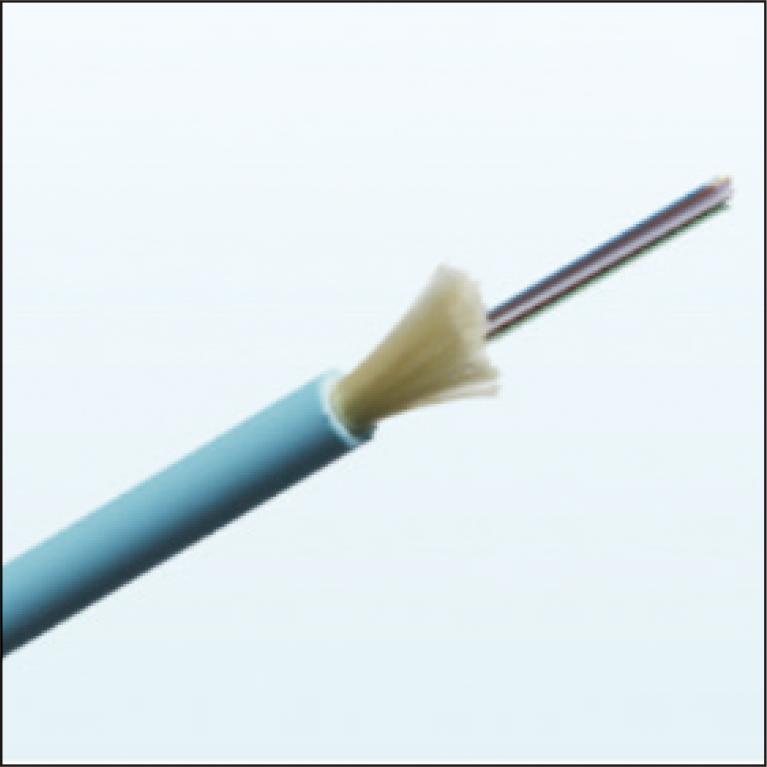
1.5 MB
With the increasing amount of internet traffic, there is a growing demand for high-capacity optical fiber communication not only for long-haul communication but also for inter-data centers communication. We have been developing InP modulators and driver ICs. Recently, we have developed a modulator module and successfully demonstrated 1 Tbit/s fiber transmission with a low power consumption of less than 3 W. We have also developed a spot size converter using 3D printing technology and achieved a low loss of 9.5 dB as part of the modulator module, confirming its reliability for Telcordia standards.
2.6 MB

2.6 MB
This paper reports on the characteristics of a thermopile infrared sensor using nanostructured Si-Ge thermoelectric materials. While thermopile infrared sensors have the advantage of operating without power consumption, they have low sensitivity. To address this limitation, we have developed nanostructured Si-Ge thermoelectric materials that are expected to have a low thermal conductivity and a high Seebeck coefficient. With a thermal conductivity of 1/8 (0.8 W/(m·K)) and a Seebeck coefficient 2.8 times higher (330 μV/K) than that of conventional Si-Ge crystals, the nanostructured Si-Ge thermoelectric materials are expected to enhance the sensitivity of the thermopile infrared sensor. The thermopile infrared sensor using these materials achieved a sensitivity of 1,200 V/W at pressures below 1×10-1 Pa, demonstrating high sensitivity.
1.6 MB
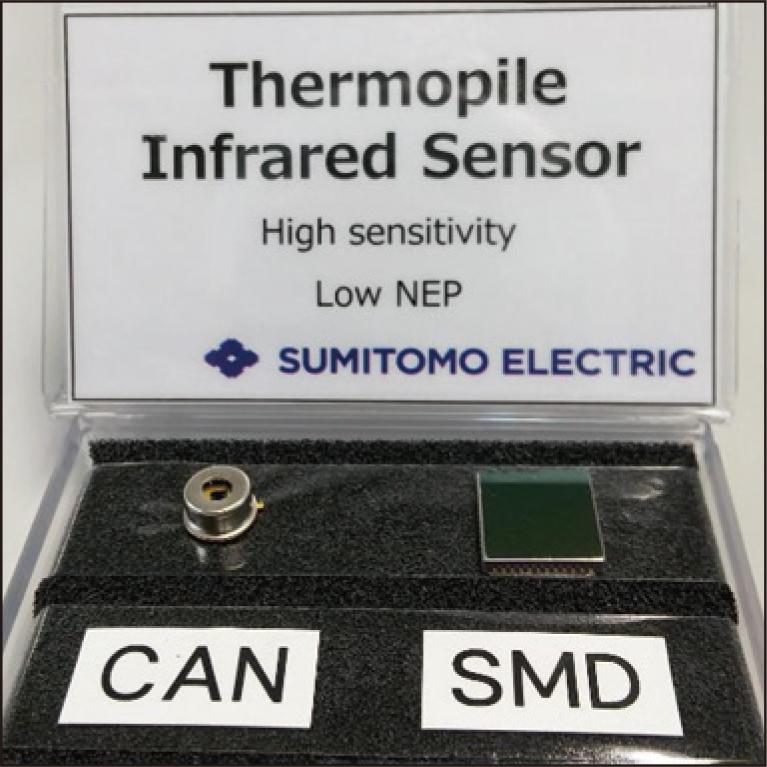
1.6 MB
The Wi-SUN FAN (Wireless Smart Utility Network for Field Area Network profile) was initiated in 2012 as an international wireless communication standard for next-generation smart meters. The certification process for the new specification, Wi-SUN FAN 1.1, which includes improvements in communication speed, distance, and low power consumption, is expected to launch in 2024. This paper highlights the features of Wi-SUN FAN in relation to its compatibility with smart cities and provides an overview of our efforts in this field.
5.1 MB
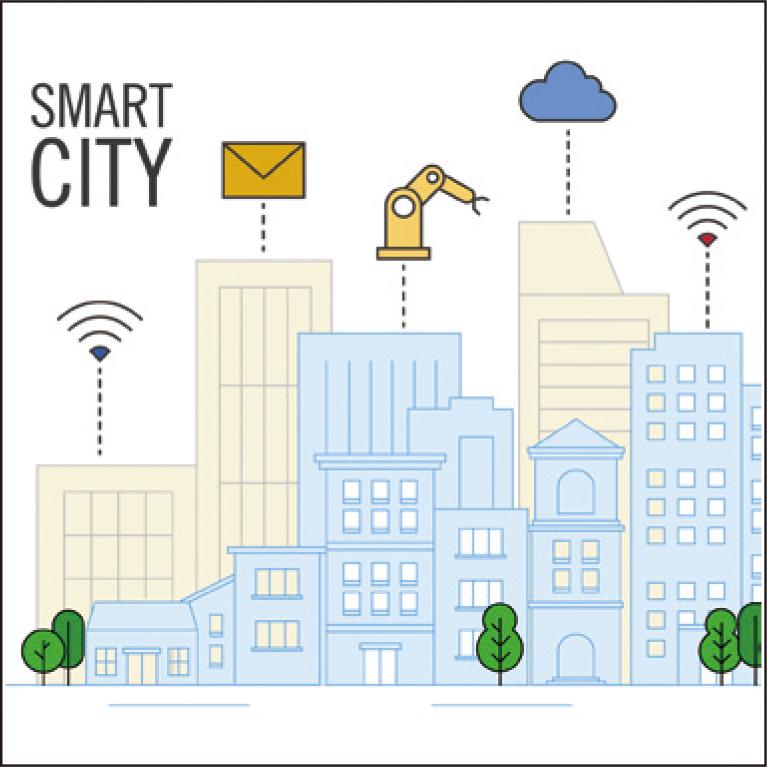
5.1 MB
We have successfully developed a forced air-cooled 150 kW isolated bidirectional DC–DC converter, aiming to achieve a power density of 2 kW/L, equivalent to a water-cooled system. This was achieved by improving the cooling performance of the transformer, a major component, integrating the cooler for the power semiconductor and transformer, reducing the switching loss of the power semiconductor, and implementing a novel control system that minimizes the overall loss. These efforts have led to the miniaturization of our converter, comparable to our water-cooled isolated bidirectional DC-DC converter.
2.7 MB
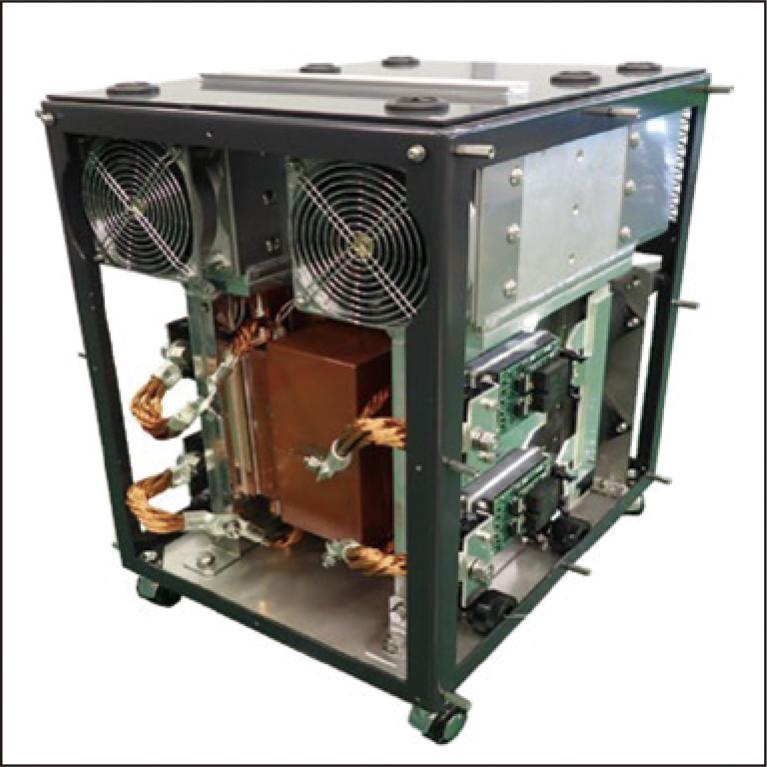
2.7 MB
In response to the tightening international environmental regulations such as carbon neutrality and CO2 emission reduction, the importance of thermal management has been emphasized in electronic products and automotive electrified products, where heat generation density is increasing year by year. In addition to the cooling mechanisms such as air cooling and water cooling, which have been the mainstream so far, there is an anticipated expansion of cooling mechanisms with excellent heat dissipation capabilities, such as heat pumps, vapor chambers, and heat storage systems. The effectiveness of these systems largely depends on the capabilities of heat exchangers and heat storage devices. To enhance their performance, we have developed porous metal materials that have both high thermal conductivity, high porosity, and micropore size. These materials can contribute to the reduction of CO2 emissions by reducing the energy required for cooling.
2.4 MB
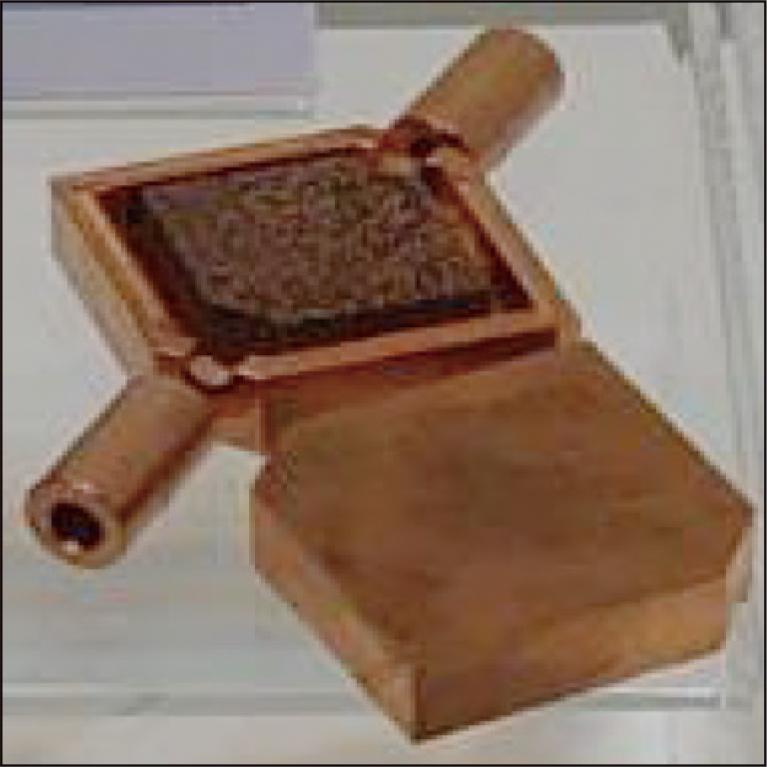
2.4 MB
We have developed a portable measuring instrument that uses diamond nitrogen-vacancy (NV) centers. It operates on the USB 3.0 power supply of a laptop computer, consuming only 3 W of power. We use high-quality diamonds produced by Sumitomo Electric Industries, Ltd. and NHV Corporation's electron beam processing to create a sensitive NV center. The device's portability is achieved through low power consumption in both the optics and the microwave source. This is made possible by a diamond corner cube that increases the photocurrent by 2.1 times compared to planar diamonds and a microwave resonator using a λ/4 transformer and a λ/4 open stub that reduces the power by 20 dB. The sensor head is compact, measuring 5 × 10 × 20 mm, and allows for magnetic field and temperature measurements. The successful implementation of these features contributes to the use of diamond sensors in various applications.
2.9 MB
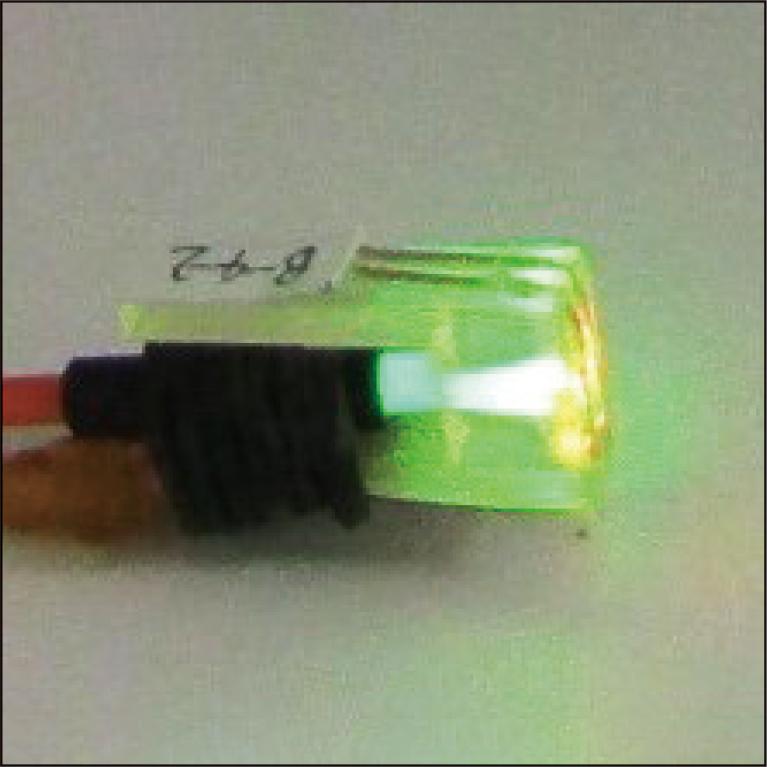
2.9 MB
In the architecture of automotive electronic devices, functions have been conventionally implemented with discrete ECUs. The trend in these functions in the next-generation architecture, which is required to meet the needs for expandability and flexibility, is toward divided implementation into a brain (central ECU) in which control functions are integrated, and hands and feet (zone ECUs) that drive sensors and loads.
0.8 MB
Traffic signal control helps improve traffic safety, mitigate congestion, and reduce CO2 emissions by appropriately determining the green light duration and other signal control parameters suitable for traffic condition of each direction at intersections. Conventionally, vehicle detectors have been used to know the traffic conditions. However, the cost incurred by their installation and maintenance has emerged as a challenge.
0.5 MB
In recent years, communication traffic has increased rapidly due to progress in cloud computing, video streaming services, and support for 5G. Therefore, large data centers (DCs) are currently being built. Optic cables connecting DCs are mostly installed in a duct. There are instances where micro-duct optic cables are used, being suitable for the installation method that pushes the cable into the duct by feeding high-pressure air (air-blowing method). Because the interiors of DCs are required to be flame retardant, there is a need for a connection point connecting to a non-flame-retardant optic cable used outside the DC. Sumitomo Electric Industries, Ltd. has developed and launched a 288-fiber flame-retardant microduct optic cable, which can be used inside and also outside DCs for continuous installation without a connection point.
1 MB
Our Poreflon porous materials made from stretched polytetrafluoroethylene (PTFE) are used in various industrial fields. For example, in semiconductor-related applications, higher cleanliness levels are required for process chemical liquids due to ever-higher integration. There has been a growing need for separation membranes with smaller pore diameters. To meet the need, we have developed Poreflon nano, proprietary PTFE membranes with nano-pores. This paper describes the specifications and applications of the new filtration module, which houses Poreflon nano in an all-fluororesin package.
0.9 MB
In the field of cutting small parts—small-diameter and precision parts—used in industries such as automotive, electronics, and medical parts, there is a growing need for tools that can reduce burrs, chattering, and poorly machined surfaces and improve the quality of machining. To meet this need, Sumitomo Electric Industries, Ltd. has developed the SL Type, which is a G-class three-dimensional (3D) chip breaker for small lathes that achieves high machining quality due to its superb sharpness. This article describes its features and performance.
3 MB
The silicon carbide (SiC) power device market is growing each year due to the rapid proliferation of electric vehicles and photovoltaic power generation systems. Accordingly, there is an upward capital investment trend, such as planned increases in production volume by a factor of two to five within a couple of years. Meanwhile, there is a trend towards the development and commercialization of 8-inch (200 mm) SiC wafers, with 6-inch (150 mm) SiC wafers currently being the mainstream. Technology development is actively underway to manufacture SiC power devices at a reduced cost.
0.6 MB
Semiconductor lasers offer better features than existing laser beam sources, being smaller in size and achieving higher efficiency and a longer service life. Their applications in society are advancing in many fields such as health care, sensing, and sheet-metal working. Moreover, they are drawing great attention from the perspective of carbon neutrality.
1.1 MB
Video distribution traffic accounts for 65-70% of the downstream access network traffic, which has continued to grow in recent years. Advances in video image quality and video compression technologies, coupled with standardization efforts, have led to a significant increase in the maximum required bandwidth per broadcasting channel. Specifically, over the last two decades, the maximum content bitrate has multiplied by approximately 40 times (pre-compression), and 20 times (post-compression) for IPTV, while domestic radio frequency broadcasting has shown the pace of 5 times. At the same time, the future growth of the market is anticipated to be driven not only by the transition to 8K video but also by the integration of Extended Reality (XR) video services that combine 360° 3D video, AI, and digital twin technologies. Taking this opportunity, this paper reviews the trends in video communication technology and the initiatives of Sumitomo Electric Industries, Ltd. The paper also discusses various key indexes required for all-optical and wireless networks connecting cloud computing to homes and workplaces, with a particular focus on what is called the Motion-to-Photon latency, which is essential for realizing immersive and interactive 3D and XR video distribution services, and considers its impact on other key indexes.
2.6 MB
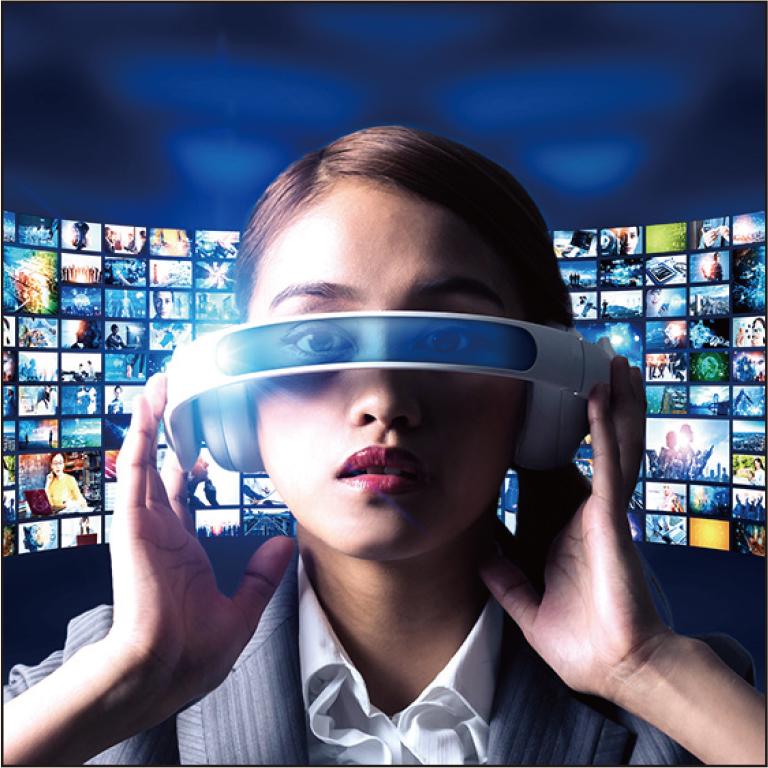
2.6 MB
Intelligent communication technology is an indispensable part of the infrastructure that supports modern society. In particular, wireless communication systems using high-frequency radio wave carriers have made remarkable progress in the last 30 years. In 2020, 5th-generation services started to realize high-data-rate transmission and low signal latency. The environments in which wireless communication networks operate have expanded to include the open sea and low earth orbit. To date, we have developed many kinds of commercial transmission devices for optical wired and wireless communications. We were the first company in the world to successfully mass produce and commercially ship Gallium Nitride high electron mobility transistors (GaN HEMTs), a key device for cell phone base stations, and have the top market share. This paper describes compound semiconductor devices represented by GaN HEMTs as well as novel crystal and device technology for discontinuous performance enhancement.
3 MB

3 MB
Climate change poses a global challenge that necessitates the reduction of carbon dioxide (CO2) emissions. To reduce CO2 emissions from motor vehicles, which are major emission sources, it is important not only to improve vehicle exhaust performance, but also to improve infrastructure such as traffic signal control at intersections to mitigate traffic congestion and energy consumption. A quantitative evaluation of the effects resulting from traffic signal control improvements is essential for their dissemination. Currently, however, there is no well-established method to calculate CO2 emissions of vehicles traveling through intersections. We have developed a CO2 emissions calculation model intended for widespread adoption. This model facilitates the quantitative evaluation of CO2 emissions reduction resulting from traffic signal control improvements.
0.8 MB
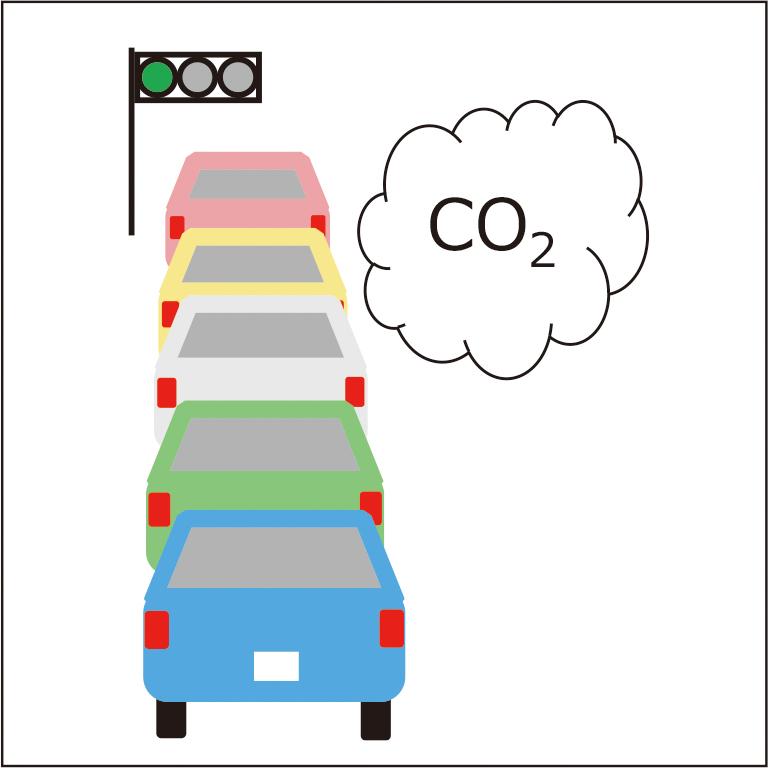
0.8 MB
The global need for pedestrian detectors is increasing to improve traffic safety and efficiency. In order to achieve accurate detection at intersections, the detectors need to be placed in the right locations. However, constructing new poles requires much effort and cost, making it essential to utilize existing poles for widespread deployment of the detectors. Meanwhile, achieving effective pedestrian detection on both far and near sides presents challenges due to the limited sensor viewing angles. Additionally, many sensors are unable to detect pedestrians directly beneath them, thereby restricting the possible installation locations. To overcome these challenges, we have developed a cost-effective radar system with a wide vertical coverage angle, offering improved installation flexibility. This paper introduces the innovative radar and presents experimental results demonstrating its expanded detection area.
2.7 MB
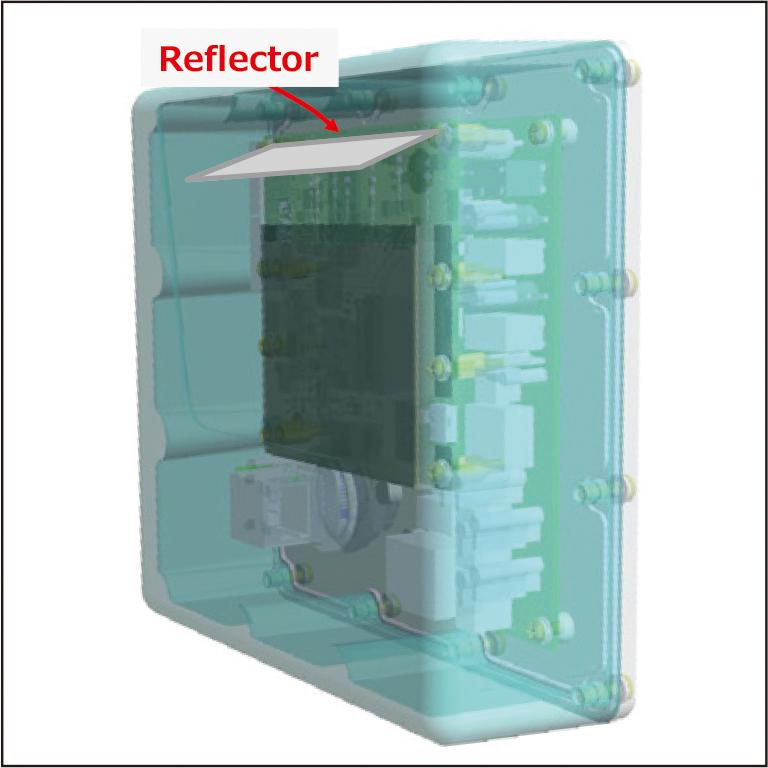
2.7 MB
In recent years, the convergence of several services and information technologies has revolutionized our daily lives. However, failures in communication infrastructure can have profound consequences, necessitating increased reliability and availability of communication equipment. This paper focuses on our research and development efforts in high-speed Ethernet equipment, specifically addressing MC-LAG (multi-chassis link aggregation) and precision time synchronization in supporting high-quality 5G wireless systems.
1.9 MB
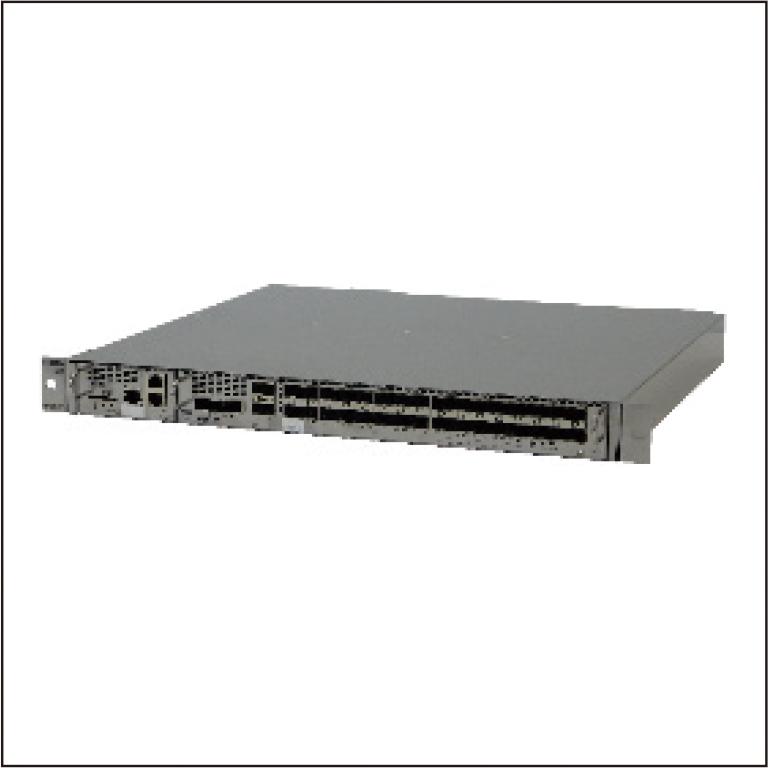
1.9 MB
To address the rapid increase in data traffic, data centers have increased the number of channels. However, current systems use one semiconductor laser per channel, resulting in higher power consumption and costs due to the increased number of components. To overcome these challenges, a new approach has been proposed, where light from a single laser with high output power is branched to create multiple channels. However, existing telecommunication lasers have reached the limit in achieving high output power with single-mode lasing. Therefore, we have conducted research on 1.3-μm-wavelength InP-based photonic-crystal surface-emitting lasers (PCSELs) as a next-generation semiconductor laser that can achieve both single-mode lasing and high output power. We have demonstrated single-mode operation with a high output power of over 200 mW under continuous-wave conditions at room temperature by using dry-etching and regrowth techniques. In addition, we have achieved a high output power of 4.6 W in short-pulsed operation. These results suggest that PCSELs can be used not only for communications but also for sensing applications.
2.4 MB

2.4 MB
Sumitomo Electric Industries, Ltd. developed polytetrafluoroethylene (PTFE) porous membranes ahead of the world. In the early 2000s, utilizing the membranes, the Company develop hollow fiber membrane water modules with excellent chemical resistance and strengths. The modules have been widely applied to water purification, sewage treatment, and industrial wastewater treatment around the world. With the increasing demands for the recovery of salt components, we focused on the application of these modules to membrane distillation for the separation of trace components such as salt in seawater and rare-earth elements in water resources, taking advantage of the excellent hydrophobicity of PTFE. This paper reports on the development of a PTFE hollow fiber membrane with superior water pressure resistance and gas permeability, both of which are critical for membrane distillation.
2.4 MB
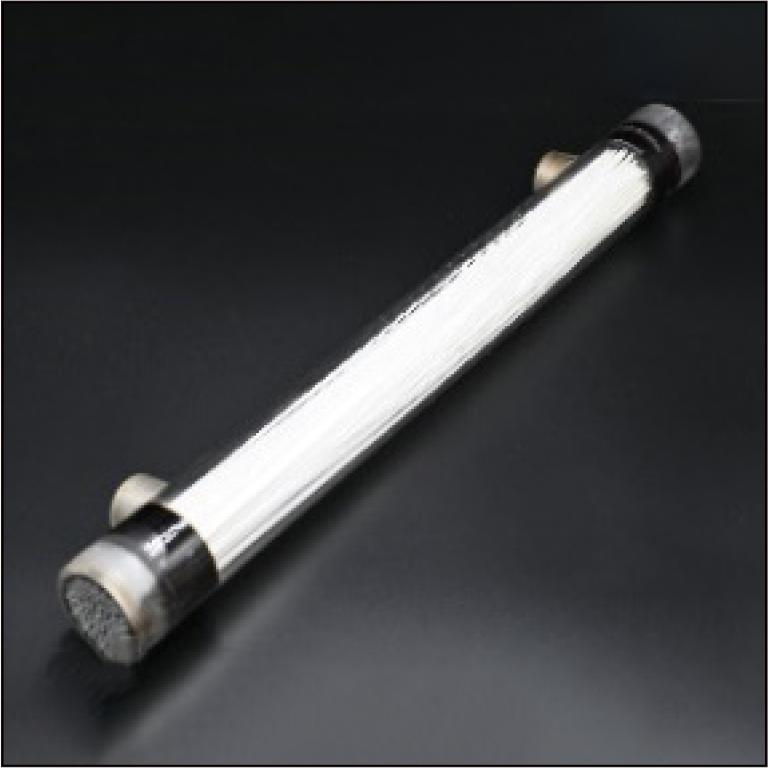
2.4 MB
Nissin Ion Equipment Co., Ltd. conducted research on electron transport properties of an argon-ion-implanted amorphous InGaZnO (a-IGZO) film deposited on a glass substrate. The research obtained valuable data on electron concentration and Hall mobility of the film at various depths from the surface. The result shows that the a-IGZO film has a high electron concentration in deep regions compared with an argon plasma-treated a-IGZO film. In addition, the company estimated the argon stopping powers of a-IGZO and the donor level of 0.05-0.1 eV below conduction band bottom energy, which can be applied to resistance control for a-IGZO device processing.
2.7 MB

2.7 MB
Sumitomo Electric Industries, Ltd. conducted a demonstration of its 2 MW/8 MWh redox flow (RF) battery system for multiple-use applications (MUA) in California, U.S.A. The system was operated within the distribution network to achieve peak shaving and voltage regulation. In the California Independent System Operator market, it simultaneously participated in the energy and ancillary service markets. In addition, the system successfully demonstrated microgrid operations for both black start and seamless transitions, providing MUA for normal and emergency operation to existing residential customers.
3.4 MB
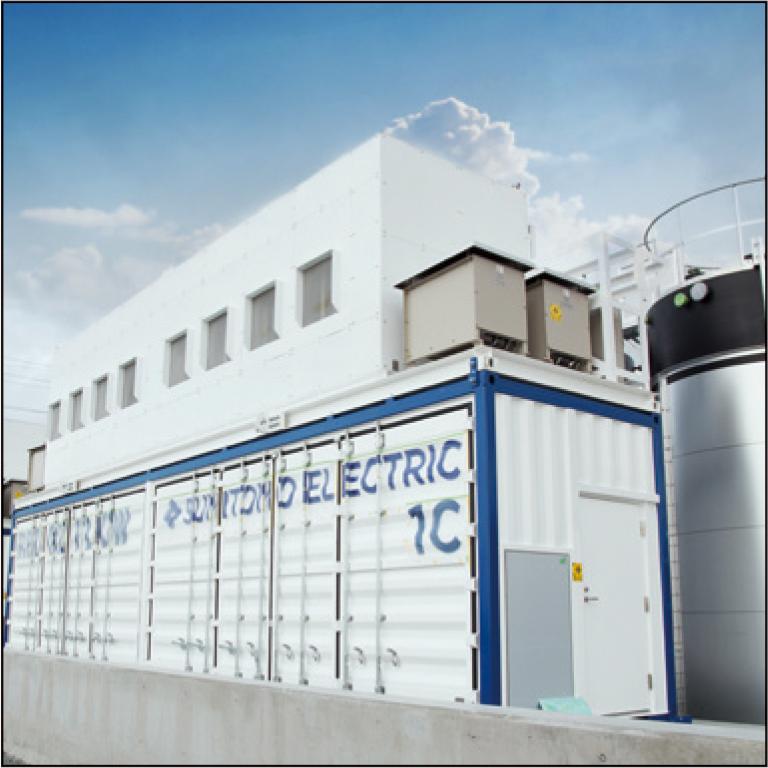
3.4 MB
As wind turbines grow in size and output capacity, submarine cables transmitting the generated electric power face challenges related to manufacturability, cost, and workability. To overcome these challenges, we have been developing submarine cables without the impervious structure. However, it is difficult to estimate cable life due to the progression of water tree deterioration in flooded cable insulation. To evaluate the cable life of non-impermeable structure, we examined a long-term water tree test method capable of simulating 30 years of operation. By analyzing the time variation of supersaturated moisture content in cable insulation, realistic test periods can be achieved. Future endeavors involve the development of water-tree-resistant cables to withstand long-term operation and high pressures on actual lines, utilizing the test method.
1.4 MB
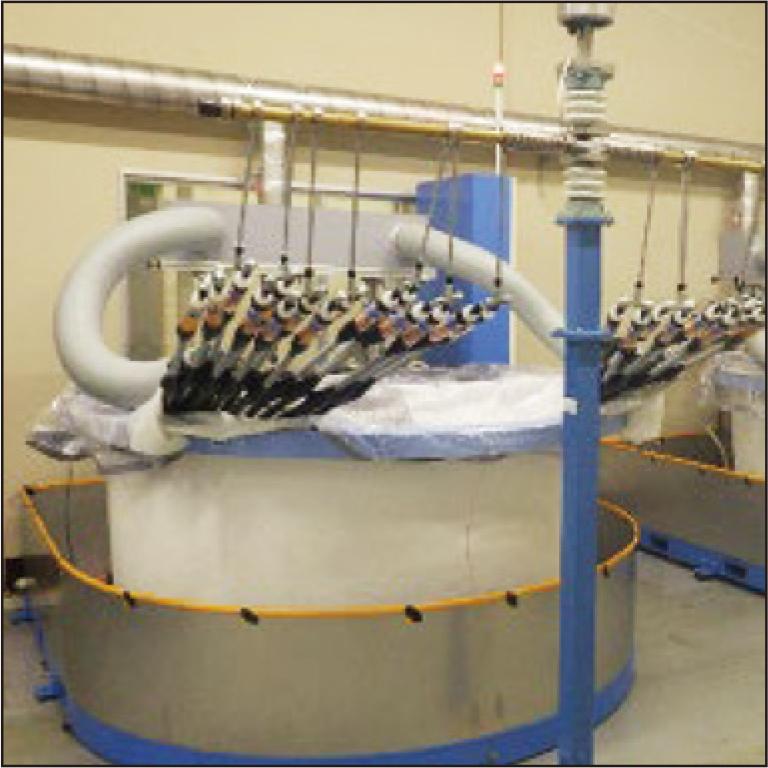
1.4 MB
Compound semiconductors have beneficial features that enable high performance devices. In this study, we utilized synchrotron radiation x-ray photoelectron spectroscopy (XPS) techniques to precisely analyze semiconductor surface and interface states, which significantly affect device performance. Regarding gallium nitride high electron mobility transistor (GaN-HEMT) devices for wireless communication, x-ray energy was lowered to 600 eV to study the effect of the O2 ashing process, achieving a probing depth of approximately 2 nm. Combined with photoluminescence analysis, it was confirmed that inappropriate process conditions increased the escape of nitrogen atoms, surface oxidation, and defects in GaN crystals. For the InP-based photodiodes used as detectors in optical communication, the surface potential of InP covered with dielectric films was evaluated, using hard x-ray photoemission spectroscopy with an excitation energy of 7940 eV. Based on our analysis, the film deposition condition was optimized and the leakage current at the interface was successfully reduced to obtain sufficiently high optical sensitivity. This study has demonstrated that timely utilization of synchrotron radiation analysis is extremely effective in shortening the product development of Sumitomo Electric Industries, Ltd.
1.5 MB
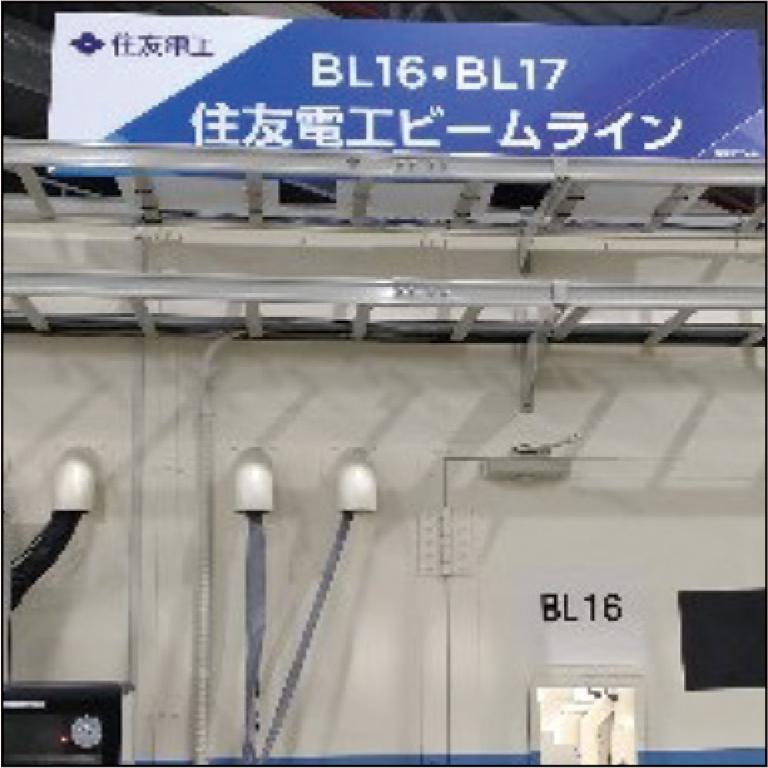
1.5 MB
In recent years, the shift to electric vehicles and the electrification of automotive components are progressing toward the realization of a decarbonized society.The electrification of components has expanded the use of by-wire control, which uses electrical signals to control the target. However, by-wire control has a shortcoming in that it cannot control components if the vehicle power source, such as a lead-acid battery, fails. Sumitomo Wiring Systems, Ltd. and AutoNetworks Technologies, Ltd., both of which are Sumitomo Electric Group companies, have jointly developed an integrated backup battery that enables uninterrupted by-wire control of multiple components even in the event of a vehicle power failure .
0.8 MB
In recent years, the advancement of cloud computing, video distribution, and AI has led to a rapid increase in telecommunications traffic and the construction of largescale data centers (DCs). Since optical cables that connect DCs are usually installed in outdoor ducts, the technology for densely installing these cables in a limited duct space is indispensable. In 2017, Sumitomo Electric Industries, Ltd. developed and commercialized an optical cable with the world’s highest fiber count of 6,912. The Company also developed wiring solutions and has contributed to increasing cabling density and improving workability throughout DCs. The Company has recently developed and started sales of a 3,168-fiber-count optical cable with 200 μm fibers and a 2,016-fiber-count optical cable with 250 μm fibers as ultra-high-fiber-count and high-density optical cables suitable for installation in ducts used in Japan and other areas. This paper describes the structure and features of these new cables.
0.6 MB
In recent years, semiconductor devices for marine and meteorological applications have become more powerful, and solid-state radars are replacing conventional magnetron radars. Long service life is one of the advantages of solidstate devices. Although magnetrons need to be replaced periodically, semiconductors do not require replacement and thus help reduce radar maintenance costs. It is difficult to observe small objects with magnetron radars due to large frequency fluctuations. In contrast, due to their high-frequency stability, solid-state radars improve observation performance by enabling observation of objects that were difficult to observe in the past. On the other hand, to provide solid-state radars with a detection range equivalent to that of magnetron radars, a plurality of semiconductor devices must be arranged in a row, and their output power needs to be further increased to reduce the required number of devices. We have developed an S-band GaN HEMT with the highest output power of 800 W in the industry. This report describes the features of this new device.
1.6 MB
With the rapid growth of renewable energy and electric vehicles (EVs) to realize carbon neutrality, demand for next-generation power semiconductors is expanding. In particular, silicon carbide (SiC) is beginning to be used in some application areas as a new material that achieves higher voltage resistance and less power consumption than silicon. However, the high manufacturing cost is a problem that needs to be solved before it is widely used. In the manufacturing process of SiC wafers and devices, grinding is used to finish wafer surfaces with high efficiency. However, grinding SiC, a hard-brittle material, poses the problems of (1) a high tool consumption rate and (2) high grinding resistance. To solve these problems, the development of a high wear-resistance tool capable of grinding SiC with low cutting resistance has been desired. Against this background, A.L.M.T. Corp. has developed a vitrified bond wheel that achieves both a long tool life and a low grinding resistance at the same time with its proprietary technology for the high-precision dispersion control of submicron structures. A.L.M.T. Corp. began marketing the new grinding tool “Nanomate Masspower” in fiscal year 2022.
0.6 MB
2.2 MB
In the 5th generation mobile fronthaul (5G-MFH), a wavelength-division-multiplexing (WDM) optical-transmission device is used to efficiently connect many remote units with fewer optical fibers. WDM optical-transmission device for 5G-MFH is required to meet technical requirements such as long-distance transmission and multi-rate operation at low cost. This paper demonstrates a proof-of-concept of WDM optical-transmission device supporting 10/25 Gbps multi-rate operation using signal-compensated optical transceivers equipped with a 10-Gbps-class-bandwidth optical receiver.
1.8 MB
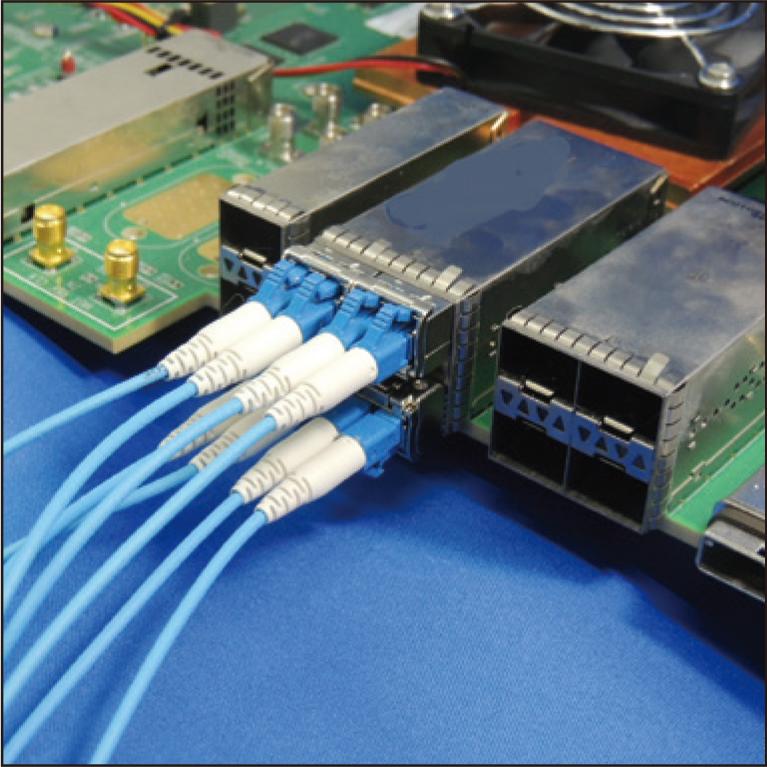
1.8 MB
Mobile networks are shifting to the fifth-generation mobile communication system (5G) to address the need for increasing data traffic associated with the spread of high-performance mobile terminals and the diversification of services provided. 25 Gbps optical transceivers are used in 5G mobile fronthaul, and wavelength division multiplexing is widely used to expand transmission capacity. We have developed a new optical receiver that can be integrated into a 25 Gbps DWDM transceiver by combining our CAN-type optical receiver and edge-illuminated waveguide APD chip for C-Band. This paper presents the design and performance of the new optical receiver.
2.1 MB
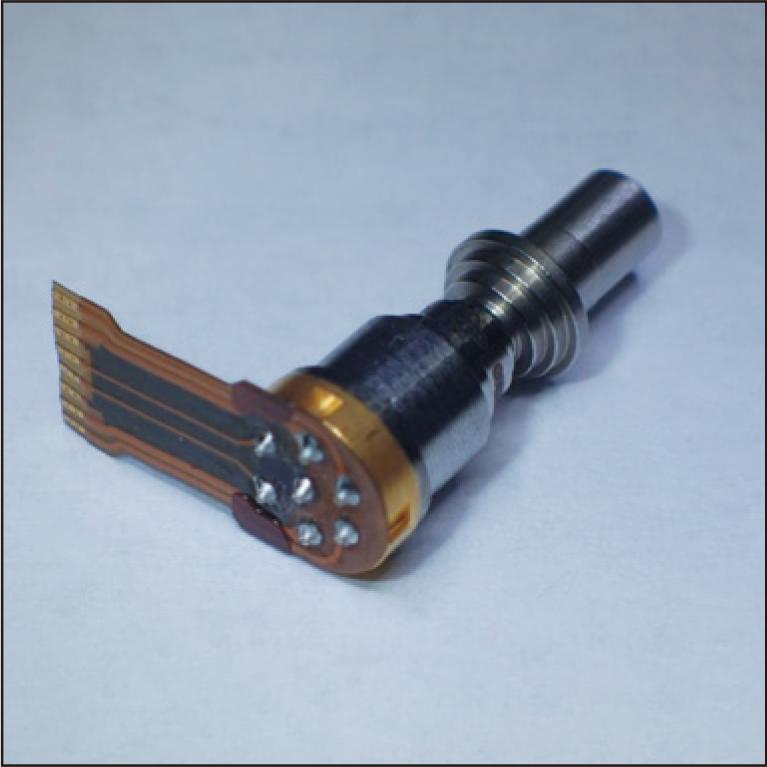
2.1 MB
The development of various IoT applications is accelerating data traffic, and it is anticipated that a data rate of more than 10 Tb/s will be required by 2030. On the other hand, conventional single-material photonic device technologies seem to have limitations to achieve both high-speed operation and low power consumption for 10 Tb/s-class data transmission. To overcome this challenge, heterogeneous integration, which combines the advantages of III-V compound semiconductors for high-speed and high-efficiency operation and Si photonics for high-density integration through device miniaturization, is expected as one of the promising approaches. This paper reports wavelength tunable lasers using heterogeneous integration.
7.8 MB
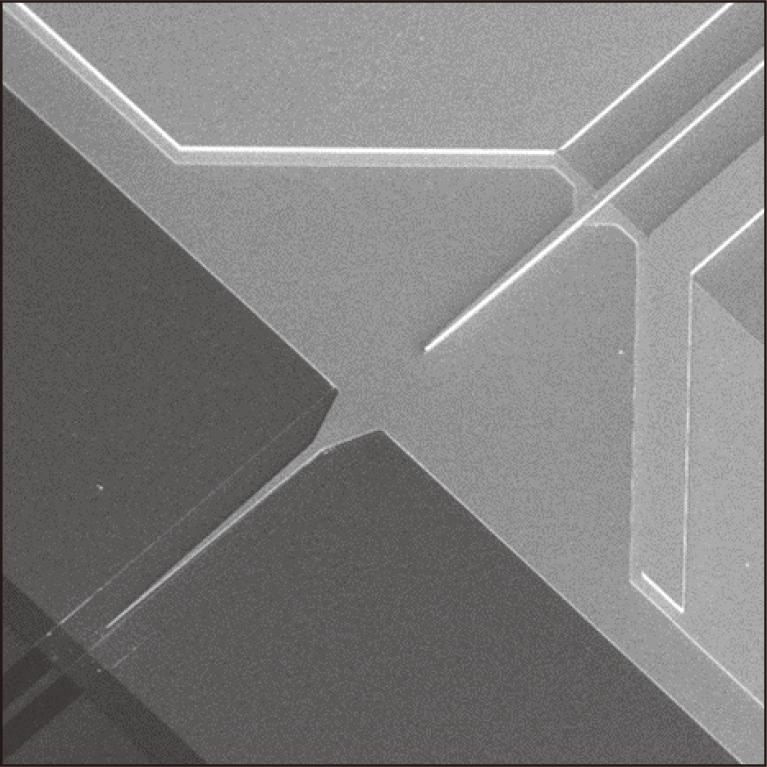
7.8 MB
To cope with the rapid increase in data traffic, 400 Gbit/s optical transceivers have been introduced in data center optical communication systems, requiring high-performance electro-absorption modulator integrated lasers (EMLs). We have developed four EMLs with center wavelengths of 1271, 1291, 1311, and 1331 nm, which meet the specifications for 400 Gbit/s optical transceivers. This paper describes the design and typical characteristics of these new EMLs.
2.8 MB
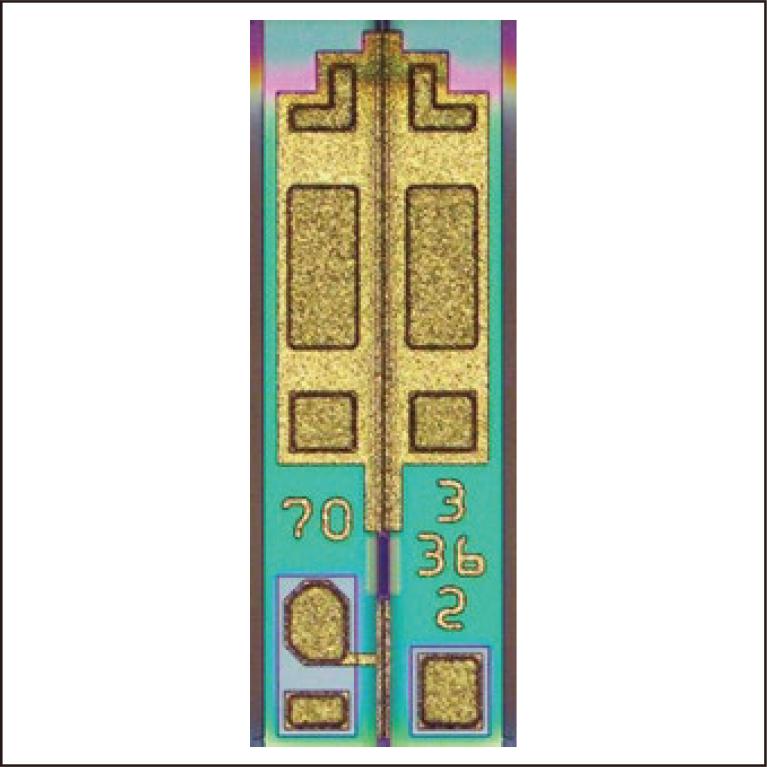
2.8 MB
Co-packaged optics (CPO) switches are attracting attention for their ability to reduce power consumption by integrating electrical and optical functions in a single device using silicon photonics (SiPh) technology. By placing the SiPh chip close to the switch ASIC and shortening the electrical interconnection distance, power consumption can be reduced while maintaining the data rate. For optical coupling with a surface coupling type CPO module in the limited space, new optical interconnection components with a low profile, high density, low loss, and high reliability are necessary. For this purpose, we demonstrated a 72-fiber, two-dimensional optical fiber array with a 90-degree bend (2D-FBGE (FlexBeamGuidE)). We developed a stress-free bending technique of polarization-maintaining fiber (PMF). The stress-free bent PMF shows a small radius (R = 2.5 mm), low loss, and high polarization-maintaining characteristics. By combining 90-degree bent optical fibers with a two-dimensional hole array, we have fabricated the 2D-FBGE with a low profile of 5.5 mm, high density of 24 fibers/mm, low insertion loss of less than 0.5 dB, and high polarization-maintaining characteristics of more than 20 dB. Thus, 2D-FBGE offers robust, space-efficient, and scalable fiber coupling applications for surface coupling type CPO modules.
2.8 MB

2.8 MB
The transmission capacity of a single submarine cable has been increasing to meet the growing demand for global data traffic, requiring the continuous advancement of optical transmission systems and optical fibers. This paper discusses the submarine fiber that provides the best performance and cost efficiency for the overall system. We found that submarine fibers having a medium core area of 110 to 130 µm2 and attenuation as low as 0.15 dB/km or less are the most preferable for the current several-hundred tera b/s cables based on digital coherent technology. The paper also discusses the prospects for optical fibers with smaller outer diameters and multi-core fibers for the realization of 1 Pb/s and beyond cable by increasing the number of optical fibers installed in the cable.
1.3 MB
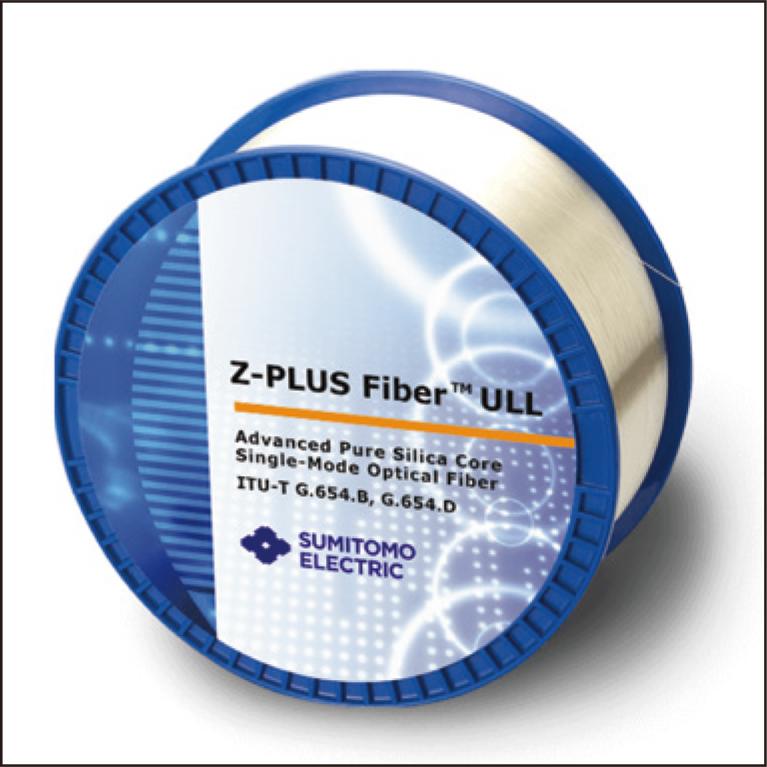
1.3 MB
The PureAdvance series includes optical fibers with low attenuation of 0.17 dB/km or less and an enlarged effective core areas of 110 or 125 μm2. These fibers are fully compliant with Recommendation ITU-T G.654.E, and suitable for terrestrial long-haul optical transmission systems. Sumitomo Electric Industries, Ltd. has improved the attenuation of PureAdvance to 0.16 dB/km or lower (typically 0.156 dB/km), and started the commercial supply. With the ultra-low attenuation, transmission performances of terrestrial long-haul optical links can be further improved, enabling high-speed optical transmission at 400 Gb/s and beyond. These fibers will contribute to the realization of high-capacity optical communication in terrestrial long-haul networks.
1.4 MB
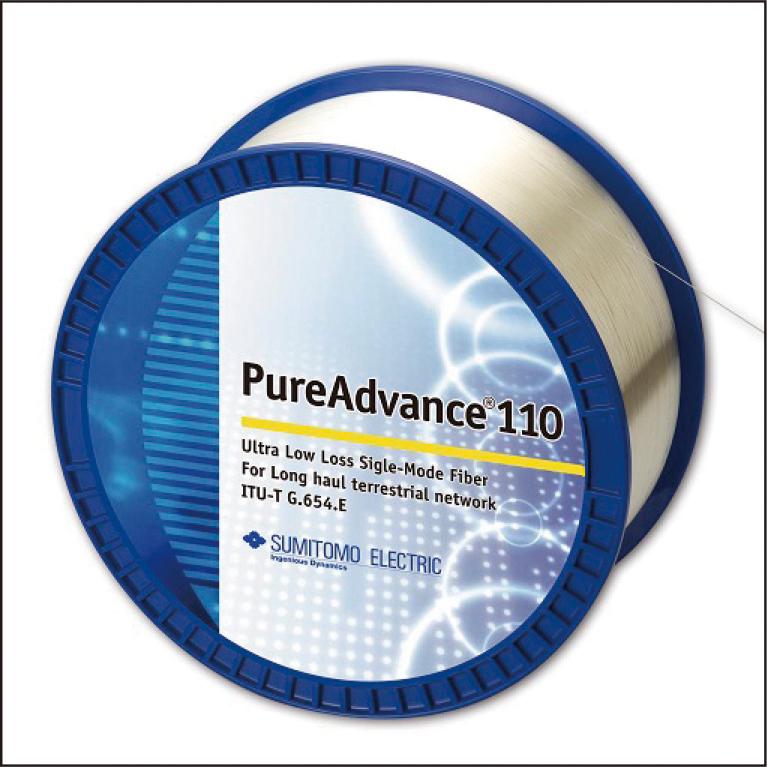
1.4 MB
This paper describes newly designed ultra-high-density (UHD) microduct optic cables that are installed into microducts using air-blown technique in order to efficiently build optical transmission capacity in data centers and other facilities. Our microduct cables range from 96-fiber to 864-fiber cables, including 288-fiber cable with flame retardant properties. The UHD microduct cables employ Freeform Ribbon, in which fibers meet and split out repetitively in longitudinal and transverse directions, allowing high fiber density and efficient fusion splicing. In order to enhance the cable-blowing performance, we choose a thin and lightweight cable design with low friction jacket material. These microduct fiber optic cables can be used in various environments, contributing to the efficient and flexible network designs suited to data centers and other customer needs.
2 MB
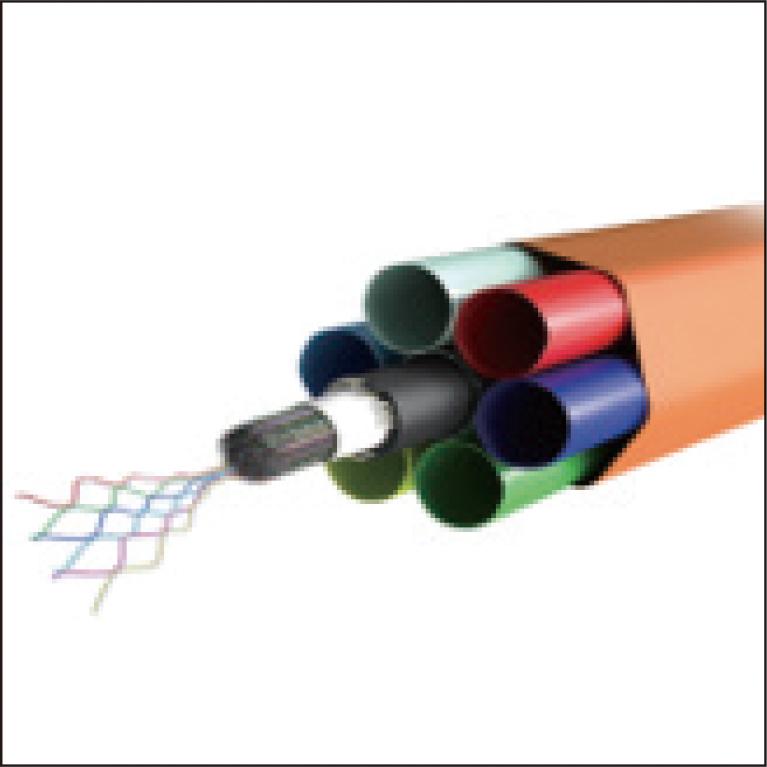
2 MB
This paper describes a new pre-connectorized ultra-high-fiber-count (UHFC) optical fiber cable that has been developed to reduce installation time in data centers. The cable is made of a thin 3456-fiber optical cable consisting of 200 µm Freeform Ribbon fibers and a slotted core. At both ends of the cable, 24-fiber multi-fiber push-on (MPO) connectors are assembled and precisely sealed with a protection sleeve optimally designed for tensile and other mechanical properties. The result of a cable pulling test simulating actual installation was confirmed that the developed cable achieves the same number of optical fibers accommodated in the duct as conventional non-connectorized cables. This cable enables a reduction of connection time by using the MPO connectors instead of mass fusion splicing, and is expected to reduce installation time by about 40% compared to conventional cables.
2.8 MB
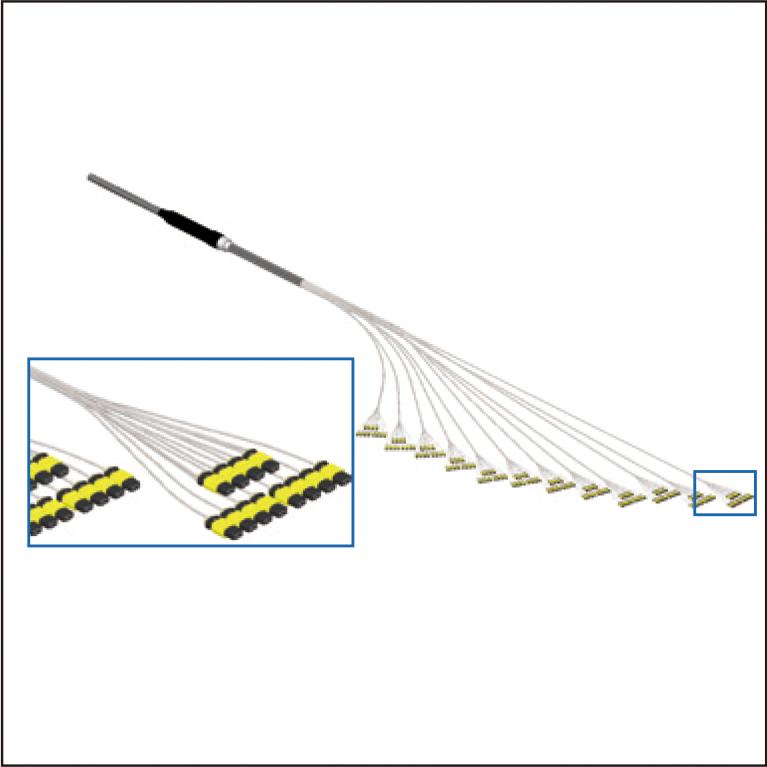
2.8 MB
In multicore fiber (MCF) transmission, low inter-core crosstalk (XT) is crucial to suppress signal quality degradation. This study reveals that the dependence of the XT on fiber bending radius can be evaluated from the longitudinal changes in the bending radius of spooled MCFs with multi-channel OTDR. Using multi-channel OTDR, we also developed a measurement method for backscattered XT, which needs to be considered for bidirectional MCF transmission. With the developed method, we verified the validity of the theoretical prediction of the fiber length dependence of the backscattered XT and clarified the effect of fanout on the bidirectional XT. Our study shows the applicability of multi-channel OTDR for characterizing longitudinal XT change in MCFs and the preferable characteristics of bidirectional transmission in MCF.
2.1 MB
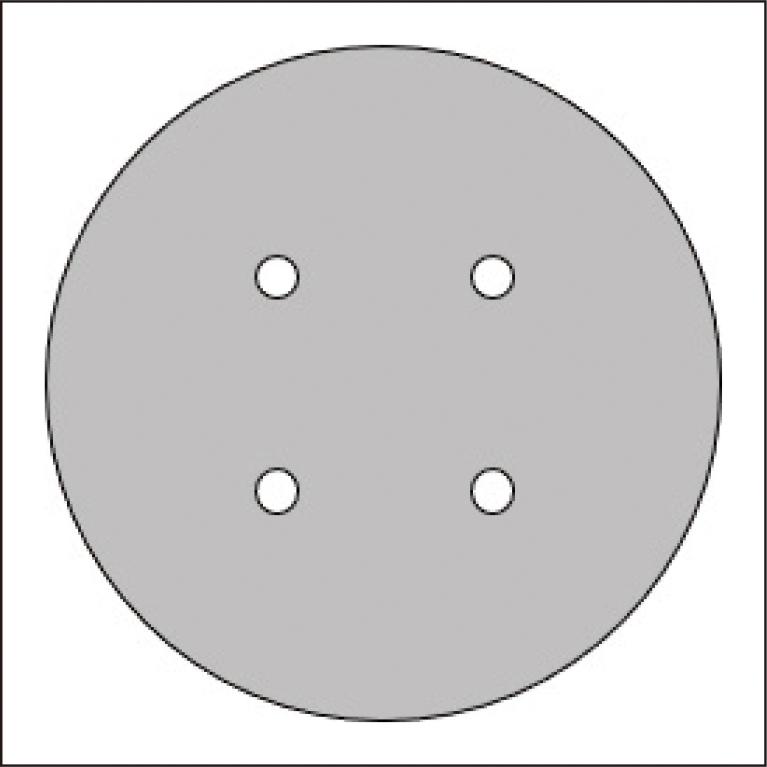
2.1 MB
Next-generation transmission systems using multi-core fiber (MCF) for data center applications require fan-in/fan-out (FIFO) devices with low insertion loss (IL) and high return loss (RL). A fiber bundle FIFO can achieve low IL and high RL by high-precision core eccentricity control of the fiber bundle and physical contact connection between the MCF and the fiber bundle. Although our FIFO is designed to allow only rotational alignment between the MCF and the bundle, the optical characteristics of the fabricated FIFO devices achieved IL of less than 0.3 dB and RL of more than 50 dB.
3 MB
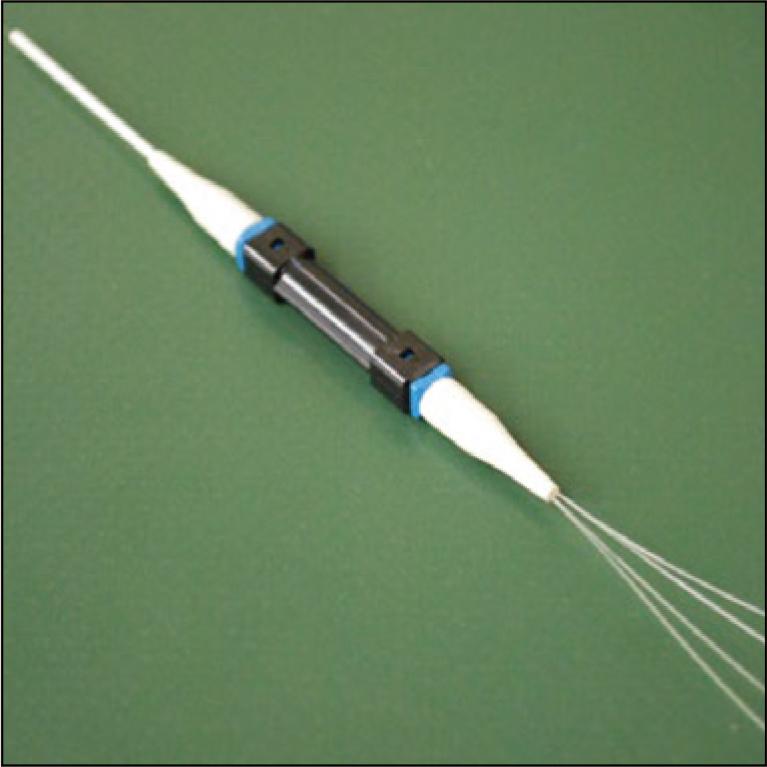
3 MB
The increased transmission loss of optical communication cables in low-temperature environments has been a longstanding issue. However, the mechanism of the loss is still largely unknown. We have developed a technique for evaluating the shape of actual optical cable samples in a low-temperature environment, which was one of the biggest obstacles to elucidating the mechanism. The proprietary technologies include the method to perform low-temperature observation with a simple retrofit mechanism for existing general x-ray computed tomography (XCT) systems and the method for accurately extracting the shape of individual fibers from an indistinct XCT image and quantifying them three-dimensionally. In particular, the latter technology applies not only to optical cables but also to a wide range of cable products, contributing in many ways to the digital transformation promotion of cable product design using big data. This paper introduces an effort to conduct cable evaluation from the viewpoints of both actual measurement and computer-aided engineering, using the shape evaluation of multi-core optical cables in a low-temperature environment as an example.
3.5 MB
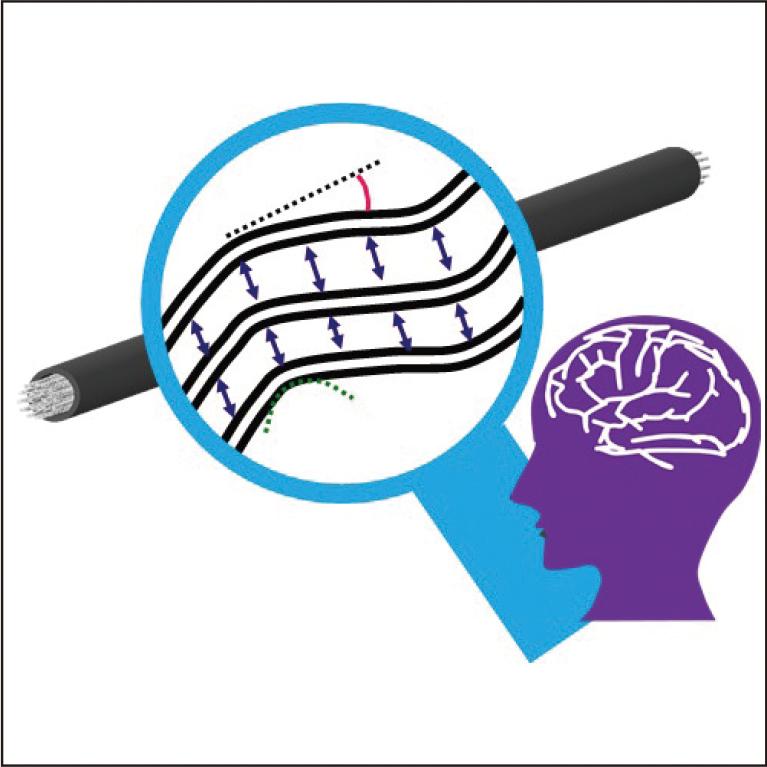
3.5 MB
Millimeter-wave GaN HEMTs are expected to be used in higher-capacity wireless communications, but the large nonlinear components such as short-channel effects, have challenges in creating the large-signal models that are essential for amplifier fabrication. In this report, we have developed an innovative model that an artificial neural network (ANN) is applied only to the current source to avoid over-fitting issues. To create this model, pulsed I-Vs/S-parameters measurement data up to 120 GHz were used. The proposed model is the first to demonstrate large-signal power performances at 71 GHz in high accuracy.
1.8 MB
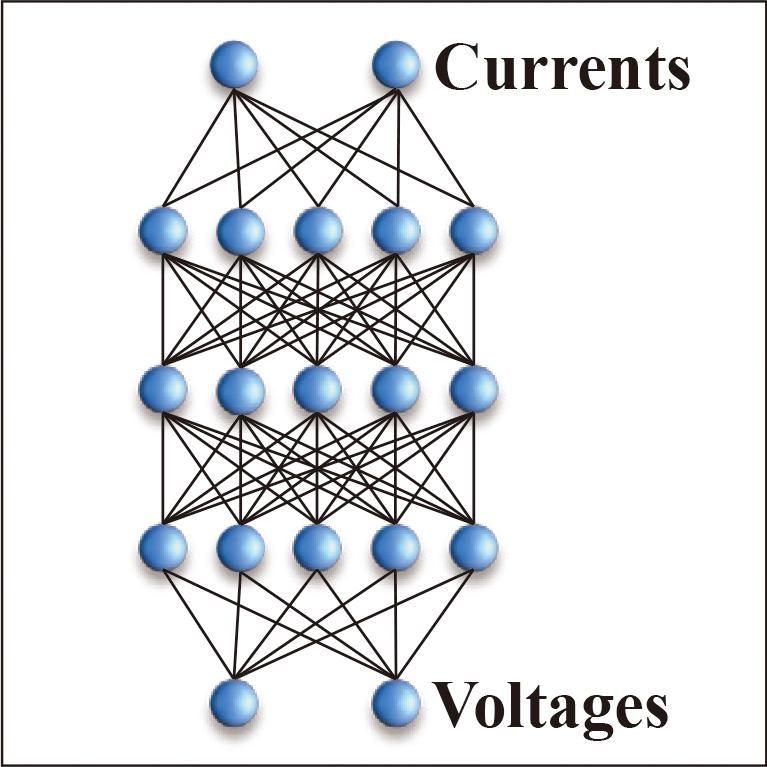
1.8 MB
High-efficiency power amplifiers generate little heat and operate with a small heat dissipation function, making them effective in reducing the size, weight, and cost of communication devices. Since many amplifiers are used in massive multiple-input multiple-output (MIMO), higher efficiency amplifiers are required, and those based on gallium nitride high electron mobility transistors (GaN HEMTs) are becoming popular particularly for cell phone base station applications. On the other hand, load modulation is attracting attention as an amplifier technology for improving modulation efficiency. Among them, Outphasing amplifiers are known to achieve higher modulation efficiency than conventional Doherty amplifiers. In this study, we conducted a design prototype evaluation of an Outphasing amplifier using our GaN HEMTs. The result confirmed that the higher efficiency of the amplifier reduces power consumption by 1.1 W per amplifier compared to the conventional Doherty amplifier configuration. In a 64 transmitters Massive MIMO base station, a power reduction of 70.4 W is achieved, contributing to the miniaturization of the base station.
1.8 MB
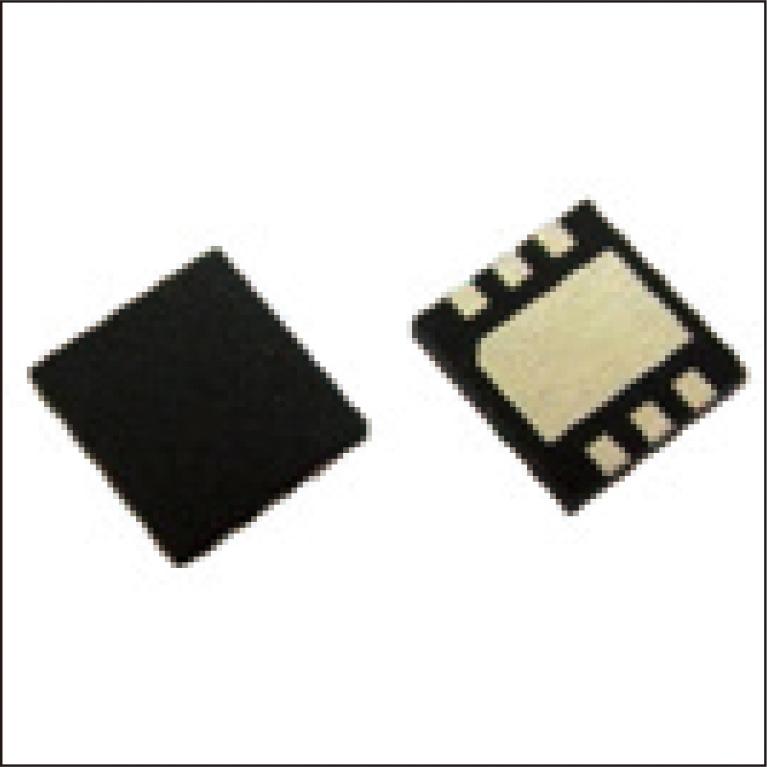
1.8 MB
We have developed a high-output, high-efficiency internally matched power amplifier for satellites using gallium nitride high electron mobility transistor (GaN HEMT). Today's wireless communication technology has become indispensable in our lives, not only for Internet and mobile phone communications, but also for electronic payment. Therefore, it has become an indispensable in our lives. Therefore, global information network is growing and the need for satellite communications is increasing as these are less susceptible to natural disasters. The newly developed power amplifier achieves an output power of 100 W and power added efficiency of 60% under CW operation conditions in the C-band (f = 3.7 to 4.2 GHz), the main frequency for satellite communications. The GaN chip used in the development has a confirmed long-term reliability. In terms of both the performance and the reliability, the industry-leading device.
4.1 MB
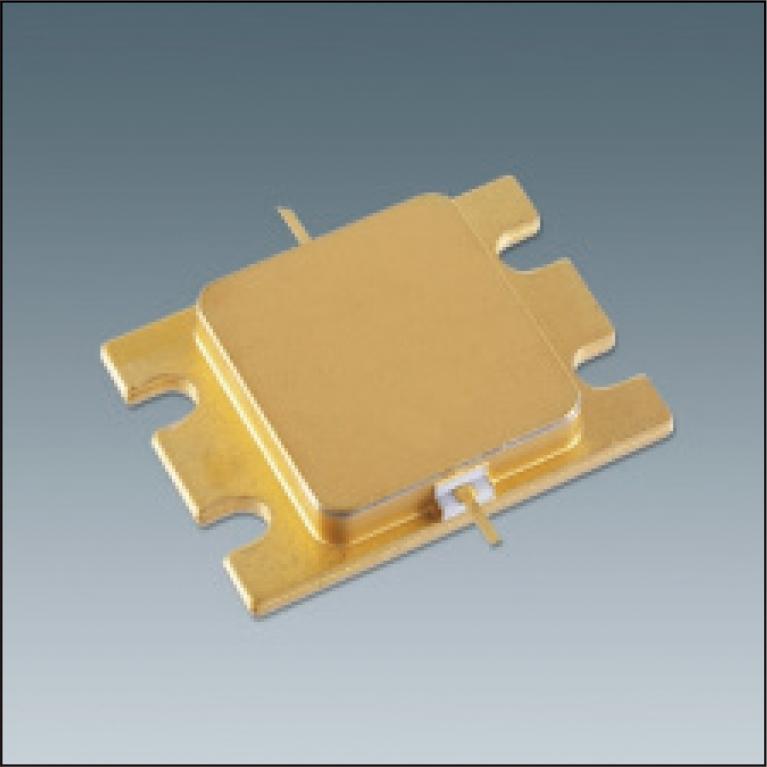
4.1 MB
In recent years, AI-based video analysis has been widely used in various fields. Demand for higher definition and wider area viewing has led to the development of cameras with higher resolutions such as 4K and 8K. As a result, the cost of video data transmission, storage, and analysis has increased significantly. In response to this, we have developed a prototype AI-based video processing technology (AVP) that can significantly reduce the amount of video compression data and cloud AI computation cost after transmission. In a field test conducted at a factory, AVP reduced the average bit rate by 92.2% compared to conventional video compression technology, while reducing the AI computation cost on the cloud side, enabling highly accurate analysis of workers' movement flow using high-resolution video.
2.5 MB
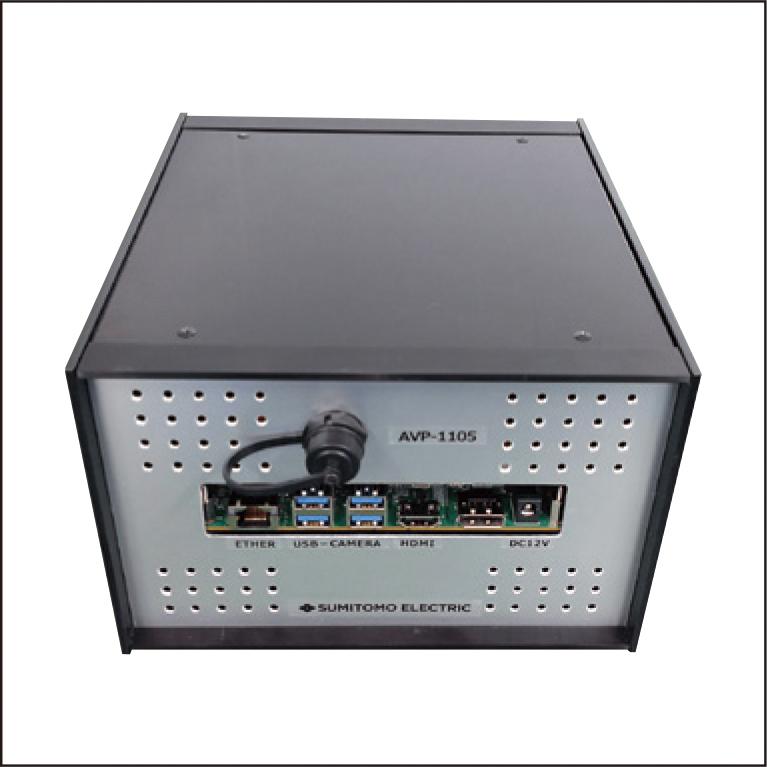
2.5 MB
Quantum computing is attracting attention as a technology for solving complex combinatorial optimization problems at high speed. We have been selling delivery planning systems, one of the business support tools for logistics companies, for 20 years and have been conducting research and development of related technologies. The delivery planning systems have a function to calculate efficient delivery routes with low transportation and delivery costs, but it requires complex optimization calculations. With the aim of applying quantum computing to this optimization computation, we are formulating, implementing, and evaluating the performance required for this purpose. In this paper, we report the findings of the validation of the formulation by comparing the results obtained using the Ising machine and conventional computers.
1.6 MB
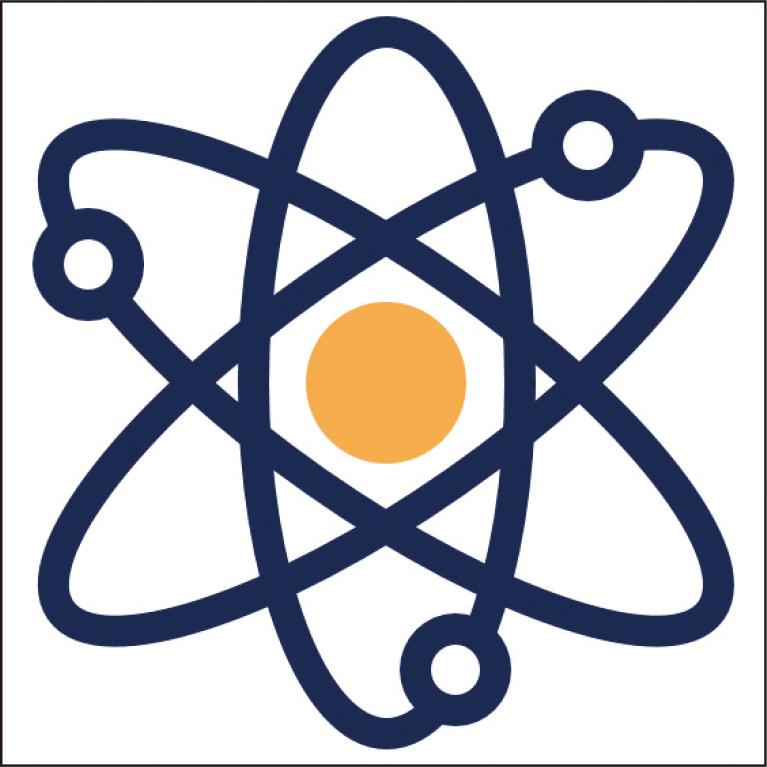
1.6 MB
In recent years, the importance of improving the efficiency of power devices used for electric power control has been increasing. Silicon carbide (SiC) is a wide bandgap semiconductor with superior material properties such as high breakdown electric field and high thermal conductivity. Commercialization of SiC MOSFET (metal-oxide-semiconductor field effect transistor) has already begun, and the market size is expected to expand further in the future although Silicon (Si) is mainly used for power devices currently. We have been developing a low on-resistance “V-groove” trench MOSFET (VMOSFET), which uses the patented crystal face as the channel region. In addition to the transistor technology, we have been developing the full SiC modules with the VMOSFET. This report introduces the feature, the electrical characteristics, and the reliability test results of the full SiC power module (1200 V 400 A). The module package has compatibility with Silicon (Si) power module package and is designed for easy replacement for existing users of Si power modules.
1.3 MB
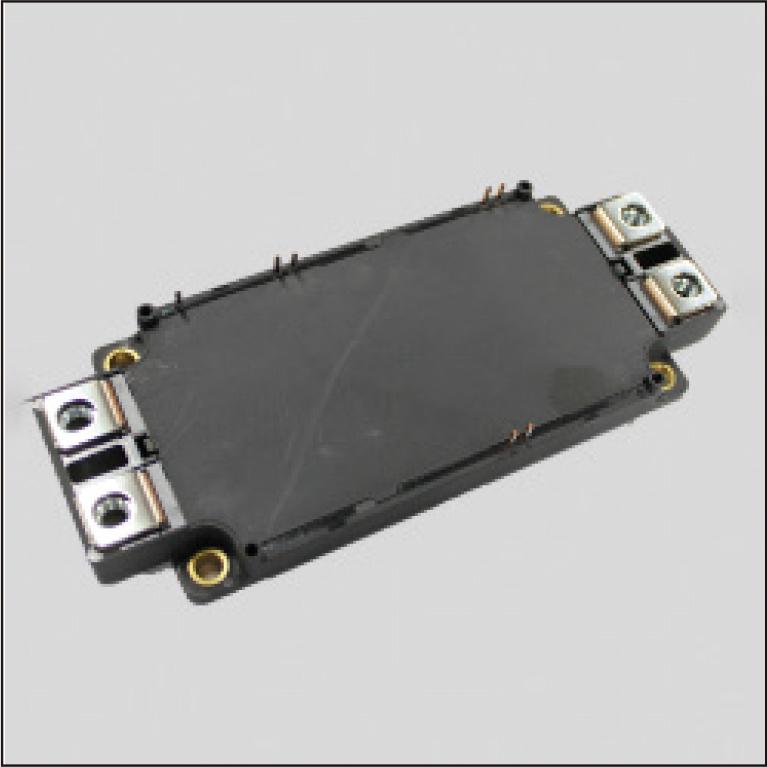
1.3 MB
Since 1993, Sumitomo Electric Industries, Ltd. has been manufacturing polyimide fuser rollers, important parts for laser beam printers (LBPs). In recent years, we have developed a high thermo-conductive fuser roller applicable to high-speed printing systems. It uses a composite material that combines carbon nanofiber with high thermal conductivity and tough polyimide resin. Carbon nanofiber is an excellent thermal conductor, but is subject to regulation due to the high risk of residuals when taken into the body. As an alternative to carbon nanofiber, we have developed a new fuser roller using graphite filler, which is also a carbon-based filler.
1.9 MB
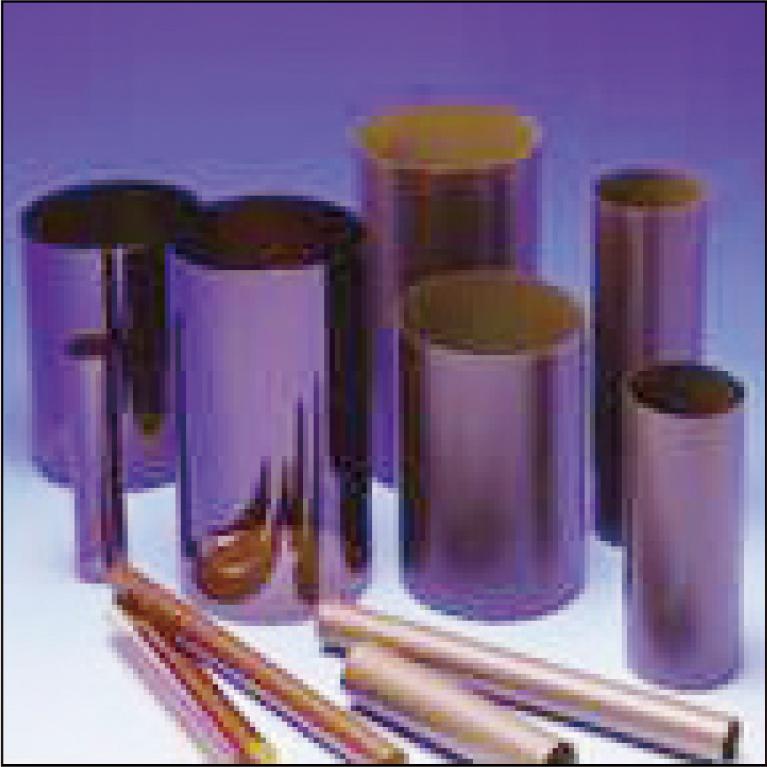
1.9 MB
With the recent miniaturization of electronic equipment, there is an increasing demand for high-density wiring in flexible printed circuits (FPC). We have developed a circuit formation technology using a semi-additive process that uses fine-pitch, high-aspect plating. The plating technology has enabled us to establish a manufacturing method for the fine-pitch FPCs that cannot be realized by conventional etching-based circuit formation processes. By applying this technology, mass production of actuator coils for image stabilization of high-performance smartphone cameras has been realized. This paper reports on the circuit formation technology using the semi-additive method and examples of its application to actuator coils, and introduces the latest developments.
1.6 MB
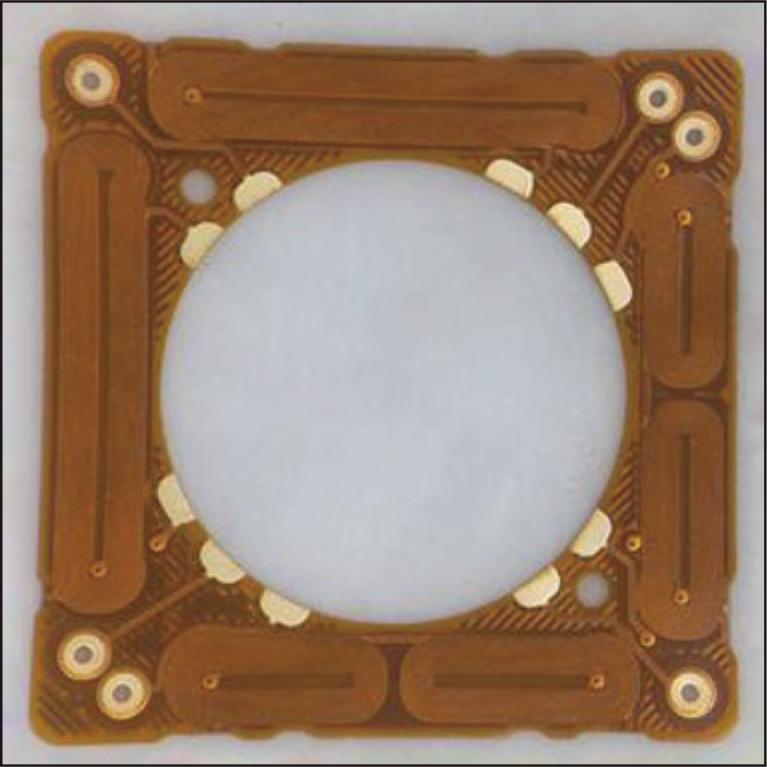
1.6 MB
In order to achieve carbon neutrality, there is a growing trend to use renewable energy as the main power source. However, with an increase in the use of renewable energy, the power system has become congested, making it difficult to connect other new power sources. To solve this problem, Japanese Connect and Manage is being developed to review conventional methods and address power system congestion. Moreover, the dynamic rating is being considered a new operational technology. To realize these concepts, a real-time monitoring system is needed to monitor the conditions of overhead transmission lines and the environment around transmission towers. This system will play an important role as renewable energy will be introduced in large quantities in the future. We have been developing an overhead transmission line monitoring system for the large-scale introduction of renewable energy. This paper introduces the features of our developed system and equipment.
1.5 MB
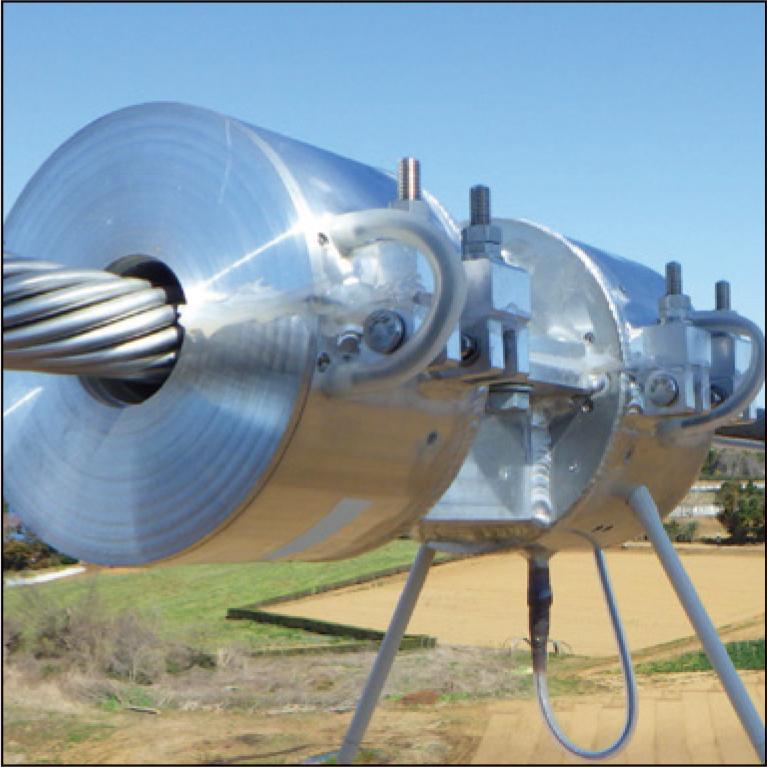
1.5 MB
Sumitomo Electric Toyama Co. Ltd. is aiming to apply Celmet, a porous metal product, as a current collector for solid oxide fuel cells (SOFC). NiCo Celmet is particularly suitable for cathode current collectors as it forms conductive oxides in a high-temperature and high-oxidant atmosphere. We reported that fuel cells using the NiCo Celmet exhibit high power density even without gas flow channels in the interconnector because of its high gas diffusivity. In this study, to elucidate the mechanism of high power density, we investigated the influence on DC resistance by applying Celmet as a current collector. We clarified that the contactability between the cell and Celmet is improved by shaping Celmet along the warp of the cell. Moreover, we found that NiCo Celmet can maintain good contactability as its oxidation expansion applies pressure from the inside of the stack.
2.1 MB
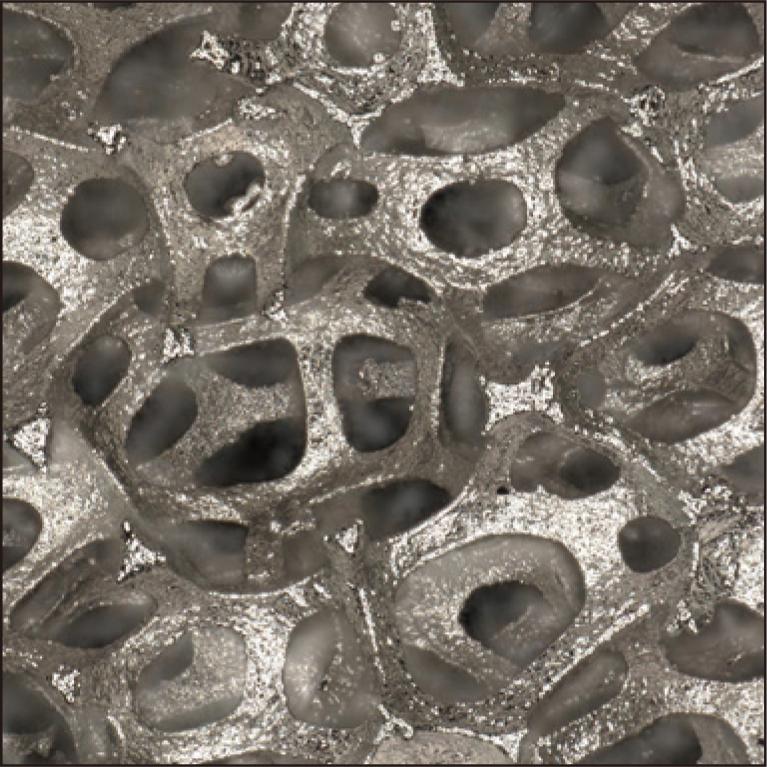
2.1 MB
Due to the increasing demand for carbon neutrality and resource saving, there is a demand for smaller and lighter spring products used in automobile engines, clutches, and other parts. As a result, it is necessary to increase the strength of spring materials. Conventionally, materials have been developed with the policy of increasing fatigue strength equating to increasing hardness. Spring materials, which require the highest fatigue strength among all metal materials, have reached a plateau, and a new approach that considers the environment in which the materials are used is becoming necessary. This paper describes the performance of a newly designed high-strength oil-tempered wire product.
1.8 MB
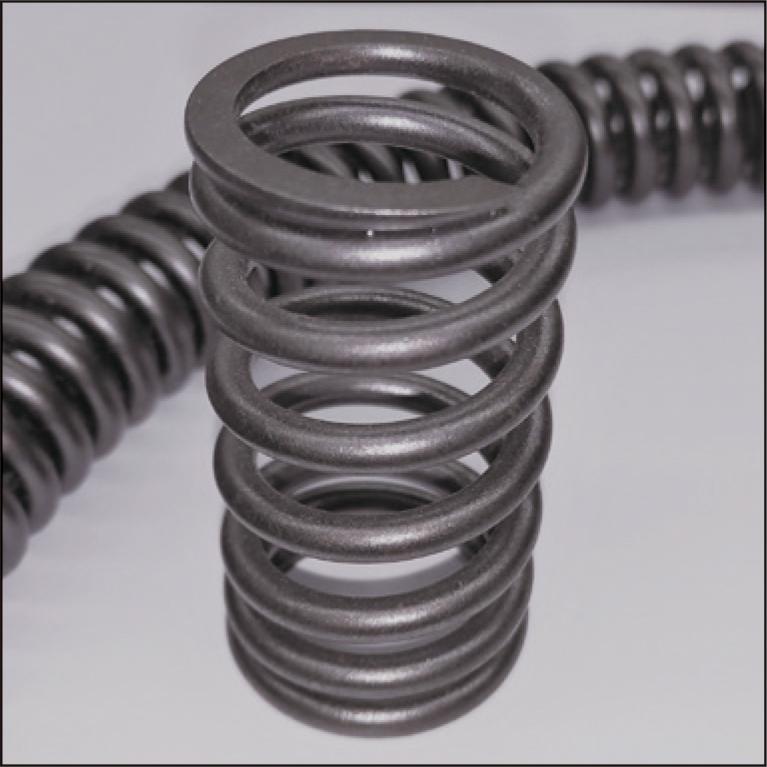
1.8 MB
Polyethylene (PE) is one of the polymers widely used in industry. PE is frequently used as a processing material because it is easily cross-linked by electron beam irradiation and its heat resistance is expected to be improved. This paper describes the mechanism of electron beam crosslinking of PE and its effect on PE. The property changes observed in cross-linked PE are also presented.
1 MB
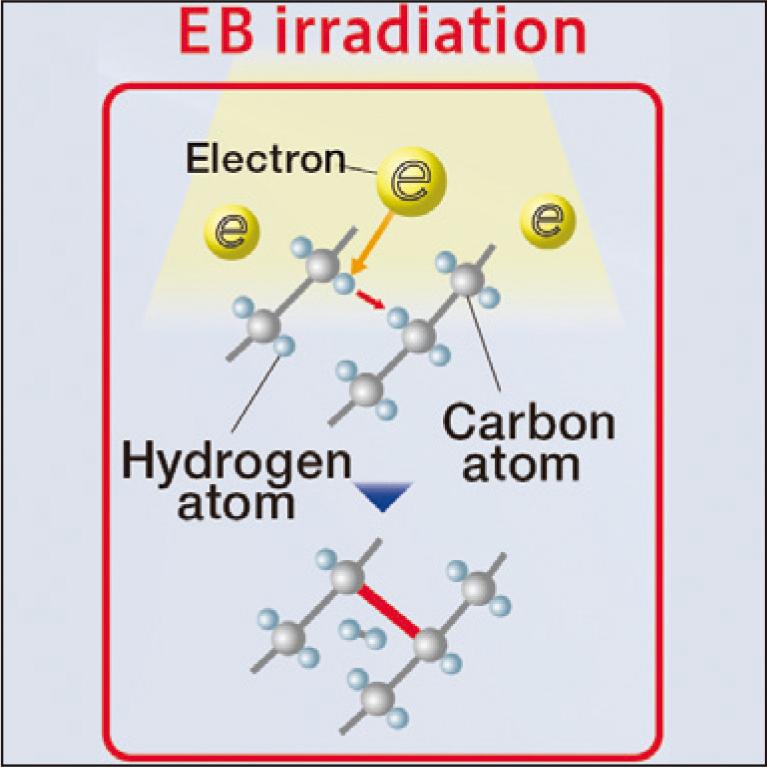
1 MB
We have developed a new analysis technology to accurately calculate the bending shape and bending load of multi-core composite cables installed in the undercarriage of automobiles. The multi-core composite cables are made by bundling multiple electric wires (core wires) and integrating them. They connect the electric parking brake, wheel speed sensor, etc. arranged in the wheel to the vehicle body-side unit, and are responsible for power supply and signal transmission. Demand for the cables is increasing with the electrification of automobiles and technical development of advanced driver-assistance systems (ADAS). The appealing point of the cable is the bending resistance, which prevents the conductor from breaking even when it is repeatedly bent due to the vertical movement of the wheel during traveling. In the past, the cable design was performed after determining the actual vehicle layout shape using CAD, but the calculation accuracy of the bending load was low, and the cable design had to be adjusted during prototyping and evaluation, causing the development period to be prolonged. With the newly developed analysis technology, the bending shape and bending load can be accurately calculated when both ends of the cable are fixed at a predetermined position and angle, thereby streamlining development.
1.8 MB
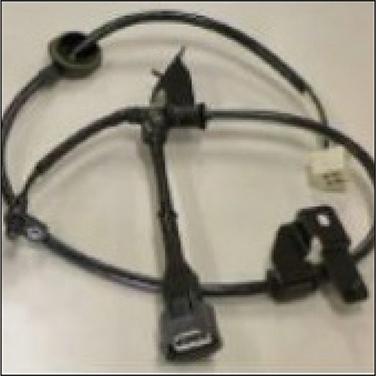
1.8 MB
The Mosquito method, a polymer optical waveguide fabrication method invented by Professor Ishigure at Keio University, enables the three-dimensional (3D) formation of core patterns in cladding using a commercially available micro dispenser and a multi-axis syringe-scanning robot. This fabrication method is expected to be used to realize devices required for 3D waveguides such as Fan-in/Fan-out (FIFO) devices, which are essential for the introduction of multicore fibers (MCF). On the other hand, prior studies have mainly examined multimode waveguides, and several issues need to be solved for making single-mode devices. In particular, the core shape tends to deteriorate from circular due to monomer flow caused by needle scanning in the cladding, which is a factor that increases the connection loss with the optical fiber. This paper presents a theoretical and experimental study on the fabrication of single-mode waveguides by the Mosquito method and the formation of circular cores using the method to reduce connection loss with single-mode optical fibers.
2.2 MB
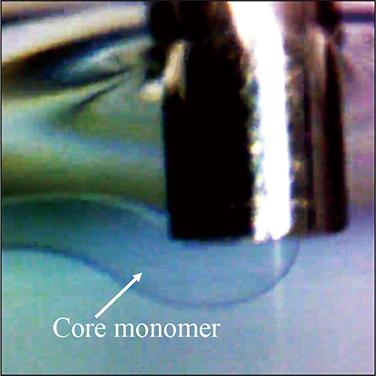
2.2 MB
In the construction of 5th generation (5G) mobile communication systems, the transmission speed at the mobile fronthaul (MFH) section is about 2.5 times faster than that of conventional systems. As the signal speed increases, there is a problem of shortening the optical transmission distance due to the effect of wavelength dispersion in single-mode fibers. As a measure to extend the optical transmission distance, we have developed a media converter type optical repeater that converts the wavelength to the 1.3 µm band, where the effect of wavelength dispersion is minimized. The repeater combines waveform generation processing with electric circuits to compensate the transmission characteristics and can be applied to transmission lines up to 30 km. This paper describes the 25 Gbps optical repeater.
1.7 MB
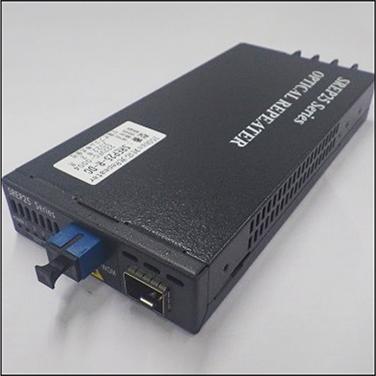
1.7 MB
A digital coherent optical transmission technology has been deployed in not only long-haul and metro networks but also data center networks. Therefore, there is an increasing demand for a coherent module that can be incorporated in small-sized optical transceivers and realize high-speed and high-capacity transmission. Considering the demand, the Optical Internetworking Forum has standardized an integrated coherent transmit-receive optical sub assembly (IC-TROSA) module in August 2019. This paper presents an IC-TROSA type-2 module that integrates a tunable laser for 800 Gbit/s applications.
3 MB
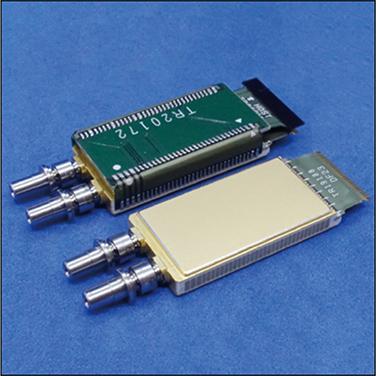
3 MB
Electronic devices using oxide semiconductor In-Ga-Zn-O (IGZO) are attracting attention as next-generation flat panel displays. In order to apply ion implantation technique to IGZO films, Nissin Ion Equipment Co., Ltd. and Nissin Electric Co., Ltd. performed conventional B+ implantation in IGZO films and investigated their optical or electrical properties. The results show that the resistance control of IGZO films by B+ implantation is useful for the IGZO electronic devices, especially for reducing the resistance in the source and drain region of the IGZO thin-film transistors.
2.3 MB
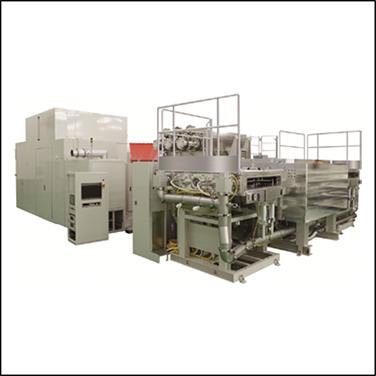
2.3 MB
Development of new catalysts is progressing rapidly toward the construction of chemical processes with lower environmental impact. Celmet is a porous metal with a three-dimensional network structure having over 90% of porosity, and therefore is expected to be used as a support material for catalysts with low pressure loss and high deformability. The Celmet support also has the advantage that it can be heated directly by an electrical heating means. This paper revealed that a catalyst coated with CeO2 powder loaded with fine Ru particles on Ni Celmet exhibited practical propane steam reforming performance comparable to commercially available Ru spherical catalysts. Furthermore, NiCr Celmet electrically heated at 500°C was estimated to have long-term durability based on the time-course change in electrical resistance, suggesting that it can contribute to the construction of compact and energy-efficient reactors.
2.6 MB
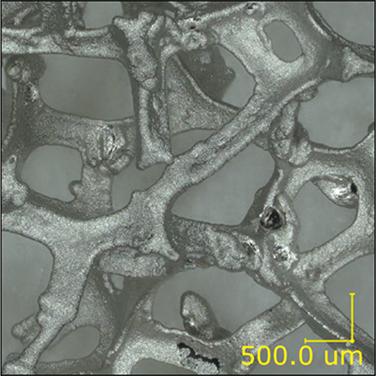
2.6 MB
Electric wires and conductive spring wires require high strength to withstand repeated bending and maintain high contact pressure. However, the higher the strength of general-purpose copper compound metals, the lower their conductivity. To overcome this challenge, we have developed a new composite wire with a stainless steel coating on a copper core wire by making full use of our wire drawing and heat treatment technologies. This new wire has higher strength and conductivity than beryllium-copper alloys, the strongest of the copper alloys, and is strong against bending and twisting outside stainless steel. This paper presents the results of an evaluation of its resistance to settling and repeated bending, assuming that the wire will be used as a conductive spring or electric wire.
1.3 MB
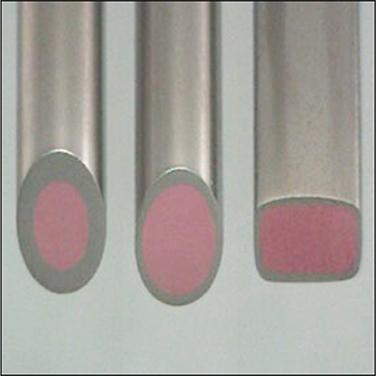
1.3 MB
Exotic alloys such as Ni-based alloys, cobalt (Co)-based alloys, and titanium (Ti) alloys are widely used for equipment and parts in aerospace and automotive industries due to their superior resistance against heat and corrosion. There has been growing demand for tools for machining these alloys. When cutting exotic alloys, the workpiece material is likely to adhere onto the cutting edge of a tool, resulting in a sudden fracture of the cutting edge of the tool. The tool life is significantly shorter than that of tools for cutting general steel. Thus, demand for cutting tools with stable performance and long tool life has been increasing. The newly developed ACS2500 and ACS3000 are designed to improve wear resistance and fracture resistance by applying a newly developed physical vapor deposition (PVD) coating and special cemented carbide substrate. These coated carbide grades help reduce cutting edge replacement frequency and tool consumption by extending tool life, thus contributing to the reduction of machining costs.
2.1 MB
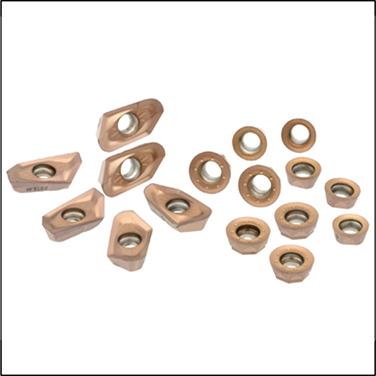
2.1 MB
In recent years, computer-aided engineering (CAE) simulation technology has become indispensable in the manufacturing industry as a part of developing products and optimizing process conditions. CAE supports manufacturing processes and product functions based on physical theories. It stimulates the imaginations of designers and production engineers by visualizing invisible phenomena, such as electromagnetic waves, heat, and stress, and connects to the development of new products and improvements of processes. Furthermore, these days more customers request CAE analysis results in addition to experimental results in adopting new products or manufacturing processes. In order to obtain useful and accurate CAE analysis results under these circumstances, it is necessary to develop advanced CAE technology reproducing experimental results, and high-speed calculation servers. In this work, we have realized CAE analysis that could not be handled previously, by increasing the calculation efficiency and functional performance of the calculation servers. This article gives an introduction to the details of these calculations in various analytical fields.
2.4 MB
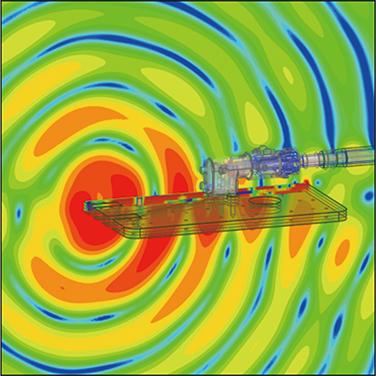
2.4 MB
There is a rapidly expanding market for industrial solutions to improve productivity and safety by transmitting all kinds of information in factories and cities to the cloud at high speed and with low latency through 5th generation mobile communication systems and analyzing the information using AI. We have developed an industrial 5G terminal that can be used in both public 5G networks, which are deployed by mobile carriers, and local 5G networks, which are built by companies and local governments within a limited area. This 5G terminal has an edge computing function and ease of installation of applications that meet user requirements. The combination of edge computing in this 5G terminal and cloud computing in a cloud server makes it possible to realize optimal solutions that meet user requirements.
273 KB
Sumiden Communication Engineering Co., Ltd. has been involved in the nursing care service industry through the provision of the nursing care service billing system “Care Time,” which calculates service charges based on helpers’ service records and bills payers, for about 20 years. We have recently developed a WEB system that can share data with the nursing care service billing system and started offering it to nursing care service companies as a subscription service.
291 KB
As fluorescent lamps installed in cable tunnels (tunnels for laying communication cables) are being replaced with LED lights, we have been selling immersion-proof LED light fixtures with an IP67 (dustproof and immersion-proof) rating since 2013. However, their use in narrow spaces has been limited due to their external dimensions. This time, we have released compact and easy-to-install LED light fixtures that can be installed in narrow spaces while maintaining the advantages of our conventional products.
0.6 MB
Currently, most power cables are XLPE cables, which use crosslinked polyethylene (XLPE) for insulation. XLPE has excellent heat resistance due to its crosslinks, but it shows no fluidity with heat and its material recovery is difficult. In addition, the longer the cable to be produced, the longer the lead time may be, because manufacturing XLPE cables requires a crosslinking reaction process to form a network structure and a drying process to exhaust by-product gases from the reaction. Against this backdrop, we have developed environmentally friendly non-crosslinked insulated power cables that can contribute to improving productivity.
1.7 MB
The market for industrial robots is rapidly expanding due to labor shortages, cost reductions, and productivity improvements in industry, and the demand for precision bearings (linear guides and ball screws) is growing. Profile grinding is often used to grind the rolling surfaces of the main parts of bearings because it requires particularly high productivity. Profile precision depends on the diamond rotary dresser (RD) that trues and dresses the profile grinding wheels. To further enhance efficiency, conventional and general grinding wheels have been replaced by rigid wheels, which use the most rigid material after diamond and enable high-speed grinding. In step with this, the development of profile RDs with high abrasion resistance has been required. In response to requests from the bearing industry, we have developed and begun marketing a new RD for rigid wheels, such as vitrified cubic boron nitride (CBN) wheels, using our original plating technique.
1.1 MB
A milling cutter is a cutting tool with a cutting edge on the periphery, end face, or side face. Various kinds of parts are machined by revolving the cutter. Milling cutters with indexable inserts are widely used today for various types of machining. Recent performance improvement of machine tools is increasing the need for tools specialized in high-efficient machining in the automotive, aerospace, ship building, industrial machinery, die-mold, and other sectors to improve productivity. Environmentally friendly machining has also become a focus of attention as a part of CO2 emissions reduction activities to achieve a decarbonized society. Sumitomo Electric Industries, Ltd. has recently developed the SEC-Sumi Dual Mill DMSW series (DMSW), which enables more efficient machining and contributes to increasing productivity and saving energy.
1.3 MB
Efforts toward a Zero-Carbon society to curb global warming have become a major trend worldwide. Back in October 2020, the Japanese government proclaimed the target of achieving Carbon-Neutral by 2050, referred in “Green Growth Strategy,” with a policy to make concerted efforts on the development of renewables and hydrogen energy sources, namely “carbon neutral innovation,” with aims to strengthen the competitiveness of Japanese industry. In addition, a “Green Innovation Funding” was founded to promote it.
1.3 MB
In an effort to create a decarbonized society, Japan, Europe, and the United States are shifting their main energy sources from fossil fuels to renewable energy sources such as solar power. However, the output of renewable energy sources fluctuates depending on weather conditions, making it difficult to provide a stable supply of electricity. As a solution to this problem, efforts are being made to introduce distributed power sources such as small- and medium-scale solar power generators and storage batteries on the consumer side to level out the output fluctuations of renewable energy. As renewable energies are introduced in large quantities in the future, energy management systems will play an important role in integrating distributed power sources and operating them stably and efficiently. This paper discusses a next-generation energy management system that organically links distributed power sources and controls them in an integrated manner. We first discuss the technical challenges of integrated management of distributed power sources, and then summarize the prior technological trends toward the solution of these challenges. Finally, the features and application areas of our energy management system “sEMSA-μGrid” are explained.
2.3 MB
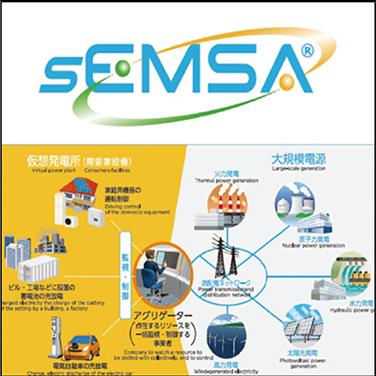
2.3 MB
With efforts to realize a carbon-neutral and sustainable society accelerating on a global scale, Nissin Electric Co.,Ltd. has launched a new medium- to long-term plan, VISION 2025, aiming to contribute to “the realization of a sustainable global environment and a society in which anyone can play an active role” through six growth strategies. Among them, Smart Power Supply Systems (SPSS) are a solution business that supports our growth strategies in the environment and energy fields. This paper introduces the recent efforts for SPSS.
5.2 MB
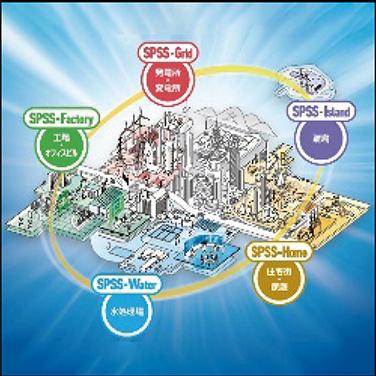
5.2 MB
With the spread of solar power generation as a renewable energy source and the deregulation of electricity, attention has been focused on the realization of energy management utilizing IoT, such as local production and local consumption of energy and the development of storage batteries and EV-based power storage. To solve problems in the energy field using IoT technology, Nissin Systems Co., Ltd. primarily provides gateway devices, software, and services using cloud systems to develop business for general consumers. This paper introduces the technical contents of the area aggregation cloud system built in the island-and-islets-type Smart Community Actual Positive Business in Miyakojima, Okinawa.
2 MB
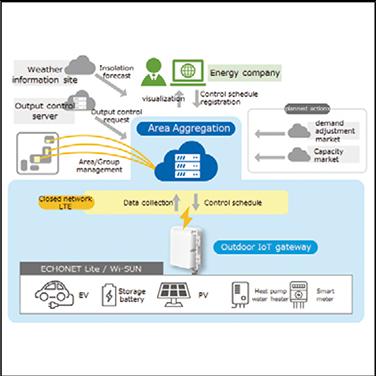
2 MB
It is very important to understand the current that flows in a polymer material when a voltage is applied to it because it reflects the physical phenomena that occur in the material. To measure and analyze the phenomena, we have been studying the direct current integrated charge (Q(t)) method in which integrated currents are measured and analyzed as the amount of charge. Here, the ratio of the charge immediately after the application of square wave voltage Q(0) and the charge tm after the application of voltage Q(tm) is introduced as the charge ratio Rc=Q(tm)/Q(0). The physical meaning of Rc is discussed, and it is shown that Rc can be expressed by a simple equation between the relaxation time of the material and the measured time of the material in an ideal state of electrical conduction. These relations were used to analyze the conductive state of cross-linked polyethylene.
1.9 MB
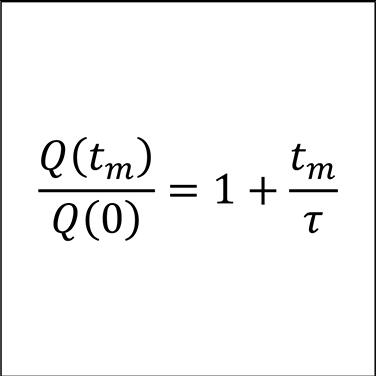
1.9 MB
The reduction of greenhouse gases has become an urgent issue globally, and thus the introduction of offshore wind power generation is progressing. A higher voltage requirement (at 66 kV-class) for submarine cables is due to increased power output from wind turbines and structural changes to the wet design that omits the water-impervious layer to improve manufacturability, cost, and workability. However, removing the water-impervious layer increases the risk of breakdowns due to insulation deterioration namely “water trees.” A study has been carried out on water tree retardant insulation and it has been confirmed that the new submarine cables meet the standard (CIGRE TB722) established in 2018 even with the omission of the water impervious layer. Considerations were made for a water tree retardant insulation that can be used under high voltage exceeding 66 kV-class in order to cope with long-term operation and higher power output from wind turbines in the future. This development will contribute to the promotion of offshore wind power generation.
1.3 MB
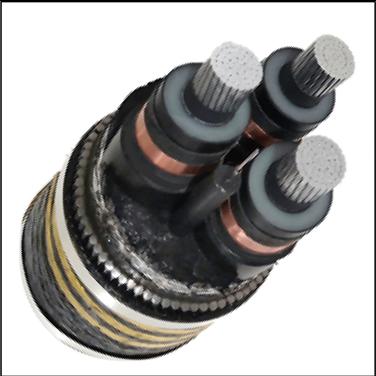
1.3 MB
The cross-linked polyethylene (XLPE) cable has been used for DC transmission lines. We have been developing the DC XLPE cable for a few decades, and proved its quality and reliability through the research and development process. In 2012, we delivered the cable to Electric Power Development Co., Ltd. for its DC 250 kV transmission project, making it the world's highest voltage DC XLPE cable at that time and the first one to be applied to a line commute converter system. Following the project, we successfully completed two new projects: the 250 kV transmission project of Hokkaido Electric Power Co., Inc. and the 400 kV transmission project of NEMO Link Ltd. Our DC XLPE cable has an allowable continuous conductor temperature of 90 degrees Celsius, which is equivalent to the conventional AC XLPE cable, and withstands polarity reversal of voltage. This cable will meet the various needs of DC transmission that are expected to increase in the future.
2.9 MB
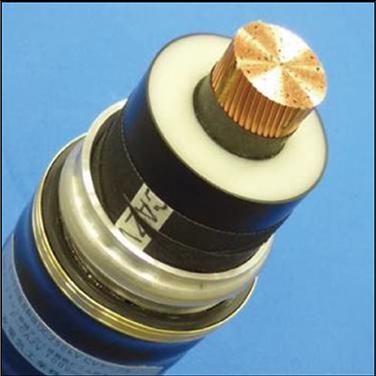
2.9 MB
Stable electric power supply is vital for today’s society. However, line faults still occur because of lightning strikes or other causes. Line faults must be located and repaired as quickly as possible. In particular, in the case of line faults where overhead and underground transmission lines are connected, recovery measures differ by location. Thus, locating the line fault and determining whether the line fault is on the overhead or underground transmission lines is critical for early recovery. We have developed the Fault Sector System that identify line faults based on the information from current sensors installed on overhead ground wires and underground power cables. This system has been fully implemented in electric power companies. This paper reports on the outline of the system.
3.4 MB
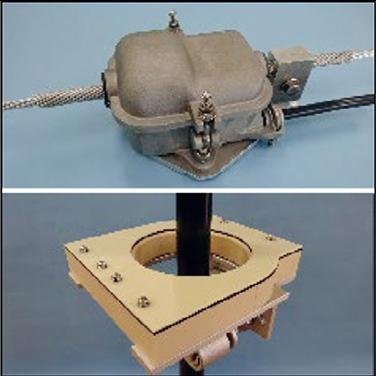
3.4 MB
In the maintenance of underground transmission lines, there is a need to shift from time-based maintenance, where maintenance is performed manually and periodically, to more advanced condition-based maintenance, where maintenance is performed efficiently when necessary, through the promotion of digital transformation using IoT and AI to achieve smart maintenance. One of the challenges in realizing IoT has been the difficulty in developing an inexpensive, safe, and reliable communication method to acquire sensor information about cables installed in conduits, which account for the majority of underground power transmission facilities. This paper describes the development of a system that collects sensor information and camera images using a 66-kV XLPE cable installed in a conduit manhole, in collaboration with TEPCO Power Grid, Inc.
2.2 MB
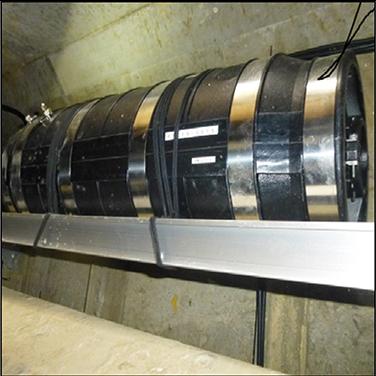
2.2 MB
The span length of an overhead transmission line crossing a strait can exceed 1000 m. In order to suppress the sag of the line, higher strength conductors are required than those used for the wland part. High-strength thermal-resistant aluminum alloy wires with a conductivity of 55% IACS are used for conductors passing through such spans, but their conductivity is lower than that of the wires used in the land part (60% IACS), which limits the transmission capacity. This time, in collaboration with J-Power Transmission Network Co., Ltd., we have developed a new type of high-strength thermal-resistant aluminum wire with an improved conductivity of 58% IACS. This paper reports on the development of technology and examples of new conductor design.
1.3 MB
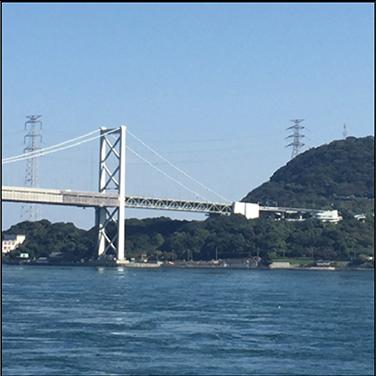
1.3 MB
Nissin Electric Co.,Ltd. has developed a technology that uses artificial intelligence to predict the chemical oxygen demand (COD), total nitrogen content (TN), and total phosphorus content (TP) in discharged water two hours after measurement, based on the past measurement data accumulated in the monitoring and control equipment of sewage treatment plants. The technology enables maintenance staff to change the operation of sewage treatment before the water quality deteriorates. This prevents the deterioration of the water quality without effort.
1.7 MB
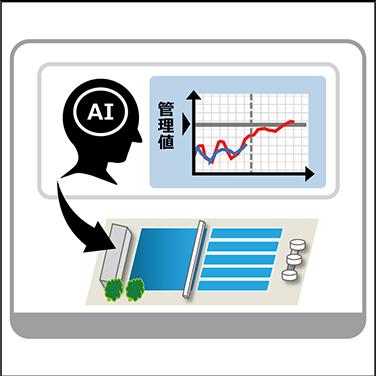
1.7 MB
Many motor vehicle manufacturers around the world are shifting from the vehicle sales business to the mobility service business. Participating in the connected business area, the Information Network R&D Center is developing a prototype solution for managing and analyzing in-vehicle devices, in-vehicle software, and in-vehicle sensor data together with the Systems & Electronics Division, CAS-EV Development Promotion Division, and AutoNetworks Technologies, Ltd. This paper introduces our efforts in commercializing fleet management systems for connected vehicle in the future.
2 MB
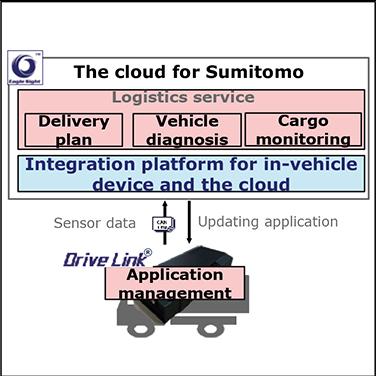
2 MB
Traffic congestion occurs at intersections with fixed time signal control without vehicle detection sensors. This is partly because the signal control parameters have failed to respond to changes in traffic demand. Therefore, we have developed a technique to detect and analyze congested intersections where the situation will be improved by retiming the signal control parameters. Using this technique, we confirmed that it is possible to identify congested intersections without vehicle detection sensors and analyze traffic conditions.
2.5 MB
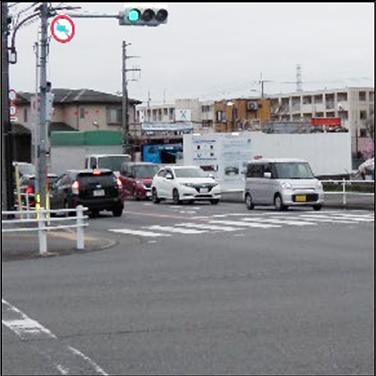
2.5 MB
With the launch of 5G services and AI applications, the amount of data flowing into networks is increasing. While network devices are required to have higher bandwidth, they are also required to be smaller and denser due to limited installation space in urban areas. We have developed a small 200G OTN optical transmission device to improve the accommodation efficiency. This device uses digital coherent optics to achieve long-distance and high-density transmission through wavelength multiplexing. This paper reports the transmission distance and the traffic restoration time in line protection using the device.
1.7 MB
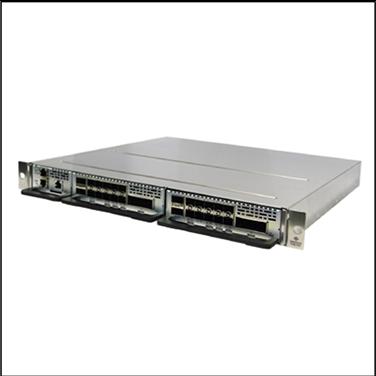
1.7 MB
This paper describes the structure, characteristics, and workability of the small-diameter 6912-fiber-count cable with 200 μm Freeform Ribbon fibers for data center applications. In the 200 μm Freeform Ribbon, fibers meet and split out in turns in a longitudinal and transverse direction, thus allowing high fiber density and mass fusion splicing. Having a non-preferential bend axis, the cable can easily be installed in space-constrained areas. By optimizing the structure and improving the micro-bend resistance of the fiber, we have realized a reduction of the cable cross-sectional area by about 34% compared to the conventional cables. Furthermore, while the conventional cable was pulled into a 2-inch pipeline, the small diameter 6912-fiber-count cable can be applied to a 1.5-inch pipeline, with the same pull-in tension as before.
3.5 MB
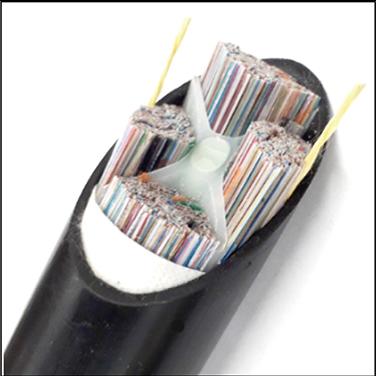
3.5 MB
Three types of individual core pump multicore erbium-doped optical fiber amplifiers with different core coupling have been demonstrated. These amplifiers showed better power consumption efficiency, such as 24% for a coupled 4-core optical fiber amplifier. Crosstalk is an important parameter in uncoupled multicore optical fiber transmission. The crosstalk of the uncoupled 4-core optical fiber amplifier is -43 dB, which is comparable to the lowest crosstalk in previously reported multicore optical fiber amplifiers. The mode-dependent loss, an important parameter in coupled multicore optical fiber transmission, corresponds to the core-dependent gain of uncoupled multicore optical fiber amplifiers and weakly coupled optical fiber amplifiers. The core-dependent gain of the weakly coupled 7-core optical amplifier is 0.52 dB, which is comparable to the smallest mode-dependent loss in previously reported multicore optical fiber amplifiers.
1.7 MB

1.7 MB
To address the needs for increasing data traffic resulting from the widespread use of advanced mobile terminals and the diversification of internet-based services, over 100-Gbit/s optical transceivers have been used in optical communication systems of data centers. Furthermore, there has been a strong demand for extended reach connection between data centers. We have developed a new compact receiver with a semiconductor optical amplifier for 40 km/80 km transmission. This paper describes the design and typical characteristics of the new optical receiver.
1.1 MB

1.1 MB
Optical receivers with intensity-modulation direct detection strongly require ultra-high-speed and high-responsivity performance to 100 GBaud-class toward the next-generation 800 Gbit/s data center networks. This paper demonstrates wide-bandwidth and high-responsivity performance of the InP-based waveguide photodetector integrated with the spot size converter having no polarization dependence. We also introduce the waveguide avalanche photodiodes.
1.6 MB

1.6 MB
Exotic alloys, such as nickel alloys, cobalt alloys, and titanium alloys, are widely used for equipment and parts in the aircraft and automotive industries due to their superior heat and corrosion resistance. There has been a growing demand for the machining tools for these alloys. We released the AC5015S and AC5025S for exotic alloy turning, which use the new physical vapor deposition (PVD) coating technology. Meanwhile, there is a strong need for cutting tools that enable high-efficiency machining. To satisfy these demands, we have developed a new exotic alloy turning carbide grade, AC5005S, which shows excellent wear resistance, plastic deformation resistance, and fracture resistance in high efficient machining. Together with the existing AC5000S series, the new AC5005S will reduce machining costs in a wide range of exotic alloys turning operation.
2.3 MB

2.3 MB
Analysis of the structure and composition of materials is essential for product development and quality improvement. The objects of analysis may include semiconductor substrates, plating, and resin surface finishes, specifically the depth profile of chemical species near the surface, and many other determinants of product characteristics. Nondestructive evaluation of depth profiles for individual chemical species in unknown samples is difficult with existing analytical methods. Thus, to meet this need, we have developed a new data analysis technique for angle-resolved X-ray photoelectron spectroscopy (ARXPS), dubbed the maximum smoothness method (MSM). In combination with obtaining depth information using the three XPS systems available to our company, MSM analysis enables nondestructive evaluation of profiles at wide depth ranges. Here, we describe MSM analysis using the three XPS systems and nondestructive depth profile evaluation for a wide range of products.
2.5 MB

2.5 MB
In recent years, the electrification of automobile components/parts has been progressing with the aim of shifting to electric vehicles to realize a decarbonized society. Electrification will expand the use of by-wire control, which allows devices to be controlled by electrical signals; however, a control failure occurs if the vehicle power source, such as a lead-acid battery, becomes inoperative. Sumitomo Wiring Systems, Ltd. and AutoNetworks Technologies, Ltd. of the Sumitomo Electric Group have developed an integrated x-by-wire backup battery designed for uninterrupted by-wire control of more than one device even in the event of a vehicle power failure. The product was adopted by Toyota Motor Corporation for their Lexus NX launched in 2021.
264 KB
In recent years, there has been an increase in data processing capacity due to the widespread use of high-per-formance PCs and automatic driving systems and the communication of high-quality video data by smartphones and other devices. Therefore, printed circuit boards (PCBs) used in these products are required to be more heat resis-tant and durable than ever before. To improve heat resis-tance and durability, there has been progress in improve-ment and increase in the content of heat-resistant and heat-dissipating fillers, super-multilayering of boards, and increase in the thickness of boards, all of which make it more difficult to drill holes in boards. Specifically, it leads to increased drill wear and consequent degradation of hole position accuracy, resulting in decreased board reliability due to degraded hole accuracy and hole inner wall quality.
0.8 MB
In recent years, serious accidents caused by wrong-way driving on expressways have become a problem. Expressway administrators have taken measures to prevent vehicles from running the wrong way particularly at entrances and exits, but no effective measures have been taken on the main lanes. We have developed software that detects wrong-way driving vehicles using the loop-type vehicle detectors already installed on expressways. Further, we have developed a system that notifies the expressway control center when a wrong-way driving vehicle is detected. In this paper, we present the false detection suppression algorism that has been field tested to improve accuracy, and report on the results of accuracy evaluation of the detection system.
1.3 MB
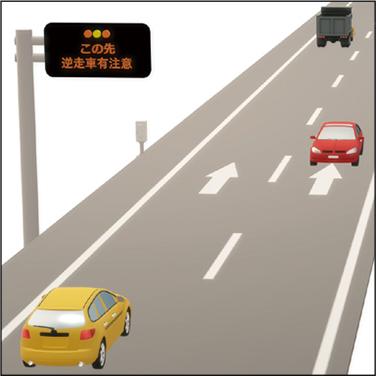
1.3 MB
Due to the rapid growth of internet traffic, the transmission capacity of optical coherent communication is about to reach 800 Gbit/s. Photodetectors for coherent receivers are required to have three key features: wide frequency bandwidth to support 100 GBaud operations, high responsivity to mitigate the power consumption of local oscillators, and multifunctional integration to reduce footprint and cost. We have developed a wide-bandwidth and high-sensitivity InP-based optical mixer-integrated photodetector that can be installed in an 800 Gbit/s coherent receiver, and a multifunctional integrated photodetector that enables the downsizing and cost reduction of coherent receivers.
1.5 MB
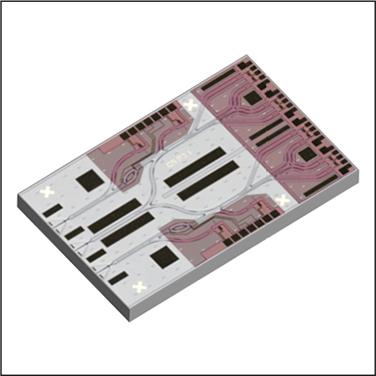
1.5 MB
The rapid growth of optical network traffic has dramatically increased the demands for high-density optical interconnects in data centers. To realize high-density multi-channel optical connections with easy handling, single-fiber connectors with multi-core fibers (MCFs) are expected. In this paper, we present a new type of LC-interface MCF connector. The connector has passed the Telcordia GR-326-CORE reliability test and achieved low insertion loss compatible with IEC 61753-1 Grade B for low-loss SMF connectors.
3.1 MB
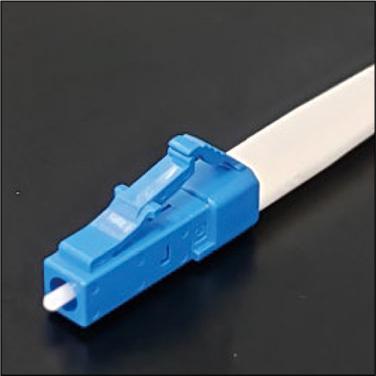
3.1 MB
We have developed “PureAdvance,” a low-loss and low-nonlinearity pure silica core fiber complying with ITU-T G.654.E, and started supplying it for terrestrial long-haul networks. The excellent practicality of PureAdvance, including reliable terrestrial cabling, low splice loss, and stable Raman amplification, have been demonstrated for actual deployment as terrestrial links. Transmission systems using PureAdvance exhibit higher transmission performance than those with SSMF or NZDSF, making PureAdvance ideal as a transmission medium to support long-haul, high-capacity terrestrial applications including telecom trunk lines, datacenter interconnection, and transmission lines between submarine landing stations and datacenters.
1 MB
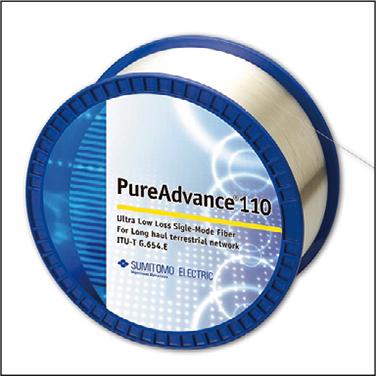
1 MB
With the ever-increasing demand for reducing the environmental impact, there is a need for overhead transmission lines that can reduce transmission loss. We have been working to improve the conductivity of aluminum alloys for overhead transmission lines. This time, by improving the alloy composition and processing methods, we have developed a new thermal-resistant aluminum alloy wire with an allowable continuous operating temperature of 150°C and high conductivity of 61%IACS. In this paper, we introduce the development of the aluminum alloy wire and the characteristics of overhead transmission lines using the new wire.
2 MB
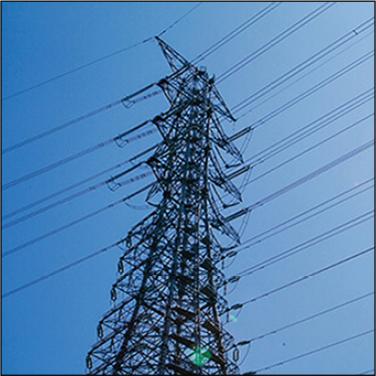
2 MB
With the expansion of the use of renewable energy, it is necessary to construct not only AC distribution systems that connect renewable energy power plants to the existing grid but also long-distance large-capacity DC transmission lines. The AC cable systems are prone to various problems such as AC harmonic resonance and current zero missing, which require designs based on power system simulation. The large-scale DC transmission lines are expected to play an important role as multi-terminal transmission systems in the future, and their electrical system design and submarine route design require advanced cable technology. This paper reports on our new cable system design methods for AC distribution lines and DC transmission lines that contribute to the increasing use of renewable energy.
3.3 MB

3.3 MB
The ITER project is being promoted as an international megaproject to scientifically and technically demonstrate the feasibility of fusion energy, which is one of the most promising candidates for achieving a decarbonized society. Among the components of ITER, tungsten (W) is used for a divertor, which is exposed to ultra-high temperatures above 2000°C. For stable operation of ITER, W is required to exhibit excellent thermal shock resistance under a high-temperature heating/cooling cycle. In this study, we have newly developed a W with an improved thermal shock resistance by suppressing the grain growth due to high temperature. Using the developed W, monoblocks were fabricated for small-scale mock-ups and plasma facing unit (PFU) prototypes, and their performance was evaluated by high heat flux test (HHFT) simulating a fusion reactor. HHFT results showed that no cracks occurred even under severe conditions. In particular, the evaluation results of the prototype greatly exceeded the requirements of ITER, and the developed W was certified as “unbreakable tungsten” for the first time in the world.
3.4 MB

3.4 MB
High-performance F-theta (Fθ) lenses are applied to CO2 laser drilling machines of printed wiring boards to drill micro-via holes with high precision, high speed, and high throughput. They are generally made of zinc selenide (ZnSe) or germanium (Ge), but Ge is more temperature sensitive and has higher absorption than ZnSe. Therefore, as laser power increases, deterioration in the stability and quality of laser drilling tends to occur. Taking advantage of our strength as a comprehensive optics manufacturer that produces a complete range of products from ZnSe materials to finished laser optics products, we have developed a new F-theta lens using ZnSe for all lens elements and a cover window with a diamond-like carbon (DLC) coating. Here, we provide the technical outline of the development
2.9 MB
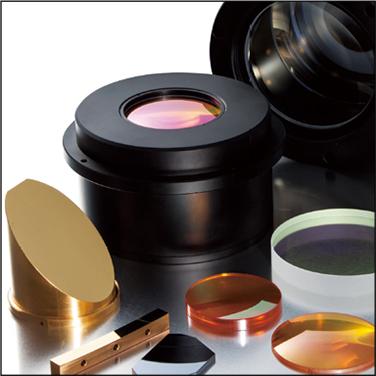
2.9 MB
In steel machining, particularly in the automotive industry, various efforts are being made to reduce the environmental impact and to use resources efficiently. We released the AC8000P series for steel turning in 2016, which uses the new chemical vapor deposition (CVD) coating technology “Absotech Platinum,” and are continuously expanding the product lineup. Meanwhile, there is a strong need for cutting tools that demonstrate a long tool life and stable performance. To satisfy these demands, we have developed a new steel turning carbide grade, AC8020P, which shows excellent wear resistance and chipping resistance in high-efficiency machining. Together with the existing AC8000P series, the new AC8020P will reduce machining costs in a wide range of steel turning operations.
2.8 MB

2.8 MB
We have been developing the iDS coating system series with improved productivity and film performance since 2012 by reviewing the conventional coating systems from the basics. The iDS series has increased compatibility with a variety of applications by expanding the lineup of chamber sizes. This time, we have developed and launched iDS-720, which is suitable for mass production of tools and manufacturing of large punches and dies.
3.3 MB
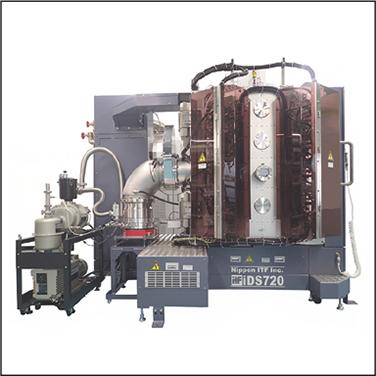
3.3 MB
We have been focusing on carbon nanotubes (CNTs) as a material for next-generation electric wires that are lighter and more conductive than copper and aluminum wires. CNT single fiber has a greater conductivity than copper and the highest tensile strength of any known material. Aiming at the practical application of CNT electric wires, we have discovered the effectiveness of applying tensile stress to CNTs during the growing process from iron catalysts. In addition, at the University of Tsukuba, where a joint research was conducted, the growth of centimeter-class single fibers was observed in high-speed airflow, suggesting that stress applied during the growth contributes to the lengthening of CNTs. Using this principle as a basis for the growth method, we have created a metric-class CNT yarn that aggregates these long CNT single fibers. The new yarn has several times the strength of the conventional CNT yarn and exceeds the tensile strength of commercially available carbon fibers. This yarn will not only replace carbon fibers but also create new applications that have never been seen before.
3.4 MB
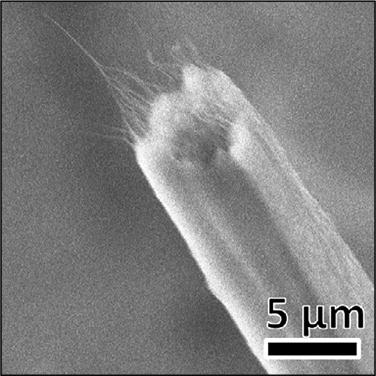
3.4 MB
Magnesium alloys have the lowest density of all practical metals. Our AZ91 magnesium alloy sheets are used for thin and light laptop computer bodies due to their superior strength and corrosion resistance in addition to their lightweight. In the electronics industry, 5G devices are being implemented to take advantage of IoT or AI, which can cause heat generation in electronic devices. One of the solutions to this is to improve the thermal conductivity and heat dissipation of the device bodies. In this paper, we introduce a new magnesium alloy sheet, SMJ140, having thermal conductivity in a range from 120 to 140 W/(m·K). These values are doubly higher than that of the AZ91 sheet. The heat dissipation of the SMJ140 is similar to that of a commercial aluminum alloy sheet A5052.
3.3 MB

3.3 MB
In 2030, Japan will enter a super-aging society where one in three people will be 65 years old or older. In a social environment, where all kinds of services are changing with the rapid digitization, elderly people with low IT (information technology) literacy are isolated from society. In addition, the aging of supporters who take care of the elderly in the community and the shortage of those supporters have become major social issues. In addition, the prolonged pandemic of COVID-19 has led to a new problem of the elderly becoming isolated due to the lack of face-to-face contact. In the field of welfare, where people support people, the need for IT-based non-contact monitoring systems is expected to grow further in the future. This paper introduces the joint research that Nissin Systems Co., Ltd. has conducted with the Kurobe City Council of Social Welfare in Toyama Prefecture since 2019, based on the company’s concept of “Anyone can easily connect with the community.” The authors present an ICT (Information and Communication Technology) terminal that was developed in the research project for the elderly at home and the support services using the terminal.
2.4 MB
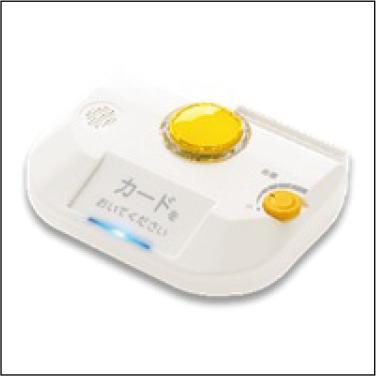
2.4 MB
The properties of electric wires made of copper and aluminum are largely affected by the temperature and time of heat treatment. In order to optimize heat-treatment conditions, we have developed an in-situ measurement technique that uses synchrotron X-rays, which have high transparency and intensity. While this technique is expected to reduce measurement and analysis time, its application to actual operation has been limited due to the opportunities for measurement and the time required for data analysis. In this paper, we report new environmental control systems at our synchrotron beamline in SAGA-LS and a newly developed program for the automatic analysis of large amounts of data. We have confirmed that the in-situ measurement of copper and copper alloys is possible and the difference in softening behavior can be analyzed in a short time.
1.9 MB

1.9 MB
Conventionally, halogen lamps have been used for automotive headlamps and rear lamps. Recently, however, LED lamps have been increasingly used due to their long service life, low power consumption, and quickness to attain maximum brightness. Regarding the internal structure of in-vehicle LED lamps, an LED lamp and a driver module are built into the housing, as shown in Fig. 1. Automotive low-voltage electric wires are used for the wiring. Electric wires used in LED lamps must have anti-fogging characteristics to prevent fogging of the glass over long-term use. However, the electric wire covering causes fogging of the glass due to outgassing after a long period of use. Thus, the electric wire covering used for wiring in LED lamps must have low outgassing properties. This paper introduces our newly developed insulation material with low outgassing properties derived from our proprietary blending technology.
273 KB
Electric vehicles (hereinafter “EVs”) and quick chargers have come into widespread use around the world toward achieving a decarbonized society. Sumitomo Electric Industries, Ltd. is supplying EV charge Cable with Connector “CHAdeMO conformity” for Quick Charger in the global market to connect EVs with quick chargers. SEVD-11 and SEVD-02, which are supplied by Sumitomo Electric, are shown in Photo 1, and their basic characteristics are shown in Table 1.
0.6 MB
Since January 2020, we have seen the spread of the novel pneumonia caused by the novel coronavirus. Comparisons of the disease with the Spanish flu epidemic, which took place a century ago, has been on everybody’s lips. The 1918 influenza pandemic is said to have led to more than 40 million deaths, accounting for 2% of the then world population of two billion. Although it is known as the Spanish flu, it is said that the source of infection was U.S. soldiers entering World War I bringing the disease from the United States to Europe. In the first-ever world war, many people, including soldiers, moved and came into contact with other people on a global scale. Probably due to this, infectious diseases could spread very quickly. It is said that the death toll of World War I was 15 million in total, including both military personnel and civilians. Consequently, the number of victims of the Spanish flu was far greater than those of World War I. The world then faced truly difficult times.
0.5 MB
In recent years, increased demand in the aircraft market has led to the need for higher production efficiency of aircraft parts. Heatresistant alloys and titanium alloys, widely employed for aircraft engines and structural members, are classified as difficult-tomachine materials and require cutting tools with high efficiency and long service life. In order to meet these user needs, Sumitomo Electric Industries, Ltd. has developed next-generation cemented carbide tools specialized in machining heat-resistant alloys and titanium alloys. For heat-resistant alloys, a new cemented carbide material with excellent high-temperature properties suppresses plastic deformation and wear even in high-speed, high-feed machining, enabling highly efficient machining. For titanium alloys, a newly developed film coating significantly reduces the reaction with titanium alloys, suppressing adhesion to the tool and extending the service life.
3.5 MB
The cubic boron nitride (cBN) cutting tool “SUMIBORON” is mainly composed of cBN particles that have low activity with iron, and has high hardness and high thermal conductivity next to diamond, contributing to productivity improvement and cost reduction in the finishing of difficult-to-cut ferrous materials. In the past decade, the automotive industry has strongly driven the shift to hybrid electric vehicles and electric vehicles, which requires higher precision and higher efficiency in machining of sintered ferrous alloys and cutting tools with stable performance and longer tool life for cast iron. The authors have successfully developed a new grade “SUMIBORON BN7115” for finishing these materials. BN7115 employs a high-purity cBN particles and new binder consisting of Co-Al-Cr-WC to improve the bonding strength between cBN particles, thereby achieving good resistance to wear and breakage. BN7115 is expected to solve problems such as a degradation of the cuting surface of sintered ferrous alloys caused by the dropout of cBN particles and chipping of edges caused by thermal shock during cutting cast iron.
2.3 MB
SUMIBORON BINDERLESS is a polycrystalline cubic boron nitride (CBN) that directly binds nanometer- or sub-micron-level cBN particles without binder materials (Binderless CBN: BL-CBN). BL-CBN is harder or has better thermal conductivity than conventional CBN. Therefore, it offers higher efficiency and longer tool life in the machining of difficult-to-cut materials, such as cobalt-chromium alloys, titanium alloys, nickel-based heat-resistant alloys, and hardened steel for use in the aircraft, mold, and medical industries.
2.1 MB
The progress of digitalization increases the need for automated and unmanned cutting process. Sensor-equipped cutting tools are expected to be one of the measuring instruments that help visualize and monitor cutting operations because they are positioned closer to the cutting point than conventional measuring instruments, enabling more precise measurement. Sumitomo Electric Industries, Ltd. has promoted research and development on turning tools and milling tools that are equipped with sensors, wireless communication devices, and electric power sources. This paper presents feasibility studies on the monitoring of cutting operations with our sensor-equipped turning tool and milling tool.
1.5 MB
Ceramic coatings adopted to cutting tools include chemical vapor deposition (CVD) coating and physical vapor deposition (PVD) coating. The CVD coating has excellent wear resistance and heat resistance, but is inferior in toughness to the PVD coating. By controlling the coating structure on the nanometer order using the CVD method, we have established a new CVD coating technology that ensures the toughness of PVD coatings while maintaining the wear resistance and heat resistance of conventional CVD coatings, and enabled its mass production. This paper reports on its unique structure, excellent physical properties, and outstanding cutting performance when applied to cutting tools.
1.7 MB
In automobile-related industries, the use of aluminum alloy and other nonferrous metal parts has been increasing to reduce the weight of vehicles for improved fuel efficiency and to respond to the increasing production of hybrid vehicles, electric vehicles, and fuel cell vehicles. To increase the productivity in machining of these parts, cutting tools are required to be easy to handle and highly effective in chip control, for reducing machining time and no-machining time. Furthermore, there is also a growing demand for lighter cutting tools suitable for compact machining equipment to improve the productivity per unit area of machining equipment. To meet these demands, Sumitomo Electric Industries, Ltd. has developed a polycrystalline sintered diamond (PCD) cutter, ALNEX (ANX Series), for high-efficiency machining of aluminum alloys. This paper describes the features of the new cutter.
1.8 MB
Nickel-based heat-resistant alloys, widely used for aircraft jet engines and power plant gas turbines, are difficult-to-cut materials causing short tool life in the grinding process. To meet the market needs for extended tool life and increased machining efficiency, we have developed an innovative electroplated cubic boron nitride (CBN) grinding wheel, CB Master. CB Master demonstrated 5 times longer tool life in grinding jet engine parts, and 1.5 times higher efficiency in processing gas turbine parts than conventional wheels.
1.1 MB
The advancement of electric mobility as well as improvement in the efficiency of home appliance and industrial equipment have led to a need for higher performance motors. Axial gap motors (AGMs) are attracting attention as a motor that meets the need because of their low profile and high torque compared to radial gap motors. We have demonstrated the high torque and high efficiency of AGMs with soft magnetic powder composites (SMPCs) and started mass production of SMPCs for AGMs. In order to contribute to the further adoption of AGMs, we have developed a low-loss SMPC, pole-shoe teeth core, and thin-insulation-coated SMPC.
1.8 MB
With the increasing performance of variable valve timing (VVT) systems, there is a growing demand for powder metallurgical parts with more complicated geometries. On the other hand, high productivity is also required in the manufacturing process to respond to the increasing demand for VVT parts. Accordingly, we have applied green machining, which achieves both high formability and productivity. This technology allows green compacts to be machined “before sintering,” which makes it possible to process parts about nine times faster than conventional post-sintering machining and thus enables volume production.
1.2 MB
In an advanced information society where IoT and drones will widespread and in the near future where multitasking robots will be active due to the declining birthrate and aging population, there will be a greater need for stronger and lighter communication wires more than ever. The Special Steel Wire Division has developed thick copper covered (TCC) wire, which is a conductor composite material in which a high-strength steel wire is coated with a thick copper layer. TCC wire has higher strength than other copper alloy and composite material wires, and is particularly superior in flexibility. This paper reports on the characteristics of TCC wire.
1.2 MB
SmART Strand is a prestressing steel strand equipped with an optical fiber to accurately measure the tension along the entire length of the prestressing steel cable. For prestressed concrete structures and ground anchors, it is important to ensure that the required tension of prestressing steel cable is provided and maintained. In order to directly evaluate the tension of prestressing cable during the installation and use, a new measuring method using SmART Strand has been developed. SmART Strand can be used for the maintenance of prestressed concrete structures and ground anchors, as well as their prestressing management.
2.1 MB
We have developed a new aluminum material that has electrical conductivity and thermal conductivity close to those of pure aluminum, while maintaining strength even at high temperatures. As international regulations on carbon neutrality and CO2 emissions are being tightened at an accelerating pace, and emphasis is being placed on thermal management of electric devices and communication devices that contain high power semiconductors, aluminum materials are expected to be an alternative solution to copper-based materials for their light weight, high electrical conductivity, and high thermal conductivity. However, their application range is limited due to the decrease in strength at high temperatures above 150°C. Using powdered aluminum obtained by a quenching solidification method as a raw material, we have succeeded in developing a new aluminum material that maintains strength up to a high temperature of around 250°C, while also maintaining electrical conductivity and thermal conductivity close to those of pure aluminum. We are confident that this new material can meet the needs for lightweight conductive parts and heat dissipation products.
1.9 MB
Synthetic diamonds have been widely used in industrial applications due to their high purity and low crystal defects compared to natural diamonds. It is also possible to endow specific electrical and magnetic properties by doping with different types of elements, and is expected to be applied in various fields such as sensing and measurement. We have succeeded in producing a diamond with the world's highest level of purity and lowest level of defects by using our unique high-pressure and hightemperature method. Furthermore, we have created a highly sensitive sensor with the nitrogen vacancy (NV-) center by electron beam processing and ion implantation in cooperation with Nissin Electric Co., Ltd. This paper introduces the high quality diamond synthesized for the NV sensor and its applicability.
1.5 MB
Transportation management systems are one of the business support tools for logistics companies. Conventional systems require manual operation to change the route plan after the vehicle is dispatched, considering its current position and the time of visit to the customer. Therefore, we have developed a vehicle route planning engine and application programming interface (API) that enable real-time modification of the route plan, such as adding new tasks, even after the vehicle is dispatched. In addition, we have developed an automatic vehicle management system that enables users to check the past dispatch results and current task progress. This paper introduces the functions and performance of these systems.
1.7 MB
For reducing traffic accidents and congestion, the need for infrastructure sensors is increasing worldwide. In order to cover a large area, multiple infrared sensors are deployed and work together to detect and track vehicles. We have developed a system and detection algorithm to integrate multiple infrared millimeter-wave radars. In this paper, we present the features of the system and the results of field tests.
1.5 MB
A thermopile, which is a type of cooling-free infrared sensor composed of thermoelectric materials, and detects infrared rays without using electric power. For making a high-performance sensor, we developed a germanium-silicon (Si-Ge)-based thin-film thermoelectric material. The thermal conductivity of the Si-Ge thermoelectric material was reduced to 1 Wm-1K-1 due to the artificial nano-structure in the materials. In addition, its Seebeck coefficient was effectively increased by co-doping. This paper demonstrates that the thermopile constructed using the developed nanostructured Si-Ge material successfully detects infrared rays, and a gases detection system using the thermopile detects methane in the ambient air.
1.2 MB
A large number of high-pressure fluid-filled (HPFF) and high-pressure gas-filled (HPGF) pipe-type cables had formerly been installed in U.S. power transmission lines since 1930s. As the pipe-type cables age, corrosion of the steel pipes and leakage of the dielectric fluid have become a problem. Using technology patented in the U.S. and Japan, Sumitomo Electric Industries, Ltd. designed, delivered, and installed its new high-voltage cross-linked polyethylene (XLPE) triplex cable and its accessories for the existing transmission lines.
4.4 MB
We supply heaters for heating semiconductor wafers in the single-wafer film deposition processes. Semiconductor wafers are indispensable for 5th generation communications, artificial intelligence, automatic driving, and large-capacity data storage in data centers. The refinement of semiconductor circuits requires the formation of uniform films on wafers, and this demands uniform temperature distribution in the wafers. Conventionally, heaters have been divided and arranged in concentric zones, but this does not cover the subtle unevenness of circumferential temperature distribution caused by various factors in the device environment. To overcome this challenge, we have developed a multi-zone heater and a controller capable of high-accuracy control.
2.2 MB
Recently, Communication traffic has been increasing rapidly with the development of cloud computing, video distribution, 5G support, and other IT services. In association with this, there has been an increase in demand for smalldiameter, high-fiber-density optical cables in order to overcome physical restrictions of space in ducts. In Europe, North America, and other regions, air-blown optical cables are widely used for FTTH since they make it possible to extend existing conduits (microducts) without additional roadwork, thereby enabling economical network construction. A small-diameter duct used for installing optical cables by blowing compressed air is called a microduct. With the recent increase in transmission capacity and the popularization of FTTH, the need is growing for densely installing a large number of optical fibers into microducts. Sumitomo Electric Industries, Ltd. has developed and launched a 432 or fewer count optical fiber cable suitable for air-blowing installation. The new optical fiber cable comprises an intermittent 12-fiber ribbon core made up of 200 μm optical fibers (“200 μm 12-fiber Freeform Ribbon”) that are thinner than conventional optical fibers with an outer diameter of 250 μm.
0.6 MB
With the recent popularity of telework, as well as the development of remote medical care and cloud services, data communication volume is increasing rapidly. To cope with this situation, there is a need for the construction of high-speed, large-capacity, low-latency communication networks using optical fibers. At the same time, the companies responsible for network construction have high expectations for a drastic improvement in work efficiency to efficiently manage the increased construction work. In order to meet these expectations, Sumitomo Electric Industries, Ltd. thoroughly pursued the ultimate in workability for the previous fusion splicer, TYPE-201e, without changing its features: compactness and lightweight. As a result, the company has developed a new ultracompact optical fiber fusion splicer, TYPE-201+ .
0.5 MB
The author received the Yahagi Memorial Award 2019 from the Technical Committee on Dielectrics and Electrical Insulation, thevInstitute of Electrical Engineering of Japan. In this paper, memories of the late Prof. Kichinosuke Yahagi and his teachings arevdescribed by a former student. The teachings of Prof. K. Yahagi can be summarized as “Seek the Truth.” The author pursued avnumber of truths according to said teachings in his research and development endeavors. The development of cross-linkedvpolyethylene insulated DC power cables rated for the world’s highest voltage was brought about as one of the results of thevteachings.
3.4 MB
Optical fiber communication started to become practical use in 1970, when an optical fiber with a transmission loss of 20 dB/kmvand a laser diode continuously emitting at room temperature appeared. Sumitomo Electric Industries, Ltd. has enterprisinglyvdedicated the development and commercialization of optical fibers since the early days. Utilizing the vapor-phase axial depositionvmethod, which has spread worldwide as a preform manufacturing process, we have kept launching high-quality optical fibers andvcables such as ultra-low-loss silica core fibers and ultra-high-density optical cables. This way, we have continued to support thevexpansion of optical fiber networks as one of the indispensable social infrastructure. This paper looks at the evolution of opticalvfiber technology and our efforts in developing optical fibers and cables that would meet the need of the time.
1.1 MB
Electric vehicles and hybrid electric vehicles are in widespread use and these vehicles are all equipped with DC/DC converters forvcharging lead-acid batteries from high-voltage storage batteries. To simplify the installation, DC/DC converters are required to bevsmall. This paper describes a DC/DC converter that has been downsized by 50% compared with conventional ones by increasingvthe switching frequency from 100 kHz to 500 kHz using GaN devices.
1.6 MB
Magnetrons have long been used as transmitting devices for marine radar, however, gallium nitride high-electron-mobilityvtransistors (GaN HEMT) are increasingly adopted due to their long life, high performance, and compliance with radio laws andvregulations. This paper presents our internally-matched X-band GaN HEMT that feature the industry's highest output power of 300vW, targeting a variety of marine radars ranging from small-power radars for pleasure boats to high-power radar for largecommercialvvessels. We also report on a prototype compact solid-state amplifier that has been made to demonstrate thesevtransistors.
1 MB
In recent years, gallium nitride high-electron-mobility transistor (GaN HEMT) amplifiers with high efficiency have been adopted due to the increasing demand for downsized and low-power-consumption base stations. In 5G networks, where further improvement in network capacity and data rates is required, the presence of GaN HEMTs is expected to grow further due to their advantages in broadening the bandwidth of amplifiers. This paper describes the characterization and analysis method for the current source of GaN HEMTs that we are working on to develop the GaN HEMT amplifiers for base stations. We newly adopted a large-signal lowfrequency measurement that enables evaluation under conditions close to the actual radio frequency operation, to explore design guidelines for GaN HEMTs. In addition, we analyzed the effect of gate voltage clipping in class-F and inverse class-F operation, which is known as a method for improving the efficiency of amplifiers by using a large-signal model to figure out the limiting factorvof efficiency.
1.1 MB
A large capacity of the Internet is strongly demanded due to the increase of internet-connected devices and the diversification of internet-based services. To address these needs, we are in a new phase to upgrade the transmission speed of access optical networks from the current mainstream 10G class to 50G class. We have developed a new transimpedance amplifier (TIA) capable of receiving 25.78 Gbit/s burst signals to meet the demand for higher-speed transmission. Using the TIA and avalanche photodiode (APD), we have developed a 25.78 Gbit/s/λ burst-mode receiver, and confirmed its applicability to 50G-EPON optical transceivers for the first time in the world.
1.4 MB
We have developed a wavelength division multiplexing transmission method to efficiently connect radio base stations and antennas with a small number of optical fibers. In the fifth generation (5G) radio access networks, there is demand for a technology that can economically transmit 25G Ethernet signals over up to 40 km by wavelength division multiplexing (WDM). This paper introduces the half-rate transmission method that enables 40 km WDM transmission by dividing 25.8 Gbit/s signals into two channels of 12.9 Gbit/s signals and transmitting them.
1 MB
Silicon carbide (SiC) power devices are promising next-generation devices and their market is growing globally year by year. The quality of SiC epitaxial wafers is particularly important to secure the reliability of large-current power devices used for automotive applications. Basal plane dislocation (BPD) in the SiC epitaxial wafers causes stacking fault expansion, which leads to the fatal degradation of SiC bipolar devices. To suppress the stacking fault expansion, the introduction of highly nitrogen-doped layer called a “recombination-enhancing layer” has been proposed. In this study, we have established a method to evaluate BPD in the recombination-enhancing layer by investigating the receiving filter using photoluminescence imaging, and successfully obtained a 150 mm SiC epitaxial wafer with extremely low BPD density. We also confirmed that BPD and surface defects in the drift layer were simultaneously suppressed, demonstrating the new epitaxial wafer has stable characteristics for large chip devices.
1.4 MB
To ensure the stable operation of utility-scale solar power plants over a long period, it is necessary to improve the inspection and maintenance levels, especially the inspection efficiency of the DC voltage parts, for which visual inspection has been conducted. Sumitomo Electric Industries, Ltd. has developed a system that detects abnormalities in solar panels by analyzing string data with AI. Data on detected abnormalities, including their types and urgency, are reported to the power plant manager via daily emails and used for efficient facility maintenance. Using the system, we also provide diagnostic services suggesting best inspection methods and countermeasures for the abnormalities.
2.4 MB
With the expanding introduction of renewable energy sources and advances in semiconductor and energy storage technologies, direct current (DC) distribution systems that combine renewable energy sources and storage batteries have attracted attention as economical and environment-friendly next-generation power supply systems. These systems are also expected to help improve power system resilience and business continuity planning (BCP). This paper introduces the background of our study and the details of the DC distribution demonstration system built at the Nissin Academy Training Center.
2.1 MB
We have developed a new diamond-like carbon film “HC-DLC," which is produced by vacuum arc deposition and contains hydrogen. With its appropriate hydrogen content, this film obtained extremely low attackability to soft metals without compensating its high wear resistance and seizure resistance in engine oil containing MoDTC. The film demonstrates excellent performance in protecting piston pins that repeatedly slide on soft metals. To meet market needs, the mass production of the film started in the fall of 2019, and now further application to the next-generation high-efficiency engines is under consideration.
1.2 MB
Sumitomo Electric Industries, Ltd. has been engaged in the development of high-performance and long-length Bi2223 hightemperature superconducting wires. These wires and their applied products, such as current leads for magnetic resonance imaging, have been commercialized and well received by the market. This paper describes the recent development and commercialization of Bi2223 wires and typical products incorporating the wires, as well as wire joint technology and high-current conductor technology, which are indispensable for expanding the application of the wires.
2.5 MB
For research and development in material science, it is important to understand the three-dimensional (3D) distributions of chemical species in samples. The effective utilization of 4D big data which contain a lot of information about the 3D distributions is a key factor. This paper demonstrates a new 4D data analysis technique called “two-step multivariate curve resolution (MCR)”. To obtain an intuitive expression of 4D data, we devised a process involving two iterations of MCR with digitization in between. The new technique was applied to the analysis of time-of-flight secondary ion mass spectrometry data derived from a thin-film sample to assist in the interpretation of complex three-dimensional local microstructures. Compared to conventional methods of data presentation, two-step MCR was found to greatly facilitate the clarification and understanding of the 4D analysis data.
1.3 MB
In order to meet the demand for high dimensional accuracy in powder metallurgy products, we have been developing powder simulation techniques to support the design of the production process. Powder simulations provide a macroscopic interpretation of powder behavior by calculating the motion of individual particles that constitute the powder. In this paper, the powder simulation is applied to the milling process of raw powder and the powder feeding process of metal powder. Although the milling efficiency can be predicted from the collision energy of the balls in a ball mill, it is necessary to reproduce the motion of each ball with complicated collision process to predict the collision energy accurately. In this study, we have developed an analysis technique to predict the change of the collision energy when the milling conditions are changed, in order to improve the performance of the milling process. We have also developed an analytical technique to visualize the powder behavior in the powder feeding process to clarify the mechanism of the filling variation in the die.
1.9 MB
"In recent years, there has been an increase in the demand for by-wire technologies for improved safety and convenience. Brake-by-wire and shift-by-wire technologies, which have been widely used, are essential for future selfdriving cars. The market is expected to expand for them in the future. However, as the by-wire-technology controls a device through electrical signals, a control failure occurs if the vehicle power source such as a lead-acid battery becomes out of order . Sumitomo Wiring Systems, Ltd. and AutoNetworks Technologies, Ltd. of the Sumitomo Electric Group have developed an x-by-wire backup battery designed for uninterrupted by-wire control even in the event of a vehicle power failure."
0.8 MB
"Our copper wire manufacturing technologies, which originated from Sumitomo’s copper business, were subsequently applied to electrical wire and cable products. Based on these products, the Sumitomo Electric Group has continuously developed its new technologies and products. Electrical wire and cable manufacturing technologies are divided roughly into conductor technologies and covering material technologies required for insulating wires. Let us take a look at the history of diversification of Sumitomo Electric’s products along with the growth of these technologies."
0.6 MB
As part of its overseas business, Sumitomo Electric Industries, Ltd. has been providing contact wires for the high-speed dedicated freight corridor that is being constructed in India. To enter the Indian contact wire market, it was necessary to satisfy the specifications required by the local customer, such as high conductivity and high tensile strength based on overseas standards. Taking advantage of our accumulated expertise in copper-tin alloys, we achieved the required properties by adjusting the tin and oxygen ratio in material casting and by improving the drawing process of contact wire. This paper introduces our technical development.
1 MB
The air spring is an essential component for improving the comfort of railway vehicles and realizing safe high-speed driving. Due to the growing urban population and increased concern about environmental issues, railways are attracting attention because they have higher transportation efficiency than automobiles and aircraft and contribute to the reduction of CO2 emissions and energy consumption. As the railway network spreads all over the world, air springs with various characteristics are required depending on the route and environment. To respond to such market needs and make proposals in a speedy manner, we are developing innovative design methods based on computer simulation. This time, we have developed a simulation technology that accurately predicts the static and dynamic characteristics of air springs.
1 MB
The electrification of vehicles has been advanced rapidly with the aim of reducing environmental impact. This paper summarizes the transition of motor design technology and its future development trends with a focus on driving motors for electric vehicles as a benchmark. We also report on the current status of our efforts towards the development of rectangular wires that contribute to the improvement of motor performance. In our efforts, we have worked to enhance the insulation performance of the film coating for magnet wires and reduce their size variation.
1.3 MB
Magnet wire is an electrical wire coated with an insulation film. We analyze its constituent elements such as a conductor, insulation film, and the interface between them, in order to improve the quality and performance of the wire. It is increasingly important to develop novel and advanced analysis technologies and use them depending on the purposes of analysis. This paper reports on our unique technology and approach to the analysis of the aforementioned elements.
1.2 MB
With the spread of mobile devices, market needs are increasing for the improved sound quality of small speakers. Self-bonding magnet wires used in the voice coils of small speakers are required to be durable against vibration and to be lightweight for enhanced responsiveness in a high-frequency range. Our copper-clad aluminum wire is resistant to fatigue fracture caused by vibration. The wire comes with various densities and conductivities by changing the composition ratio of the copper coat and aluminum core. This paper reports on the development of the wire that has increased flexibility in coil design and durability for the improved sound quality of small speakers.
1 MB
The composite metal wire is composed of multiple metallic phases and has multiple functions at a relatively low cost. The Sumitomo Electric Group offers a variety of composite metal wire products that are made by cladding and plating. This paper introduces the technologies and application examples of our wires.
1.3 MB
Celmet, the unique porous metal product of Sumitomo Electronic Toyama Co. Ltd., has high gas-diffusivity and high electric conductivity. Celmet is a good candidate for the cathode current collectors of solid oxide fuel cells (SOFCs) that require uniform gas-diffusivity and high electric conductivity. Thus far, we have examined the application of nickel (Ni) Celmet to the collectors, however, the desired output power density has not been obtained due to the decrease in electric conductivity caused by the oxidation of Ni at high temperature of the fuel cells. We have developed new nickel cobalt (NiCo) Celmet that forms conductive ceramics, keeping high electric conductivity at high temperature and highly oxidizing atmosphere. This paper introduces the physical properties of the NiCo Celmet and reports on the performance of an SOFC that uses the new Celmet for its cathodic current collector.
1.2 MB
Heat shrinkable tubing is used for the insulation and mechanical protection of electric wires in fields such as electronics and aircrafts. Among such tubing, dual-wall heat-shrinkable tubing is used for the waterproofing of automotive wiring harnesses at the joints of electric wires. In recent years, with the aim of improving fuel efficiency and reducing vehicle weight for the reduction of CO2 emissions, aluminum wires have been attracting attention as the replacement of conventional copper wires. We have developed a new dual-wall heat-shrinkable tubing for the anti-corrosion protection of aluminum wires at their terminals.
1.2 MB
Fluororesin, represented by polytetrafluoroethylene (PTFE), is an excellent polymer that has the lowest level of friction performance among solids and the highest level of heat resistance, chemical resistance, weather resistance, and electrical properties among resins. In contrast, it has poor wear resistance and hardly adheres to substrates when used as a composite material. Through electron beam irradiation under special conditions, we promoted the cross-linking reaction of fluororesin and developed a new material that features wear resistance improved nearly 1,000 times compared with the conventional material and good adhesion to substrates. This paper investigates the cross-linking state of the new material using solid-state nuclear magnetic resonance, and elucidates its adhesion state to substrates utilizing SPring-8 hard X-rays.
1.2 MB
We have applied cross-linking technology to plastic materials through high-energy electron-beam irradiation to obtain gears with high durability. Sumitomo Electric Fine Polymer’s Teralink cross-linked gears, which use polyamide 66 as their base polymer, exhibit a three-fold improvement in durability in terms of the amount of tooth load that they can withstand compared to gears made of the same base polymer.
0.9 MB
Porous polytetrafluoroethylene (PTFE) membranes were first developed by Sumitomo Electric Industries, Ltd. as “POREFLON.” Thanks to its high chemical and heat resistance, POREFLON has been used for microfiltration in various industrial applications. With advanced technological innovations, Sumitomo Electric has newly developed a nano-porous PTFE membrane “POREFLON NANO” and confirmed its high degassing and gas separation performance.
1 MB
We have developed and marketed a new POREFLON membrane module unit for water treatment. It has a smaller footprint and is more energy saving than conventional products. In addition to the features of the conventional POREFLON hollow fiber membrane such as fouling resistance, high strength, and bending resistance, the module unit features the cassette type module structure, increased effective membrane length, enhanced packing density, and newly developed air diffusers that generate large air bubbles to prevent fouling. In a pilot test for municipal wastewater treatment jointly conducted with Japan Sewage Works Agency and others, we achieved a power consumption per unit of 0.4 kWh/m3 or lower, which was the target point for the popularization of membrane treatment. The module unit passed another several field trials and was currently commercialized. This report introduces the development process, product specifications, and case studies regarding the new membrane module unit.
3.6 MB
Sumitomo Electric Industries, Ltd. has developed an Ethernet access switch for Carrier Ethernet that contributes to the reduction of operation expenditures. We have integrated functions of a fiber optic media converter and a layer-2 aggregator into one Ethernet access switch. This has enabled a power- and space-saving solution compared with conventional device sets. The switch features hitless firmware upgrades, zero touch provisioning, NETCONF, alarm notifications and line test capabilities. At the end of the paper, we report on the experimental results of Streaming Telemetry.
1.2 MB
This paper reviews device design and performance of high-speed vertical cavity surface emitting laser (VCSEL) arrays for nextgeneration short-reach 400 Gbit/s applications in data centers using the advanced PAM-4 modulation format. The both 850 nm/900 nm PAM-4 VCSELs have been optimized to improve dynamic performance and suppress noise for PAM-4 transmission. The new VCSELs also show good uniformity of characteristics, which is advantageous for array products.
2.2 MB
Demand for high-resolution displays and virtual reality applications is increasing and the use of these devices is spreading rapidly in the consumer electronics market. Cables attached to these devices are required to support high-speed and long-distance transmission, while maintaining their plug size. We have developed an active optical cable with a USB Type-C connecter (a smallsized multifunctional interface) and a plug of the same size as that of a conventional cable. This paper introduces the new cable, describing its design, transmission characteristics, and results in a reliability test.
1.2 MB
In the machining industry, long tool life and high machining efficiency are required for cost reduction and productivity improvement, and sudden troubles need to be reduced for factory automation. Furthermore, machining facilities have been increasingly integrated into single facilities that can process various work materials. In such circumstances, we have developed a general-purpose grade “ACU2500” that achieves a stable and long tool life in the milling of a wide range of work materials including steel and cast iron. We have also developed special grades ”ACP2000 / ACP3000” and “ACK2000 / ACK3000” that offer high machining efficiency and long tool life in steel milling and cast iron milling, respectively. While covering a wide variety of work materials, these five grades demonstrate 1.5 times longer tool life and twice higher efficiency than conventional grades, enabling significant cost reduction and productivity improvement.
3.9 MB
Cermet tools, characterized by low affinity with steel, realize high-quality finished surfaces in steel cutting and are commonly used for finishing. In the automobile, industrial machinery, and other manufacturing industries, high machining efficiency has become important year by year for lessening the environmental impact and machining costs. In increasingly severe machining conditions resulting from the pursuit of high efficiency, cermet tools are strongly required to offer long tool life and high-quality finished surfaces. Under such circumstances, we have developed and launched “T2500Z,” a new cermet grade that features a long tool life and excellent finished surface quality. The T2500Z has twice the tool life of our conventional steel-turning grades, thus making it possible to meet user needs for high efficiency.
1.7 MB
Thermoelectric generation that directly converts waste heat into useful electric power has attracted considerable attention as one of the most efficient techniques leading to a low carbon, sustainable society. For automobile exhaust heat power generation, the figure of merit (ZT) of thermoelectric materials, which parameterizes the efficiency of energy conversion, needs to be more than 4, but at present it is considered to be extremely difficult to reach. We are conducting research and development to overcome this issue by modulating the electronic structure of materials, that is, with precise control of nanostructures. By controlling nanostructures, we have succeeded in lowering the thermal conductivity of conventional Si-Ge thermoelectric materials to 1/7 and improved their materials figure of merit. In this study, in order to improve the performance even further, we propose a unique technique called a co-doping method (modulating electronic structures with doped Au and controlling the Fermi level with doped B). With this method, we have achieved ZT = 1.38, which is the best result for the same materials of the same type.
1.1 MB
A quantum cascade laser (QCL) is the most promising semiconductor laser for trace gas sensing in the mid-infrared region due to its excellent features such as a small chip size, high speed modulation, and a narrow linewidth. In practical gas-sensing, QCLs are required to achieve single-mode operation and wide-wavelength tuning without mode-hopping for high-sensitive and multiple gas detection. To obtain the wide tuning range of QCLs, increasing the operation temperature is effective. Therefore, we have developed a distributed feedback (DFB)-QCL that can operate at high temperature by introducing our original strain-compensated core structure and buried-hetero waveguide structure. As a result, we have successfully achieved single-mode operation without mode-hopping between -40ºC and 200ºC under a pulse condition, leading to a wide tuning range of 123 nm with only a singlewaveguide QCL. As a future challenge, we will develop a gas-sensing method using the above-mentioned DFB-QCLs as the light source.
1.1 MB
In recent years in Japan, behind the widespread use of cloud computing, data center networks serving as a fundamental technology have been handling an increasing amount of data transmission, which also lead to a growing for increased ultra-high-fiber-count and higher-density cables. Sumitomo Electric Industries, Ltd. has successfully commercialized the world’s first cable containing 3456 or more fibers and shipped it to its many customers.
0.8 MB
"With the recent expansion of cloud services, countries around the world are facing a pressing need for building data centers. Optical fiber cables for data center applications now comprise of thousands of core optical fibers. There is a noticeable tendency for these cables to be made even denser by increasing the number of core optical fiber cores, for example, from 1728 to 3456. As optical fiber cables become increasingly dense, data center construction companies have high expectation for a device that improves work efficiency through mass fusion splicing of ribbon fibers. To meet these users’ new expectations, Sumitomo Electric Industries, Ltd. has developed a new ribbon fiber splicer TYPE-72M12 that both saves optical fiber splicing/heating time and reduces workloads."
0.5 MB
Along with the progress of global warming, the introduction of renewable energy sources such as solar and wind power has been promoted, and large-capacity energy storage batteries have become important as a measure to stabilize electric power systems. A redox flow battery (RFB) is one of such batteries. It is charged and discharged by redox reactions*1 of ions in an aqueous solution containing active materials*2. The RFB is suitable for large capacity storage and has excellent features such as long life and high safety. We began developing RFBs in 1985 and have delivered approximately 30 units. As a global trend, research and development have been actively promoted particularly in the United States, Europe, and China since around 2010, and recently, there have been many reports on new electrolytes using organic compounds. This paper introduces the development history of RFBs, the demonstration status of large capacity systems, and the recent development trends.
3 MB
Recently, the demand for silicon photonics (SiPh) optical transceivers for data centers has been increasing rapidly. In order to address this situation, we have developed FlexBeamGuidE (FBGE) as an optical interconnection device indispensable for SiPh chips. The FBGE is an optical fiber array with a 90-degree bend, formed using state-of-the-art stress-free fiber bending technology. The developed FBGE is suitable for use in SiPh optical transceivers because of its compact nature with an overall height of less than 3.8 mm, low attenuation loss of less than 0.5 dB, and high reliability.
1.8 MB
This paper describes a newly designed ultra-high-density (UHD) microduct optical cable to be installed into microducts with airblowing technique. The UHD microduct cable employs Freeform Ribbon, in which fibers meet and split out in turn in longitudinal and transverse directions, thus allowing high fiber density and mass fusion splicing. In order to enhance the blowing efficiency, we employed a thin and lightweight cable design and low friction jacket material. In addition, we have significantly increased fiber density owing to a bend-insensitive and thin optical fiber and Freeform Ribbon technology. We also evaluated the blowing performance in collaboration with Plumettaz S.A. to confirm the excellent blowing property of the developed cable.
1.4 MB
There has been a strong demand for increasing data traffic resulting from the growth of advanced mobile terminals and the diversification of internet-based services. To address the needs, 100-Gbit/s optical transceivers have been used in optical communication systems. For further increase in data capacity, a new specification for 400-Gbit/s optical communications has been standardized, and optical transceivers applicable to it have been developed actively. We have developed a new compact receiver for 400-Gbit/s transmission based on the structure of our previous 100-Gbit/s receivers. This paper describes the design and typical characteristics of the new optical receiver.
1.4 MB
Gallium nitride high electron mobility transistors (GaN HEMTs) are characterized by high power, high efficiency, and wideband operation. In recent years, they have gained market share for base station applications. GaN HEMTs are more advantageous for wideband applications than LDMOSs and, therefore, expected to contribute to the establishment of high-power multi-band base stations. This paper presents a packaged GaN HEMT device with internal matching circuits. A high-power wideband asymmetric Doherty amplifier using the devices are also described. The transistor has a pair of 180 W GaN dies. The internal matching circuit is designed with a high-dielectric substrate so that it can be mounted in a compact package while maintaining the wideband characteristics. The asymmetric Doherty amplifier is fabricated using three transistors to cover B1 and B3 LTE bands. It achieves an output power of 59.2 dB and drain efficiency of more than 50% at 8-dB power back-off in the 1.8-2.2 GHz range.
2.3 MB
For the next-generation power systems, a mechanism called Virtual Power Plant (VPP) is expected to be deployed, where distributed energy resources are aggregated and remotely controlled by a resource server so that it operates like a virtual power plant. Sumitomo Electric Industries, Ltd. has developed what is called a resource aggregation server, s EMSA server, which plays a core role in this mechanism. Sumitomo Electric has been working to develop VPP systems and extend energy resources in order to enter a new electric power market that will be created after 2020. This paper presents the features of sEMSA server and its verified performance in pilot projects for VPP operation and photovoltaic power generation control.
1.5 MB
Copper conductors cross-linked polyethylene insulated wires are widely used for overhead distribution lines in Japan. On the other hand, a trend can be seen in the shift from copper conductors to aluminum conductors because aluminum is light and moderately priced. For the replacement, however, the increased diameter of insulated wires is inevitable due to the difference of conductivity between aluminum and copper. This causes an increase in wind pressure on wires, occasionally requiring rebuilding supporting structures (for example poles). Under such a circumstance, we have developed a low wind-pressure aluminum insulated wire with an original grooved surface. This helps reduce the wind pressure at a wind velocity of both 28 m/s and 40 m/s. Featuring competent electrical performance and workability for connection and other wiring work, the wire has been applied to actual distribution lines.
1 MB
The “System UPS” is an energy solution system that achieves both peak shaving and business continuity plan (as a countermeasure for instantaneous voltage drop and blackout). It combines battery energy storage systems with emergency generators on the consumer side. Aiming to present a solution that offers new customer value as part of our SPSS (Smart Power Supply System) business, we are conducting verification at Maebashi Factory of Nissin Electric Co., Ltd. We report on the development progress and demonstration results of the System UPS.
1.2 MB
Exotic alloys, such as nickel alloys, cobalt alloys, and titanium alloys, are widely used for equipment and parts in the aircraft and auto industries due to their superior heat and corrosion resistance. There has been a growing demand for the machining tools for these alloys. When machined, exotic alloy work materials are likely to adhere to the edges of cutting tools, resulting in a sudden fracture of the tools. These tools have a significantly shorter life than those used for general steel. Thus, demand is high for cutting tools with stable performance and long tool life. The newly developed grades, AC5015S and AC5025S, are characterized by improved wear and fracture resistance with a state-of-the-art physical vapor deposition coating and special cemented carbide. These materials help reduce tool replacement frequency and tool consumption by extending tool life, thus contributing to the reduction of machining costs.
3.1 MB
In recent years, the quality level required for diamond dies has risen along with an improvement in the precision of wire materials such as semiconductor bonding wires and medical wires. Requirements are increasing for wire characteristics, particularly wear resistance and properties to maintain roundness and wire surface roughness. In order to meet the needs, we have developed the BLPCD die using a nano-polycrystalline diamond (Sumidia binderless) developed by Sumitomo Electric Industries, Ltd. as its core material. This paper reports the performance evaluation results.
2.2 MB
Extrusion tools made of refractory metals, such as molybdenum (Mo) and tungsten, are used in increasingly severe environments. Nevertheless, these tools are required to have superior mechanical properties, long life, and excellent reliability. We have developed a new Mo alloy “MSB” for hot extrusion dies used in plastic working, by using a dispersed Mo-base intermetallic compound. The MSB exhibited superior mechanical properties compared with conventional Mo alloys at temperatures below 1000°C. In addition, by adding a titanium alloy to the MSB, we have developed another alloy “T-MSB” that has high mechanical properties at high temperatures. In the hot extrusion of brass, dies made of these Mo alloys had 2.5 times longer tool life than conventional Mo dies.
1.3 MB
In the development and production of compound semiconductor devices, atomic-scale structural analysis is required to evaluate their performance and characteristics. For the analysis, scanning transmission electron microscopy (STEM) is indispensable. However, it is necessary to control the sample thickness to around 100 nm using a focused ion beam (FIB) milling system, and the required number of samples could not be prepared quickly even by highly skilled engineers. In order to solve this problem, we have improved the processing capacity by automating the FIB milling process. Since a wide variety of devices are being developed and manufactured in our company, it is necessary to prepare various kinds of samples according to the analysis objectives of each device. Therefore, we identified the automation conditions for each sample, and by combining the established automation functions we constructed a system that can deal with a large number of samples expeditiously. The higher throughput enables us to repeat the device fabrication and evaluation in the shorter turnaround time, accelerating the development of devices and improvement of the quality.
1.1 MB
With the recent tightening of fuel consumption/emission control regulations, Zero-Emission Vehicle regulations, and other environmental regulations, the use of electrified vehicles (electric vehicles, plug-in hybrid vehicles, hybrid electric vehicles) is expanding. A motorized vehicle is equipped with a battery pack for powering electric motors. In the battery pack, multiple battery modules are connected to each other to produce high-voltage, highcapacity power. In the battery module, the electrodes of multiple laminated battery cells are electrically connected in series or parallel by the bus bars of a battery wiring module. A control unit is connected to the battery modules via the wires of the battery wiring module to monitor the voltage of each battery cell .
0.8 MB
The OPTHERMO fiber-optic distributed temperature sensing system is a product of Sumitomo Electric Industries, Ltd. and is one of the component technologies used in infrastructure monitoring and maintenance systems. There are currently two models in the OPTHERMO lineup: the FTR3000 (a short distance model at an accessible price) and the FTR3000X (a long-distance and high-performance model at a higher price). By limiting its functions, the FTR3000 has offered the most reasonable price in Japan among equivalent products. However, it is 10 years since FTR3000 was introduced to the market, and therefore it was time for the product to be updated with functional enhancements and other changes. We have now developed a successor model, the FTS3500, which offers better performance while still maintaining the lowest price in Japan.
0.8 MB
Recently, automobile-related industries are required to protect the global environment by improving the fuel economy of vehicles. To meet the requirement, vehicle manufacturers are increasing the use of aluminum alloy and other nonferrous metal parts to reduce vehicle weight, in parallel with an increase in the production of hybrid vehicles, electric vehicles, and fuel cell vehicles. To increase the productivity of these nonferrous metal parts by improving machining efficiency, cutting tools are required to be easy to handle and feature highly effective chip evacuation, thereby reducing machining time and nonmachining time. In light of the situation, demand for lighter-weight cutting tools suitable for compact machining equipment is also increasing recently to improve the productivity per unit area of machining equipment. To meet such demand, Sumitomo Electric Industries, Ltd. has developed a polycrystalline sintered diamond (PCD) cutter, ALNEX (ANX series) , for high-efficiency aluminum alloy machining application.
1 MB
A milling cutter is a cutting tool with a cutting edge on the end face or side face. Various kinds of parts are machined by revolving this cutter. Cutting tools equipped with indexable inserts are widely used today for face milling, shouldering, side milling, slot milling, contouring, ramping, helical milling, and various other types of cutting. On the other hand, in the field of machining, the accuracy and quality required of parts are becoming stricter year by year. Accordingly, cutting tools are required to provide increasingly enhanced performance in order to be able to cut the surfaces of parts to the required roughness and quality. To realize parts of reduced weight, the quantity of parts made by machining low-rigidity thin-walled workpieces and intricately shaped difficult-to-clamp materials is increasing. As a result, the demand for cutting tools with sharper edges is increasing.
1.6 MB
The automotive industry has entered a major once-ina-century revolutionary era characterized by the connected, autonomous, shared/service, and electric (CASE) strategy. R&D efforts are strongly directed towards the next-generation motorized society. Meanwhile, global automobile sales are expected to continuously increase. At the same time, the market for environmentally friendly vehicles is forecast to grow substantially due to tighter environmental regulations to be enforced in many countries.
2.1 MB
Automobiles and the environment surrounding them have been rapidly changing. The value that vehicles offer will change significantly as the concept of “connected” is added to the basic vehicle functions of “driving,” “turning,” and “stopping.” In short, vehicles will evolve from a simple means of transportation to a social terminal that provides mobility and various related services. Thus, not only individual users, but also the whole society may benefit from the added value. As vehicles are used as social terminals that will create new industries in the automobile society of the 2030s, new values may arise as management resources. Therefore, it is necessary to build key technologies adaptable to the newly created social needs in addition to the functional value of conventional vehicles. This paper outlines a next-generation in-vehicle electronic platform that is currently being developed as a new key technology for the era of connected cars by integrating our social infrastructure and in-vehicle technologies.
2.1 MB
As the demand for the reduction of CO2 emissions from vehicles is ever increasing, lightweight wiring harnesses have been in high demand. Effective weight reduction can be expected by replacing conventional copper electric wires with aluminum electric wires. However, aluminum wires have several drawbacks such as low electrical conductivity and low tensile strength, as well as the thick oxide film on the surface and galvanic corrosion. To solve these problems, we have developed an aluminum alloy with improved electrical conductivity and tensile strength. We have also developed a unique terminal for a splice that maintains low contact resistance and sufficient wire retention force even on a thick oxide film. We have established an anti-corrosion technology that prevents galvanic corrosion by coating a new anti-corrosive onto the crimped joint of the terminal. This paper explains respective solutions in detail.
2.5 MB
In-vehicle control software has become complex, and powertrains have been diversified due to the advancement of vehicle electrification pushed by tightening environmental regulations. Nevertheless, we are required to shorten our development time and propose driver-friendly vehicle systems. We have worked on the development of mechanical and electrical co-simulation techniques as well as simulation-based quantitative evaluation methods for the trade-off between power consumption and ride comfort. To strengthen our system design and solution proposal capabilities, we have also been developing a whole vehicle simulation technique. This paper introduces our virtual car that can be connected with the real driving environment, focusing on an electric vehicle charging system.
1.6 MB
The introduction of high-speed automotive Ethernet to in-vehicle networks has been accelerated by the increase of communication volume resulting from the spread of advanced driving assist systems (ADAS) including autonomous driving. To ensure safety, in-vehicle network products require communication reliability even under severe conditions associated with extreme heat and noise, and therefore electromagnetic compatibility (EMC) performance is one of the important factors. However, conventional trial EMC countermeasures require a lot of efforts and development costs to ensure EMC performance. We have developed a simulation technology to efficiently verify the EMC performance of automotive Ethernet communication systems under various conditions by constructing the physical layer model of a communication system composed of connectors, wire harnesses, and electronic control units.
1.8 MB
Sumitomo Electric Industries, Ltd. has developed and produced high-voltage wiring harnesses and connectors used for electric drivetrains, and these products have been used in many hybrid electric vehicles (HEVs). For the past quarter century, HEVs have been actively developed to prevent global warming caused by CO2 emissions. The development of electric vehicles (EVs) that require no internal combustion engines has also been accelerated. An electric drivetrain used in an EV mainly consists of a highvoltage battery, inverters, and motors. This paper introduces our products that have been developed for HEVs and are also applicable to EVs. These products include a pipe shielded wiring harness applied to the aluminum wire between the high-voltage battery and the inverters as well as a power cable and direct connector that connect the inverters to the motors.
2 MB
The number of electrified vehicles, such as electric and hybrid electric vehicles, has been increasing rapidly due to concerns about the environment, energy savings, and rising oil prices. To promote the use of these vehicles, motorizing systems need to be reduced in size and weight while also ensuring running and acceleration performance comparable to that of gasoline vehicles. We have developed a compact and lightweight reactor, a key component for a boost converter used in the motorizing system. Using a new magnetic material and heat dissipation structure, we have succeeded in the size and weight reduction of the reactor by 10% while maintaining the same performance level as conventional reactors.
1.4 MB
We have been producing wiring modules for high-voltage battery packs used in electrified vehicles. With the recent rapid expansion of the market, we have been promoting product development for electric vehicle (EV) applications. The number of battery cells used in an EV battery pack increases to extend the mileage, which in turn requires a reduction in the volume of battery wiring parts. For the widespread use of EVs, the safety of battery packs is another important factor. This report introduces our development on battery wiring modules for EVs.
1 MB
In order to meet the CO2 emission target, the electrification of powertrains is accelerating in each country. The 48-V mild hybrid electric vehicle (HEV) can reduce CO2 emissions at lower costs than other systems, and therefore it is expected to become popular mainly in Europe. DC/DC converters installed in the mild HEV are required to supply high power with high reliability. We have developed a power control technology and achieved a high efficiency and high response compact converter. This paper introduces the features of the converter.
2.1 MB
A surge current caused by a high-voltage inverter-drive motor system damages the insulation performance of magnet wires. Sumitomo Electric Industries, Ltd. has developed a novel magnet wire that has a uniform micro-closed cell structure in the insulation film. This paper discusses the excellent dielectric properties of the new magnet wire.
1.3 MB
There are two categories for electric vehicles charging systems. One is normal charging (AC) and the other is quick charging (DC). In recent years, the application of the latter has been expanding due to an increase in the capacity of in-vehicle batteries. In 2011, we began supplying the SEVD series as a CHAdeMO-conformity 50 kW-class quick charger cable assembly and have since delivered 27,000 units mainly in Europe, U.S.A. and Japan. Our connectors have a high reputation for superior safety and operability. We responded quickly to the CHAdeMO specification ver. 1.2, which described high output, and began shipping SEVD-11 for over 100 kW-class high power charger connectors in the beginning of 2018.
2.3 MB
Recently lithium-ion batteries have been widely used for electric vehicles. The states of batteries should be estimated accurately for their safe and effective use. We have developed a battery state estimation system that has a parameter estimation algorithm for a battery model. This paper describes the estimation results, including the state of charge (SOC) and state of health (SOH) for each battery cell, and presents the system that transmits these results to a server.
1.3 MB
Tab-lead is an electrical lead wire used for a pouch lithium-ion battery (LIB) that features lightweight and high heat dissipation. Sumitomo Electric Industries, Ltd. has released the world’s first tab-lead in the late 1990s. Tab-leads have since been used for pouch LIBs that are applied to small electronic devices such as personal computers and cellular phones because of their high reliability. Since pouch LIBs are lightweight even if upsized for electric vehicle and hybrid electric vehicle applications, they have been in high demand. In light of this, we have developed a tab-lead for automorive use that offers high permissible current and long-term reliability.
1 MB
As the electrification of automobiles advances, the efficiency of power devices used for electrical power control becomes increasingly important. Although silicon (Si) power devices have been commonly used, the adoption of silicon carbide (SiC) power devices, which are more power efficient than Si devices, have been accelerating. Against this backdrop, we have focused on the development of SiC metal-oxide-semiconductor field effect transistors (MOSFETs) with trench gates for high efficiency. Our trench MOSFETs can reduce the on-resistance with the V-groove structure and achieve a high breakdown voltage due to the electric field alleviating regions implanted around the trench bottom. Here we report on our V-groove trench MOSFETs (VMOSFETs) that have a rated voltage of 1200 V and current of 200 A as required for high current automotive applications. The VMOSFETs exhibit both a low specific on-resistance of 3.4 mΩ cm2 and a high breakdown voltage of 1660 V. In addition, the VMOSFETs also achieve high speed switching due to the electric field alleviating regions that reduce the parasitic capacitance.
1.2 MB
Traffic accidents and congestion problems have been reduced by the efforts of public and private sectors. Sumitomo Electric Industries, Ltd., a leading supplier of intelligent transport systems, has contributed to the development and installation of wide area traffic management systems. For more safety, infrastructure-vehicle cooperative driving safety support systems using sensing and wireless communication technologies are expected to be one of the best solutions to traffic problems particularly near intersections. To meet these needs in the era of connected and automated vehicles, we have been researching and developing new technologies utilizing artificial intelligence and simulations. This paper reports on our previous and future efforts for advanced traffic management systems.
0.9 MB
In light of the security incident of the Jeep Cherokee in 2015, where a vehicle was illegally controlled remotely using spoofing messages inserted via a public mobile network, security measures have become one of the most crucial issues in the realization of autonomous driving and connected cars. Taking security measures for each unknown cyberattack requires quick detection of attacks that happen throughout the life cycle of the vehicles. This paper introduces an intrusion detection system (IDS) to detect spoofing messages at the central gateway. Additionally, we report on the detection performance of the system using messages from an actual in-vehicle network.
2.8 MB
Recently, quite a number of security attacks against Controller Area Network (CAN) have been reported. Many automotive companies are planning to adopt security countermeasures to strengthen security of their in-vehicle systems while saving the costs. This paper proposes a method to block unauthorized CAN-bus access using our enhanced CAN controller that prevents the transmission of messages from a malicious electronic control unit. We demonstrate the effectiveness of our device disabler on a CAN with Flexible Date rate buses.
1.6 MB
In the urban area where the wireless roadside units of 700-MHz band intelligent transport systems (ITS) are densely installed, an operation method is required to install the units as many as possible by efficiently allocating limited radio resources without interference. This paper evaluates the radio resource allocation algorithm that utilizes simulation and proposes an installation and operation method devised based on the evaluation.
1.9 MB
We are developing driving safety support systems to reduce traffic accidents. One function of this system is to provide information on the presence of pedestrians on a crosswalk to a vehicle turning right at an intersection and call attention to the driver. We have developed a 24-GHz band radar to detect pedestrians as a roadside sensor, and started shipping it in March 2018. The radar features robustness against changes in weather and sunshine conditions, high performance in pedestrian detection, and a wide detection area. This paper introduces the radar and shows the result of a field test.
1.4 MB
In order to realize autonomous driving, millimeter-wave radar will become more and more important. Being used in the radar, printed circuit boards (PCBs) are required to have low-loss characteristics, because transmission loss is very high in the millimeterwave band. We have been developing low-loss PCBs made of fluororesin. We evaluated fluororesin substrates and confirmed their favorable transmission characteristics. We also prototyped an array antenna for automotive millimeter-wave radar using the substrate and successfully downsized the antenna surface area by approximately 40% compared with the conventional ones in the market.
1.4 MB
Sumitomo Electric Industries, Ltd. has conducted a virtual power plant pilot program jointly with Nissan Motor Co., Ltd. and Kansai Electric Power Co., Inc. (KEPCO). In this project, 60 electric vehicles (EVs) parked at home and KEPCO were linked to the virtual power plant demonstration system, which simultaneously controls vehicle battery charge. This system is expected to enable the effective use of renewable energy, mitigating its output fluctuation. Through the adjustment of power supply and demand, we will add value to EVs.
0.9 MB
The flexible flat cable has been used for electric wiring of electronic appliances. Along with the increase of electronic equipment installation in automobiles, the application of flexible flat cables has been increasing. Sumitomo Electric Industries, Ltd. has successfully produced a new flexible flat cable for automotive use featuring high heat resistance up to 150°C.
1.6 MB
Sumitomo Electric Industries Ltd. started the development of the flexible wiring board “FUREKI” in the 1960s. Being light, thin, and highly flexible, FUREKI was well received by the market, and has been in high demand for the internal wiring of handheld units since the 1980s. Combining new materials and new technologies (such as connection technologies), Sumitomo Electric has added new products to the FUREKI series. This paper introduces our efforts for the application of FUREKI to automobiles.
1.1 MB
Since the successful development of the world’s first AZ91 alloy sheet, which has high strength and superior corrosion resistance, we started the magnesium alloy business with the AZ91 alloy sheet used for the case body of mobile electronic devices. For application to transportation vehicle parts, however, the properties of AZ91 were not sufficient and we launched the development of new Mg alloys. Recently we have successfully developed a high-temperature creep resistant Mg alloy that can be applied to automobile powertrain components through a collaborative research with the University of Toyama. The new alloy has overcome the drawbacks of conventional creep resistant Mg alloys, such as the low castability and inferior recyclability. This paper introduces major properties of the developed alloys, which are necessary for practical applications in transportation vehicle parts.
2.9 MB
Automakers have launched environment-friendly and fuel-efficient cars into the market. In such cars, decreased number of cylinders and expanded lock-up range are used to improve fuel efficiency. However, particularly in a vehicle with a 3-cylinder engine and continuously variable transmission, vehicle body vibration is aggravated by the influence of suspension resonance at the start of lock-up. To propose anti-vibration products that reduce the vibration, an analysis technique that covers drivelines and suspension systems is essential. Therefore, we have built a full vehicle analysis technique for evaluating a whole vehicle. With this technique, the reduction of vibration at the time of lock-up was examined using hydraulic strut mounts and the effects were confirmed in the actual vehicle evaluation. This full vehicle analysis technique is one of the fundamental technologies for our future product development.
3.5 MB
For automotive fuel piping, we have been working on the reduction of fuel permeation to comply with regulations for hydrocarbon evaporation including low emission vehicle standards in the North America. Concurrently, in order to comply with the tightening CO2 emission control, we have also been working on the reduction of CO2 emissions by improving fuel efficiency through vehicle weight reduction. For this purpose, we have promoted the replacement of rubber hoses used for filler neck piping with those made a low fuel permeation material, and the metal filler pipe with a resin pipe. The replacement to the resin filler pipe involved the development of modules that consist of filler pipes and hoses. This paper describes these development efforts.
1.6 MB
The automotive sector is currently undergoing a major transformation. This structural change is called “CASE” (connected, autonomous, shared, electric), and the electrification and digitization of vehicles are advancing rapidly. Under these circumstances, we have developed a magnetic induction foaming (MIF) technique for improving the thermal conductivity of sound absorbing polyurethane foam through magnetic field orientation, and succeeded in mass production of soundproofing products capable of achieving both thermal and noise countermeasures for in-vehicle electronics products. Recently, there has been an increasing need for heat dissipation and noise reduction for large products such as electric vehicle drive motors, in addition to in-vehicle small products. This time, focusing on the heat transfer structure of MIF, the heat dissipation property was improved by 2.5 times (up to 100 times of common urethane). Applying this method, this paper finds the possibility of MIF as a soundproofing cooling device that further enhances the air-cooling performance in addition to the soundproofing effect by covering the motor case.
1.7 MB
Steel cords are widely used as reinforcing material for automobile tires. The adhesion of steel cord to rubber and long-term durability are increasingly critical factors not only in terms of fuel efficiency improvement but also the technological advancement of automobiles such as electric vehicles and automated driving. Focusing on the humidity heat resistance as an indicator of longterm durability, we have developed a ternary alloy plating with cobalt (Co) added as the third element in the brass plating of ordinary steel cord, and established its mass production technology ahead of the world. In this development, we also clarified the plating-rubber adhesion and its deterioration mechanism, enabling quantitative and quick evaluation of the effect of adhesion performance improvement. This innovative plating technology has substantially increased the durability of tires compared to conventional ones, being keenly anticipated by customers.
1.4 MB
Active efforts have been made to create environmentally friendly products in the automobile market. Under this circumstance, parts that make up an automobile need to maintain their functions in harsh environments, requiring even higher durability than ever before. To meet this challenge, we have developed a diamond-like carbon (DLC) film that has an excellent rolling fatigue resistance for bearing parts. We also started the mass production of the DLC film coating for bearing parts by overcoming production technology challenges, and achieved both mass productivity and cost efficiency.
1.3 MB
There has been growing demand for cloud servers due to the widespread use of IoT and smart devices. This has increased the demand for higher signal processing speed, namely, signal transmission speed. We already mass-produce metal cables for 40 Gbps differential transmission. We have developed a metal cable for 100 Gbps differential transmission designed for the next-generation communication protocol.
1.2 MB
Exotic alloys such as Ni-based alloys, cobalt (Co)-based alloys, and titanium (Ti) alloys are often used for equipment and parts used in the aircraft and auto industries due to their superior heat resistance and corrosion resistance. There has been growing demand for tools for machining these alloys.
1.1 MB
We have developed a microfracture strength evaluation technique that uses a spherical indenter made from nano-polycrystalline diamond. The technique enables us to evaluate the fracture strength characteristics in the micro regions of diamond materials with a high accuracy, which has been difficult in the past. Through evaluation tests on various types of single crystal diamonds using the technique, it was revealed that the fracture strength of natural diamond greatly differs depending on the location in each crystal, while that of synthetic diamond is uniform with small deviations. We also confirmed that the microfracture strength of nanopolycrystalline diamond is increased through grain refinement.
1.7 MB
Vehicle electrification has been proactively promoted because of environmental restrictions. At the same time, new functions, such as autonomous driving and V2X communication, have made vehicle systems more complex. As the development costs have risen following these trends, system development using simulation has come into widespread use to improve cost efficiency. We have been developing simulation techniques to identify the effects of improvements in our product performance in regard to power consumption. This paper introduces a simulation technique to verify the trade-off between power consumption and ride comfort.
2 MB
In a visual inspection setting, quantitative and qualitative judgment is needed. To automate this particular judgment process, an algorithm that resembles human recognition ability is required. Sense Learning is our algorithm that mimics the human recognition ability using the images of non-defective products. With an autoencoder, a deep-learning-based network, the inspection AI progressively learns to reconstruct the images of non-defective products, thereby acknowledging the ideal characteristics of products. When the image of a defective product is input, the inspection AI fails to reconstruct the defective part because it has never learned the form. Based on the difference between the input image and the reconstructed image, Sense Learning detects the defective part and measures the degree of its severity.
1.3 MB
Level 3 or higher autonomous vehicles, which themselves control all aspects of driving, require lane-specific traffic information for safe and smooth driving. While this information is expected to be generated using probe data sent from vehicles, there are still problems such as the insufficient positioning accuracy of probe data for identifying the driving lane and the low penetration rate of probe vehicles. To overcome these problems, we have developed a system for generating lane-specific traffic information. The system uses images sent from on-vehicle front view cameras, which are in widespread use today, to identify the driving lane and the propagation model of traffic congestion to supplement the probe data.
0.9 MB
For further automation and efficiency improvement of production, industrial control systems have been increasingly connected to other information systems to exchange data. Under this circumstance, establishing security measures for control systems against malware (such as Stuxnet*1) is an urgent issue. Therefore, security design has been taken into consideration at the beginning of the system development. In collaboration with the National Institute of Advanced Industrial Science and Technology (AIST), we have been applying security design guidelines for automobiles to control systems, aiming to improve the efficiency of design procedures without depending on personal knowledge or experience. Focusing on the risk-assessment phase in security design consisting of multiple phases, this paper proposes a quantification method optimized for the risk assessment of control devices and systems by utilizing an existing vulnerability assessment system. We report on the security design results using the method, providing a case study on a control system equipped with a data logger as the key element.
1 MB
Physical contact (PC) optical connectors are commonly used for their favorable connection characteristics. However, PC connectors have some drawbacks such as the necessity of careful end face cleaning and an increasing mating force as the number of fibers increases. To overcome these drawbacks, we have developed a new multi-fiber connector that has an air-gap between its end faces. Eliminating the need for PC connection, this connector offers good optical characteristics and high reliability. This paper reports on the optical characteristics and reliability test result of the new connector.
1.7 MB
With the growth of cloud services that require high-speed communication, CFP4 and QSFP28 optical transceivers have been commonly used for 100 Gbit/s transmission. Along with an increase in the market need for higher-speed transmission beyond 100 Gbit/s, the Institute of Electrical and Electronics Engineers (IEEE) published 400GBASE-FR8/LR8 as the next-generation communication standards, and the CFP Multi-Source Agreement (MSA) defined the CFP8 form factor of an optical transceiver to support 400 Gbit/s interfaces. Against this backdrop, we have developed a new optical receiver module for 400GBASE-FR8/LR8 CFP8. Using the conventional design for 100 Gbit/s, the module has an integrated 8-ch optical de-multiplexer. This paper describes the module structure, optical characteristics, and sensitivity in 26.56 Gbaud PAM4 signal transmission.
2.2 MB
The demand for high-speed data communication systems has been increasing to accommodate huge data communication traffic resulting from the growth of smartphone and cloud computing services via data centers. This trend has generated a strong demand for high-speed optical transceivers. To transmit electric signals without distortion, transmission lines are designed with a due consideration of characteristic impedance. Nevertheless, electric signals tend to be distorted by unexpected factors on actual circuit boards. These factors often consist of signal integrity, power integrity, and electro-magnetic interference/electro-magnetic susceptibility, which are correlative to each other. For these problems, electromagnetic field analysis plays an extremely important role. This paper describes typical contributing factors, as well as problem examples and their solutions extracted by electromagnetic field analysis.
1.5 MB
We have developed a 40-W microwave integrated circuit (MIC) equipped with gallium nitride (GaN) high electron mobility transistors (HEMTs) that is functional in the L-band and S-band for satellite and rocket launch control applications. The MIC has a 10-W GaN HEMT in the front stage and a 40-W GaN HEMT in the post stage. It achieves an output of over 45 W, gain of over 30 dB, and power added efficiency (PAE) of 45% in the range of 1.0-1.7 GHz, while it shows an output of over 47 W, gain of over 30 dB, and PAE of 50% in the range of 2.0-2.7 GHz. The GaN HEMTs met all the reliability and lifetime requirements in a space qualification test. When used in a solid state power amplifier, the MIC will contribute to a reduction in the size and weight of satellites.
1 MB
As a solution to the rapidly increasing optical traffic, 100 Gbit/s transmission systems using the digital coherent optical communication technology has been adopted in high-speed and large-capacity optical transmission. Optical transceivers are required to be operable in the long wavelength band (L-band) in addition to the conventional band (C-band). Based on the design of C-band receivers, we have developed compact optical receivers for the L-band operation. This paper presents the design and typical characteristics of the new optical receivers.
1.4 MB
Power devices have been essential to significantly advance efficient electric power use mainly for a future electric network society that will use versatile energy sources such as renewable energy resources and electric vehicles. SiC power devices are expected to be a key for power conversion systems to cut back electric power loss. To achieve large chip dies used in high current ratings, the wafer size of SiC substrates has increased, requiring precisely controlled fabrication processes. The epitaxial layer used for the drift region in a device structure strongly influences the device performance, entailing to the requirement of epitaxial defects reduction as well as the precise control of doping concentration and thickness for stable chip production. We have successfully demonstrated an extensive defect-free epitaxial layer with an excellent doping concentration and thickness uniformity on a 150 mm diameter 4H-SiC substrate.
1.7 MB
Due to the development and wide-spread use of high-voltage direct current (HVDC) transmission and its related equipment, the evaluation of the dielectric properties of insulation materials under HVDC has become important. While the evaluation of electric properties is generally carried out using different methods appropriate for their specific purposes, the authors have found a relatively simple technique that can simultaneously evaluate multiple dielectric properties of a material, such as permittivity, space charge behavior, and electrical conductivity, using the direct current integrated charge method. This paper describes the principle of the method and measurement results of low- and high-density polyethylene and polystyrene.
1.4 MB
With an increase in the use of renewable energy, the problem of power system constraints in which electricity transmission is limited has become significant. One major factor of this is the restricted capacity of transmission lines. While the enhancement of the transmission line capacity is necessary to solve this problem, it requires a large amount of capital and time. Therefore, it is important to utilize existing systems to their maximum potential. For the purpose of increasing power transmission capacity of existing systems, we have been developing a real-time monitoring system for the temperature and electric current value of power transmission lines. This paper reports on the present status of our ongoing developments.
2.6 MB
Due to technological innovation utilizing information technology (the fourth industrial revolution), major changes are taking place at manufacturing sites. Internet of Things (IoT) technology is expected to improve production capacity and efficiency through the collection and analysis of a large amount of data by networking many sensors and devices. In the automobile industry, the development of common platforms and modules has been progressing, requiring parts manufacturers to cope with demands for cost reduction in super-mass production and quality risk management to prevent mega recall. To adapt to the age of megaplatforms, we have built an innovative sintered part production line making full use of IoT technology. Based on the Sumitomo Electric Group’s manufacturing concept, Sumitomo Electric Industries Production System (SEIPS), the new production line features: (1) zoned quality control by automated inspections, (2) quality assurance in units of products using 2D codes, (3) reduction of lead time and no intermediate stock by “one-by-one production / synchronized production” through compacting, sintering, sizing, to machining, and (4) IT-based production-management and monitoring systems.
1.7 MB
Sumitomo Electric System Solutions Co., Ltd. Develops and sells AgentNavi, a navigation software development kit for smartphones. AgentNavi offers route guidance to the destination together with information about traffic congestion and regulations.
0.6 MB
Information and communication services as well as the technologies that underpin these services have been developing rapidly. We have observed such developments as a user and a supplier. This paper aims to study the trends in the information and communication market based on relevant data to understand them correctly.
0.6 MB
If wireless communication is utilized to collect data in a production site, manufacturing processes can be modified more flexibly without building a new network. However, it is not easy to achieve stable wireless communication in a factory because signal strength changes frequently due to various factors such as the rearrangement of equipment and the movement of machinery and workers. Therefore, we have developed a wireless repeater and controller that automatically manage communication quality. This development will enable full wireless networks for quick and reliable data collection.
1 MB
The development of autonomous driving has increased expectations for advanced ITS technology. To prevent traffic accidents at intersections in Japan, for example, roadside radio units transmit information about oncoming vehicles detected by roadside sensors to vehicles waiting to turn right on the opposing side. This paper describes the prototype of a 76-GHz band radar applicable as a roadside sensor. The radar adopts a multiple-frequency-stepped CPC (complementary phase coded) modulation method characterized by long-range detection without resolution degradation. The performance of this radar was verified in a field experiment.
2.4 MB
We have been producing pure-silica core fibers that enable low-loss transmission since as early as 1980s, contributing to the development of submarine optical cable networks through continuous reduction in transmission loss and nonlinearity of fiber. We have succeeded in further reducing the density fluctuation of a pure-silica core and developed an optical fiber with a transmission loss of 0.14 dB/km.
1.8 MB
Communication systems based on conventional single-mode optical fiber transmission technologies may face a “capacity crunch” in the near future. To address this, Sumitomo Electric Industries, Ltd. has been conducting the R&D on various types of the multicore fibers (MCFs) for the space-division multiplexed (SDM) transmission. Since the very beginning of the SDM R&D, we have continuously contributed both to revealing the behavior and characteristics of the optical properties—such as inter-core crosstalk— of MCFs, and to proposing various MCFs for practical applications. This paper reviews our MCF R&D history.
1.3 MB
The need for optical interconnection has been increasing at data centers (DCs) to process information for cloud computing and mobile internet services. To accommodate the need, multi-mode fiber systems will be replaced with single-mode fiber (SMF) systems. We have developed multi-fiber connectors (such as multi-fiber push-on and dust-proof connectors) as SMF optical connection solution based on high-precision molding technologies. This paper outlines our latest multi-fiber connectors for DC applications.
1.3 MB
We have developed a chipset consisting of a transmitter device, a receiver device, and a power amplifier by using our 3-D Wafer Level Chip Size Package technology that allows miniaturization and cost saving. Mounting the chipset to a printed circuit board, we have developed a radio frequency module for 76-GHz band infrastructure radars. The module is as small as 20 × 34.5 mm2, in compliance with ARIB standard, and meets performance requirements for radar applications.
2 MB
Infrared detectors with Type-II superlattices are attracting increasing attention due to their theoretically higher performance and lower environment impact than HgCdTe detectors. While quite a number of reports have been made on sensor development, only a few of them have discussed a long wavelength region over 14 μm, which is required for hyper-spectral imaging. Using a Type-II InAs/GaInSb superlattice, we have developed an infrared imaging sensor (640 × 512, VGA format) that functions in the wavelength range of up to 15 μm. At a temperature of 77 K and a bias voltage of -20 mV, the sensor obtained a dark current density of 3.7 × 10-3 A/cm2. The noise equivalent differential temperature (NEdT) of 0.29 K was achieved under an experimental condition using F/4 optics, a bias voltage of 0 mV, integration time of 200 μs, and temperature of 95 K. We succeeded in taking thermal images of a person.
1.5 MB
This paper describes a newly designed ultra-high-fiber-count (UHFC) optical fiber cable for data center applications. The UHFC cable employs Freeform Ribbon, in which fibers meet and split out in turns in a longitudinal and transverse direction, thus allowing high fiber density and mass fusion splicing. Having a non-preferential bend axis, the cable can easily be installed in spaceconstrained areas. We combined the Freeform Ribbon technology with a new cable design to significantly increase fiber density compared to conventional underground cables while retaining their advantageous features such as easy handling, identification, and mass fusion splicing.
3.5 MB
Sumitomo Electric Industries, Ltd. released the TYPE-3 fixed V-groove optical fiber fusion splicer for multi-mode fibers in 1980. Over the years, optical fiber fusion splicing technology has been making steady progress with the advancement of optical fiber production technology and the development of new jointing methods. This paper looks back at the history of splicing technology and highlights the technology that marked a crucial turning point in the progress. We also discuss our perspectives on how the technology can make further headway in the future.
0.9 MB
Global data traffic has been steadily increasing with the spread of the Internet. High-density and high-efficiency cabling between server racks and devices has become more and more important for data centers. We have developed multifiber push-on (MPO) cassettes (PrecisionFlex) and a polarity conversion LC connector (FlexULC). This paper suggests a plug-and-play solution that eliminates the need for fusion splicing by using these new products in combination with round cords and trunk cables that use our MPO connectors (SumiMPO) for improved handling in the field.
1.2 MB
A traditional PON (passive optical network) consists of an OLT (optical line terminal) installed in a cable television headend and ONUs (optical network units) at subscriber premises (Fiber-to-the-Premise, FTTP) or a distribution point serving multiple subscribers (Fiber-to-the-Distribution-Point, FTTdp). This paper describes a new class of products Sumitomo Electric Industries, Ltd. is introducing to assist North American MSOs (multiple system operators) to address fundamental requirements for their access networks such as distance, subscribers served per port, trunk fiber conservation, uniform operations support systems, and the cost of space, power, and cooling of equipment.
1 MB
Gallium nitride (GaN) high electron mobility transistors (HEMTs) have been widely used for high-power and high-frequency applications, such as cellular base stations, owing to their superior material properties. This paper describes the features and characteristics of the world’s first commercialized GaN HEMTs. Specifically, it introduces our 400-W GaN HEMT Doherty amplifier for cellular base stations and 20-W broad band GaN HEMT for fixed wireless communications. For satellite communications and weather radars, we have also developed a high-power and high-reliability GaN HEMT. These GaN HEMTs contribute to the creation of small-form-factor, light-weight, and power-efficient transmitters for wireless communication.
1.2 MB
Optical transceivers for high-speed transmission at more than 100Gbit/s have been downsized and implemented at increasingly high density. We have developed a new compact optical transmitter that consists of a low-coupling-loss optical multiplexer and four distributed feedback lasers with integrated electro-absorption modulators. This transmitter can be installed into QSFP28 to enable transmission at 100 Gbit/s up to 40 km and also used for 200 and 400 Gbit/s systems. This paper presents the design and performance of the transmitter.
1.2 MB
In response to market expectations for 200 Gbit/s and 400 Gbit/s optical devices, we have developed a new compact receiver with four avalanche photodiodes and an integrated optical de-multiplexer for 40 km operating distance applications. This receiver is based on the structure of our previous 40 Gbit/s and 100 Gbit/s receivers and employs newly developed avalanche photodiodes for high responsibility. This paper presents the design and performance of the receiver, including its receiver sensitivity in 53 Gbit/s PAM4 (Pulse amplitude modulation 4) signal transmission.
1.8 MB
Thunderbolt 3 is a high-speed and high-capacity input/output standard that enables bi-directional 40 Gbps transmission using a reversible USB Type-C connector. Based on Intel Corporation's technical specifications, Sumitomo Electric Industries, Ltd. has developed Thunderbolt 3 cables by combining its flexible and durable cables and high-speed transmission technologies to be the world’s first approved vendor of Thunderbolt 3 cables. This paper presents an overview of Thunderbolt 3 cables using Sumitomo Electric’s coaxial cables.
2.1 MB
Heat shrinkable tubing with a meltable inner layer (dual-wall heat-shrinkable tubing) protects joints and connections in wiring harness connection with high adhesion, and has been widely used in electronics products and aircrafts. The application of the tubing has been extended to automotive wiring harnesses due to its easy handling and waterproof performance, and tubing that can be applied to complicated harness configuration is in high demand. To meet this demand, we have developed a new dual-wall heat-shrinkable tubing that shrinks at a low temperature and stays long. We optimized the shrink behavior and mechanical properties of the outer layer by controlling resin blending, and the flow and adhesion of the inner layer by applying the molecular design method and polymer alloy technology.
1.7 MB
High-efficiency power semiconductors are becoming increasingly important for an energy-saving society. While metal-oxidesemiconductor field effect transistors (MOSFETs) are basically made of silicon (Si), silicon carbide (SiC) MOSFETs have been finding commercial applications due to advantages such as high efficiency owing to their material properties. We have been developing SiC V-groove trench MOSFETs (VMOSFETs), which achieve high efficiency through the combination of SiC material properties and optimized trench structures. By introducing an electric field concentration layer into VMOSFETs, we have succeeded in suppressing a gate insulation film breakdown at the trench bottom and improved the breakdown voltage. Moreover, we have realized fast switching VMOSFETs with a reduced switching loss of up to 70% by optimizing the structures and reducing feedback capacitance.
1.6 MB
Thermoelectric generators, with which one can directly convert waste heat to useful electric power, have attracted considerable attention as one of the most efficient techniques leading to a low carbon and sustainable society. The figure of merit (ZT) of constituent thermoelectric materials is generally used as a measure for the efficiency of energy conversion in thermoelectric generators. The value has never reached a large magnitude exceeding 2, despite that ZT ≥ 4 is strongly required for automobile exhaust heat utilization systems. This large gap between the required values and obtained values let us believe that thermoelectric generators are not usable in practical applications. We need new, innovative techniques leading to a breakthrough for developing high-performance thermoelectric materials. In this study, we have developed an amorphous bulk material as a precursor of nanostructured thermoelectric semiconductors.
1.4 MB
Sumitomo Electric lndustries, Ltd. installed a concentrator photovoltaic (CPV) power generation system in a high solar irradiation area in Morocco and evaluated its power output performance in comparison with a crystalline silicon photovoltaic (Si-PV) system. Based on the positive result, a megawatt-class CPV power plant was built in Ouarzazate, Morocco and is now operating for demonstration purposes. The CPV system is superior to the Si-PV system in energy generation per module area and effective rated power. The performance ratio of the plant has remained almost the same throughout the year, confirming its stable operation.
2.3 MB
Axial gap motors have been attracting attention as demand increases for thinner motors with a higher output. However, radial motors using laminated steel sheets remain dominant in the market, and the use of axial gap motors is still limited due to the difficulty in producing three-dimensional magnetic cores with laminated steel sheets. We have built an axial gap motor using soft magnetic powder cores that feature magnetic isotropy and high design flexibility. The motor offers high torque and cost efficiency compared with a conventional radial motor of the same size.
4.2 MB
To lessen the environmental burden, lead-free, difficult-to-cut materials are increasingly used and high-efficiency dry turning is becoming popular in the automotive industry. Under these circumstances, cutting tools need to have long tool life and offer stable performance. To satisfy these demands, we have developed the new coated-carbide grades AC8015P, AC8025P, and AC8035P for steel turning. This paper describes the features and cutting performance of these products.
4.5 MB
We have developed a closed system for growing tomato seedlings using LEDs as the main light source. Although closed production systems reduce the risk of pest infection without using pesticides, tomato seedlings grown under artificial light for a long time are subject to physiological disorders. Our production system suppresses this problem and grows uniformly large seedlings, thereby shortening the cultivation period between seeding and harvesting. This paper describes how the system suppresses physiological disorders, while controlling air flow for uniform growth. (This research was conducted in collaboration with Chiba University.)
1.3 MB
High-efficiency and high-frequency GaN-HEMTs (gallium-nitride high-electron-mobility transistors) for satellites and mobile phone base stations need to assure long-term reliability. The life time of these products is estimated based on the temperature of the channel layer (Tch), with a channel length of approximately 0.2 μm, located under the gate electrode. However, the current measurement method using an infrared microscope with a spatial resolution of 4 μm is insufficient to obtain the Tch precisely. We have developed a high-accuracy estimation method that uses μ-Raman spectroscopy with a spatial resolution of 0.8 μm, and achieved an accuracy of ± 5 degrees C by the optimization of sample structures for μ-Raman spectroscopy and careful calibration. It was confirmed that the life time of our existing products estimated by this method is 20 times longer than that estimated by the infrared microscope measurement on the same Tch.
2.4 MB
Using strong synchrotron x-rays, advanced characterization can be performed for chemical-bonding states, atomic structures, and chemical reactions. We have constructed beamlines of our own called “Sumitomo Electric Beamline” in the SAGA Light Source to develop new materials and devices as well as improve existing products with advanced characterization. In our two beamlines using hard and soft x-ray, absorption spectroscopy, diffraction measurement, small-angle scattering, and photoelectron spectroscopy are performed. We began the construction of the beamlines in February 2015 and started operation in November 2016.
1.5 MB
Regulations on chemical substances are being strengthened yearly in each country, and chemical substances contained in products such as electrical and electronic equipment are subject to regulation. In order to comply with such regulations, communicating information of chemical substances contained in products in the supply chain is necessary. For communicating information, international standards are set for electrical and electronic equipment, and construction of a mechanism for communication of information by industry groups, etc. Furthermore, in order to communicate accurate information, it is essential to manage chemical substances at each stage of design and development, purchasing and manufacturing, etc.
0.7 MB
Connected vehicles that can wirelessly interact with the environment will become popular as they support safe and comfortable driving and offer improved functionality, security, and services to passengers. We have been evaluating and testing in-vehicle devices and infrastructure equipment in a realistic environment utilizing a testbed for concept proposals. This paper describes the features of the testbed and its application to the performance comparison of intelligent transport system (ITS) radio communications and the evaluation of vehicle-to-infrastructure cooperative systems.
2.4 MB
Reduction in the transmission loss and nonlinearity of optical fibers used for submarine cables is important for meeting the evergrowing demand for telecommunication traffic. Pure silica core fiber (PSCF) has substantial advantages of low transmission loss and low nonlinearity because no dopant is added in its core. We have developed a PSCF having the highest transmission performance among commercialized optical fibers. The fiber, Z-PLUS Fiber 150 (Z+150), has been realized by improving our previous Z-PLUS Fiber 130 ULL (Z+130) in terms of both the glass quality and the mechanical performance of the protective coating. As a result, the transmission loss reduced form 0.154 dB/km to 0.152 dB/km, and the effective core area enlarged from 130 μm2 to 150 μm2. We have further confirmed an excellent manufacturability of Z+150 by the trial mass production of about 4,000 km fibers.
1.8 MB
Sumitomo Electric Industries, Ltd. has developed a 125-μm-cladding coupled four-core optical fiber achieving the lowest spatial mode dispersion (SMD) and attenuation among optical fibers for space-division multiplexed transmission. The standard 125-μm-diameter cladding offers high mechanical reliability equivalent to that of field-proven standard fibers. The low SMD reduces the computational complexity of multiple-input-multiple-output (MIMO) digital signal processing. The low transmission loss comparable to that of conventional ultra-low-loss fibers contributes to the increase of the transmission capacity without sacrificing the per-core capacity. Furthermore, the transmission characteristics of this coupled multi-core fiber (MFCF) were experimentally confirmed to outperform those of an equivalent single-mode fiber (SMF). The present results demonstrate that the coupled MCF is suitable for ultra-long-haul transmission systems.
0.9 MB
Digital coherent optical communication technology using multi-level modulation formats has been adopted in long haul systems as a crucial solution to the rapidly increasing optical traffic. This technology is expected to further expand to metro systems, where smaller optical transceivers are required. We have developed compact optical receivers that can be installed in the CFP2-ACO optical transceivers, complying with the OIF implementation agreement for Micro-ICR. The new optical receivers have achieved a high responsivity in a small package of 12.0 × 22.7 × 4.5 mm due to an InP-based PIC that consists of waveguide PDs and a 90 degree hybrid. They also include a VOA and signal monitor PD. The digital coherent transmission was verified by the successful demodulation of 128 Gbit/s DP-QPSK modulation and 224 Gbit/s DP-16QAM. This paper presents the design and typical characteristics of the compact optical receivers.
1.2 MB
We have been developing communication equipment based on passive optical network (PON) technology to promote the widespread use of fiber-to-the-home (FTTH) broadband services domestically and globally. To accommodate the data traffic that has been increasing due to high-quality video distribution, we have developed a 10 Gigabit Ethernet PON (10G-EPON) optical line terminal (OLT) that supports nearly ten times higher line-speed transmission than the current Gigabit Ethernet PON (1G-EPON). This paper presents the 10G-EPON OLT that supports upcoming features of broadband video services, such as 4K and 8K resolutions, using existing optical distribution networks and optical network units (ONU) for 1G-EPON. It also reports on the lower size and power consumption of the 10G-EPON OLT, which will reduce operational expenditures.
1.3 MB
We have developed a high-efficiency L-band 200-W GaN HEMT for space applications. Incorporating two 100-W dies, the GaN HEMT achieves a PAE of 71% and DE of 74.6% at 1.58 GHz in CW operation, demonstrating world-class efficiency in this product range. In a space qualification test conducted under high temperature and RF overdrive conditions, this GaN HEMT showed excellent performance, satisfying all the reliability and lifetime requirements for space applications. This paper describes the feasibility of an SSPA using the GaN HEMT, which will contribute to a reduction in the size and weight of satellites.
1.4 MB
Metal oxide semiconductors are expected to be used for the thin film transistor (TFT) of large high-definition flat panel displays (FPDs) and In-Ga-Zn-O (IGZO), in particular, is already being mass-produced. For high-definition 8K FPDs, we have developed a new metal oxide semiconductor with a high electron mobility. Semiconductors used as a film in a TFT are made of oxide ceramics. We sintered the new metal oxide ceramic, In-W-Zn-O, as the base material of the new metal oxide semiconductor film and studied the properties of a TFT that used the new metal oxide semiconductor. The electron mobility of In-W-Zn-O was three times higher than that of IGZO and the stability of a TFT with In-W-Zn-O was superior to that of one with IGZO. In-W-Zn-O sintered material showed a high density and a low electrical resistivity, indicating that it is suitable as a sputtering target. This development will lead to the realization of 8K FPDs.
1.3 MB
Automotive components have increasingly complex designs and thin walls for weight reduction, and accordingly, high-strength, difficult-to-cut materials are used. Meanwhile, high-speed and high-efficiency machining is also required to reduce lead time. Under these circumstances, cutting tools need to have long tool life and stable performance. To satisfy these demands, the authors have developed the new coated carbide grades AC4010K and 4015K for cast iron turning. This paper describes their features and cutting performance.
1.8 MB
In recent years, variable valve timing (VVT) systems have been increasingly used for vehicle engines. The most common VVT is hydraulic systems because they require fewer parts and production costs are lower. However, the rising concern about the environment and demand for improved fuel efficiency have made VVT systems more complicated. We have developed a green machining technique that enables the one-chuck processing of a large number of complicated holes and lateral grooves and established a simple machining line for smart production. For quality assurance, compacts can be traced by 2D codes applied after in-line green machining.
3.1 MB
The authors have developed a novel method for the fabrication of uniform epitaxial graphene on SiC substrates. Graphene was grown on the C-face 6H-SiC substrates with a sputtered SiC film by annealing at high temperatures. Observation using Raman mapping and low-energy electron micron microscopy revealed that 95% of this graphene consisted of two layers on the fractional area in a 75×75 μm square. This uniformity is quite high compared to that of graphene grown with the conventional method without sputtered SiC films, indicating the new method is more likely to be suitable for the fabrication of high frequency wireless devices.
1.8 MB
To achieve a high facet reflectivity needed for the threshold current reduction (Ith) of a quantum cascade laser (QCL), we have developed an InP-based 7-μm Fabry-Perot (FP) QCL integrated with a distributed Bragg reflector (DBR). The DBR consists of semiconductor walls and air gaps which are alternately arranged by periodically etching the epitaxial layers of the air gap regions. The incorporation of a pair of 3λ/4 DBRs increased the facet reflectivity up to 66%, which was more than twice as high as that of a cleaved facet, and reduced Ith by 11%. This DBR-integrated FP-QCL succeeded in oscillation at up to 100°C in pulse operation and at up to 15°C in continuous wave operation, which is the first report on the operation of InP-based DBR-integrated QCLs. It also achieved sufficient output for sensing (up to dozens of mW). The DBR is expected to be used as a low-loss reflector suitable for front facet of QCLs.
1.1 MB
Sumitomo Riko Company Limited has developed the smart rubber (SR) active mattress “Taiatsu Bunsan” for preventing bedsores. Consisting of stretchable SR sensors and double-decked air cells, this mattress automatically disperses the weight of bed-ridden patients to prevent ulcers. We are aiming to provide this product to clinics in order to improve the quality of life (QOL) of the patients and support their independence. This product will also lessen burden on caregivers by reducing the frequency of postural changes. We believe the Taiatsu Bunsan helps both patients and caregivers.
2.1 MB
For the quantitative characterization of copper corrosion products, the author has developed a new voltammetric method that uses a strongly alkaline solution (6 M KOH + 1 M LiOH) as the supporting electrolyte. Using this method, he investigated the growth mechanism of copper oxides (i.e., Cu2O and CuO). When copper was heated with no adherent ions supplied, both Cu2O and CuO formed and grew. However, they showed different growth mechanisms when pre-immersed in salt solutions, and heated under high humidity. Cu2O grew selectively when copper was pre-immersed in LiCl and LiBr solutions, most likely due to Li+ ions permeating into the Cu2O layer and continuing proportionation (Cu + CuO → Cu2O). On the contrary, CuO grew at the early stage of heating when copper was pre-immersed in a KOH solution presumably because of the high OH– concentration in the water layer deposited on the copper surface.
0.7 MB
Confronted with global warming and other environmental issues that have become tangible as a result of rapidly growing energy demand, mainly in developing countries, expectations are raising for stable and safe supply of environmentally friendly electric power and other energy sources. Under such circumstances, the environment surrounding electric power and energy is changing dynamically. In particular, expansion of power generation/transmission/distribution networks is being promoted on a global basis, use of renewable energy is increasing, and enhancement of the reliability of electric power systems is required in response to an increase in renewable energy consumption.
0.6 MB
Amid the global changes in the fields of environment and energy, Sumitomo Electric Industries, Ltd. has started new business for energy systems and services. This paper explains the paradigm shifts that the energy field has been going through, and introduces the Company’s efforts in response to the shifts, including its organizational changes as well as the development of new products and technology such as vanadium redox flow batteries and concentrative photovoltaics.
2 MB
Sumitomo Electric Industries, Ltd. has developed and commercialized a high-strength DI-BSCCO Type HT-NX wire. This wire is reinforced with Ni alloy tapes and undergoes residual axial compression after lamination. The wire has a critical tensile stress of 400 MPa at 77K. The new wire structure successfully reduced the splice resistance without sacrificing the mechanical properties. This wire is highly useful for nuclear magnetic resonance and other high field magnetic applications.
3.2 MB
High expectations have been placed on rechargeable batteries as a key technology to power system reliability associated with introduction of an increasing volume of renewable energy, as well as efficient power supply and successful business continuity planning. We have developed a redox flow battery system that is safe with a long service life. A demonstration proved its applicability to multiple requirements from electric power companies and other businesses. This paper describes the system, demonstration results, and our effort to reduce the price.
2.4 MB
Electric vehicles can be charged by either AC normal charge or DC quick charge. For the latter, a CHAdeMO DC quick charger was developed in Japan and has been widely used in Japan, Europe, and the US. We developed a DC charger connector that meets the CHAdeMO specifications, and have since supplied over 15,000 units of it and other connectors including those for vehicle to home applications. Our connectors have a good reputation for their operability and safety.
2.5 MB
Large-scale batteries play an important role in the effective use of renewable energy like wind and solar power. Among various battery technologies, redox flow batteries (RFBs) offer high-speed response, independent design of power and energy, high safety, and thus have attracted more attention than ever. All-vanadium RFBs are the most mature technology and have been used in practical applications. As the prices of renewable energy power generation continue to decline, cost reduction of the battery system has become the major issue. In order to reduce the cost, many efforts have been made to develop a low cost electrolyte. We focused on a low cost manganese material, and developed a Ti (IV) and Mn (II) mixed aqueous electrolyte, and applied it to a Ti-Mn RFB. This paper briefly introduces development of electrolyte research and the characteristics of the Ti-Mn electrolyte.
1.9 MB
While an increasing number of megawatt solar power plants have been constructed, some of them have already been facing problems with degradation in power output due to initial failures, aging solar panels, or external factors. We have developed a string monitoring unit that uses the power line communication (PLC) technology. These units monitor individual strings of hundreds of thousands of solar panels in real time without the need for wiring additional cables. We installed the units at a megawatt solar power plant, and successfully detected irregularities in power generation by analyzing data collected from the units.
2.4 MB
The deterioration of overhead transmission lines in Japan has been continuing and transmission failures caused by corroded aluminum conductor steel reinforced (ACSR) conductors have increased year by year. From the viewpoints of securing reliable power supply and prolonging the life of ACSR conductors, Sumitomo Electric Industries, Ltd. has developed a high-corrosionresistance ACSR conductor jointly with the Kansai Electric Power Co., Inc. (KEPCO). The conductor is highly resistant to sea salt because of the high corrosion resistance offered by aluminum-manganese alloy clad steel wires used in the steel core part. The corrosion resistance of the conductor is about 1.6-2 times higher than that of the conventional ACSR/AC conductor. Using conventional materials for the aluminum wires, this product offers high economic efficiency with a minimal cost increase. Since 2012, the conductor has been installed into many transmission lines in KEPCO’s area and other regions in Japan.
3 MB
Floating offshore wind power generation has attracted increasing attention because of the deep water levels around Japan. We have developed a dynamic cable system that stably transmits electric power from floating offshore wind turbines to a substation on land, and tested it in a demonstration project led by the Japanese Ministry of the Environment. During the demonstration, no problems occurred with the cable system, and a subsequent investigation found no remarkable deterioration. These results confirmed that the cable system withstands mechanical stress caused by the large excursion of hybrid spar-type floaters. We have also developed a method to analyze the behavior of the cable in the sea to optimize the cable installation design and ensure longterm reliability.
1.9 MB
The cross-linked polyethylene (XLPE) cable has been used for DC transmission lines. We have been developing the DC XLPE cable for a few decades, and proved its quality and reliability through the research and development process. In 2012, we delivered the cable to Electric Power Development Co., Ltd. for its 250-kV DC transmission project, making it the world's highest voltage DC XLPE cable at that time and the world's first one to be applied to a line commutated converter system. Following the project, we successfully completed a pre-qualification test for a 400-kV DC XLPE cable. Currently, we are working two new projects: the 250-kV transmission project of Hokkaido Electric Power Co., Inc. and the 400-kV transmission project of NEMO Link Ltd. Our DC XLPE cable has an allowable continuous conductor temperature of 90 degrees Celsius, which is equivalent to the conventional AC XLPE cable, and withstands polarity reversal of voltage. This cable will meet the various needs of DC transmission that are expected to increase in the future.
1.4 MB
Amid the changes in electrical power supply in Japan, Nissin Electric Co, Ltd. has been developing the Smart Power Supply Systems (SPSS) as a solution that integrates various distributed energy resources for power saving and stable power supply. The core system of SPSS, ENERGYMATE-Factory, enables the optimized control of energy provided by the combination of an electrical substation, one of the company’s major products, and various distributed energy resources such as solar power generators, cogeneration systems, and grid energy storages. This paper describes the ENERGYMATE-Factory and its features, and introduces a practical-scale demonstration conducted at the Maebashi plant.
2.2 MB
It has been three years since the Feed-in Tariff (FIT) for renewable energy was introduced in Japan. While a reasonable number of solar power systems have started operation in Japan, functional improvement and cost reduction are still required for overseas solar power plants. We have provided 100-660 kW solar inverters for domestic use, contributing to the installation of megawattclass solar power generators. Drawing on the expertise, we have developed a new solar inverter to meet the needs of overseas customers.
0.9 MB
When distributed power sources, such as renewable energy sources, are interconnected to electric power grids, anti-islanding protection devices are necessary. In 2001, we developed an islanding detector using the interharmonics current injection method, and since then it has been widely used. This paper introduces the principle, fault ride through (FRT) capability, and applications of the detector.
1.7 MB
The Great East Japan Earthquake and subsequent electricity crisis, introduction of feed-in tariff (FIT) scheme, and the electricity system reform caused huge changes in the Japanese power system. These changes include the acceleration of installing renewable energy equipment, the enhancement of interconnections among regional power electric utilities, and the increase of the new power suppliers resulting from the full liberalization of retail power sales. This paper introduces Nissin Electric’s activities to solve power quality problems caused by the above-mentioned changes, from a viewpoint of the power system analysis.
2.7 MB
Celmet is a material that has a high porosity and a large surface area. Sumitomo Electric Toyama Co., Ltd. has offered nickel and nickel-chromium alloy Celmets. There has been a demand for aluminum porous meatal due to advantages such as the light weight, thermal conductivity, and high voltage resistance. Therefore, we worked on the development of Aluminum-Celmet and succeeded in its production. This paper presents the physical properties, machine properties, and electric characteristics of the Aluminum-Celmet. We also report on the application of Alminum-Celmet to a lithium ion battery.
2.2 MB
The recent growing awareness of the environment and interest in resource saving have raised the importance of metal recycling. As an electric wire maker that handles a large quantity of copper, we strive to promote copper recycling proactively and have developed a copper recycling technique using electrochemical processes for small-scale operations. We made the process as eco-friendly as possible and succeeded in continuously recycling electric wire scrap into high-purity copper.
0.8 MB
Overvoltage, resulting from the application of a high frequency voltage, and its subsequent steep surge on an inverter-fed motor can significantly damage insulated systems due to partial discharge. Therefore, magnet wire with a high tolerance for surges and low dielectric permittivity is needed. This paper describes our new magnet wire coated with a porous insulator for enhanced surge resistance.
0.9 MB
The advancement of hybrid electric vehicle/electric vehicle technology has led to an increase in the size of high-voltage cables used as power cables, and accordingly their flexibility is strongly required for easy handling. Our flexibility simulation revealed that the elastic modulus of an insulator contributes to the cable flexibility more than the structure of a conductor. We found that polyolefin polymers are ideal insulation base-resins because the softness of polyolefin can be controlled by the ratio of the crystal region and amorphous region, which changes with the amount of co-monomers. Using an anti-oxidant agent, flame retardant, and polymer cross-linking, we have developed a new flexible insulation material that meets JASO/ISO standard. Going forward, we will strengthen our product lineup of flexible cables.
1.1 MB
In 2016, it was 100 years since Sumitomo Electric Industries, Ltd. first produced its enameled wire. The magnet wire, coated with an insulation film, has been used in various products including electrical components, household appliances, and electrical conductors, and supported the industry. This paper outlines the history of magnet wire from development to commercialization over the century and introduces our major products. We also discuss the direction of future wire development.
1.1 MB
Air springs are part of a soft damping suspension system that provides both softness and damping characteristics by utilizing the compressibility and flow resistance of air. They were first used on railways about 60 years ago. The subsequent and continuous advancement of air spring technology is a result of the incorporation of air springs into Shinkansen trains and the acceleration of R&D activities in overcoming various challenges associated with increasing train speeds. To reduce the environmental impact of high-speed trains, the weight of each car was reduced dramatically. In particular, adoption of bolster-less bogies reduced car weight. Together with such technological innovations, the functions of air springs also changed remarkably. To make the Shinkansen competitive with aircraft by increasing both speed and ride quality, various new functional units were developed. Such units include the horizontally nonlinear air suspension system and the car-body tilting system with built-in air springs that enables trains to travel at higher speeds on curved tracks. A project aimed at further increasing train speed has been launched for several train lines. We will continue our R&D efforts to develop air springs that will enable trains to run safely at speeds exceeding 320 km/h while providing a truly comfortable ride.
1.2 MB
Car manufacturers and suppliers are offering new systems, such as 48 V power supply or automated driving systems, for 2020 and beyond. Since these systems are closely related to automotive power systems, their deployment makes changes to the power architecture. To analyze requirements for power components, Sumitomo Electric Industries, Ltd. has been developing in-vehicle simulation technology that helps to investigate the relationship between vehicles and their components in performance. This paper introduces the technology to analyze the effect of power components on fuel economy, based on our mechanical and electricalco-simulation.
3.1 MB
The weight of wiring harnesses has been increasing with the growing number of systems used in vehicles in recent years. For the purpose of reducing their weight, aluminum instead of the conventional copper has been getting popular as a wire conductor. Conventional Al alloys, however, cannot be used for small gauge wires (0.35 mm2 and 0.5 mm2) or in the engine compartments due to their insufficient conductor strength. For this reason, we have developed a stronger Al alloy that has a conductor strength equivalent to or stronger than that of copper, and successfully manufactured a high-strength Al alloy wire for the first time in the industry. Applying it the 0.35 mm2 wire used in engine compartment, we started its mass production in April 2015. The target properties of this alloy were a tensile strength of 220 MPa and conductivity of 50%IACS. Based on the age-precipitated 6000 series Al alloy, additive elements and their content were specified. The aging conditions were determined by examining the precipitation status of Mg2Si intermetallic compounds. With this approach, we achieved a tensile strength of 250 MPa and conductivity of 52%IACS, both of which exceed the targets.
2.4 MB
Recent advancements in automotive electronic control systems have led to an increase in the numbers of electronic control units and circuits, and accordingly the number of the necessary connectors and terminals has risen. Meanwhile, multiway connectors require high insertion force, which makes the assembly operation difficult. Therefore, demand has grown for terminal plating that lowers the insertion force. We have developed a tin (Sn) alloy plating technique to replace the widely-used Sn plating. The Sn alloy plating restrains abrasive wear during connector matching and successfully reduces the insertion force.
2.4 MB
We provide advanced broadband technologies and passive optical network (PON) equipment to the market. Recently, we have developed a repeater for 10 Gigabit-Ethernet PON (10G-EPON) systems. Installed between an optical line terminal (OLT) and optical network units (ONUs), the repeater significantly expands the data transmission distance from the conventional 20 km to 60 km. Wavelength division multiplexing (WDM) technology enables its connection to the OLT using an optical fiber and 8 channel support. This paper describes the performance of the repeater and the key technology in relaying upstream burst signals.
1.3 MB
E-band wireless communication systems are expected to be used for fiber extension in the fixed network in order to support internet data transmission increased by the introduction of 3G/4G, LTE (Long Term Evolution), and other mobile backhaul services. The E-band communication system works in the 71-76 GHz and 81-86 GHz bands, enabling high data rate transmission of 10 Gbit/s or more. This system requires power amplifiers of an output power of 0.5 W (27 dBm) or higher to transmit high-order modulation signals over a long distance. This report introduces an E-band 1 W (30 dBm) class amplifier MMIC (monolithic microwave integrated circuit) incorporating a stabilization design and GaAs PHEMT (pseudomorphic-high-electron-mobilitytransistor) technology.
2.2 MB
High output power gallium nitride (GaN) high electron mobility transistors (HEMTs) have been developed for S-band and X-band radar applications. The fully internally matched S-band GaN HEMT exhibits a minimum output power of 600 W, a minimum power gain of 12.8 dB, and a drain efficiency (DE) of 60% at 2.7–2.9 GHz for radar applications such as an air traffic control radar. The fully internally matched X-band GaN HEMT exhibits a minimum output power of 200 W, a minimum power gain of 9 dB, and a power-added efficiency (PAE) of 38% at 8.5–9.8 GHz for radar applications such as a marine radar and weather radar. The output power of these GaN HEMTs is the highest in the market, contributing to reduction in the size, weight and power consumption of radar transmitters.
1 MB
Thermoelectric generators, with which one can directly convert waste heat to useful electric power, have attracted considerable attention as one of the most efficient techniques leading to a low carbon, sustainable society. The figure of merit ZT of constituent thermoelectric materials is generally used as a measure for the efficiency of energy conversion in TE generators, and its value has not reached a large magnitude exceeding 2 for the last half century, despite that ZT ≥ 4 is strongly required for automobile exhaust heat utilization system. This large gap between the required values and obtained ones strongly let us believe that a thermoelectric generator is not usable in practical applications. We need to employ new, innovative techniques leading to a breakthrough for developing high-performance thermoelectric materials. In this study, we tried to control nano-structured particles in amorphous thermoelectric materials so as to drastically improve the thermoelectric properties by means of molecular beam epitaxy for obtaining high performance thermoelectric materials.
2.1 MB
Copper alloys are widely used in the automotive, electronics, and various other sectors. Among these alloys, beryllium-copper alloys need to be replaced with other materials due to concerns over their effects on human health and the environment. However, they have excellent properties that have slowed the replacement efforts. From this view point, Sumitomo (SEI) Steel Wire Corporation has developed a new steel wire by covering the surfaces of the steel core with a thick layer of copper. This wire provides the strength and yield resistance of steel wire and the conductivity of copper. Moreover, by using different percentages of steel core and copper, the material’s properties can be designed with ease. In fact, evaluations have revealed that the wire has mechanical properties comparable to or better than those of beryllium-copper alloys. This paper presents the results of mechanical property tests conducted on the wire.
1.2 MB
In recent years, automotive components have become smaller and lighter due to the trend of energy saving and fuel efficiency. Accordingly, a wider variety of materials, including those difficult to cut, have been used for these components. Sumitomo Electric Hardmetal Corporation has developed the new coated carbide grade “AC1030U” by applying the new physical vapor deposition (PVD) coating technology “Absotech Bronze” and the new chip breaker “FYS type” that has excellent chip control and high wear resistance in fine finishing. AC1030U with high cutting edge quality and high wear resistance is a general grade used for precision turning. The new grade and chip breaker can satisfy the demand for cost reduction in precision machining for various materials such as alloy steels, carbon steels, stainless steels, heat-resistance steels, and pure iron.
2.9 MB
New Sandponics (NSP) is a unique cultivation device that uses sand as the primary medium, and additionally employs a floor irrigation method in the early Sandponics. Using only 10% of the sand medium volume used in the early Sandponics, NSP reduces the device weight and maintenance costs. The floor irrigation method has enabled us to control water and fertilizer supply depending on the growth phase of crops for high yields and quality. This paper reports on our efforts in increasing the yield of tomatoes by using a new medium with air-rich structures and also presents our attempts at IoT-based agricultural production using Sandponics.
2.5 MB
Sumitomo Riko Company Limited has developed flexible capacitive pressure sensors, the Smart Rubber (SR) Sensor series, by drawing on the polymer-compounding technology it has developed over the decades. Applying this technology, we have developed an evaluation system for cardiac massage (chest compression) training, Shinnosuke-kun. This system gives real-time feedback on the chest compression depth, tempo (rhythm), recoil, and pressure point during chest compression training. The SR sensor can also evaluate the compression depth with the training mannequin placed on soft materials such as a mattress. We believe that the widespread use of Shinnosuke-kun will contribute to increasing the number of people who can conduct cardiopulmonary resuscitation (CPR) and thereby raise overall survival rates.
1.2 MB
With the rising number of electronically controlled devices used in vehicles, the demand for ECUs (electronic control units) has been increased, and it is now required to configure an in-vehicle LAN (local area network) that connects multiple networks. In the past, multistage networks were formed using a two-channel gateway ECU that connects two different networks, making vehicle communication design complicated. We developed a central gateway ECU that is equipped with six network interfaces to relay communication data between channels. This central gateway ECU secures the independence of respective systems, resulting in a simple communication design even with many ECUs being connected. The central gateway ECU, the main ECU for the in-vehicle LAN, allows Sumitomo Electric Industries, Ltd. to offer vehicle infrastructure systems in combination with wiring harnesses and junction boxes.
1.1 MB
Silica-based highly nonlinear fibers (HNLFs) are promising platforms for a wide range of applications utilizing fiber nonlinearities, such as broadband light sources, fiber lasers, amplification, all optical processing, sensors, metrologies, and spectroscopies. The key challenges for their practical applications are tailoring the chromatic dispersion, including higher-order dispersion, as well as high nonlinearity, low fiber attenuation, and low splice loss to standard single mode fibers. This paper outlines our silica-based HNLFs, which are designed specifically for desired applications, featuring HNLF with a longitudinally uniform zero dispersion wavelength and HNLFs with optimized fourth-order dispersion. We also demonstrate an accurate chromatic dispersion measurement and present two types of optical frequency combs that use our silica-based HNLFs as application examples.
1.2 MB
To cope with the growing data traffic in the short-reach interconnects used for parallel processing in supercomputers and data centers, optical interconnect technologies for broadband high-density transmission are intensively researched and developed. Sumitomo Electric Industries, Ltd. developed, for the first time, a multi-core optical fiber (MCF) that has eight cores compatible to the standard single-mode fiber in O-band with low inter-core crosstalk in the standard 125-μm-diameter glass cladding. The developed MCF is suitable for the short-reach interconnects and enables low-distortion signal transmission in O-band. The standard 125-μm cladding provides high mechanical reliability equivalent to the standard optical fibers and enables the use of conventional technologies in cabling and so on. A high-density fiber optic interconnect cable fabricated with the 12 pieces of the developed MCF realized good optical properties and robustness against the mechanical and thermal stresses.
1.2 MB
With the development of mobile networking along with the spread of machine-to-machine communication and the internet of things concept, optical communication devices have been used in various environments including outdoors. This has created the need for optical connectors that can withstand harsh environments while supporting multiple interfaces. To meet this demand, we have developed a waterproof optical connector that is compatible with multiple interfaces. Coming with the IP68 rating, the connector is highly resistant to dust and water, and thus suitable for outdoor use. The product can also be connected easily to SC, LC, and MPO (multi-fiber push on) connectors, as well as to SFP (small form-factor pluggable) transceivers.
1.8 MB
With the rapid increase in communication traffic, digital coherent communication technology has spread, particularly for trunk networks. For the application of the technology to metropolitan area networks and data center interconnection, compact and high-power light sources that enable high-density mounting in communication units are required. We have developed a microintegrable tunable laser assembly (Micro-ITLA) using a tunable distributed amplification chirped sampled grating distributed reflector (TDA-CSG-DR) laser that achieves the industry’s highest output power of +18 dBm.
1.5 MB
We have been providing advanced broadband technology and internet access equipment to the market. FSU7100 is our latest product that aims for the next generation high-speed transmission service. We offer 1G-EPON (Ethernet passive optical network) cards, 10G-EPON cards, and aggregation switch cards for FSU7100. This paper reports on the specification parameters of the common framework of sOFIA (Sumitomo Electric optical fiber access system integration architecture), line cards, and switch cards. In addition, as a software feature that enables operators to replace DOCSIS (Data over Cable Service Interface Specifications) systems with PON systems at low cost, DPoE (DOCSIS provisioning of EPON) is introduced.
1.3 MB
Gas sensing using Quantum Cascade Lasers (QCLs) as a light source is expected to offer a high sensitivity, a short measurement time, and a good portability compared to conventional sensing methods. We have studied low power consumption 7 μm wavelength QCLs for realizing a portable sensing apparatus. The performance of our Distributed Feedback (DFB) QCL in gas sensing was evaluated by measuring the mid-infrared absorption spectrum. In this evaluation, a multi pass type gas cell was used for gas absorption, and for sweeping lasing wavelength of QCLs, the injection current of the DFB-QCL was swept. First, we measured the absorption spectrum of the room air, and found the absorption lines of water and methane to agree well with our simulation results. We then evaluated the sensitivity of the apparatus using a methane gas of a certain amount of concentration, and achieved a high sensing sensitivity of 17 ppb at a DFB-QCL power consumption of less than 3 W.
1.2 MB
The drastic increase in internet traffic has created the demand for ultra-high speed optical fiber communication systems that can transmit at a speed of over 400 Gbit/s. InP-based double heterojunction bipolar transistors (InP-DHBTs) with a high-speed transmission capability and high breakdown voltage are suitable for integrated circuits (ICs) that drive the semiconductor lasers or optical modulators in these fiber communication systems. In general, InP-DHBTs must be driven under a high current density for high baud rate operation. However, such severe operating conditions eventually accelerate the degradation of InP-DHBT characteristics because of self-heating, leading to shorter life of ICs. This paper introduces our trials to fabricate InP-DHBTs on a SiC wafer with high heat dissipation. Atomic diffusion bonding, which allows metal-metal bonding under room temperature and low pressure conditions, is used to fabricate the InP-DHBTs on a SiC wafer. The fabricated device reduces thermal resistance by more than 40% owing to the high heat dissipation of the SiC wafer.
1.8 MB
Porous polytetrafluoroethylene (PTFE) was invented by Sumitomo Electric Industries, Ltd. using its stretching technology, and has been widely used for POREFLON microfiltration membrane or other products. Porous PTFE filters are particularly advantageous for the filtration of chemicals such as strong acid or alkali and, therefore, commonly used in the manufacturing process of semiconductor wafers, flat panel displays, and other electronic components. To enhance the cleanliness, PTFE membranes need to have smaller pores. This paper describes our new technology for generating nano-sized pores, alternative to the conventional stretching technology, and the resultant nanoporous PTFE membrane.
3.4 MB
Silicon Carbide (SiC) devices are promising candidates for high power, high speed, and high temperature switches owing to their superior properties. We have been developing SiC based 3,300 V class metal-oxide-semiconductor field-effect transistors (MOSFETs) and schottky-barrier diodes (SBDs). Stray inductance in the module and the great current changing rate with high speed switching may cause excessive voltage overshooting. Although equivalent circuits are effective for stray inductance analysis, previous equivalent circuit studies covered only a partial area of the entire module. This paper proposes a new method for the dynamic characteristics analysis using the precise equivalent circuit of the entire module.
0.9 MB
High thermal oxidation resistance and gas diffusion performance are required for the current collectors of solid oxide fuel cells (SOFCs). The authors have developed a Ni-Sn porous metal that has a high thermal oxidation resistance and gas diffusibility. In this work, the authors have evaluated the applicability of the Ni-Sn porous metal as the cathode collector of an SOFC in terms of the long-term durability, area-specific resistance, and power density. The Ni-10wt% Sn porous metal showed a weight increase of 0.14 mg/cm2 and an area-specific resistance of 0.017 Ωcm2 after withstanding a temperature of 600 °C for 3,000 hours. Thus, it is concluded that the Ni-Sn porous metal can be applied as the cathode collector for SOFCs operating in an intermediate temperature range. The authors have also tested the applicability of the Ni-Sn porous metal and the conventional Ni porous metal as an anode collector. Both the Ni-Sn and the Ni porous metals exhibited favorable compression characteristics and high power densities, equivalent to a Pt mesh, indicating that these metals are ideal as anode collectors, particularly at 800°C.
1.6 MB
The recent needs for safe and secure automobiles and energy-saving appliances have increased the demand for high-efficiency motors and high-sensitivity sensors. While the performance of these devices largely depends on the intrinsic properties of the magnet materials used in such devices, it is also important to improve the flexibility and durability of the magnet in order to form them into complicated shapes and use them in high temperatures or severe environments. Although resin-bonded Nd-Fe-B magnets are known for their good formability, they lack in durability due to the poor heat resistance of resin. To overcome this challenge, we have developed a new process that enables the net-shaping of plastic deformable magnet powder and created a resin-free bonded Nd-Fe-B magnet with a high heat resistance.
1.9 MB
Midwavelength infrared (MWIR: 3-5 μm) detectors with high sensitivity and fast response are strongly demanded for hazardous gas detection and satellite observation. In recent years, InAs/GaSb superlattices (SLs) have been a subject of intense study as the absorption region of the MWIR detector. Although organometallic vapor phase epitaxy (OMVPE) is advantageous for mass production compared with molecular beam epitaxy (MBE), the number of reports on the OMVPE growth of InAs/GaSb SLs is limited. In this work, we fabricated high-quality 100-period InAs/GaSb SLs on GaSb substrates by OMVPE. MWIR detectors with 100-period SLs showed a dark current density of 2 × 10-4 A/cm2 at -50 mV and 77 K, and an external quantum efficiency of 15% at 3.5 μm and 20 K. These results indicate that the InAs/GaSb SLs could offer excellent structural and electrical properties for high-performance MWIR detectors.
1.4 MB
In the 1920s, the electric wire factory of Sumitomo Electric Industries, Ltd.'s Osaka Works introduced fast wire-drawing equipment in anticipation of a substantial improvement in productivity. However, in the drawing process, the die*1 through which the copper was pulled was made of steel. The factory faced the problem of reduced die life due to the low wear resistance of steel. The dies could not withstand the high speed of the equipment and quickly wore out. Consequently, the operators needed to stop the equipment frequently for die replacement. The operating rate of the fast equipment remained low, contrary to expectations.
0.5 MB
Recently, environmental awareness has been growing worldwide, and energy saving vehicles, such as hybrid vehicles (HVs), and clean energy generated by solar and wind power are being promoted. Electrical operating systems and electric power devices are necessary for these applications, and electromagnetic conversion parts that are comprised of cores and windings are the key parts for them. While laminated steel and ferrite core are conventional materials for the cores, for downsizing these systems and devices and improving their power efficiency, we have developed a soft magnetic powder core (SMPC), which exhibits superior magnetic properties in a high frequency region and a high degree of forming freedom. Moreover, we have put it into practical use as an HV reactor, etc. The SMPC is produced by press-forming powder with an insulator film. In order to improve its magnetic performance, the modification of magnetic particles composition and the elimination of impurities are effective. In addition, the development and modification of insulation films, coating technologies, and additive materials such as lubricants and binders are also important. Our Fe-Si-Al alloy core exhibits superior characteristics of iron loss.
2.6 MB
Cemented carbide was first commercialized by our company in 1928 for use in wire drawing dies. It has since been developed as a base material for cutting tools. First, titanium carbide was added to make the tools suitable for steel cutting, and then the ACE layer technology was developed in order to toughen the cemented carbide substrate. Zirconium was added to cemented carbide substrates in response to user requests for efficient machining. Meanwhile, cermet, base material that consists of a hard titanium phase and was originally created for use in jet engines, was developed for cutting tools because of their low reactivity with steel and fine cutting surface. Although toughness was an issue with cermet, it was solved by nitrogen doping. The subsequently developed surface hardening technology further improved their toughness and wear resistance, and thereby cutting performance. This paper details the history of the development of Igetalloy cemented carbide and cermet.
1.5 MB
We have succeeded in the production of novel ultra-hard materials: single-phase (binderless) nano-polycrystalline diamond and nano-polycrystalline cubic Boron Nitride (cBN). These nano-polycrystals were synthesized under static ultra-high pressure and high temperature using a new method, direct conversion sintering. The new hard materials consist of fine grains of several tens of nano-meters without containing any secondary phases or binder materials. They thus have high hardness and high strength that surpass those of single crystals and conventional sintered compacts containing binder materials. The fine microstructure containing no secondary phases and the outstanding mechanical properties of these new hardmaterials are promising for applications to next-generation high-precision and high-efficiency cutting tools.
1.8 MB
Valve springs are one of the automobile engine components that require a very high degree of fatigue strength and heat resistance. With the recent trend toward lighter cars and smaller engines, oil tempered wire used for valve springs needs to be smaller in diameter and higher in strength. About 80 years ago, Sumitomo Electric Industries, Ltd. started the production of piano wire, and has since been working hard to develop new materials and techniques for manufacturing steel wire for valve springs. This paper describes the history of the development of high-strength steel wire and its future.
1.3 MB
Tungsten is a chief ingredient of hardmetal materials. Since its sources are concentrated in China, the supply of tungsten is highly volatile, and therefore, a reduced dependence on China would stabilize the hardmetal business. In view of this, the Sumitomo Electric Group focused on recycling tungsten from used hardmetal tools. The group developed an efficient recycling technology with a low environmental load, and industrialized the technology in a joint research project. Despite various challenges that came up on the way to industrialization, the group succeeded in establishing the technology as a business. This paper mainly describes the developed technology, which reduces toxic emissions and removes impurities. Our goal now is to recycle even low grade tungsten scrap, most of which is currently being disposed, and thus contribute to a more efficient use of rare metals.
1.4 MB
Coated cemented carbide inserts have well-balanced wear resistance and chipping resistance compared with uncoated inserts made of other materials. Consequently, the shipment of coated cemented carbide inserts is increasing with each passing year. Coated cemented carbide inserts account for over 70% of all the inserts currently in use, and this trend seems to continue for many years to come. Sumitomo Electric Industries, Ltd. started research and development on coated materials 50 years ago, and has since been working hard to advance the innovation of chemical vapor deposition and physical vapor deposition coating technologies. This paper looks back at 50 years of history of coated materials development and introduces new materials.
3.6 MB
The simulation of chip formation processes was started as a method to construct cutting theories or understand cutting phenomena and has recently been used for actual applications. On the other hand, it is still difficult to simulate all cutting processes with sufficient accuracy because cutting processes are conducted under high temperatures and pressures at high deformation speeds. In this paper, we explain the history of the chip formation simulation and its application examples for cutting tool development. We also discuss what to consider when using the simulation.
2.1 MB
Diamond-like carbon (DLC) is a hard material with lubricity and chemical stability. Amid the growing awareness of environmental problems in late years, DLC films have been used to reduce the fuel consumption of automobiles by reducing friction loss. The films are also used as a coating of cutting tools for aluminum alloys that have been widely used for automobile weight reduction. Nippon ITF Inc. provides DLC films most suitable for the customer needs by utilizing its equipment, systems, and expertise. This paper introduces the history of DLC manufacturing processes and DLC films that we have commercialized.
1.3 MB
Internal gear rotors are powder metallurgy parts widely used in automobile engine oil pumps, automatic transmissions (ATs), continuously variable transmissions (CVTs), and hybrid vehicle transmissions. In the 1980s, Parachoid rotors were developed and started to be used in automobile oil pumps to meet the growing needs for smaller and lighter oil pumps that achieve improved fuel efficiency. Recently, Megafloid, Geocloid, and Parachoid EX rotors have been developed to meet the needs for even smaller oil pump rotors to reduce friction loss. This paper introduces the development and evolution of these oil pump rotors.
1.8 MB
In recent years, industrial application of laser hardening has been made possible due to technological advancements, resulting in lower equipment cost of laser oscillation machines. Laser hardening utilizes surface hardening technology through laser irradiation and generates less heat than induction hardening. Another advantage of laser hardening is its ability to harden the local areas that are not accessible by induction hardening. The use of this technology on sintered parts will lead to new applications due to its inherent advantage in near net shape manufacturing. Laser hardening was performed on various types of sintered materials, and the parts were evaluated for process optimization. Laser hardening was also performed on products in various shapes that are difficult to harden with other surface hardening techniques. The application of this technology for a wide range of products was also investigated.
2.2 MB
Powder metallurgy is a processing method whereby green parts are compacted using dies and sintered .It offers equivalent strength as cast iron and superior design flexibility, and produces near-net shaped parts at lower costs as it reduces the need for machining process. For these reasons, powder metallurgy has expanded its market as a result of VA*1 applied to cast iron parts. However, while compaction tooling offers design flexibility in two dimensions, it has difficulty in producing parts with height (in the Z-axis direction) due to ejection constraints. We have introduced bonding technology to compaction tooling using powder metallurgy and achieved design flexibility in three dimensions. This paper describes the characteristics of bonding parts and details assurance methods for bonding areas in our current production.
1.9 MB
Diamond cutting tools are used for various applications in nonferrous metal processing as they have superior sharpness and excellent wear resistance. Ultra-precision diamond cutting tools made of single-crystal diamond are used for processing resin molds for optical disk pickup lenses and smartphone camera lenses, as well as optical prism molds for liquid crystal panels. These tools are also used for the ultra-precision processing of laser reflecting mirrors in optical components. Meanwhile, a fiveaxe cutting machine that can operate in the 1-nm level was developed. To be employed for this machine, high-precision and small diamond cutting tools are required. This paper describes the characteristics of the ultra-precision diamond cutting tool (UPC) made of synthetic single crystal diamond named “SUMICRYSTAL.” It also introduces the applications of UPC in the ultraprecision processing of the optical components that Sumitomo Electric Hardmetal Corporation produces.
1.5 MB
Diamond cutting tools are used for various applications in nonferrous metal processing as they have superior sharpness and excellent wear resistance. Ultra-precision diamond cutting tools made of single-crystal diamond are used for processing resin molds for optical disk pickup lenses and smartphone camera lenses, as well as optical prism molds for liquid crystal panels. These tools are also used for the ultra-precision processing of laser reflecting mirrors in optical components. Meanwhile, a fiveaxe cutting machine that can operate in the 1-nm level was developed. To be employed for this machine, high-precision and small diamond cutting tools are required. This paper describes the characteristics of the ultra-precision diamond cutting tool (UPC) made of synthetic single crystal diamond named “SUMICRYSTAL.” It also introduces the applications of UPC in the ultraprecision processing of the optical components that Sumitomo Electric Hardmetal Corporation produces.
2.5 MB
Sumitomo (SEI) Steel Wire Corp. developed an epoxy coated and filled 15.7 mm ultra-high strength prestressing (UHSP) strand consisting of 7 wires. The UHSP strand is approximately 20% stronger (2,230 MPa) than the conventional strand (1,860 MPa). Through its experience and expertise, the company has recently developed large-diameter UHSP strands: a 29.0 mm 19-wire strand and 17.8 mm 7-wire strand. These strands prevent delayed fracture by the epoxy or high-density polyethylene coating, and thus contribute to high-durability concrete bridges. This paper describes the features of the 29.0 mm 19-wire UHSP strand with pre-grout tendons and epoxy coated and filled 17.8mm 7-wire UHSP strand.
2.5 MB
A new voltammetric method using a strongly alkaline electrolyte (SAE; i.e., 6 M KOH + 1 M LiOH) as the supporting electrolyte was developed for the quantitative characterization of copper corrosion products. Conventional chronopotentiometric method using 0.1 M KCl as the electrolyte has been most frequently used for selective determination of copper oxides (Cu2O and CuO) formed on copper surfaces. However, there have been two serious problems. One is the conflicting view regarding the order of reduction of the oxides, and the other is the poor separation between Cu2O and CuO. In 2001, the author successfully employed SAE to achieve a perfect separation of the reduction peaks of the two oxides. It was then found that the oxides were reduced in SAE according to a thermodynamic order, i.e., “CuO → Cu2O.” It has also been shown that the developed method with SAE can be applied to analyse various corrosion products including Cu2S, Cu(OH)2, and also patinas. Use of the developed method has allowed researchers to clarify the mechanism of the atmospheric corrosion of copper.
0.6 MB
Optical interconnection has been increasingly required for data center applications and high performance computers. The standardization of the new multi-fiber connector for 40/100G Ethernet, 32 multi-fiber push on (MPO), is progressing to support high-speed, high-bandwidth applications. We have developed a 32 mechanically transferable ferrule for a singlemode fiber, which requires higher precision than a multi-mode fiber. Using the ferrule, the 32 MPO connector operated at an optical insertion loss of below 0.37 dB at random mating when applying 9.8 N compression springs.
0.9 MB
High-speed and small-sized transceivers are strongly required to support the rapidly growing internet traffic. The CFP (100G form-factor pluggable) using four-wavelength LAN-WDM (wavelength division multiplexing) is now widely used. To increase the transmission capacity of a line card, CFP4, a very small transceiver, has been standardized. To support this trend, we have developed a 100Gbit/s compact optical transmitter module for CFP4 and integrated a compact low-loss optical multiplexer, a quad-channel laser diode driver, and four laser diodes. The module achieves clear eye openings at low power consumption. This paper describes the design and basic characteristics of the module.
1.7 MB
"One of the keys to enhancing optical networking capacity is increasing the number of optical transceivers on a network card. A new compact optical transceiver called “CFP4” has been developed for 100 Gbit/s systems. Because of a compact integrated optical transmitter and receiver, the size of the transceiver is less than 1/6th in comparison with the conventional 100 Gbit/s CFP transceiver. Its power consumption is less than 5.3 W at any operating case temperature by leveraging the multi-channel shuntdriving technique. The small size and low power consumption contribute to the expansion of the transmission capacity of the network card. The transceiver complies with IEEE (Institute of Electrical and Electronic Engineers) standards and CFP MSA (Centum gigabit Form factor Pluggable Multi-Source Agreement) specifications. The CFP4 transceiver supports the same management interface as the CFP transceiver, thus making it possible to reuse existing firmware. Additionally, the CFP4 transceiver newly implements in-service firmware upgrading. This paper describes the superior optical and electrical properties of the transceiver as well as some of the design features."
1 MB
This paper describes a new ultra-compact multi-fiber push-on (MPO) connector for data centers that are increasing rapidly in number with the expansion of data traffic. In these data centers, many devices, such as switches, servers, and storage units, are connected with metal wires and optical fiber cables. For flexible cabling, the structured cabling system (SCS) has been introduced, and the MPO connector is the key device for a high-density and large-scale SCS. Our user-friendly round-cord-type MPO connector supports gender change and polarity change.
1.1 MB
The flexible printed circuit (FPC) is commonly used in electronic equipment including portable devices. Due to its thinness and lightness, the FPC is being increasingly used for LEDs and in-vehicle applications. For these uses, however, the major problem is long-term reliability at high temperatures: whereas the FPC needs to be heat resistant up to 100°C for use in electronic devices, LEDs and in-vehicle applications require a higher resistance up to 150°C. Sumitomo Electric Industries, Ltd. has developed an adhesive with high heat resistance and thus created an FPC that withstands up to with 150°C.
1.1 MB
Connectors are widely used to connect flexible flat cables (FFCs) with printed circuit boards (PCBs). In recent years, demand for a direct connection of FFCs with PCBs has been increasing due to the downsizing of electronic devices such as wearable components. An anisotropic conductive film (ACF) can be used for such a connection, however, there exist some difficulties in the bonding operation and the shelf life. We have developed a low-profile, easy-bonding interconnection that eliminates the need for connectors and is highly reliable. This achievement was made possible with our original conductive paste and highresolution printing technologies.
2.1 MB
We have developed a novel ultracompact RGB laser module with a wide operating temperature range. RGB laser chips, photodiode chips, a thermistor, and optical components are mounted on a thermo-electric cooler on a base mount. The base mount is hermetically sealed in an 11 × 13 × 5.7 mm metal package, from which high-quality stable collimated laser beams are emitted. Operation at +85°C was difficult with conventional RGB laser modules because the output power of laser diodes (LDs), especially red LDs, dropped at high temperatures. However, the thermal capacity was lowered by mounting LDs on a chip, thus enabled control of module temperature at a wide range of -40°C to +85°C with a Peltier cooler. The temperature is controlled at a high reply speed of less than 4 sec.
3.1 MB
Concentrator photovoltaic (CPV) systems are promising power generation systems for their high outputs per module active area and rated power compared with crystalline silicon photovoltaic (Si-PV) systems. In a field test conducted in Morocco, where solar radiation is high, our CPV system demonstrated approximately 2.5 times higher output power per module active area and 1.3 times higher output power per rated power than a Si-PV system under the condition of direct normal irradiation of 7.9 kWh/m2/day. We have developed a tracker that faces the ground during the night, thus preventing soil or sand from accumulating on the glass surface of the CPV module and contributing to high power generation.
1.5 MB
Cable racks for electrical wiring in buildings and factories have received a lot of damage during earthquakes compared to those in seismic structures because they are non-structural materials. We investigated the vibration characteristics of the cable racks by shaking test tables in actual use conditions. We then optimized the damping structure of the racks to enable them to hold wires tightly and prevent damage effectively. We also examined the workability of the rack structure for existing buildings.
4.5 MB
These days, printed circuit board (PCB) drill tends to be longer and smaller in diameter as the advanced miniaturization and high integration of electric components require smaller holes. In addition, an increasing number of substrates are overlaid for efficient processing. Such drills are easy to be bent and broken, and accordingly the hole position accuracy decreases. To prevent such property degradation, we thoroughly investigated conventional products and discovered that the tissue homogenization of cemented carbide is the key. Through the review of raw materials and optimization of production processes, we succeeded in the development of the high reliability PCB drill material “ZF20A,” thus improving the hole position accuracy and breakage resistance.
1.6 MB
"Materials that have a nanoscale pore structure show specific characteristics in absorbing raw materials or ions. This paper presents evaluation results of nano structure carbon materials that were obtained by treating carbide in a chlorine atmosphere. We generated the nano porous structure by processing SiC, TiC, and Al4C3 in a chlorine controlled atmosphere at over 1,000°C. With carbon derived from TiC and Al4C3, graphite structures were formed, and sub-nano pores and crystal growth reduced with increasing treatment temperature. In contrast, SiC-derived carbon did not form a graphite layer structure and maintained subnano pores even at high temperature of 1,400°C. With this process, we can form porous carbon materials with various characteristics by using different raw materials and temperatures. These materials can be used for a wide range of applications such as gas absorption and electricity storage."
2.4 MB
One of the main concerns for the security of in-vehicle data is spoofing messages on the in-vehicle network. Controller Area Network (CAN) is the most extensively embedded network protocol in vehicles. In the last decade, security attacks in vehicles have been increasing and have been reported in several papers. Therefore, security measures are expected that meet the requirements of real time and cost constraint for in-vehicle control network. In this paper, we propose centralized authentication system in CAN with improved CAN controller. Our experimental results demonstrate that our proposal method is effective on real in-vehicle network environments.
1.7 MB
Automotive electronics have developed significantly in recent years. This trend has increased the number of connectors used, has promoted multi-way connectors, and has required that connector reliability be secured. For the development of highly reliable automotive connectors, it is important to understand the deterioration state of connectors that are actually used in vehicles. In this study connectors were collected from high mileage vehicles (one with 100,000 km mileage, another with 150,000 km mileage) and their deterioration state and possible deterioration factors were investigated. The results showed that the deterioration of terminals progresses in proportion to mileage, but the deterioration level was not on the level that leads to insufficient reliability. In addition, from the observation results of collected terminal surface, the main promoter of deterioration was determined to be fretting wear. Based on this determination, the number of fretting cycles that is equivalent to 100,000 km in mileage was estimated by comparing with the fretting wear test on the bench. As a result, the number of fretting cycles was extremely smaller than expected and its level was sufficient to keep the reliability of connectors.
2.1 MB
Our team has developed a degradation model considering the effect of humidity on Young’s modulus of primary coating in the optical fiber, i.e. in situ modulus (ISM), and also established an estimation method for the long-term change in ISM based on the model. This method allows the estimation of ISM degradation at arbitrary conditions of temperature, relative humidity and duration. The derived contour profile of standard degradation duration, which is the duration estimated for ISM to reach a specific retention value by the degradation, and the equation of equivalent conditions are useful tools for the estimation of long-term change in ISM.
0.9 MB
We have developed single-mode-fiber (SMF) lensed connectors operable with small mating force and insensitive fine dust on their end faces. 24 SMF lensed connectors utilizing an MT connector technology have been successfully fabricated. The beam is expanded by a graded-index (GI) fiber lens array with a waist diameter of 52 μm, and the spring force in the mating condition can be reduced to 3.3 N, which is about one sixth of that for a 24-MPO connector. The optical fibers and lenses are precisely aligned with a pair of guide pins and holes made by high precision molding technologies. Their average and maximum insertion losses (ILs) are less than 0.7 dB and 1.6 dB, respectively. These have been the best results for singlemode multi-optical-fiber lensed connectors reported so far.
1.3 MB
The E-band (71–86 GHz) is highly expected recently, because of the available wide frequency range, to support backhaul systems for cell phone and mobile communication systems at much higher data rate. The performance and cost of the E-band wireless equipment strongly depend on not only the available devices but also the assembly form. Sumitomo Electric Device Innovations, Inc. (SEDI) and Sumitomo Electric Industries, Ltd. have newly developed so called threedimensional wafer level chip size package technology (3-D WLCSP) in order to mass produce microwave and millimeterwave devices and also assemble them simply in the flip-chip fashion. In this paper, we present a low noise amplifier WLCSPMMIC and some of its design detail in comparison with conventional wire-connected planar low noise amplifier MMIC.
1.3 MB
Gallium Nitride (GaN) is superior in breakdown voltage and RF performance and is suitable for high electron mobility transistors (HEMTs). Since wireless communication using millimeter-wave E-band (70–80 GHz) features wide bandwidth and large capacity, this system has been expected to function as backhaul communication. Therefore, we decided to develop E-band GaN HEMTs. The HEMT we aimed to develop required exclusive high frequency compared to that of current products that use mainly micrometer-waves (up to 16 GHz). So we had to remarkably improve RF performance. We chose InAlN as a barrier of GaN HEMTs for high transconductance and developed low capacitance gate process, a key technology of RF performance improvement. To reduce gate capacitance (Cgs), Y-shaped gate process with short gate length of 100 nm was developed. With this process, we have obtained extremely low Cgs of 0.58 pF/mm and the current gain cutoff frequency of 110 GHz and realized high RF performance E-band GaN HEMTs.
1.6 MB
A high-output power and broadband GaN high electron mobility transistor (HEMT) has been developed for X-band applications. The device consists of 2-dice of 14.4-milimeter gate periphery together with input and output 2-stage impedance transformers. The device exhibited saturated output power of 310 W with power gain of 10.0 dB over the wide frequency range of 8.5–10.0 GHz, operating at 65 V drain voltage under pulsed condition. In addition, the highest saturated output power reached 333 W with power gain of 10.2 dB at 9.0 GHz. This is the highest output power GaN HEMT ever reported for X-band.
1.2 MB
Recent years have seen increases in electronically controlled system equipment and electric current capacity. Therefore the demand for switches capable of handling high current is rising. Mercury reed switches have been used for high-current switch until now. Since mercury is a substance of concern, mercury reed switches have been changed to reed switches in which mercury is not used. However, when a temperature rises largely as energization progresses by Joule heat effect, lead wires lose their ability to carry magnetic flux, and reed switches become less sensitive. Due to these problems, reed switches were not used for high-current switches. We have developed cobalt-nickel-iron alloy wire for high-current switches that demonstrate excellent characteristics similar to the conventional alloy lead wire. The new alloy wire suppresses heating due to energization and has high Curie temperature, i.e. less susceptibility to lose magnetic characteristics. The reed switch using the new alloy wire is expected to be applied to LEDs in automobile stop lamps.
1 MB
Silicon Carbide (SiC) devices are promising candidates for high power, high speed, and high temperature switches owing to their superior properties. We have been developing SiC metal-oxide-semiconductor field effect transistors (MOSFETs) and SiC Schottky barrier diodes (SBDs) of 3.3-kilovolt class. The fabricated SiC power module successfully reduced switching losses to one-third to that of the conventional Si IGBT module. This paper evaluates the performance of a full SiC module compared to the conventional one.
1.7 MB
We have developed an energy management system “sEMSA,” which optimally controls multiple power sources based on mathematical programming in customer premises. sEMSA realizes energy cost minimization by newly developed “optimal planning of power sources” and “real time control.” In addition, this system automatically regulates grid incoming power corresponding to the power company's demand requests. We have completed field tests of sEMSA at Sumitomo Electric Yokohama Works and another company's factory. sEMSA for factory use will be released in 2015.
3.3 MB
The increase of urban population in recent years results in increased traffic, whereas the interest in environment and energy issues is growing. With the advantage of transporting a larger number of passengers with lower CO2 emissions and consumption energy than automobiles and aircraft, railways are attracting international attention. Railway systems have been constructed around the world and being extended into cold regions such as European countries and China in recent years. Thus, Sumitomo Electric Industries, Ltd. has developed a new air spring for railways designed for cold region transportation. This new air spring successfully operates in very cold environments without sacrificing general properties. The key technology of this new product is the rubber compound formulation technology for diaphragm, which enables operation at a very low temperature with high flexibility.
1.4 MB
Car manufacturers have been increasing the use of ultra-high tensile strength steels with strengths exceeding 980 MPa. This is to improve collision safety and reduce vehicle weight, thereby reducing CO2 emissions. Due to their high carbon content, these steels cannot achieve sufficient joining strength when joined using the current resistance spot welding technology. To achieve high joining strength in high-carbon content steels, we focused on the friction spot joining (FSJ) method, a solidphase joining method that employs the frictional heat of the joining tool to soften and ultimately join the sheets through a plastic flow process. FSJ has already been commercialized for the joining of aluminum sheets, but its poor tool life has prevented its application to steel sheet joining. In order to make the FSJ method practically applicable to steel joining, we developed a cemented carbide tool base material with good resistance to breakage, plastic deformation and thermal cracking, a PVD coating that provides hardness and oxidation resistance, as well as a tool geometry. We also determined appropriate joining conditions to reduce tool wear. By integrating all these elements, we have successfully developed an FSJ tool with superior tool life (7,000 spots) for ultra-high tensile strength steel joining.
1.6 MB
Laser processing machines are utilized in various industrial applications such as cutting, welding and drilling. To improve their performance and avoid unstable processing caused by reflected laser beam from processed work, a λ/4 waveplate (phase retarder) is required. The phase retardation mirrors (circularly-polarized mirrors) have been used conventionally, but there are severe constraints such as a polarization azimuth angle and an angle of incidence of linearly polarized beam in designing beam delivery systems. We have developed a new transparent ZnSe λ/4 waveplate by adopting prism shaped substrates and optimized optical coating films free from above constraints. The developed waveplate for 9.6-micrometer laser has a transmittance of 98.0% and phase shift of 87.6 degrees, and the practicability of the 400-watt continuous wave CO2 lasers are confirmed. Moreover, it contains no thorium or cadmium, it is exempt from regulations for radioactivity and RoHS. Our newly developed waveplate is expected to be utilized in various fields.
1.2 MB
In recent manufacturing processes for fine parts and semiconductor industries, wire electric discharging machining (EDM) is suitable for the precision machining of cemented carbide molds. Against the backdrop of customer request for processed products with higher quality, electrical discharge machining electrode wire has been expected to exhibit higher performance, such as high-speed machining, high precision, and high strength. Sumitomo (SEI) Steel Wire Corp. has developed discharge machining electrode wire “SUMISPARK Gamma.” This electrode wire is coated with the new alloy γ-phase brass on the surface of the steel core. The excellent discharge characteristics and processing condition settings appropriate to the new alloy have achieved high-speed processing and high-accuracy cutting. Furthermore, with one of our core technologies (High-carbon steel wire drawing technologies), we have succeeded in increasing the strength of the steel core. These developments have made it possible to suppress breaking of the electrode wire, increase the wire tension during processing, and suppress the vibration of the wire, thereby allowing precision machining. In this paper, we describe the features and performance of SUMISPARK Gamma.
2.2 MB
"The printing market is changing dramatically, and by the year 2020, it is estimated that it will have shrunk by about 3% annually. However the printing and printing related manufacturers are working on the expansion of their market and “Environmental friendly” is regarded as an important keyword. Until now, a large quantity of organic solvents has been used for conventional printing processes. In view of such situation, the Japan Federation of Printing Industries introduced in 2001, the “Green Standard” that compels the printing industry to work on the reduction of volatile organic compound (VOC) emissions. Since 2009, Sumitomo Riko Company Limited has been selling the environmental friendly Water-Wash Flexo Plate that is suitable for solvent-free ink printing in Europe and the United States. Afterwards, we began to improve high quality printing and started marketing “AquaGreen” as the “Water-Wash Flexo Plate and Waste Water Recycling System” for Japan. This Water-Wash system enables us to reduce VOC emissions during the whole process of printing."
1.5 MB
Our ballast water treatment system, ECOMARINE, has a unique rotational cleaning (RC) filter for pretreatment followed by treatment with ultra-violet or electrolysis chlorine. The RC filter can remove above 99.999% of large plankton from sea water and make constant flow-rate filtration over 100 hours without differential pressure rises. This paper explains the RC mechanism and the effect of cost-cutting for the system.
1.3 MB
The intermediate temperature solid oxide fuel cell (IT-SOFC) is one of the promising candidates for the clean power supply. In this study, we used the in-situ X-ray absorption fine structure (XAFS) measurement techniques to solve the following two problems in the IT-SOFC development. One is to explore highly active fuel electrode catalysts that dominate the SOFC output power. We measured the reduction rate of the catalysts, since it has a strong correlation with the catalyst activity. Using the simple transmission mode XAFS technique, we evaluated Ni-, Co-, and Fe-based catalysts alone without assembling into SOFC. Our systematic exploration found that annealed pure Ni shows higher reduction rate than Ni alloys. The same trend has been confirmed for Co. In contrast, pure Fe has shown a poorer performance compared to Fe-Ni and Fe-Co alloys. The other problem is to investigate how the support by electrolytes, which is necessary in fabricating SOFC, affects the activity of the catalysts. For this purpose, we also used the in-situ XAFS analyses. Our analyses clarified that the support by electrolytes slightly lowers the activity of pure Ni and Co, whereas it increases the activity of pure Fe.
2.7 MB
The Sumitomo Electric Group, based on its core business of electric wires and cables that stemmed from the former Sumitomo copper business, has developed many unique products of wiring materials, raw materials, and parts and components in response to the needs of electronics market. The Group has continued developing new technologies and products that meet the demands of the times, such as compact, lightweight, environment-friendly, flame retardant, heat-resistant, or high-speed transmission products. The results are evident in various applications from goods familiar to us in our daily life, such as smartphones and tablet PCs, to highly advanced devices such as medical, automotive and aircraft equipment.
0.7 MB
Recently, the miniaturization and high functionalization of electronic devices have been progressing increasingly. Therefore, flexible printed circuits (FPC) are also required to be thinner and to realize finer pitch pattern formation. Regarding interlayer connection technology, a key technology for these factors, we have developed a new interlayer connection technology with our original nano-conductive paste, “paste via technology,” an alternative to traditional plating through hole technology (PTH). The newly developed technology allows formation of interlayer connection part with no increase of copper thicknesses associated with PTH, thereby enables production of thinner FPCs with fine pitch formation. Now we have started mass production of these FPCs. This paper describes our novel “paste via technology.”
1.3 MB
Due to the increasing demand for high speed communication in electronic equipment, rapid improvement is observed in data transmission rate through interface and wireless communication device. Particularly in the mobile device such as mobile phone and tablet PC, thinner and lighter FPC is required. In such high speed transmission field, flexible printed circuit (FPC) has been applied in place of co-axial cable. From this kind of circumstance we have started the development of high speed FPC. We have verified the transmission performance of the in-house developed FPC supporting USB 3.0 and 4G-antenna by optimizing FPC structure and material, thereby demonstrate the application possibility of the FPC in the high speed transmission field.
1.7 MB
Flexible flat cable is widely used for internal wiring in the electronic devices due to the advantage of its flat shape for highdensity wiring compared with the wire harness. Increasing of electronic equipment processing large volume of signals at high speed accelerates the demand for a flat cable that transmits signals in high speed with low loss. Sumitomo Electric Industries, Ltd. has already developed and manufactured flat cables suitable for high-speed data transmission that conforms to the LVDS technology. To meet the market needs for higher transmission performance, the company has succeeded in producing a new flat cable. This cable consists of polyolefin based low dielectric loss adhesive and shows excellent transmission property.
1.4 MB
In data centers, direct attach cables with twinax wire have been used to date in order to avoid defects such as skew. However these cables have drawbacks of being thick and hard. In the background of a recent trend of the rack highly dense with switches and servers, which is common in many data centers, there is a growing need for thin and flexible cable that provides better wiring operation and heat dissipation for intra-rack wiring of up to 3 m. Sumitomo Electric Industries, Ltd. developed novel thin and flexible direct attach cables (SFP+ and QSFP+) by using the advanced micro coaxial wire technology cultivated through information appliance products.
2.2 MB
"The miniaturization of electronics appliances has been restricted with conventional antennas that are made of magnet wire coils and have poor flexibility. To address this challenge, we replaced magnet wire coils with flexible printed circuits (FPCs) by utilizing our original 3-dimensional wiring technology for the first time in the industry. This improved flexibility of the antennas and enabled size reduction. Our new product enhances the functionality of electronics appliances by offering cordless charging capability or water- and dust-proof properties. Having these advantages, this product is expected to be used in a variety of fields where the equipment need to be smaller and lighter such as wearable devices, health-care and industrial equipment."
1.2 MB
One of the advantages of flexible printed circuit (FPC) is that it can keep various shapes due to its highly flexible nature. By using this advantage, the light distribution property can be changed in a light-emitting diode (LED) lighting using LEDs with high directivity. However, the low thermal conductivity of FPC had considerably limited its application to LED lighting. In order to solve this challenge, we developed a high heat diffusion structure that greatly improves FPC’s thermal conductivity and a gluing technique that enables 3-dimensional constitution of FPC. Thereby we made it possible to realize an LED module in which the FPC controls light distribution property with high heat diffusion. This newly developed technique is also applicable to high output LED.
2 MB
For the realization of a “low-carbon society,” there is an increasing demand for high efficiency power conversion. Gallium Nitride (GaN) is highly anticipated as a semiconductor with high potential for power devices. We developed vertical GaN Schottky barrier diodes on free-standing GaN substrates and demonstrated their high breakdown voltage and low on-resistance. In this paper, we demonstrated the advantage of GaN SBDs in terms of switching characteristics and longtime reliability.
1.7 MB
In accord with recent trends of environmental consideration and pursuit for comfortableness of hybrid vehicles have been popular. Simultaneously, higher functionality in vehicles requires increasing number of electrical components. Such vehicles mount sound absorbers in every corner in the vehicle for silence. These hybrid vehicles and luxury vehicles increasingly adopt high performance sound absorbers. On the other hand, as in-vehicle electrical components increase, the number of parts to manage are also increasing at car plants. Thereby, functional integration for reduction of parts is enhanced by modularization. We developed modularization technology with wire harness and sound absorber. The technology realized reduction in both components to manage and work process at plants, and has been adopted at major car manufactures.
1.5 MB
We have developed “battery wiring module” for high voltage batteries of hybrid vehicle and started mass production of the modules as our first product group. The product is adopted by Honda Motor Co., Ltd. and mounted to the new model ACCORD/FIT HYBRID. The battery wiring module is a component having a function of connecting high voltage battery cells that are power source for a hybrid vehicle in series, and incorporates terminals and harness to detect the voltage between these cells. Parts equipped with the similar function are required in other eco-friendly vehicles, including electric vehicles and plug-in hybrid electric vehicles. The product further improves workability and versatility for customers in addition to the basic required performance, safety electric connection and insulation between ambient conductive materials. Followings are explanation of its advantages.
1.5 MB
To keep up with the exponential growth of demand for internet traffic, large capacity transmission systems applied digital coherent technologies have begun operating recently. The major challenge in such systems is to improve optical signal-tonoise ratio (OSNR). In order to improve the OSNR, optical fibers with low transmission loss and large effective area (Aeff) are in strong demand. This paper reports on a pure-silica-core fiber (PSCF) with the record-low loss of 0.149 dB/km, which is the first fiber having a loss less than 0.150 dB/km at 1550 nm. The development of Z-PLUS Fiber ULL (Aeff = 1 12 μm2) and Z-PLUS Fiber 130 ULL (Aeff = 130 μm2), both of which have an extremely low transmission loss of 0.154 dB/km on average, is also described. Exhibiting the highest fiber figure-of-merit (FOM), they will be suitable for high capacity and long haul submarine transmission systems applied digital coherent technologies.
1.5 MB
With a rapid progress in optical fiber network construction all over the world, fusion splicer users are increasing particularly in newly industrializing countries. They require a fusion splicer with easy operation and high maintainability in any operational environments. We have developed a new core alignment fusion splicer “TYPE-71C+.” It reduced by 43% in size and by 34% in weight compared with the current model and improved in performance under more harsh environments. It achieves 20 seconds of total splice and heat cycle time, which is faster by 55% than the current model. Moreover, TYPE-71C+ is the first and only fusion splicer in the industry that features wireless LAN function. We have also developed “SumiCloud” system, which manages fusion splicers via internet.
1.7 MB
Digital coherent technology with multilevel modulation formats is an attractive solution to satisfy the rapid increase in optical traffic demand and has already been adopted in ultra-long haul systems. In the next generation, the application area will be expanded to metro systems, and smaller-sized, lower-power optical components are expected in order to realize high port density. We have developed InP-based modulators and linear driver ICs, which have enabled the modulator module size as small as 34.0 × 16.5 × 6.0 mm3. We demonstrated that a 224-Gbit/s DP-16QAM modulator module, including all of an InP-based modulator, four linear driver ICs, and polarization multiplexing micro-optics, has comparable performance to LiNbO3-based modulators.
2.3 MB
The authors have successfully developed new compact optical receiver modules with integrated optical De-multiplexer for 40GBASE-ER4 QSFP+ and 100GBASE-LR4 CFP4. These compact optical receiver modules achieved excellent wavelength specification and sensitivity. By applying the basic structure of the compact optical receiver module for 40GBASE-LR4 QSFP+, the newly developed modules are in the same form as the predecessor. The development of compact optical receiver modules are essential for QSFP+ and CFP4, which are compact optical transceivers, to realize 40 Gbit/s and 100 Gbit/s transmission, respectively. This paper describes the design and representative specification of the new modules.
1.5 MB
For a 100 Gbit/s optical transceiver that satisfies the demand of high speed transmission, the authors have developed two types of 25 Gbit/s optical transmitter modules so that a user can select a module depending on transceiver architectonics. One of the two modules has an in-house driver IC for Electro-absorption (EA) modulator integrated in a laser chip and the other has no driver IC. These transmitter modules are transmitter optical sub-assembly (TOSA) type devices with flexible printed circuit (FPC) and LC receptacle. The evaluation results showed good modulation characteristics, lower power consumption and long-term reliability. This paper describes the outline of 25 Gbit/s optical transmitter module structure and evaluation results.
1.2 MB
We have been developing a metal-oxide-semiconductor field effect transistor (MOSFET) that has a V-groove shaped trench structure. Forming a 4H-SiC {03 _ 38 _} facet by thermochemical etching followed by thermal oxidation on the channel region of a trench MOSFET, we obtained low on-resistance because of excellent MOS interface characteristics. Furthermore, we introduced an electric field concentration layer with a p+ type buried region into a drift layer in order to raise high breakdown voltage, suppressing gate insulation film breakdown in the trench bottom. Specific on-resistance and breakdown voltage of the trench MOSFET were measured to be 3.5 mΩcm2 (VGS = 18 V, VDS = 1 V) and 1,700 V, respectively. The introduction of the optimized p+ type buried region improved the breakdown voltage of the trench MOSFETs, and no performance degradation in the specific on-resistance and in the switching capability was confirmed. The typical turn-on and turn-off switching time for the resistive load switching characteristic were estimated to be 92 ns and 27 ns, respectively, at a drain voltage of 600 V. We also tested the stability of threshold voltage in the trench MOSFETs.
1.8 MB
A silicon carbide (SiC) power module can offer a higher speed switching performance compared to a silicon (Si) power module. The excessive voltage overshooting caused by the fast turn off switching may damage the power module or the application system itself by exceeding its absolute maximum ratings, where the voltage overshooting must be proportional to the current changing rate and the stray inductance in the module. In order to avoid such large overshooting, the reduction of the inductance is necessary. To overcome such problems, we optimized the inductance with a commercially available 3-dimensional electro-magnetic field simulator, and we assembled a SiC MOSFET with the low on-resistance in the module. As a result, we have successfully developed a module suitable for high speed switching in 20 ns.
2.4 MB
In the automotive industry, a trend is seen that in line with the acceleration of automakers’ transferring production to developing countries, an increasing number of production lines are unmanned, or operated by a small number of people. For that reason, there are strong demands for cutting tools having long and stable tool life. To satisfy such demands, we have developed Coated SUMIBORON BNC2010/BNC2020. Compared with conventional cutting tools, Coated SUMIBORON BNC2010 has improved in notch-wear resistance and achieves longer tool life, even in high-precision cutting of strict surface roughness criteria. BNC2020 has improved in breakage resistance and peeling resistance of the coating layer and achieves longer and more stable tool life in continuous and interrupted machining. This report describes the advantages and cutting performance of BNC2010/BNC2020.
4.5 MB
In recent years, a demand has increased for stainless steel having good recyclability and low environment load. However, due to its property of being difficult to attain stable processing with high efficiency, stainless steel is classified as one of the “difficult-to-cut materials”. In order to resolve problems of stainless steel turning, Sumitomo Electric Hardmetal Corporation has developed new coated carbide grades “AC6030M” applied with new CVD coating technology “Absotech Platinum” and “AC6040M” applied with new PVD coating technology “Absotech Bronze,” along with new chip breaker “EM-type.” Having high wear- and chipping-resistance, AC6030M is a material for general processing. Having excellent fracture resistance, AC6040M is a material for intermittent machining. These new materials and new chip breaker can satisfy customer demands for cost reduction and higher productivity of stainless steel turning.
2.5 MB
With the recent increased interest in the environment, there is a growing demand for environmentally friendly vehicles like hybrid electric vehicle (HEV) and plug-in hybrid electric vehicle (PHEV). This product is a soft magnetic composite core used for boost converter of motor drive system in HEV or PHEV. With soft magnetic composite core, we successfully downsized and reduced weight compared with conventional electromagnetic steel sheet core by utilizing characteristics of high magnetic flux density and isotropic magnetic properties. In this development, we satisfied the demand of downsizing and weight reduction by: using pure and fine iron powder which is superior in downsizing, optimizing powder particle size, examining (or re-designing) of the product shape to maximize the characteristics of the soft magnetic composite, and developing surface modification method by laser processing. As a result, we developed the pure iron-based soft magnetic composite core for automotive reactor that had been produced by electromagnetic steel sheet, and achieved 10% of downsizing and weight reduction with the same performance.
2.9 MB
Sandponics is a unique cultivation system self-developed in 1970s ahead of the world based on the principle that leads to a sunlight-based modern plant factory using a soil-free and greenhouse facility. Since the start of its development, the system has maintained competitive advantages of the high quality of products. Improved recently, the system now enables simple water supply management, reducing facility cost and further enhancing quality. We cultivated tomatoes, the most marketable vegetable, as a model, and successfully created unconventional tomato fruits characterized by their volume and proper sweetness and receiving a high reputation, “tasty.” Sandponics is expected to be a promising cultivation system that satisfies the demand for high quality vegetables both inside and outside Japan.
1.8 MB
As a part of global warming countermeasures in Japan, the U.S., Europe, and China, fuel economy standards will continue to be tightened until 2025. There is a limit to what conventional methods of engine efficiency and aerodynamic improvement as well as vehicle weight reduction can achieve in order to respond to these fuel economy standards. Automobile manufacturers are therefore seeking new cost-efficient technologies to adopt from among all the available expertise lowering fuel consumption.
140 KB
As the demand for the reduction of CO2 emissions from automobiles is ever increasing, lightweight wiring harnesses have been in high demand. Effective weight reduction can be expected by replacing conventional copper electric wires with aluminum electric wires. However, aluminum wires have several drawbacks such as low electrical conductivity, low tensile strength, and poor workability, as well as a strong insulating oxide film on the surface and galvanic corrosion. To solve these problems, we have developed an aluminum alloy conductor with improved electrical conductivity, tensile strength, and workability. We also developed a unique serration terminal structure that maintains low contact resistance and sufficient wire retention force even under a thick oxide layer. We also established an anti-corrosion technology that prevents galvanic corrosion by molding the crimped joint of the terminal. This paper explains respective solutions indetail.
0.7 MB
With the increase of the number of electrical devices used in a vehicle, compact engine rooms are required, and accordingly, the relay box needs to be downsized. We have developed a semiconductor device that consists of a fuse and relay, and successfully reduced its size by 49% and weight by 58%.
0.5 MB
In hybrid electric vehicles (HEVs), which have spread rapidly recently, the hybrid system consists of a high voltage battery, an inverter and a motor connected with a high-voltage wiring harnesses, and has good mileage performance. An under-floor wiring harness is required to perform as a protection against stone chipping when the car is moving, and as a shielding against the electromagnetic effect. The conventional wiring harness has resin protectors from stone chipping and braided wires for electromagnetic shielding. An aluminum pipe shielded high-voltage wiring harness with the aim of the unification of protection and electromagnetic shielding was developed in 2005 for hybrid electric vehicles of Honda Motor Co., Ltd. In this report, some features of the aluminum pipe shielded high-voltage wiring harness are described.
323 KB
Electric vehicles and hybrid vehicles have a high potential to reduce CO2 emissions. Currently we are developing and producing wiring harnesses to connect high-voltage components that are not used in conventional vehicles. For a highvoltage and large-current circuit, compatibility with the generally used 12 V system is important to avoid electromagnetic compatibility problems, and thus, the development of shielding technology for the high-voltage wiring harnesses is essential. This paper introduces a shielding measurement system based on the transfer impedance method used mainly in Europe. The measurement result showed that our aluminum pipe shielded wiring harness has excellent shielding performance.
0.8 MB
High-voltage wiring harnesses that connect an inverter to a motor in a hybrid car need to be designed to suppress electromagnetic emissions that can interfere with other electric devices nearby when alternating currents flow through the wires. To address this issue, we have studied the application of computer-aided engineering (CAE) analysis to the electromagnetic shielding design of these harnesses. This paper reports an example application of CAE analysis to the estimation of noise emissions and discusses the relationships between the electromagnetic field and the voltage or current in the system.
1.8 MB
The number of motorized vehicles, such as hybrid and electric ones, are increasing rapidly due to environmental concerns, energy saving efforts and the increasing oil price. To promote the use of these vehicles, motors need to be reduced in size and weight, while also ensuring driving and acceleration performance comparable to that of gasoline vehicles. We have developed a small and lightweight reactor*1, a key component for a boost converter used in a motor. Using a new magnetic material and heat dissipation structure, we have succeeded in a size and weight reduction of the reactor by 10%, while maintaining the same performance level as conventional reactors.
0.6 MB
The concept of vehicle-to-X (V2X), which transmits electricity from an on-board battery to infrastructure, is expected to be a key to smart grids. With V2X technology, we can use electricity stored in large-capacity batteries of electric vehicles (EVs) and plug-in hybrid electric vehicles (PHEVs) when necessary. To realize this concept, Sumitomo Electric Industries, Ltd. has developed various technologies related to EVs, PHEVs, and infrastructure. This paper outlines our EV and PHEV bidirectional charging unit to be used for “V2X” power flow.
0.4 MB
Electric vehicles and plug-in hybrid vehicles are now the focus of the world`s attention for their low greenhouse gas emissions. The power chargers for these vehicles are generally used outdoors almost every day. Therefore, the charging connector has to withstand severe conditions such as dust, sea breezes, rain, and numerous mechanical cycles. In developing a charging connector, we used our original contact structure to achieve high durability and a stable performance.
0.6 MB
In the automobile market, regulations have become tighter on the emissions of environmental pollutants such as exhaust gases and carbon dioxide. While automakers are accelerating the development of hybrid cars and fuel-cell vehicles, weight reduction of automotive parts is highly sought for fuel savings. Sumitomo Riko Co., Ltd. develops technologies for reducing the size and weight of anti-vibration rubber products. Smaller anti-vibration rubber products are subject to larger input distortion and result in lower durability. To address this challenge, we have developed a high durability rubber using chemical bonding. The rubber is twice as durable as conventional rubber, and enables a size and weight reduction of products by about 30%, while maintain durability.
0.6 MB
With the advanced development of environment-friendly cars, such as electric and hybrid vehicles, automotive electronic products are required to have lower acoustic noise performance to create quiet vehicles. Polyurethane foam has high heat insulating property, therefore it is widely used as a sound proofing material; however, it cannot be used for electronic products like motors with Joule heat. This paper reports on Sumitomo Riko Co., Ltd.’s new polyurethane foaming method that significantly enhances the thermal conductivity. We also succeeded in the creation of sound proofing products that have high sound insulation property and thermal conductivity, by using this technology in combination with our original heat resistance polyurethane foam and molding technology.
0.7 MB
This paper introduces a novel three-dimensional wafer-level chip size package (3-D WLCSP) technology developed by Sumitomo Electric Device Innovations, Inc. and Sumitomo Electric Industries, Ltd. Our 3-D WLCSP monolithic microwave integrated circuit (MMIC) employs 0.1 μm-gate AlGaAs/GaAs pseudomorphic high electron mobility transistors (PHEMTs) and is designed to be flip-chip assembled as an excellent platform at all frequencies from 10 GHz to millimeter-waves. In the millimeter-wave region, the 76 GHz- and 79 GHz-bands automotive radars are rapidly growing in popularity and the 80 Hz-band (E-band) high-speed microwave communication transceiver is taking off in production. This paper describes our 3-D WLCSP MMIC for such applications, making a comparison between 3-D WLCSP and Si-based technologies.
1.2 MB
Digital coherent transmission is a promising technology for the next generation 100 Gbit/s transmission systems, and the development of compact coherent receivers and other optical components is essential to realize smaller coherent transceivers. Using InP-based monolithic integration of a 90° hybrid and waveguide photodiodes (PDs), we have developed a photodetector that provides high responsivity and high reliability. The compact coherent receiver, employing these InP-based integration devices, achieved a high sensitivity and demodulation of 128 Gbit/s DP-QPSK modulated signals. These results reveal that the InP-based photodetector monolithically integrated with the 90° hybrid will contribute to the realization of compact coherent receivers for 100 Gbit/s and beyond transmission systems.
0.9 MB
This paper describes a newly developed ultra-high-density optical fiber cable containing rollable 4-fiber ribbons with a fiber adhesive part and a single-fiber part. The 24-fiber cable is an aerial distribution cable that has sheath configurations similar to a conventional optical thinner drop cable and can therefore be drastically downsized compared with a conventional aerial non-slotted core cable. The cable also has multiple notches on the sheath, with strength members, plastic tapes and yarns surrounding the rollable ribbons, offering easy fiber ribbons extraction from the cable. Moreover, we have also adopted 24MPO optical connectors for joint boxes and on both ends of the cable, which simplifies cable installation and reduces installation time and cost.
0.8 MB
Infrared beacons have been installed on roads since the beginning of the 1990s, many of which are now reaching the point when they need to be replaced. For the replacement, we have developed an advanced infrared beacon that has increased communication capacity. It enables upgraded traffic signal control and provides detailed traffic information by collecting tracking data of vehicles. The beacon can be also used for the Signal Information Drive System (SIDS), which promotes eco driving by providing drivers with the signal information on the route. This paper outlines the advanced infrared beacon, the development challenges and our manufacturing efforts.
0.5 MB
Sumitomo Electric has developed the chemical-free and eco-friendly ballast water treatment system ‘ECOMARINE UV’ that utilizes filtration and UV disinfection. By using the unique high-efficiency filter unit, the ECOMARINE UV ensures the high organism removal efficiency and the lowest power consumption among UV technology-based systems worldwide. Through the element technology development and the verification tests with prototype system, the ballast water treatment system with treatment capacity of 200 m3/h was completed and installed on the cruise ship ‘ASUKA II’ managed by NYK CRUISES CO., LTD. The series of performance tests were successfully finished in January 2014 and the Type Approval was granted by the Japanese government in June 2014. The following is a report of development background, system features and test results of ECOMARINE UV.
0.5 MB
There has been a growing demand for cutting tools that can be used for the direct milling of cemented carbide materials to create high precision mold/die parts at low costs. However, conventional tools are insufficient in chipping resistance, wear resistance, and edge sharpness. To address these challenges, the authors have developed “Sumidia Binderless NPD10,” a nano-polycrystalline diamond that has extremely high hardness and strength with no anisotropic mechanical properties. Adopting the NPD10 diamond for the edge, the authors have created milling tools Sumidia Binderless ballnose endmills “NPDB.” These endmills exhibit excellent cutting performance in the direct milling of cemented carbide.
0.5 MB
Synchronizer hubs are powder metal parts often used in vehicles for manual and dual clutch transmissions. The synchronizer hub, which synchronizes mechanical connections to shift gears, needs to have high strength and durability. Although these properties can be improved by carburization or partial hardening, such processes can lead to increased costs. We used a roller hearth high temperature furnace that can be cooled rapidly, and optimized the material composition and sintering conditions. Thus, we have succeeded in the development of synchronized hubs via sinter hardening, thus eliminating the second hardening process.
0.6 MB
We have developed an optical coherence tomography system, Compovision-OCT (CV-OCT) that detects lipid for intravascular diagnosis. This system is developed by combining our proprietary Compovision technology, which visualizes the composition of the object using near-infrared light, and optical coherence tomography, which visualizes the cross-sectional tomographic image of the object using interference of light. The main feature of CV-OCT is that it utilizes the near-infrared light in the 1.7 μm wavelength band, which shows an absorption peak of lipid contained in coronary artery plaque. To achieve a performance needed in clinical applications, this system employs a broadband light source based on super-luminescent diodes and spectroscopic line camera. This results in an acquisition rate of 47 kHz per a line of cross-sectional image, and a sensitivity over 100 dB for detecting weak light reflected from the object. We also demonstrate lipid distribution imaging by CV-OCT using an artificial coronary artery plaque model, and confirm the accuracy for lipid detection is more than 90%, which would be sufficiently high for application to plaque diagnosis. This paper presents the feature, configuration, image processing, basic performance of the CV-OCT system and results of evaluation using coronary plaque model.
0.6 MB
We developed a novel growth method for carbon nanofibers (CNFs), such as carbon nanotubes (CNTs), and multilayered graphene sheets, where the metal nanoparticle catalyst and template substrates were not used for growth of the CNFs. The CNFs were grown with the bridge formation between the cleaved crack walls through the carburizing heat treatment of the high purity iron oxide foils in an acetylene gas flow. We indicate a possibility that the bridging growth CNFs (BG-CNFs) are formed by division of an unknown novel iron phase including a large amount of carbon as a solid solution. We introduce the new fabrication process of BG-CNFs and possibility for the practical use.
0.6 MB
Photodiodes (PDs) in the near infrared region (1.0-2.5 μm) are expected to be used for non-destructive analysis in many fields such as pharmaceutical and food industries. The authors have succeeded in the development of InGaAs/GaAsSb type-II quantum well (QW) structures that satisfy low dark current and cut-off wavelength up to 2.5 μm. Low dark current, more than one order of magnitude lower than molecular beam epitaxy (MBE), was realized by fabricating PDs with InP capping layers grown by organometallic vapor phase epitaxy (OMVPE). A large number of QWs with high crystal quality were successfully grown by optimizing the growth condition. The maximum external quantum efficiency (EQE) in the near infrared region was about 48%, which is higher than that of MBE. These results indicate the possibility of high-performance analysis equipment that enables more detailed analysis.
1 MB
Quantum cascade lasers (QCLs) are promising compact light sources for high-speed and high-sensitivity gas sensing in the mid-infrared region. A QCL has high-speed performance, and its lasing wavelength can cover the entire midinfrared region by controlling the thickness and composition of the superlattice layers in the active region. For the practical use of QCLs, their power-consumption needs to be reduced to 1 W or lower. However, as reducing the operation voltage of a QCL is difficult due to its oscillation mechanism, the threshold current needs to be reduced to reduce power consumption. For this purpose, we reduced the size of a QCL by adopting a buried hetero structure, high-reflectivity facet coating, and our original vertical transition active layer. As a result, we reduced the threshold current and succeeded in developing a low power-consumption QCL with a threshold power consumption as low as 0.52 W under continuous wave (CW) operation at 27°C.
0.4 MB
Japan, the U.S., and European countries are striving to improve both vehicles and infrastructure systems in order to reduce the environmental impact of the transportation sector, which constitutes 23% of global CO2 emissions. More specifically, to reduce greenhouse gases and maintain a sustainable global environment, these countries are developing fuel-efficient, low-impact cars, such as plug-in hybrid vehicles, electric vehicles, and fuel cell vehicles, and promoting smarter and more efficient use of existing infrastructure by employing eco-friendly driving practices and fuel-saving route planning. While continuing the above research and development, they are also appropriately addressing existing and ongoing issues, such as measures or dealing with the aging society, the rehabilitation of old expressways, bridges, and tunnels, and the development of robust, disaster-resistant social infrastructure.
337 KB
"Traffic conditions in Japan have been improved through the widespread use of traffic control systems, including signal controllers, in the late 1960s and the electronic toll collection systems in the 1990s. Currently, efforts for further reduction of traffic congestion and accidents have been made by using intelligent transport system (ITS) technology that wirelessly connects vehicles to vehicles and vehicles to infrastructure. ITS technology has now further advanced through the emergence of advanced infrared beacons. In emerging economies, on the other hand, there have been serious traffic congestion issues and increased road accidents due to rapid growth. ITS and its wireless communication technology are expected to be used in building effective signal control systems at low cost. To meet these global expectations, Sumitomo Electric Industries, Ltd. will continue to work on the development of ITS technology, drawing on its wide ranging expertise."
0.7 MB
We are striving to develop the Driving Safety Support System (DSSS) that aims to prevent accidents by providing drivers with necessary information for safe driving. We developed a DSSS with infrared (IR) beacons, which has been practically used since July 2011. Now, we have shifted our target to the development of a DSSS with an intelligent transport system (ITS) radio system that can provide sensor data and other dynamic information that is not available with IR beacons. This paper describes the requirements for the DSSS with an ITS radio system, such as communication area and sensor detection area, and presents the result of a verification test.
1.1 MB
In Japan, as part of the Intelligent Transport System (ITS), research, development and deployment of the Universal Traffic Management System (UTMS) have been promoted for the purposes of environmental preservation, safety support and traffic congestion reduction. For the application of UTMS, infrastructure-to-vehicle (I2V/V2I) and interinfrastructure (I2I) communications are vitally important. As one of the possible solutions to these needs, we are studying the use of the 700 MHz radio band. This paper reports on our research and development for the practical application of UTMS using the 700 MHz band for I2V/V2I, I2I and vehicle-to-vehicle (V2V) communications. We have focused particularly on I2I communications for enhanced traffic signal control.
1.4 MB
The intelligent transport system (ITS) using the 700 MHz band accommodates both road-to-vehicle communications (RVC) and inter-vehicle communications (IVC) with a single channel by assigning different transmission time periods for each roadside unit (RSU) and on-board equipment (OBE). As each RSU sends its transmission timestamps and related data (RSU slots) to OBE nearby, each RSU needs to maintain accurate time synchronization for efficient and stable time division control. This paper investigates the causes and effects of the degradation of RSU synchronization and presents a potential solution in simulation and field tests.
1 MB
"Against the global backdrop of increasingly strict fuel regulations, the number of electrical vehicles (EV) is expected to rise dramatically. However, EVs have less mileage than gasoline vehicles. While efforts have been made for the improvement of battery performance, we also use different approaches to this issue. In this study, we developed an engine that can estimate EV power consumption by building a model formula corresponding to the characteristics of each road link. To devise this formula, a distributed processing platform was adopted. We also developed an application platform that supports route planning by providing the drivers with information about power consumption and battery charging stations. These developments will contribute to the creation of a sustainable society by promoting the use of EVs and reducing CO2 emissions."
1.2 MB
A traffic signal controller controls the lighting of traffic signals so that vehicles and pedestrians can travel safely and smoothly. As an erroneous operation of the controller may cause a serious accident, it requires the strictest fail-safe functions in the entire traffic control system. The authors reviewed the fail-safe functions for a newly developed traffic signal controller. This paper introduces the fail-safe functions including G-G abnormality detection.
0.4 MB
A license plate recognition (LPR) system with image sensors, which enables vehicle identification, plays a very important role in traffic flow control. In Thailand, chronic traffic congestion due to rapid motorization is a serious problem, and LPR can be one of the solutions. However, there are some technical obstacles to overcome such as the recognition of the Thai alphabet. We have developed a novel method that enables the LPR system to work well regardless of the plate format or alphabet. We conducted experiments using image data collected in Thailand, and obtained positive results with a plate detection rate of 94.6% and a character recognition rate of 92.0%. We will continue to improve the performance of the LPR system for practical use in Thailand.
1.2 MB
Originally, traffic control has been aimed at the safety and comfortableness of transportation. Recently, there has been a growing demand for reducing CO2 emissions by intelligently controlling traffic signals depending on traffic conditions. However, this requires many detectors and high installation costs. To address this problem, we have focused on the probe data collected by vehicles through GPS or other devices. We have developed a signal control system that calculates consecutive spatial traffic information (spatial data), such as queue length, based on the probe data. In the simulation experiments conducted by the UTMS (Universal Traffic Management System) Society of Japan*1, we demonstrated this system and presented the possibility of reducing the number of detectors.
0.6 MB
For GaN HEMTs to be widely used for microwave amplifiers such as point-to-point backhaul systems, good linearity is required. This paper describes our recent achievement in improving linearity by using a newly constructed large signal model of a 0.4 μm GaN HEMT. The model analysis revealed that the intermodulation distortion (IMD) at a backed-off region of more than 10 dB is determined by the sub-threshold gm profile; in other words, steep rising gm profile degrades IMD. We created a GaN HEMT that has a thin n layer inserted in the buffer (ini-buffer) structure, and achieved a significant IMD improvement in the backed-off region of more than 8 dB.
1 MB
The authors have developed a semiconductor optical amplifier (SOA) for a 100 GE CFP transceiver module. The design and packaging of the optical coupling system have been optimized for downsizing, and an optical fiber with a small bend radius was adopted for flexible layout. The amplifier meets the IEEE 802.3ba 100GBASE-ER4 standard, andfeatures a gain bandwidth covering the LAN-WDM bandwidth and low polarization dependence of the gain.
0.9 MB
Type-II InAs/GaSb superlattices (SLs), which are attractive for the absorption layers of mid-infrared sensors, are usually grown on GaSb substrates. However, since GaSb substrates absorb infrared light, other substrates with high transparency are favorable for back-illuminated sensors. We have focused on InP substrates with high transparency and relatively small lattice mismatch to GaSb. The crystallographic and optical properties of SLs have been improved as the GaSb buffer layer thickness increases due to the reduction of threading dislocations. We have successfully fabricated sensors with the cutoff wavelength of 6.5 μm using InAs/GaSb SL absorption layers grown on InP substrates for the first time.
1 MB
As countermeasures against global warming and fossil fuel depletion, electric railways have been increasingly installed for their excellent energy efficiency. Sumitomo Electric Industries, Ltd. and its group company A.L.M.T. Corp. have developed a new heat sink that is made of a magnesium silicon carbide composite (MgSiC) to be used for the power modules of railroad vehicles. The MgSiC heat sinks are superior in thermal conductivity and easy to process compared with the conventional heat sink made of aluminum silicon carbide composite (AlSiC). The new heat sink is expected to contribute to the development of advanced power modules.
1.2 MB
Sumitube is heat-shrinkable tubing that is widely used in the electronics, automotive, aerospace and other industries for insulation protection and waterproofing of electric wire terminals or harnesses, bundling electric wires, insulation protection of electronic parts or components, and corrosion protection of metal pipes. Recently, thinner wall heatshrinkable tubing is required for the purpose of saving space and weight, especially for applications involving electronic parts and components. However, thinner wall tubing generally causes difficulty in covering electronic parts due to its lack of rigidity. Therefore, we have developed a very thin wall heat-shrinkable tubing by applying polymer nano-composite technology (nano-meter size fillers dispersed in polymer), which has sufficient rigidity for easy handling, positioning, and installation over electronic parts or components and shrinks in less time, at a lower temperature.
1 MB
We have developed an energy management system (EMS), which controls power generation and consumption optimally based on the mixed integer linear programming method. The EMS has now been under long term and verification using the isolated micro grid in our Osaka Works, comprising renewable energy sources, a secondary battery and loads. The system aims to control unstable renewable energy, monitor the battery’s state of charge (SOC), and maintain the automatic operation. The system has successfully achieve the goals and have operated for over one year without any significant failure.
0.8 MB
High temperature superconducting (HTS) products, such as power cables and motors, have higher transmission capabilities and lower AC loss, and are more compact than conventional counterparts. With these advantages, HTS products are expected to contribute to energy saving and global warming prevention. Sumitomo Electric Industries, Ltd. conducted a national joint R&D project from 2008 to 2012 in order to develop HTS coated conductors and build a 15 m long 66 kV/5 kA class “3-in-One” HTS cable system. We first conducted a short cable test to identify the requirements for the HTS cable and developed an appropriate conductor. Then, we produced a total of 6 km of HTS coated conductors, and built a cable system to be installed into the existing underground conduits of 150 mm in inner diameter. The measured AC loss of our new cable was less than one-third that of a conventional cable even after considering cooling system efficiency. The cable system performance was verified to be stable in a long-term operation test.
1.7 MB
Cermet tools have low reactivity with steel and other ferrous materials and are therefore used mainly for surface finishing. Sumitomo Electric Hardmetal Corporation has successfully developed a new cermet grade “T1000A” for turning. In recent years, high-feed or high-speed processing has been commonly used in manufacturing industries for process cost reduction. In this circumstance, cermet tools are desired to have stable performance and a long tool life. T1000A features excellent wear resistance and toughness resulting from the optimization of alloy composition. T1000A provides a high quality finished surface owing to optimized structure control, which was attained by our new sintering technology. Furthermore, T1000A is designed to be used for cutting not only steel but also cast iron and ferrous powder metal. This paper outlines the features of T1000A and its cutting performance.
1 MB
In recent years, due to the rising prices and increased use of minor metals, cermet tools that use less tungsten are in the spotlight. Coated cermet tools, used for various purposes from rough machining to finishing, need to have stable and high-quality cutting performance and a long service life. In order to meet these user needs, Sumitomo Electric Hardmetal Corporation has developed a new coated cermet T1500Z. Employing Brilliant Coat, a next-generation lubrication film, T1500Z displays superior lubrication performance and significantly reduces the reaction with ironbased metals. Consequently, T1500Z reduces cutting resistance by 30% as compared to conventional grades. T1500Z has a wide application range and contribute to processing cost reduction.
1.6 MB
We have developed an air mattress that prevents patients from developing pressure ulcers (bedsores), thereby improving their quality of life (QOL), promoting their rehabilitation, and reducing the burden of caregivers when changing a patient’s body position. Based on suggestions from medical professionals, our mattress is equipped with “Smart Rubber” (SR) sensors and two-balloon air cells. The sensors measure body pressure and the tension of the air cells is accordingly adjusted in order to fit to the patient’s body shape. This mattress disperses body pressure smoothly, provides comfortable bed rest and helps patients’ early ambulation.
1.7 MB
With the collapse of the conventional telecommunication carrier business model based on distance-based time duration billing system, Internet Protocol (IP) services with monthly flat-rate pricing are rapidly growing. Owing to the accelerating progress in the performance of digital processors and memory, expansion of communication line bandwidth with the use of optical fiber cables, and great advances in mobile terminals as a result of progress in mobile radio telecommunication technologies, business models of communication carriers are dramatically changing to service provider models that can cover sharp drops in unit price per bit using profits from cloud services as well as content and applications. At the same time, this has presented a huge challenge to the global business models of infocommunication system vendors and parts device vendors, which has led to significant changes in technological development and product strategies as described below.
278 KB
Thunderbolt, an innovative high-speed input/output (I/O) technology developed by Intel Corporation and Apple Inc., enables 10Gb/s transmission between a computer and peripheral devices. Based on Intel’s technical specifications, Sumitomo Electric Industries, Ltd. has developed an Optical Thunderbolt Cable by drawing on its optical fiber and module technologies. The Optical Thunderbolt Cable has the capability of long-distance transmission of up to 30 meters, excellent robustness, durability, and flexibility when using specially designed optical fiber. This paper describes the outline of Optical Thunderbolt Cable design and test results of its characteristics and reliability.
0.5 MB
Data traffic is growing exponentially due to the emergence of various network services. Although the transmission capacity of optical fibers has dramatically increased thanks to advanced communication technologies such as wavelength-division multiplexing and multi-level modulation, the capacity is rapidly approaching its fundamental limit as the amplification bandwidth has been used up and drastic improvements of the signal-to-noise ratio cannot be expected any further. To overcome this problem, space-division multiplexing has come to attract lots of attention, and we have conducted research and development on multi-core fiber (MCF), achieving positive results. This paper reviews the major achievements of our MCF research and development.
1.1 MB
The space division multiplexing (SDM) system using multi-core fiber (MCF) with plurality cores in one fiber is one of the promising candidates to overcome the capacity limitation of conventional fiber. To achieve practical use of MCF, a fanout device that allows each MCF core to be connected into individual single-core fiber (SCF) is indispensable. The authors have developed a pluggable fiber bundle type fan-out for MCF using an SC connector, which has low coupling loss of less than 0.5dB, low crosstalk of less than -50dB and high return loss of more than 50dB.
0.5 MB
This paper describes a new design for an Ultra-High-Density optical fiber cable with a rollable 4-fiber ribbon. The new cable has a sheath configuration similar to that of the conventional non-slotted optical cable and contains a rollable ribbon consisting of fiber adhesive parts and single-fiber parts alternately arranged in longitudinal and transverse directions. Unlike the conventional ribbon that generally maintains its shape with fibers lying on a straight line, this new ribbon freely changes its shape, providing the highest fiber density with reduced attenuation and residual strain in the cable. Thus, this ribbon reduces the diameter of the optical fiber cable. Furthermore, this ribbon provides handling characteristics equivalent to conventional ribbons and offers forward compatibility.
326 KB
A large number of cable-TV operators in Japan are intensely competing with carriers. Also, cable-TV operators are currently considering installing the FTTH systems as an effective solution since their current aging HFC (Hybrid Fiber Coaxial) systems need to be replaced. Broad Net Mux Corporation (BNMUX) has offered the best solution for these cable-TV operators. This paper introduces the features of the FTTH products developed based on the combination of BNMUX's HFC technology and Sumitomo Electric Industry Group’s optical fiber and high-speed communication technologies.
0.6 MB
FTTH (Fiber To The Home) is the mainstream broadband service in Japan, and the number of its subscribers has been increasing. Many of those subscribers are using telephone service, terrestrial digital television service, and video-ondemand service provided by IP networks. Therefore, FTTH systems are increasingly required to have high stability and the same redundancy that a telephone switchboard has. To meet this demand, we have developed the next-generation FTTH technology 10G-EPON (10 Gigabit Ethernet Passive Optical Network) system that provides the protection function to achieve redundancy at the time of maintenance or emergency. It also includes the in-service firmware update function. This paper presents the evaluation results of this system and introduces our approaches to the improvement in maintenance and operation of 10G-EPON system.
237 KB
The authors have successfully developed a tunable laser controller IC for digital coherent optical communication systems. The developed IC is composed of both analog and digital circuits fabricated by the CMOS (Complementary Metal Oxide Semiconductor) process, which contributes to the reduction of chip size and power dissipation. The IC, used in combination with an in-house tunable laser module, achieves even lower power dissipation by introducing switching regulators and can be implemented to small tunable assemblies, such as a micro-ITLA (Integrable Tunable Laser Assembly). This paper outlines the development of the tunable laser controller IC and its performance when used with an in-house tunable laser module.
0.4 MB
Full-band wavelength tunable lasers with high optical output power and narrow spectral linewidth have been required for digital coherent communication systems. Sumitomo Electric Industries, Ltd. manufactures integrable tunable laser assemblies (ITLAs) using chirped-sampled-grating distributed-reflector laser diodes (CSG-DR-LDs) as full-band wavelength tunable laser suitable for high optical output power operation. The authors optimized multi quantum well (MQW) active layers in the CSG-DR-LD, and achieved high optical output power of over +16dBm and narrow spectral linewidth below 200 kHz. These characteristics make the lasers promising for 100 Gbit/s digital coherent communication systems.
0.4 MB
For next generation digital coherent optical transmission systems, compact transceivers like CFP (100G Form-factor Pluggable) or CFP2 form factor have been highly anticipated. The authors have successfully developed a compact digital coherent receiver for such applications. The InP-based MMI (Multi-Mode Interferometer)-mixer chip integrated with photodiodes (PDs) is the key element in fabricating a compact receiver module. The transmission performance of the prototype is same as a conventional large form factor receiver.
1.1 MB
The authors have successfully developed an optical transceiver that complies with Quad Small Form-Factor Pluggable Plus (QSFP+) standard. The optical interface conforms to the 40GBASE-LR4 for 40 gigabit Ethernet over up to 10 km single mode fibers using 1.3 μm-range coarse wavelength division multiplexing (CWDM). The transceiver is designed for high-density application in data center networks, where low power consumption and superior electromagnetic interference (EMI) performance are required. We have achieved less than 2.5 W total power consumption by utilizing the quadrupled shunt-driving technique and very low emission levels. This paper presents the outline of the development and evaluation results.
0.4 MB
With the advent of cloud computing, the proliferation of smart phones and tablets, and the omnipresence of social networking, the bandwidth need for data communication continues its phenomenal growth. Less than two years after the high data rate of 14Gbit/s was finalized in 2011, the new high data rate of 25Gbit/s to 28Gbit/s is already upon us. In this paper, we report the development of the 850nm vertical-cavity surface-emitting laser (VCSEL) and photodiode (PD) at Sumitomo Electric Device Innovations USA (SEDU) to operate at this new data rate. These devices are targeted to use in active optical cables (AOC) and transceivers over multimode fiber for optical interconnect and short reach applications. We have successfully demonstrated their operation in an EDR AOC running at 25.8Gbit/s over 50 meters of OM3 fiber at Optical Fiber Communication Conference and Exposition (OFC) 2013.
0.5 MB
The need for high-strength aluminum fasteners is growing quickly with the aim of reducing the weight of automobiles. Sumitomo Electric Toyama Co., Ltd. has developed 6056 aluminum alloy wire suitable for these fasteners. Owing to its homogeneous microstructures, the wire achieved a high tensile strength of 420 MPa and yield strength of 375 MPa, as well as a maximum reduction ratio of 85% without surface cracks in a compressive test at room temperature. These features will enable fastener manufacturers to improve their productivity.
285 KB
In recent years, automotive components have become more sophisticated and the electronic control unit (ECU) has employed more complex large-scale software. As the product scale becomes larger, an increasing number of tests are required to assure product quality. Even in the case that the auto-testing tools are used, test patterns need to be input manually. This process requires significant amounts of man-hours particularly when the product types vary and the test patterns need to be modified for input signal changes. In order to improve the efficiency of this product development process, we have developed a tool that converts the simulation patterns used in model-based design into those for product tests. This tool automatically adjusts the input signals, and thus, successfully reduces the man-hours by 50% and improves the test quality with common test patterns.
300 KB
We have developed an SFP+ (Enhanced Small Form Factor Pluggable) optical transceiver module for 11.1 Gbit/s DWDM (dense wavelength division multiplexing) application, which can cover up to 100 km reach over standard singlemode fiber. We have also successfully reduced its total power dissipation to less than 1.5 W by utilizing a newly developed laser diode chip. This world’s smallest and power-saving DWDM SFP+ optical transceiver will contribute to the downsizing of high density optical transmission equipment.
0.6 MB
Antennas for mobile communication base stations need to support a wide range of frequency bands, including 800 MHz, 1.5 GHz and 2.0 GHz, while also responding the demand for polarization diversity and size reduction for easier installation. We have developed a triple-band polarization diversity antenna using loop elements, which successfully reduces the antenna size by about 60% compared with the conventional dipole antenna.
0.4 MB
As the signal processing speed of electronic devices increases, transmission capability over 10 Gbps has been required for printed wiring boards. As electronic equipment has reduced in size and advanced in processing speed, the heat density of such equipment has increased. As high accuracy is required for the integrity of several Gbps signals, we have combined the three-dimensional electromagnetic-field simulation with the signal integrity simulation. In the thermal simulations, we have increased the accuracy of the simulation by external environment reproduction, transient simulation and the modeling of the copper patterns for printed wiring boards. Thus, we have built the optimal solution that meets the product specification. This paper describes the latest simulation technologies (signal integrity, EMC, three-dimensional electromagnetic-field analysis, and thermal simulation) along with some examples of product designs.
0.6 MB
The authors demonstrated InGaN green laser diodes (LDs) that were grown on semipolar {2021} GaN substrate and achieved output power of over 100 mW in the spectral region beyond 530 nm. In the range of 525-532 nm, these LDs realized wall plug efficiencies as high as 7.0-8.9%, which exceed those reported for c-plane LDs. Moreover, the InGaN green LDs are expected to have a long lifetime of over 5,000 hours under auto power control of 50 mW at a case temperature of 55°C. These results suggest that the InGaN green LDs grown on the {2021} plane are ideal as light sources for applications that require wavelengths of over 525 nm.
285 KB
Optical characteristics of InGaN quantum wells (QWs) for green laser diodes on semi-polar {2021} GaN substrates were assessed using time-resolved photoluminescence (TRPL) and scanning near-field optical microscopy (SNOM). The InGaN QWs exhibited a remarkably shorter PL lifetime of 3.1 ns compared with that of conventional c-plane InGaN QWs, indicating that the piezoelectric fields are reduced greatly on {2021} planes. Furthermore, the characteristic energy E0 was estimated to be as small as 15.1 meV, which is less than one third of the reported value for c-plane InGaN QWs. Since E0 represents the localization depth in InGaN QWs, this result proves the high homogeneity of the In composition on {2021} planes. This conclusion was also verified by the spatially uniform distribution of the PL intensity and wavelength obtained by SNOM. These features are essential for highly efficient emissions in the green spectral region, consequently suggesting that the semi-polar {2021} plane is suitable for fabricating green laser diodes.
0.3 MB
Vertical gallium nitride (GaN) Schottky barrier diodes (SBDs) were fabricated on freestanding GaN substrates with low dislocation density. A high quality n-GaN drift layer with an electron mobility of 930 cm2/Vs was obtained under the growth condition optimized by reducing the intensity of yellow luminescence using conventional photoluminescence measurements. The concentration of impurities in the n-GaN drift layer was less than the detection limit of secondary-ionmass spectroscopy. The specific on-resistance (RonA) and the breakdown voltage (VB) of the SBDs were 0.71 mΩcm2 and over 1100 V, respectively. The figure of merit (VB2/RonA) was 1.7 GW/cm2, which is highest among previously reported SBDs for both GaN and SiC. With a forward current of 6 A at a forward voltage of 1.46 V and a breakdown voltage of 600V, the SBD with an electrode area of 1.1 x 1.1 mm2 demonstrated the possibility of application for power devices.
293 KB
Recently, with the growing global interest in energy saving, power device efficiency is increasingly important. Most power devices are fabricated utilizing silicon (Si) and the performance of Si has reached its limit. Silicon Carbide (SiC) is the best candidate material for innovative power devices that can replace Si devices. The authors have developed SiC Metal Oxide Semiconductor Field Effect Transistors (MOSFETs) with high blocking voltage and low specific onresistance characteristics that take full advantage of SiC. This paper provides an overview of the design, fabricating process, and electrical properties of high blocking voltage SiC MOSFETs. The edge termination technique is applied to SiC MOFSETs, shows a high blocking voltage of 3,850 V, and a low specific on-resistance of 14.2 mΩ cm2. These results show that the application of SiC to power electronics will provide significant benefits in improving efficiency with high voltage operation.
0.4 MB
SiC metal oxide semiconductor (MOS) devices are promising candidates for high power, high speed, and high temperature switches owing to their superior properties such as wide bandgap, high breakdown electric field, high saturation velocity and high thermal conductivity. However, the excellent device characteristics expected from these physical properties have not been realized, due to the issues related to SiO2/SiC interface. Although several methods to improve the interface state have been reported, the issues of SiO2/SiC interface have not been solved. In this paper, the authors improved the interface properties by using a 4H-SiC(0-33-8) face. The fabricated MOS field effect transistor (MOSFET) showed high channel mobility compared to the conventional crystal face (4H-SiC(0001)). In addition, the MOSFET showed a low on-resistance of 4 mΩ‧cm2 with a blocking voltage of 890 V.
0.3 MB
We have developed a Silicon Carbide (SiC) junction field effect transistor (JFET) with a reduced surface field (RESURF) structure. This JFET is 2 mm × 2 mm in size and has good characteristics for high speed switching: a normal saturation current of about 250 A/cm2 at a gate voltage of 2 V, a specific on-resistance of about 13 mΩ cm2, and a maximum blocking voltage of over 250 V. Using this JFET, we have developed a novel harmonic canceling switch array (HCA) circuit which combines phase shifted signal and demonstrated pulse width modulation (PWM). The carrier wave of 20.5 MHz, which was pulse-width modulated with a 4.1 MHz input signal, was successfully demodulated.
0.6 MB
We have developed an all-solid lithium-ion secondary battery consisting of a sulfide-based thin film electrolyte and pellet-type electrodes. The safety of lithium-ion batteries is significantly increased by replacing the electrolyte solutions with flame-retardant solid electrolytes. This battery has high performance characterized by a high discharge rate and excellent high-temperature cycle property. The battery showed a discharge capability of 10 C for one minute and capacity maintenance rates of 90% after 1500 cycles at 60°C, 90% after 500 cycles at 80°C, and 70% after 500 cycles at 150°C. We conclude that the thin film electrolyte has improved both the discharge rate and high-temperature cycle performance.
0.5 MB
We have developed a new technique to analyze an interface between metal and glass nondestructively at Hermetic seal in electronic components. In the specimen fabrication, we employed a precise thinning technique instead of the conventional exfoliating, so that the interface would maintain its original state. In the diffraction measurements, we combined a highly brilliant x-ray from synchrotron radiation and 2-dimensional detector. By optimizing the specimen configuration, x-ray beam shape and its alignment, we succeeded in detecting diffraction peaks from a very small quantity of oxides that existed in the 1 μm thick metal/glass interface.
307 KB
This paper investigates the decrease in dopant contrast of semiconductors due to the surface contamination caused by electron irradiation during scanning electron microscopy (SEM) observation. We have revealed that secondary electron (SE) high-pass energy filtering can significantly reduce the influence of contamination, and thus the dopant contrast remains stable during observation. In addition, the contrast is observable even at high magnification by simultaneous application of the SE energy filtering and a reverse bias voltage because the reverse bias voltage increases the contrast and relatively decreases the sensitivity to the contamination. These imaging techniques enable accurate and reproducible dopant mapping that cannot be achieved with conventional SE imaging techniques, and are therefore expected to be a significant contribution to the semiconductor manufacturing industry.
297 KB
The fundamental elements that support human activities are probably three materials and one value. Three materials are food, water and energy, and the one value is people’s minds. These fundamentals are always the same throughout history. However, the three materials are influenced by technologies and constantly change their forms (this is sometimes called evolution), while the mind is cultivated through growth and its value can be recognized only through interactions between people.
342 KB
Sumitomo Electric Industries, Ltd. has developed two smart grid demonstration systems. One is the micro smart grid demonstration system operating at the Osaka Works from June 2011. This system interconnects four types of renewable power generators and a storage battery with a DC cable to balance fluctuations in natural power generation and power consumption, thereby ensuring stable and efficient power supply to the facilities and equipment of the Works without any commercial power network. The other is the megawatt-class power generation/storage system established at the Yokohama Works in July 2012. This system consists of the world’s largest redox flow battery (capacity: 1 MW x 5 hours) and Japan’s largest concentrated photovoltaic (CPV) units (maximum total power generation: 100 kW). Connected to a commercial power supply network, the system can store electricity during the night. Both systems employ an energy management system (EMS) that monitors generated electric power, battery storage and power consumption, and stores measured data on a central server.
0.5 MB
Renewable energies, such as solar and wind power, are increasingly being introduced as alternative energy sources on a global scale toward a low-carbon society. For the next generation power network, which uses a large number of these distributed power generation sources, energy storage technologies will be indispensable. Among these technologies, battery energy storage technology is considered to be most viable. Sumitomo Electric Industries, Ltd. has developed a redox flow battery system suitable for large scale energy storage, and carried out several demonstration projects on the stabilization of renewable energy output using the redox flow battery system. This paper describes the advantages of the redox flow battery and reviews the demonstration projects.
5.1 MB
Sumitomo Electric Industries, Ltd. has developed a concentrator photovoltaic (CPV) system under the design concepts of light weight, small size, high heat dissipation and display feature. At its Yokohama Works, a megawatt-class power generation/storage system has been deployed and in operation since July 2012 to evaluate the performance of the CPV modules. The module recorded a conversion efficiency of approximately 30% under measurements both in sunlight and using a solar simulator. The power generation performance was compared between the CPV module and the most commonly used polycrystalline silicon module. These modules were set to track the sunlight, and the total amount of power generated for one day was measured. The results showed that the CPV module generates 2.0 times as much power per unit area and 1.7 times as much per unit weight as that of the poly-Si module.
0.4 MB
In Japan, an increasing number of megawatt-class solar power systems have been established for industrial use since the introduction of the feed-in tariff system, a policy that requires electric power companies to purchase electric power generated by solar power systems at a relatively high price. In line with this, we have added new functions to our 100 kW and 250 kW solar inverters with the aim of preventing voltage fluctuations that are caused by the increased number of solar power systems. This paper describes the specifications and performance of our solar inverters and the new functions added. We also outline the 110 kW solar power system installed in our factory.
0.4 MB
A molten salt electrolyte battery (MSB) is a sodium secondary battery that uses molten salt as its electrolyte and features high energy density and safety. Our molten salt has a melting point of 61°C and needs to be heated to 90°C for battery usage. As the battery has a high energy density (290 Wh/L) and requires no cooling space, small and lightweight battery systems can be established. Although lithium ion batteries (LIBs) and sodium sulfur (NAS) batteries are currently drawing attention for large-scale energy storage, LIBs have limited lithium supply and safety problems, while NAS batteries require high operating temperature (350°C). For these problems, our sodium-based nonflammable MSB offers a comprehensive solution.
0.8 MB
The authors have developed a novel porous metal “Aluminium-Celmet” that is suitable for the cathode current collector of lithium ion batteries and other rechargeable batteries operated at a high voltage. Aluminium-Celmet features a high porosity up to 98%, large relative surface area, unique three-dimensional structure, and high corrosion resistance. In a demonstration test, the lithium ion battery using Aluminium-Celmet for its cathode current collector showed improved battery capacity, discharge property and cycle life as compared to the conventional lithium ion battery.
299 KB
Japan’s first in-grid demonstration of a high-temperature superconducting (HTS) cable system has been started to evaluate its performance, safety and reliability. We developed the cable using the DI-BSCCO HTS wire, and repeated design changes and element testing to meet required specifications. The performance of the cable was confirmed in the preliminary test using a 30-m HTS cable system and it was then successfully installed in Tokyo Electric Power Company’s Asahi Substation with associated systems. In October 2012, the cable system was connected to a live power grid and started its operation for a long-term demonstration test.
0.7 MB
We have developed a cross-linked polyethylene (DC-XLPE) insulating material that has excellent properties for DC voltage applications. Our high-voltage (HV) DC XLPE cable and factory joints using this material showed positive results in a polarity reversal test and other long-term tests aiming at high voltage operation up to 500 kV. In addition, this cable passed 250 kV pre-qualification tests and type tests, which also include polarity reversal tests, in accordance with the test conditions specified by the CIGRE TB 219. All the tests were conducted at 90°C and the results showed that our HVDC XLPE cable and accessories are capable of normal operation and polarity reversal operation at 90°C in actual HVDC link lines. J-Power Systems Corporation is now ready to supply this cable and related products to the market.
0.5 MB
This paper presents new low-loss and low-nonlinearity pure-silica-core fibers to be used for submarine and terrestrial long haul transmission systems. For large-capacity and ultra-long haul submarine systems, Z-PLUS Fiber LL with a loss of 0.162 dB/km and Z-PLUS Fiber 130 with a large effective area (Aeff) of 130 μm2 are ideal due to their improved optical signal-to-noise ratio. For terrestrial long haul systems, on the other hand, PureAdvance-80 and PureAdvance-110 with a loss of 0.17 dB/km and an Aeff of 80 and 110 μm2 respectively are advantageous due to their capabilities of long span length or long transmission reach.
323 KB
In the 3rd generation mobile communication systems such as W-CDMA, data traffic by cellular phones and other wireless tools has been steadily increasing. The data traffic is expected to further increase due to the wide spread use of smartphones and the introduction of WiMAX and LTE services that offer high-speed, high-capacity data transmission. A GaN (gallium nitride) HEMT (high electron mobility transistor) is suitable for the high-speed, high-power application owing to its excellent material properties. Although the actual products have been released for the cellular base station application, there are few reports studying the reliability of the GaN HEMT in detail. In this paper, we demonstrate the ruggedness and reliability of the GaN HEMT in several tests and describe the performance of the latest 500W-class asymmetric Doherty amplifier with the GaN HEMT.
348 KB
The authors have successfully developed a small receiver module with an integrated optical demultiplexer. The module is compliant with the 40GBASE-LR4/OTU3 specifications and sufficiently small (7 mm) to be mounted in a QSFP+ (Quad Small Form-factor Pluggable plus) next generation 40 GE optical transceiver. The optical demultiplexer uses thin film band pass filters to divide a multiplexed optical signal into 4 demultiplexed optical signals, thereby realizing low optical insertion loss and low temperature dependency. The unique optical alignment system that consists of the optical demultiplexer, a PD array, a collimating sleeve and a micro lens array enables the downsizing of the receiver module. The module demonstrates excellent performance at the specified temperature range (-10 to 95 deg. C) and supply voltage (3.0 to 3.6 V). The low loss optical design realizes a high receive sensitivity of -17 dBm, providing a wide margin to the IEEE requirement of -11.5 dBm (OMA) and the OTU3 requirement of -10.8dBm.
0.5 MB
We have developed a transmitter chipset using a new tripler, up-converter, and power amplifier, and arranged the chipset in a transmitter. Monolithic microwave integrated circuits (MMICs) of these devices are designed using our wafer level chip size package (WLCSP) technology, and reflow-soldered on a 16 mm x 12 mm printed circuit board (PCB). The WLCSP technology enables the development of highly integrated package-free flip-chip MMICs suitable for surface mounting, and is therefore expected to reduce production costs significantly. To achieve high performance at the E-band frequency, 1) the amplifier is designed with a dual or triple high electron mobility transistor (HEMT) topology, with the power amplifier designed with a variable gain scheme, 2) The tripler effectively cancels the second harmonic of input signals that otherwise leak into the E-band frequency, and 3) the up-converter uses a balanced resistive mixer and a pair of 90° broadside couplers. The transmitter that incorporates these new devices exhibits a conversion gain of 22 dB and saturated output power level of 20 dBm at 81 - 86 GHz.
0.4 MB
In wireless communication, there has been a growing demand for high-speed and high-quality data transmission, particularly since the advent of smartphones. To meet these requirements, multiple-input and multiple-output (MIMO) technology and array antenna systems have been developed. Meanwhile, wireless systems are increasingly being integrated for improved communication performance. To this end, we have developed a 1-bit digital radio frequency (DRF) transmitter using a bandpass delta sigma modulator. This modulator directly transmits wireless signals without an RF circuit, and is therefore expected to reduce the size and power consumption of transmitters according to Moore’s Law. Our prototype 1-bit DRF transmitter achieved a high adjacent channel leakage ratio of about 60 dB.
0.7 MB
Information communication technology has been widely used for crime prevention and protection of the elderly. Currently, there is an increasing demand for video surveillance systems that can detect and report a suspicious individual or abnormal behavior. Therefore, we have developed a video surveillance device that detects and tracks persons from video sequences by using filtering logics and reports the results to the user through a network. This paper outlines the video surveillance device and its detection performance.
319 KB
We have developed the composition imaging system with a near infrared (NIR) spectrographic camera. This camera incorporates a sensitive sensor that can detect the distinctive absorption spectra reflected or absorbed by organic substances in the wide wavelength band of 1,000-2,350 nm. The camera can process hyper-spectral data of 320 x 256 pixels at the frame rate of 100-320 fps, and thus enables precise real-time imaging. The composition imaging system is expected to be used for the non-destructive inspection of food and pharmaceutical products for their quality control and evaluation. This paper outlines the NIR spectroscopic camera and presents actual examples of image processing.
0.4 MB
A two-dimensional near infrared image sensor with the cut-off wavelength of 2.35 μm has been successfully developed by using InGaAs/GaAsSb type-II quantum well structures as its absorption layer. The 250-pair InGaAs (5nm)/GaAsSb (5nm) quantum well structures lattice-matched to InP substrates were grown by metal organic vapor phase epitaxy. The p-n junctions were formed in the absorption layer of each pixel by the selective diffusion of zinc. The sensor chip with 320 × 256 pixels at 30 μm pitch, in which each pixel has an 18 μm × 18 μm light receiving area, was hybridized to a read-out IC with indium bumps. More than 99% pixels operated properly. A Peltier cooler was used as the cooling system, enabling the downsizing of sensing systems. The dark current of each pixel was 3 pA at -60°C, which is lower than that of the conventional sensor at the same temperature. The responsivity showed good linearity with respect to the input power. Therefore, this sensor is expected to be used for the detection of weak optical signals and the quantitative, real-time image analyses of various materials in the food and phermaceutical industries.
265 KB
Of all the tools used for cutting ferrous metals and nonferrous metals, about 90% are cemented carbide or coated cemented carbide tools. Cemented carbide (WC-Co) is a composite material of a tungsten carbide (WC) phase and a cobalt (Co) binder phase. It was invented in Germany in 1923 and put on the market in 1927 by the German corporation Krupp AG under the trade name “WIDIA.” Subsequently, Sumitomo Electric Industries, Ltd. succeeded in its test manufacture of a cemented carbide wire-drawing die in 1928, and commercialized a cemented carbide tool in 1931. This tool has been marketed under the brand name of “IGETALLOY” ever since. In 2011, Sumitomo Electric celebrated 80 years of marketing this product. In the early 1900s, high-speed steel tools were used for steel cutting operations. The invention of cemented carbide tools have since enabled higher-speed cutting than high-speed steel tools. In the late 1970s, coated cemented carbide tools, which were made by coating cemented carbide with aluminum oxide and titanium carbonitride, were developed for use in even higherspeed cutting operations. Thus, 80 years after its invention, cemented carbide is the mainstream material for cutting tools. A cermet tool made from TiCN-Ni, a material originally developed for jet engine components, is suitable for finishing steel workpieces because of its low affinity with steel. Ceramic tools, whose principal components are aluminum oxide (Al2O3) and silicon nitride (Si3N4), are used for high-speed cutting of cast iron because of its high resistance to heat.
70 KB
Coated inserts are used in the cutting of automotive and other machine components. For the reduction of the environmental impact and efficient use of resources, these components have increasingly thin walls and complex designs, using high-strength, difficult-to-cut materials. Meanwhile, there is also a strong demand from machining sites for cutting tools that have a long tool life and exhibit stable performance. To satisfy these demands, Sumitomo Electric Hardmetal Corporation has developed new coated carbide grades “ACE COAT” AC405K/415K for cast iron turning. This paper describes the features and cutting performance of the new products.
0.5 MB
“SUMIBORON” PCBN (polycrystalline cubic boron nitride) tools are widely used in the cutting of hard-to-cut ferrous materials, such as hardened steel, cast iron and ferrous powder metal (PM), and contribute to productivity growth and cost reduction for metalworking. In the recent growing automotive industry, the machining of cast iron and ferrous PM parts has been increasingly required. However, the machinability of these parts has been degraded because of their high functionality. Therefore, the demand has increased for PCBN cutting tools that enable efficient machining over an extended duration. The authors have developed SUMIBORON BN7000, which has the highest CBN contents among the present production line and excellent binding force between CBN particles. BN7000 ensures higher efficiency and longer tool life in cast iron and ferrous PM machining than any other conventional PCBN grades. This paper describes the development process and performance of BN7000.
0.4 MB
The authors have succeeded in the production of single-phase (binderless) nano-polycrystalline diamond (NPD) by the direct conversion sintering of graphite at ultra-high pressure and temperature. NPD, consisting of diamond grains of several tens of nanometers, having fine texture, extreme hardness, and high strength without showing cleavage features and anisotropy of mechanical properties. These salient characteristics indicate that NPD has outstanding potential as industrial material suitable for cutting tools and wear-resistant tools. To evaluate the cutting performance of NPD tools, the authors conducted precision cutting tests using various work materials such as Al-Si alloy, ceramics, and cemented carbides in the respective conditions. NPD tools demonstrated significantly high cutting performance in each test compared with both conventional polycrystalline diamond tools and single-crystal diamond tools, indicating that NPD holds great promise in applications for various cutting and processing tools.
0.5 MB
General-purpose face milling cutters are widely used in metal machining. These tools are required to reduce machining cost and offer a wide range of applications. Furthermore, they need to ensure excellent surface finish for highly functional parts. To address these challenges, Sumitomo Electric Hardmetal Corporation has developed a new milling cutter “SEC-Dual Mill DGC” series for general-purpose face milling. This series employs negative inserts which can be used on both sides to enable cost effective machining. Moreover, the cutter body can use both square inserts with 8 cutting edges and octagonal inserts with 16 cutting edges. A variety of breakers, including burr-reducing breakers, are also available to provide a broad range of applications.
337 KB
SECGrooving is widely applied in the machining of various machine parts including automotive components. However, compared with general cutting, grooving is subject to problems such as difficulty in chip evacuation, which can result in defects on metal surfaces, and tool vibration due to the high load operation with the entire cutting edge. To improve processing efficiency and accuracy while minimizing the cost of grooving tools, Sumitomo Electric Hardmetal Corporation has developed new grooving tools “SEC-GND” series. This series reduces machining vibration by 30% compared with the conventional models, ensures better chip control, and saves tool costs.
0.5 MB
In recent years, mold manufactures have been prompted to provide low-cost, high-precision products and shorten the delivery time in response to the miniaturization of products and price competition in the global market. Due to this trend, mold manufactures desire to shift their manufacturing method of hardened steel from electric discharge processing with copper electrodes to direct cutting. Sumitomo Electric Hardmetal Corporation has newly released the cubic boron nitride (cBN) BNBR endmills to expand its product lineup for direct cutting. The company has also developed cBN BNBC endmills and diamond-like carbon coated (DLC COAT) SNB2 endmills for copper electrode processing. This paper describes their features and improved performance.
0.5 MB
Tungsten, the main component of cemented carbide tools, is subject to supply risk. This work considered two countermeasures: recycle and saving. For recycling, hydrometallurgy process was investigated in order to use all applications of tungsten resources. Although the hydrometallurgy process requires large-scale production facilities for cost effectiveness, we have solved the problem by developing high efficiency and low cost technique specializing for recycling cemented carbide. For tungsten saving, a composite structure of cemented carbide and cermet was developed to reduce tungsten usage. We report the cutting performance and breakage resistance of the composite structured tool.
0.5 MB
Radiation chemistry is commonly used in the manufacturing of various industrial products including heat resistant electrical wires, rubber materials, heat shrinkable tubings and films, foamed materials, and battery separators. In radiation chemistry, electron beams are more widely used than gamma rays because of the good handling and operational characteristics. NHV Corporation has been concentrating its efforts on the development of high power electron beam processing systems. This report describes the technology and application examples of these systems.
299 KB
Sumitomo Electric Industries, Ltd. has developed magnetic powder core materials for power inductors used in eco-friendly vehicles. Pure iron based powder cores with an operating frequency range from 10 kHz to 30 kHz have been used for boost converter reactors in hybrid-electric vehicles (HEVs), while low-loss Fe-Si-Al alloy powder cores with an operation range of several hundred kHz have shown the potential to replace ferrite cores for buck converter choke coils. Our lowloss alloy powder cores are also a competitive alternative for choke coils in plug-in HEV and EV on-board chargers, which generally operate in a range from 50 kHz to 200 kHz. This paper compares differences in size, weight, power loss, and DC-bias characteristics between E-type choke coils that are respectively designed with the Fe-Si-Al alloy powder cores and ferrite cores for the power factor correction (PFC) of the charger. The simulation results show that alloy powder cores significantly reduce the size and weight of choke coils compared with ferrite cores. This paper also describes a new choke coil structure that we have developed to improve the heat dissipation of E-type choke coils. The experimental results indicate that the newly designed coil has a lower operating temperature than that of E-type choke coils.
0.5 MB
In recent years, electrification of automobiles is in progress. Following the advent of passenger electric vehicles, large size commercial vehicles with electric drive are also being developed. One of the problems in the development of large electric vehicles is the heavy weight which leads to short driving distances. Energy saving by the use of high-efficiency motors will be a solution. The authors have developed a prototype electric vehicle equipped with a high-temperature superconducting motor and a refrigerator. The test results showed that the motor has torque of 136 Nm and an output of 30 kW, and the prototype vehicle obtains the maximum speed of 80 km/h.
306 KB
Sumitomo Wiring Systems, Ltd. designs and develops rubber grommets used for the protection and sealing of automotive wiring harnesses. These grommets are required to have good sealing properties, reduce the insertion force, and increase the pull-out force. To evaluate the insertion and pull-out forces, we use computer-aided engineering (CAE), in which the calculation results conform to the experimental results by reflecting the frictional force and material properties. We can also evaluate the change of the forces according to the surface roughness of grommets by CAE. For the sealing properties, we investigate water intrusion paths and the relations between water quantity, pressure, and leaks. This Paper reports on the results.
0.6 MB
As the optical access network expands, there is an increasing demand for optical fiber cables that improve the efficiency of Fiber-to-the-Home (FTTH) network installation and maintenance. To meet this demand, we have fabricated the single-mode hole-assisted fiber (SM-HAF) that satisfies low bending loss requirements of ITU-T G.657.A2 and B3 as well as other specifications of G.652. We have also developed an SM-HAF optical fiber connector, cord and cable, and confirmed their excellent bend insensitive characteristics.
265 KB
As of December 2011, the number of FTTH subscribers in Japan has reached 21 million and is forecast to increase at a consistent pace. To construct FTTH networks more economically, a distribution system using underground conduits has been proposed. In this system, distribution cables are installed in underground conduits and drop cables are routed to each subscriber’s home upon request for FTTH service at the midpoint of distribution cables. Here we have developed 40-fiber and 100-fiber cables as distribution cables which have good workability characteristics even in a dimly-lit and narrow space.
0.4 MB
The authors have successfully developed a new ceramic package that features high heat dissipation for a cooled TOSA (Transmitter Optical Sub-Assembly) used for transmissions over 10 Gbit/s. This package enables a laser diode to emit light without a costly glass window.
247 KB
As the amount of Internet traffic increases every year, expectation is growing for 10 Gigabit Ethernet passive optical network (10G-EPON) technology that enables high-speed data transmission. For a smooth replacement of the currentlyused GE-PON, 10G-EPON needs to support a maximum loss budget of 29 dB and to coexist with GE-PON in the same optical network. In addition, reduction in capital and operating expenditures is required. To meet these demands, optical transceivers can be a key component. The authors have developed small pluggable optical transceivers for 10G-EPON systems and confirmed their efficiency and power-saving operation.
0.4 MB
The authors have successfully developed optical transceiver modules operating at 43 Gbit/s and 112 Gbit/s. They are compliant with the ITU-T (International Telecommunication Union Telecommunication Standardization Sector) standard and the CFP MSA (Centum gigabit Form factor Pluggable Multi-Source Agreement) specification and they showed excellent performance with lower power consumption by leveraging in-house optical devices, ICs and optical subassemblies. This paper describes the outline of optical transceiver development and evaluation result.
0.4 MB
Conventional license plate detection methods have a good success rate in detecting one or a few fixed formats, however, they may fail in some cases such as motorcycles in Japan and foreign vehicles across national borders. The authors have developed a novel method to detect different types of license plates. This method employs Bag-of-Features based on Histogram of Oriented Gradients, which enables the detector to identify characters’ common curves on different types of plates. Moreover, this method reduces the computation time and false detection as used in combination with screening technology and edge distribution. The experiment results show that the method is effective for detecting motorcycle license plates in Japan.
219 KB
In Japan, automatic license plate recognition systems have been used for more than ten years for measuring the vehicle travel time and other applications that require detailed plate information. To better respond to the requirements in these applications, we have developed an automatic license plate recognition device that features a high recognition rate, low error rate, compact design, high reliability, and low running and installation costs by incorporating innovations in both software and hardware such as new image-processing algorithms, an advanced camera unit, and an imageprocessing board. Drawing on this technology, we are currently working on the development of recognition systems for foreign license plates.
266 KB
Flexible printed circuit (FPC) boards need to have fine pitch patterns for lighter, thinner, and smaller electronic equipment, and connection technology for metal layers (other than copper) is required for FPC diversification. Conductive paste via connection technology offers advantages for manufacturing fine pitch FPC boards and can be applied to non-copper metal layers. The authors have developed highly reliable via connecting technology using conductive paste containing silver nano particles.
0.3 MB
To improve the luminous efficiency of white light-emitting diodes (LEDs) for general lighting, the InGaN-based-LEDs with thick quantum wells (QWs) were examined on our unique freestanding gallium nitride (GaN) substrates with lowthreading dislocation densities (TDDs). With LEDs grown on sapphire, which are commonly used, the crystalline quality of QWs was deteriorated and the luminous efficiency was degraded with the increase in the total thicknesses of InGaN QWs. On the other hand, on the GaN substrates with low TDD, the luminous efficiency at high current density was successfully improved without the deterioration of crystalline quality as the total thicknesses of InGaN QWs increased. Consequently, it was confirmed that the combination of thick InGaN QWs and low-TDD GaN substrates gives rise to highly efficient LEDs required for solid state lighting.
289 KB
This paper proposes use of polycrystalline spinel for the temperature compensation of radio frequency (RF) surface acoustic wave (SAW) devices. Spinel can be bonded with LiTaO3 (LT) and LiNbO3 (LN) wafers by using adhesive and direct bonding techniques. A series of RF SAW resonators were fabricated on the LT(LN)/spinel structure, and their performance, including the temperature coefficient of frequency (TCF), was measured. For comparison, SAW resonators employing Si and sapphire in place of spinel were also fabricated. The result indicated that the polycrystalline spinel offers TCF improvement better than other materials.
191 KB
Thunderbolt is an innovative high-speed input/output (I/O) technology developed by Intel Corporation. It enables 10Gbp/s transmission between a computer and peripheral devices. Based on Intel's technical specifications, Sumitomo Electric Industries, Ltd. developed a Thunderbolt electrical cable by combining its advanced cable and high-speed transmission technologies. The Thunderbolt cable utilizes differential data transmission technology using pairs of coaxial cables that boast excellent signal integrity, low skew and low attenuation. The cable has advanced signal processing circuits in the connectors at both ends for signal compensation. This paper describes the results of signal integrity evaluation and reliability tests.
1.5 MB
With a record-low birthrate and rapidly-growing elderly population, Japan faces a severe demographic challenge compounded by a chronic lack of nursing-care staff. High-function welfare apparatuses are attracting attention as effective tools to reduce the burden of caregivers and to compensate for the lack of nursing care staff. Related research and development have been widely conducted, and as a result, the necessity of flexible tactile sensors as humanmachine interfaces is increasing. We have developed a smart rubber tactile sensor sheet made entirely of rubber, to achieve a soft and easy contact with humans. The sensor sheet, which uses electric capacitance to measure pressures, consists of a three-layered structure, with a dielectric layer sandwiched by two electrode layers. Each electrode layer has a number of parallel ribbon-like electrodes and the electrodes on the two layers are oriented orthogonally to form a sensor sheet. This paper describes the sensing principle and the manufacturing method of the sensor sheet, and the development of its microcontrollers, as well as applications in nursing-care assistant robot RIBA-II, and pressure ulcer prevention mattresses.
0.4 MB
A DC micro grid system has been proposed as a power network that enables the introduction of a large amount of solar energy using distributed photovoltaic generation units. To test the feasibility of the system, we have developed a demonstration facility consisting of silicon photovoltaic (Si-PV) units, copper indium gallium (di)selenide photovoltaic (CIGS-PV) units, concentrator photovoltaic (CPV) units, an aerogenerator, and a redox flow battery. The redox flow battery, a key component for supply-demand adjustment in the micro grid system, successfully balanced supply and demand in the grid by its rapid charge-discharge ability even under the fluctuating condition of power generation and consumption.
0.3 MB
The authors have developed a novel porous metal with high corrosion resistance. Porous materials are used in fuel cells as the current collector and gas diffusion layer of the electrode. Typical porous materials include carbon sheet, molded carbon and porous metals such as stainless used steel (SUS) and nickel chrome (Ni-Cr) alloys. Among these materials, porous metals are preferable because of their high gas diffusion performance. Because of the highly oxidizing atmosphere in fuel cells, porous metals are required to have a high corrosion resistance, and for this purpose, chromium is generally added. However, the use of chromium has recently been regulated according to environmental protection regulations. Therefore, the authors have focused on Tin (Sn), which shows a high corrosion resistance in a fuel cell atmosphere, and developed Ni-Sn alloy Celmet. This new Celmet has achieved a current density comparable to that of Ni-Cr alloy. Overall, the Ni-Sn alloy Celmet is highly resistant to corrosion in a fuel cell atmosphere and environmentally friendly.
262 KB
High-carbon steel wires, such as piano, hard-drawn, or oil-tempered wire, are used for automotive and electronic parts. Despite their outstanding advantages in strength, ductility, and fatigue resistance, these wires are susceptible to fracture due to the brittle as-quenched martensite structure formed by welding. To overcome this problem, we have developed a high-strength steel wire that consists of a bainitic matrix phase to enhance weldability, by adding carbide former elements to low-carbon steel. The developed wire features 1) a finely recrystallized bainite phase in place of the brittle martensite phase even after welding treatment, 2) work hardening behavior and tensile strength equal to and 3) a softening resistance superior to those of a piano wire, 4) a low degradation in the tensile strength (approx. 4%) after welding, and 5) a fatigue limit equivalent to that of a piano wire after 2 × 106 rotational bending. Sumitomo (SEI) Steel Wire Corp. has already started supplying the wire and is currently working to broaden its application field.
0.4 MB
2011 celebrates the centennial anniversary of the discovery of superconductivity by Prof. Heike Kamerlingh Onnes in 1911. High-temperature superconductivity (HTS) was also discovered 25 years ago, and its actual implementation has just started. The International Electrotechnical Commission (IEC) has promoted the standardization of superconductivity since the foundation of Technical Committee 90 (TC90) in 1989. This paper describes the present status of international efforts to standardize superconductivity and gives a future perspective on standardization.
119 KB
A new voltammetric method using a strongly alkaline electrolyte (6 M KOH + 1 M LiOH) as the supporting electrolyte was applied for simultaneous determination of copper oxides and sulfides. It was found that the reduction peak for Cu2S was well separated from those of copper oxides and appeared at a slightly higher potential than that of Cu2O. On the other hand, Cu2O was reduced prior to the reduction of Cu2S in 0.1 M KCl, a commonly used electrolyte in conventional methods. An electrolyte of 6 M KOH + 1 M LiOH, having a special ability to suppress the reduction of Cu2O, enabled reversal of the reductive potentials of Cu2O and Cu2S. As a result, the three peaks of Cu2O, Cu2S and CuO were sufficiently separated. In the voltammetric measurement of a copper plate in 6 M KOH + 1 M LiOH containing S2-, the existence of Cu2S was confirmed by the emergence of its redox peak pair. In addition, Cu9S5 was detected by its reduction peak appearing at a potential slightly higher than that of Cu2S.
290 KB
We have succeeded in synthesizing a single-phase (binderless) ultra-hard nano-polycrystalline diamond (NPD) by direct conversion sintering from graphite under ultra-high pressure and high temperature. The hardness of NPD is considerably high, far surpassing that of single-crystal diamonds even at high temperature. In addition, NPD shows outstanding strength, possessing no cleavage features and no anisotropy of mechanical properties. The NPD consists of very fine grains of several tens nanometers without containing any secondary phases and binder materials which greatly affect the mechanical properties and thermal stability. These characteristics of NPD suggest potential applications of this novel material to innovative cutting tools and wear resistance tools. This report reviews our systematic studies concerning NPD in terms of its synthesis mechanism, characteristics and applications.
0.5 MB
Semiconductor quantum devices, composed of semiconductor quantum wells and superlattices, are widely used in our daily lives as key devices for opto-electronic equipment. The quantum well structure consists of alternating ultra-thin semiconductor films in which electrons and holes are confined. This structure gives rise to discrete energy levels and minibands in their potential wells, and thus induces new properties that cannot be obtained in a bulk material. These properties have enabled opto-electronics devices to have various new functions and high performance. This paper describes various semiconductor quantum photonic devices developed in Sumitomo Electric for applications in a wide spectrum range of 1 to 10 μm. These devices include a semiconductor quantum well laser and modulator for high speed optical communication, quantum cascade laser for environmental gas analysis, and nearinfrared imaging sensor for life science applications.
0.6 MB
To reduce traffic accidents and serious injuries at intersections, development of cooperative driving support systems and related sensors has been promoted. Along with this movement, the authors have developed a “hybrid image sensor” that consists of visible-ray cameras and far-infrared-ray (FIR) cameras to compensate each other. The images taken by these cameras are processed simultaneously, thereby covering various conditions including nighttime, shadows, and high temperature. The authors have also established an algorithm to detect pedestrians. This paper outlines the developed hybrid image sensor and pedestrian detection algorithm along with their evaluation results.
280 KB
Internal gear pump rotors are powder metallurgy parts widely used for oil pumps of automobile engines, automatic transmissions (ATs), and continuously variable transmissions (CVTs). In the recent development of energy-efficient, environmental-friendly automobiles, oil pump rotors are required to reduce their size while maintaining sufficient discharge volume. To meet the requirements, we have developed a highly efficient oil pump rotor with a new tooth profile “Geocloid.” The Geocloid tooth height is designed to be higher than those of conventional rotors to provide higher mechanical efficiency, while allows the reduction in size of rotor without sacrificing the discharge volume. In 2011, Geocloid rotors started to be used in the automotive transmission oil pumps of hybrid vehicles.
0.5 MB
GE-PON (Gigabit Ethernet Passive Optical Network) systems have been widely used for broadband access services. As next generation technology of GE-PON, IEEE (Institute of Electrical and Electronics Engineers) 802.3 Working Group standardized the 10G-EPON in 2009 to provide Physical layer and Datalink layer specifications, and IEEE P1904.1 (SIEPON: Service Interoperability in Ethernet Passive Optical Networks) Working Group has been working on the standardization of upper layer protocols to improve service levels and multi-vendor interoperability for GE-PON and 10G-EPON. Along with the standardization activities, the authors have developed communication LSI for 10G-EPON, and verified its technical feasibility and conformity to the SIEPON Standard.
192 KB
In recent years, mobile service providers are facing rapid increase in data traffic, and so they have much interest in picocells and femtocells which can significantly improve network capacity. Deploying picocells and femtocells, however, can potentially cause inter-cell interference in the case of co-channel operation. We have studied the interference suppression method using an array antenna system for 3GPP Long Term Evolution (LTE) uplinks based on minimum mean square error (MMSE) beamforming. This paper proposes a new method to calculate the MMSE weight in a resource block (RB) basis and shows some simulation results. Furthermore, we have successfully implemented the proposed method on a system-on-chip (SoC) and verified that it successfully suppresses interference in real time.
0.4 MB
We have developed a new heat-resistant optical fiber coated with ultraviolet (UV)-curable silicone resins. Its diameter (250 μm) is thinner than that of conventional heat-resistant optical fiber coated with thermosetting silicone resins and a poly(tetrafluoroethylene-co-perfluoropropylvinylether) (PFA) outer sheath. While showing excellent heat resistance at 200°C, it has microbending resistance and dynamic fatigue properties superior to those of conventional heat-resistant optical fiber. These features enable this new optical fiber to be used for high density cabling and optical fiber sensing in high-temperature environments up to 200°C.
0.6 MB
The authors have developed new EA (electro-absorption modulator) driver ICs for both 25 Gbit/s and 40 Gbit/s transmission. These ICs achieve low power dissipation and high bit-rate operation characteristics by adopting the InP D-HBT (double-heterojunction bipolar transistor) process and optimizing the circuit configurations for each bit rate. In addition, the authors have successfully reduced the size of optical transmitter modules by mounting the EA driver ICs and the DFB (distributed feedback laser) chips in the same packages. This paper outlines the development of the EA driver ICs and evaluates the performance of the optical transmitter modules in accordance with SDH (Synchronous Digital Hierarchy) and 100G Ethernet standards.
0.4 MB
High-power broadband devices are increasingly required for microwave wireless communication such as terrestrial and satellite communication over 6 GHz (e.g., C-band). Thus far, GaAs devices have been used in these communication systems, however, the properties of GaAs are insufficient to meet the high-power broadband requirements. To address this challenge, we have focused on the superior physical properties of GaN. Based on our GaN high electron mobility transistor (HEMT) technology for cellular base stations (e.g., L/S-band), we have developed a GaN HEMT applicable for the C-band, which is commonly used for microwave wireless communication. This paper summarizes the characteristics of the GaN HEMT and a 20 W-class internally-matched broadband device equipped with the GaN HEMT.
319 KB
This paper describes the newly developed 8-fibre bunched indoor cable that provides fast and easy installation for MDUs (Multiple Dwelling Units). The cable is composed of eight indoor cable elements which have thin and lightcolored jacket. The cable is installed on the outside wall of an apartment house, and each optical element of the cable can be extracted at a subscriber’s residence. The thin elements are beneficial for easy installation and the light-colored jacket can improve the external appearance of the apartment house.
136 KB
Electronic equipment has reduced in size and advanced in processing speed. As the heat density of such equipment has increased, conventional thermal designs do not always meet the temperature specification requirements any more. To meet these specifications, SimDesign Techno-Center has been working on the improvement of thermal simulation technology. This paper describes the latest technology in thermal design along with some product design examples particularly in the following four cases: 1) thermal design using copper trace models on a printed circuit board, 2) thermal design concerning solar radiation, 3) thermal design most suitable for electric wire, and 4) manufacturing support by using thermal simulation to determine the temperature profile of the reflow furnace. The cost effectiveness of the thermal simulation is also proved in practice.
0.4 MB
With the current increase in information traffic, even higher speed and density transmission is required for access network equipment. To meet this demand, optical transceivers capable of operating in high-temperature environments and saving energy are indispensable. Thus far, development has been focused on 10-Gbit/s semiconductor lasers that cover a wide temperature range. Since the standardization of 100 Gigabit Ethernet in June 2010, directly modulated 25-Gbit/s lasers have been under development to reduce the production cost of this system. This paper reports on the development of a 1.3-μm wavelength distributed feedback (DFB) laser, which is designed to have a wide temperature operating range and a high processing speed. The authors also describe test results of 10-Gbit/s modulation conducted in a temperature range of -40°C to 85°C and 25-Gbit/s modulation below 75°C.
337 KB
Soft magnetic powder cores (SMPCs) are used for electromagnetic conversion coils which are essential parts in automotive, home appliance, and electronics industries. These cores, manufactured by compacting pure iron powder covered with an insulation layer, are distinguished by the high electromagnetic conversion efficiency. However, their electromagnetic conversion efficiency drastically decreases when they are subjected to conventional finishing processes. This is directly attributable to conductive layers formed on the finished surfaces, which significantly reduce the electrical resistance of material surfaces. As a solution to this problem, we developed an electrolytic re-insulation grinding method that finishes materials while applying a current between the material and the grinding wheel. This method regenerates the insulation properties of SMPCs through the electrolytic removal of conductive layers formed during finishing, thereby improving electrical resistance. This development enables the finishing of SMPCs without compromising their electromagnetic conversion efficiency.
0.4 MB
All-solid-state batteries do not use a flammable organic liquid electrolyte which has a risk of boiling, freezing or burning, and are therefore expected to operate in a wide temperature range. This paper reports on the development of a solidstate thin film lithium battery using a high conductive sulfide solid electrolyte and its charge-discharge characteristics at high and low temperatures. The high ionic conductivity of the sulfide solid electrolyte can reduce internal resistance, which greatly affects the charge-discharge characteristics of a battery. Test results show that, at room temperature, the capacity of this battery at a high discharge rate (24C) reaches 89% of the capacity at a low discharge rate (0.5 C). Cycle characteristics also confirmed that there was no degradation up to 100 cycles at both 170°C and -40°C.
0.5 MB
We have developed a new ammonia gas removal device using fuel cell technology. In this device, yttrium stabilized zirconia (YSZ) is used for the solid electrolyte, lantern strontium manganite (LSM) for the cathode, and Ni/YSZ porous cermet for the anode; and ammonia gas flows through them. The porous Ni (Celmet) is applied to the current collector, which also functions as the gas diffusion layer of the anode. Chained Ni powder made by the titanium-redox method is used for the anode catalyst. This device has achieved a high ammonia detoxification capability and a low pressure drop during exhaust gas flow, which are the key requirements to exhaust gas treatment. Unlike conventional removal methods used in semiconductor manufacturing equipment, this device does not require liquefied natural gas (LNG) or noble metal catalysts, which are used in the burning method and catalytic decomposition method, respectively. The prototype device achieved the detoxifying targets of less than 25 ppm at about 800°C while emitting no NOx and CO2. In addition, the NOx concentration at the outlet was less than 0.1 ppm. Thus, the prototype proved that this device is highly effective in detoxification and also environmentally-friendly.
0.4 MB
Tokai Rubber Industries, Ltd. (TRI) has developed window films for solar shading and heat insulating applications by combining its advanced technologies of optical multi-layered membrane design, precision coating, and elongated sputtering, as well as material technology. The optical functional membrane is a multi-layered membrane that consists of thin Ag alloy membranes and thin dielectric membranes with a high refractive index. TRI has significantly reduced the cost of manufacturing the dielectric membranes by using its original sol-gel wet film forming method, and has accordingly succeeded in producing competitively-priced optical function membranes. The solar shading and heat insulating effects of the films were proven in the verification tests by using the experimental equipment of Tokyo University of Science. Furthermore, the energy-saving effects for annual air-conditioning-related power consumption were estimated by using the thermal load calculation program “LESCOM-wind” in a model office.
1.1 MB
Renewable energies, such as solar and wind power, are increasingly being introduced as alternative energy sources on a global scale toward a low-carbon society. For the next-generation power system, which uses a large number of these distributed power generation sources, energy storage technologies will be indispensable. Among the energy storage technologies, battery energy storage technology is considered to be most viable. In particular, a redox flow battery, which is suitable for large scale energy storage, has currently been developed at various organizations around the world. This paper reviews the technical development of the redox flow battery.
0.6 MB
This paper describes technologies related to passive optical components such as fused fiber couplers, optical filters, splitters and fiber gratings. These components have been actively deployed in FTTH (Fiber to the Home) networks. A splitter connects transmission equipment at a central office to a plurality of users, leading to economical PDS (Passive Double Star) networks. A splitter with a directional coupler circuit or an optical filter enables multiplexing of video signals. A fiber grating external cavity laser diode is suitable as an OTDR (Optical Time Domain Reflectometer) light source. The light from OTDR is coupled to the main route through such a highly integrated device as a PLC coupler or a tape fiber fused coupler to be reflected at a terminal filter that employs an optical connector embedded with a chirped fiber grating.
1 MB
Nissin Ion Equipment Co., Ltd. has been engaged in the manufacturing and sales business of medium current ion implanters for manufacturing semiconductor devices since its establishment. The EXCEED series has been widely acknowledged by the device manufacturers for its quality in the basic machine concepts and for its continued supplies of the leading-edge models that meet ever-changing customer requirements. This paper outlines improvements in the system performance and the key technology of the EXCEED series, such as magnetic energy filter, radio frequency (rf) plasma flood gun, precise implant angle control and high throughput end station. The paper also looks toward the technology for future ion implanters.
0.7 MB
"In PC steel bar production, Sumitomo Electric uses a direct heat treatment technique utilizing sensible heat from hotrolled steel. To produce high-strength PC steel bars with pearlite microstructure, mist cooling is conducted using a mixture of water and air as a coolant after hot rolling. This technique enables us to control the temperature where pearlite transformation starts and the resulting heat generation. This paper introduces the direct heat treatment technique that can provide higher tensile strength to largediameter PC steel bars while being economical and environmentally friendly. It also outlines the mist cooling equipment and the properties of PC steel bars made by using this technique."
0.5 MB
"As a global warming countermeasure, reduction of carbon dioxide and improvement of fuel efficiency have become increasingly important. Recently, automotive manufacturers have been developing not only hybrid electric vehicles (HEV), but plug-in hybrid electric vehicles (PHEV) and electric vehicles (EV), which are more effective on carbon dioxide reduction. The vehicles, such as PHEV and EV, have an AC/DC converter which supplies electric power from a commercial power system to an onboard high-voltage battery, in addition to a DC/DC converter which generates electric power for the accessory. Because of the shortened charging time and restricted space, AC/DC converters require efficiency improvement and downsizing. We have been developing reactors, which are the key parts for high-efficiency and downsized AC/DC converters. This paper reviews the high-efficiency and downsized AC/DC converter that we have developed by applying our unique transformer-less insulation circuit."
340 KB
To reduce the amount of CO2 exhaust, we are required to develop light weight wiring harnesses. Aluminum wiring harness is one of the solutions for weight reduction of automobiles. However, we have to consider some negative points of aluminum wire such as lower conductivity, lower strength, oxide layers generated on a wire surface and galvanic corrosion. To solve these problems we have developed an aluminum alloy for conductor, terminal with unique serrations and anti-corrosion technology. This paper explains each solution in detail.
0.7 MB
In this technical paper, the authors propose an analyzing method of the root causes for software problems. To prevent the recurrence of the same problems, it is necessary to logically identify the root causes and take appropriate measures. Therefore, the authors applied “the 5 whys analysis,” a technique that has been used mainly in the manufacturing process, to the trouble shooting of software. First, the authors visualized the procedures of software design by arranging documents illustrating work pieces made in each process to find out the procedures that involve errors. Next, they prepared many “5 whys” samples related to software development, so that even inexperienced users can be guided by referring to them. Consequently, the method effectively worked on the software development and successfully shortened the lead time required for identifying errors and analyzing their causes.
0.4 MB
The Japanese government has planned to operate a new radio communication system for improving vehicle safety. In this system, on-car units send packets including information of their location and speed using the Carrier Sense Multiple Access (CSMA) method. However, when radio wave sent by a unit is blocked by a building and the unit cannot be detected by others, two or more units can send their packets nearly simultaneously. This can cause a packet collision called “hidden terminal problem,” leading to a serious defect in the new ITS (Intelligent Transport System) radio communication system. The authors have developed a new method for improving the receiving rate of packets when the collision occurs by selectively receiving a packet with a stronger power level, and have successfully verified the performance in a field experiment.
0.5 MB
Due to the spread of mobile devices and the evolution of mobile broadband networks, a large number of mobile phone users watch video content on their own devices. The authors have developed a USB connected transcoder to convert high-quality content into the suitable format and qualities for mobile devices. This development allows existing recorders and broadcast receivers to make MP4 files and to send streaming video data to mobile devices via IP networks.
328 KB
The fiber optic data transmission system plays an important role in broadband communication. According to the market trend, data traffic is significantly increasing and larger throughput of communication systems is required. Many electrooptical conversion devices (so called optical transceivers) are used in the system. Because of that, the electromagnetic noise radiation becomes a serious issue. Although the noise level is proportional to the number of transceivers, a qualitative relationship between the number of transceivers and emission level is not clear. Furthermore, since there’s no general design guideline to suppress electro-magnetic interference (EMI), it is difficult to solve this problem once it emerges. In these circumstances, recent dispersion control technology, such as Electro-magnetic Band Gap (EBG), is a potential solution for this problem. In this paper, the methods of how to predict the total emission level with the superimposed effect of hundreds of transceivers and how to determine the EMI suppression design target are described. Then, the method of how to reach the targeted noise level with a newly introduced shielding scheme is explained. Finally, the result of an in-house prototype test is summarized, which proves the verification of the EBG structure by utilizing FEM/FDTD simulation.
0.4 MB
A Novel image processing vehicle detector has been developed and released to the market. We have resolved some defects seen in conventional detectors, most of which are caused by weather changes or lack of resolution. We have adopted two approaches: the improvement of algorithms for vehicle detection, and the use of a high resolution camera. These improvements have enabled the product to provide stable performance all day throughout the year and also to detect vehicles far from the camera more precisely than conventional NTSC cameras. Our product can be used not only as a traditional traffic flow detector but also as a next-generation detector such as one for the driving safety support system (DSSS). In addition, the product is upgradable due to its hardware and software scalability.
269 KB
Multi-core flexible flat cables have been commonly used for electric wiring to electronic appliances. Along with the increase of electronic equipment installation in automobiles, in-vehicle flexible flat cables have found wider applications, taking the advantage of the flat shape for high-density and compact wiring. Sumitomo Electric has developed and manufactured various kinds of flexible flat cable products for electronic appliances. Based on its experience and technical know-how in this field, Sumitomo Electric has succeeded in developing new in-vehicle flexible flat cables featuring higher reliability even when applied in severe conditions such as hot-water immersion (85°C × 35 days), high-humidity and high-temperature exposure (85°C and 85% RH × 1000 hours, 125°C × 3000 hours).
321 KB
Anisotropic conductive film (ACF) is a film adhesive with conductive particles dispersed in thermosetting resin, and is mainly used for circuit board connection in the field of liquid crystal displays (LCDs), mobile phones, TVs, etc. High performance LCDs require advanced ACF that is applicable to the connection of circuit boards with narrow pitch electrodes. We have developed a new ACF for the connection of circuit boards using our nickel nano straight-chain-like particle technology. This paper describes the performance of the newly developed ACF.
280 KB
R&D efforts have been made for various applications of high temperature superconducting (HTS) conductors such as power cables, high field magnets and transformers. In Japan, a national project to develop materials and power applications using coated conductors was started in 2008. Since then, we have been fabricating coated conductors by pulsed laser deposition (PLD) for the development of a 5 kA, 66 kV class “3-in-One” HTS model cable system as a part of this project. In order to construct the HTS cable, stable production of coated conductors with high critical current density (Ic) is required. For this purpose, the deposition process of buffer and superconducting layers on the clad-type substrate are key technologies. We installed a 300 W high power excimer laser to our PLD equipment to obtain a thick superconducting layer. In addition, we improved the buffer layers to enhance the Ic property. Moreover, we used a wide tape of 30 mm to obtain large production throughput, and successfully obtained uniform superconducting characteristics across the tape width. As the Ic property of over 300 A/cm was confirmed for 100 m length, coated conductors have become promising for AC applications, especially for HTS cables aimed at lowering AC loss. In this study, we investigated the Ic values and stable manufacturing process of coated conductors by PLD process. Differences in characteristics were also discussed according to the length of the tape.
0.6 MB
Hard materials used for cutting tools include cemented carbides (WC-Co) and cermets (TiCN-Co/Ni). Tungsten, the main component of cemented carbides, is subject to supply risks. On the other hand, titanium, the main component of cermets, is at a much lower risk than tungsten. This work evaluates a composite structure of cemented carbide and cermet to reduce tungsten usage while maintaining the performance of the cutting tool. Composite structural materials are generally prone to cracking, deformation and breakage caused by the difference in shrinkage characteristics during sintering; the difference in the coefficient of thermal expansion; and the transfer (migration) of binder phase in the liquid state. We succeeded in producing a composite structural tool that shows cutting performance equivalent to cemented carbide tools in terms of wear and breakage resistance.
0.4 MB
Machines used at construction and industrial sites are required to cut large and complex shaped parts and shave off large cast surface areas. However, this can lead to major problems such as time consumption and short tool life. To overcome these problems, Sumitomo Electric Hardmetal Corp. has developed a new milling cutter “DNX series” for cast iron and cast steel milling. This series enables a large depth of cut at a high feed rate, thereby enhancing milling efficiency. Moreover, its V-shaped cutting edge and unique insert breaker reduce cutting resistance and vibrations. Furthermore, the combination use of the cutter bodies and indexable inserts of this series can provide a wide application range.
321 KB
"Among the many kinds of workpiece materials, cast iron is used for making a variety of products ranging from household appliances to industrial products and machine parts. Reflecting the recent growth in global environmental conservation awareness, parts manufacturers have been switching parts material from conventional gray cast iron to spheroidal graphite cast iron (ductile cast iron), in order to reduce the wall thickness and weight of their products. Ductile cast iron is higher in tensile strength, but more difficult to cut, than gray cast iron. Accordingly, market needs have been increasing for cutting tools that can be used in increasingly severe conditions while maintaining long tool life and high reliability. To meet such needs, we have developed the coated carbide insert “Ace Coat AC420K” and a coated PcBN insert “Coated Sumiboron BNC500.” The former is suitable for rough cutting of ductile cast iron, while the latter is suitable for finish cutting of ductile cast iron. This paper describes the development background and performance of these inserts."
0.7 MB
Sumitomo Electric Industries, Ltd., a leading company in the broadband network equipment market in Japan, has developed an energy management system targeting homes and small offices by applying information and communication technologies which have been accumulated in the Sumitomo Electric Group. This energy management system is comprised of a intelligent power strip and a power distribution board, both of which can measure electric power consumption and communicate with other devices, a cloud server which manages electric power data collected by sensor devices, and an energy management controller which plays a central role in this system. The major features of this system are 1) supporting various network interfaces, such as power line communications and low power wireless communications, as well as flexible data processing architecture designed for multiple communication interfaces, 2) an intelligent power control mechanism that can reduce power consumption without sacrificing quality of life, and 3) the OSGi open platform which enables easy accommodation of various service applications. This paper also reviews the proof-of-concept experiment held in Japan 2010, where several influential Japanese companies, including Sumitomo Electric, have jointly demonstrated the positive effect of the energy management system. We believe that the energy management service and other new types of home services that utilize information and communication technologies will improve the way of life. We highly expect that the prototype system we have developed can contribute to the future deployment of these services.
0.4 MB
In the course of industrial construction, such as the installation of underground power transmission lines, sludge and muddy water are generated as a side product. They are usually treated as industrial waste, and currently posing a serious problem of construction pollution. For environmental protection and expense reduction, Sumitomo Densetsu Co., Ltd. has developed a pipe filling material using the sludge and muddy water. The author reports on the development process of the material and current applications.
0.3 MB
This paper looks back on the history of the development of measurement technology that has contributed to the improvement of Sumitomo Electric's quality assurance levels for 50 years. It also includes technical explanations of the measurement and inspection equipment that the company has recently developed as well as crack detection technology on which the company has particularly focused its efforts. Finally, this paper describes the future of image processing technology and other measurement and inspection technologies that Sumitomo Electric is currently working on for further improvement in its quality assurance levels.
0.4 MB
"Many different compound semiconductors can be formed by changing the combination of constituent elements. Properties of alloy semiconductors, mixture of multiple compound semiconductors, can be changed in a continuous fashion by changing the mixing ratio. Very thin alloy semiconductor multilayers, which show interesting properties, can be formed by sophisticated epitaxial growth method such as MOVPE (metalorganic vapor phase epitaxy) or MBE (molecular beam epitaxy). Based on these matters, uncounted numbers of compound semiconductor devices with a wide variety of functions and characteristics have been developed. This is a magnificent feature and great magnetism unique to compound semiconductors and not found in silicon semiconductors. Sumitomo Electric Industries, Ltd. has been developing various kinds of compound semiconductors for about half a century and is the world’s biggest company on compound semiconductors. GaAs and InP substrates and their epitaxial wafers for consumer and communication markets have been the lead products. Recently, GaN substrates for blue-violet lasers have been developed for the new generation optical disk market. This paper describes the past quarter century’s history of developing various kinds of compound semiconductor optical and electron devices, focusing mainly on Sumitomo Electric’s research and development activities."
0.5 MB
Electromagnetic field analysis is an indispensable tool in the design and development of electrical devices and appliances. Software development has now made it possible to analyze electromagnetic fields with ease; however, in order to model problems and evaluate analysis results, it is still important to have a good understanding of electromagnetic theory. It is difficult for beginners to understand electromagnetics, but gaining such knowledge should help them to understand the workings of electrical devices and appliances.
332 KB
ZnSe-based white LED (light emitting diode) can be fabricated by homoepitaxial growth on ZnSe conductive substrate. This LED emits white light by mixing the blue-green emission from the ZnCdSe active layer and the deep level yellow emission from the ZnSe substrate excited by the active layer emission. Large conductive ZnSe substrates with high quality are required for this device application. The vapor growth techniques, such as PVT (physical vapor transport) method and CVT (chemical vapor transport) method, were applied to the growth of the ZnSe single crystals. The most important problem to be solved in the PVT growth of the ZnSe single crystal is voids formation during the crystal growth. The voids formation was eliminated by the semi-open free-growth method in which the growing crystal could be kept at the local minimum temperature position during the crystal growth. ZnSe single crystals of 45 mm diameter and 35 mm length with dislocation density of about 5 x 103 cm-2 could be grown by this PVT method. For CVT method, on the other hand, the suppression of the influence of the convection during the crystal growth is the problem. This subject was solved by the rotational CVT method. ZnSe-based white LED could be operated the low applied voltage of 2.75 V and demonstrated that the optical output power was 4.25 mW at forward current of 20 mA. The life time of the LED showed longer than 10,000 hours at room temperature. This paper reviews mainly ZnSe single crystal growth techniques and shows some application results.
304 KB
The history of multilayered, three-dimensional monolithic microwave integrated circuit (3-D MMIC) technology is described here. Although significant researches were carried out in the second half of 1990’s, still there were many twists and turns before and after the era. Since 2008, an aggressive and realistic development of 3-D MMIC Wafer Level Chip Size package (WLCSP); for extremely low cost and surface-mount compatible MMIC products, has been performed to provide a one-stop solution for radio-link equipment developers. This paper will be an example that indicates importance of continuous motivations.
0.4 MB
For compact and advanced electronic devices, such as cellular phones and notebook PCs, there is an increasing demand for the size and weight reduction of printed wiring boards (PWBs). PWBs are processed by laser drilling in which small holes are created at high speed. The laser beam used in this process must be focused on each fine spot scattered across the PWB, while entering the focal plane perpendicularly. These requirements are met with the use of ftheta lens, a compound lens which has an optical design to suppress the aberration to the diffraction-limited level, and a precise aspheric surface. In this paper, the author outlines the engineering of the f-theta lens and its applications.
0.4 MB
Printed circuit boards (PCB), widely used in electronic devices, have been increasingly improving in performance, cost effectiveness and miniaturization. This trend seems to continue for a while, and accordingly, further sophisticated microdrills are also required for precise drilling of PCB. We, at Sumitomo Electric Hardmetal Corp., have produced cemented carbide materials to be used for microdrills for many years, and have commenced mass-production of special materials for composite-type microdrill parts ahead of other manufacturers. Now, we are leading the market as the top manufacturer in this field. In response to diverse needs from users, we are aiming to develop high quality materials and expand the market share even further. In this report, the author describes the development of microdrill material, “Igetalloy,” along with the trend of microdrills.
214 KB
SEI Technical Training Center (TTC), which provides a variety of in-house training programs, has developed a learning course for junior high school students. In this course, they can experience the joy of monozukuri through a “crafting spinning top” competition, a team game of crafting long-spinning tops by using the quality control method. TTC believes that such experience will allow students to become interested in science and manufacturing afterwards, and that cooperation between industry and academia in developing these practical curricula will lay the foundations of competitiveness in Japanese manufacturing industries.
246 KB
Sumitomo Electric Industries, Ltd. is working to develop low-cost and compact reactors, which contribute to the improvement of converters. We reviewed the conventional structure, which used aluminum cases, and have developed a resin-molded reactor that allows us to eliminate aluminum cases and some other parts. We have succeeded in downsizing of the reactor and lowering its production cost. This paper reports the details of our development.
222 KB
"Recently, there has been a growing trend toward reducing society's carbon footprint. In the field of energy, development of clean power generation systems, such as solar and wind generators, have been promoted. Electric vehicles are also replacing petrol vehicles in the automotive industry, and energy-saving electrical appliances are in demand more than ever. Due to this trend, small and powerful power-supply devices with better conversion efficiency are increasingly demanded, and accordingly, high performance inductors are required. Thus far, the authors have engaged in the development of powder magnetic cores, which are made by press compacting soft magnetic powder coated with insulating film, for use in motors and solenoid valves. In this study, the technology accumulated in the development of these cores has been successfully applied to that of an inductor core. The developed inductor core shows superior properties to ferrite and dust cores which are commonly used for inductors. In this paper, the advantageous properties of the developed core and the result of application to the inductor are reported."
289 KB
The performance of spatial interpolation system for traffic conditions by Floating Car Data (FCD) can be improved. This system includes estimation and learning agents, which are assigned to all the road links. Estimation agents renew the Normalized Congestion Level (NCL) for each road link, and learning agents renew the weight values for estimation. The weight values can be calculated by a data mining method. Estimation and learning agents alternately calculate the results to improve the interpolation accuracy. The Coefficient of Determination (CD) and Mean Square Error (MSE) are used to evaluate the interpolation accuracy. The obtained FCD is stored in a learning database. A hard disk drivebased learning database is changed into a memory-based one to improve the performance. The processing time is reduced to 1/30, when the memory-based learning database is used. The average standard deviation of the estimated velocity error is 7.34 km/h in the evaluation area.
337 KB
This paper describes the cost effective 77 GHz transmitter and receiver MMIC (monolithic microwave integrated circuit) that uses a three-dimensional MMIC technology optimized for flip-chip implementation. The MMIC structure incorporates inverse TFMS lines so that a ground metal can be applied to cover the whole chip surface except for interconnect pads. Four metal layers, each of them are covered with polyimide and SiN films. Hence, these MMIC chips require no package, and can be directly assembled on a printed circuit board. The transmitter MMIC is composed of an x8 multiplier chain (9.5 GHz/38 GHz MLT, 38 GHz AMP, and 38 GHz/76 GHz MLT), and a driver + power amplifier. A saturated output power of 14 dBm has been obtained between 76 and 77 GHz from this transmitter MMIC. A portion of the 38 GHz amplifier output is split for the receiver mixer. The receiver MMIC is composed of multi LNA + MIX blocks and a common x2 multiplier block that provides a 10 dBm of local oscillator power. A receiver gain of 10 dB and a noise figure of 7.8 dB for a baseband frequency at 10 MHz have been obtained. The die size of the transmitter is 1.5 mm x 2.0 mm and the chip area of the receiver is 1.9 mm x 1.3 mm.
225 KB
The authors have successfully developed new TOSAs (Transmitter Optical Sub-Assembly) which are operational for a wide operating temperature range from -40 to 90 degree C and at a high speed of 10 Gbit/s or more. The devices introduced multi-layer ceramic packages with a precisely controlled characteristic impedance and wide band width up to 23 GHz. In addition, an optical system using front facet monitoring technique has achieved stable tracking error characteristics within ±0.2 dB. A newly designed laser driver IC is also mounted in a package to ensure both high speed performance for 16GFC and low power consumption for high density aggregation of transmission systems.
302 KB
As the signal processing speed of electronic devices increases, transmission capability over 10Gbps has been required for printed wiring boards (PWBs). In designing these PWBs capable of Giga-speed signal transmission, traditional MHz-based signal integrity simulation does not always ensure signal integrity. In 2008, SimDesign Technocenter, a business unite of Sumitomo Electric System Solution Co., Ltd., developed a new method to overcome this problem by combining 3-D electromagnetic simulation and several GHz signal integrity simulations. Since then, this method has enabled us to obtain accurate simulation results even for over 10 Gbps signals. In this study, this method is applied to 40Gbps optical receiver modules to optimize signal routing with the aim of improving transmission characteristics at over 10Gbps. Firstly, simulation results and measured values are compared to verify the conformity of simulation models. Next, simulation using a 40Gbps optical receiver module model is conducted to consider optimum signal routing. The result shows that this method reduces calculation time without compromising simulation accuracy, and thus increases simulation trial cycles. Although some differences are found between simulation results and actual measurements, similar transmission characteristics are obtained by changing model shapes and improving the modeling method of the adjacent area of a source injection point. Thus, we have succeeded in eliminating unnecessary design and trial routines by feeding back these simulation results to the actual PWB design process. This paper describes mainly challenges in the development of this design method using electromagnetic simulations and explains the advantages of the method.
176 KB
We have developed super high brightness infrared light emitting diodes (LEDs). The LEDs at the wavelength of 870 nm reached record-breaking output power of 9.8 mW, which was more than 1.3 times higher than the evaluated value of the conventional 850 nm LEDs. These super high brightness infrared LEDs can be fabricated without using time- and cost-consuming wafer bonding technologies such as metal bonding and glue bonding. They are also free from reliability issues possibly arising from the bonding interfaces. The new super high brightness infrared LEDs are promising as a light source for future applications such as high sensitivity sensors.
138 KB
To meet the growing market demand for energy-saving business machines, Canon Inc. developed on-demand powereffective laser beam printers (LBPs) using their new toner-fixing method. Since 1993, Sumitomo Electric has manufactured fixing-film sleeves, indispensable components for the LBPs. Recently, the authors have developed an advanced fixing-film sleeve applicable to high-speed printing systems. This sleeve is made of composite materials consisting of highly thermal conductive carbon nanofiber and tough polyimide resin. In this paper, the authors report the development of the sleeve in detail.
176 KB
Sumitomo Electric Hardmetal Corporation has newly developed a coated carbide grade “ACE COAT AC810P.” AC810P is a grade used exclusively for high speed steel turning, featuring more than 1.5 times higher wear resistance than that of our conventional model “AC700G.” AC810P has successfully achieved this property using our original chemical vapor deposition (CVD) coating technology “Super FF Coat.” This coat consists of a titanium carbonitride film with a fine, smooth surface and an alumina film with a cemented carbide substrate. AC810P also realizes higher resistance to crater wear by applying a reinforced thick alumina coating. Recently, the authors have also developed a highly efficient chip breaker “ME-type” for roughing, applying similar designing concepts as previously developed “SE-type” and “GEtype.” Combination use of ACE COAT AC810P and either SE-type, GE-type or ME-type chip breaker remarkably improves tool life and machining efficiency. With our coated carbide series, consisting of the three steel turning grades: “AC810P” for high speed and continuous machining, “AC820P” for general machining, and “AC830P” for interrupted machining, Sumitomo Electric Hardmetal Corporation meets expectations from customers who wish to save on machining costs and improve productivity.
301 KB
With the expanding use of PCBN cutting tools in hard turning applications, there is an emerging demand for new PCBN tools in such applications as cutting of small parts, where cutting speed is limited under 80m/min, and cutting of die steel or high speed steel. In order to meet this demand, “SUMIBORON” BN1000/BN2000 have been developed using high-purity ceramics binder. BN1000/BN2000 with impurities significantly diminished show excellent cutting performance, wear resistance and breakage resistance. In this report, the cutting performance and cutting applications of BN1000/BN2000 are described.
0.3 MB
Sumitomo Electric Hardmetal Corporation and Sumitomo Electric Industries, Ltd. have developed a new cermet “T1500A” for steel turning. In turning operations, improvement of work efficiency by introducing high-feed or high-speed processing is important. Meanwhile, in the precision processing of electric and electronic machine parts, improvement in machining accuracy and surface quality are desired. Under such circumstances, T1500A has been developed to satisfy these requirements. T1500A features high hardness and toughness because of the unique microstructure of its substance material consisting of fine, hard particles based on Ti (C,N) and tough particles based on carbonitride compounds. Refining these particles and introducing a new edge treatment technology improved the quality of surface finishing. Furthermore, optimization of the balance between wear resistance and toughness allowed T1500A to have a wider application range than that of the conventional cermet. Thus, T1500A’s outstanding reliability in finishing can contribute to processing cost reduction and production improvement.
261 KB
In order to meet requirements in the next generation micro-processing, we have developed a 1.06μm pulsed fiber laser employing a MOPA (master oscillator power amplifier) configuration. This laser features broad pulse width flexibility (100ps to 20ns), excellent beam quality (M2≦1.3), and a wide range of pulse repetition frequencies (50kHz to 1MHz). With these attributes of the laser, the optimum pulse width for P1 processing both (a)-Si (amorphous silicon) and CIS or CuInSe (copper indium diselenide) types of solar cells was studied. As a result, it was found that the pulse width of 10 to 20ns gives the best scribing quality on (a)-Si solar cells while the pulse width around 500ps leads to excellent results for CIS samples. The scanning speeds of 2500mm/s and 5000mm/s have been achieved for (a)-Si and CIS samples, respectively. In this study, surface texturing of STAVAX, a through-hardening stainless steel for plastic molding, was also conducted. The surface roughness and water repellency on the STAVAX surface were controlled by adjusting the pulse width, number of scanning and assist gas condition.
0.4 MB
The Jacobi-Davidson method consists of two major parts: the Davidson part, where an eigenproblem is projected on a small subspace, and the correction equation part, where orthogonalization is operated. However, the orthogonalization can be a bottleneck when many eigensolutions are sought at once. In this study, electronic structure calculations are tested with the aim of reducing orthogonalization costs without sacrificing computational efficiency. As a result, the correction equation without the right projector appears to be promising. Two linear solvers, conjugate-gradient method and symmetric quasi-minimum residual method, are also examined.
111 KB
The vacuum is classified into three categories depending on the state of gas: viscous, intermediate, and molecular flows. The viscous flow evacuation is generally regarded as a basic technique, with which pressure decreases along with the exponential curve of time. However, this is not always the case when the conductance of the pipe is considered. To begin with, the author theoretically solved the evacuation equation in the viscous flow. In addition, he introduced the notion of “transferring pressure Π,” calculated as S0/CC; S0 refers to the pumping speed, while CC refers to the ratio of the conductance of the pipe to the pressure. By examining the two extreme cases, the author has revealed a new fact: (a) when pressure >>Π, the evacuation curve is exponential as generally stated; whereas (b) when pressure << Π, the curve is not exponential but inversely proportional to time. In this paper, the author describes the details of his study and the applications of case (b).
0.4 MB
In 2011, we will celebrate the centennial anniversary of the discovery of superconductivity. The past, present and future perspective based on 24 years’ of our activity for high temperature superconductivity (HTS) will be summarized. The superconductivity is deeply related with our social infrastructure, health and everyday life, and it is important to pursue sustained R&D activity.
219 KB
This paper describes the three electrochemical analyses that we have developed. First, voltammetry using strongly alkaline electrolyte (6 M KOH + 1 M LiOH) is explained, in which the reduction peaks of copper oxides (Cu2O and CuO) and sulfides (Cu2S etc.) appeared separately. This method enables the selective determination of Cu2O, CuO and Cu2S in the form of nm-μm of layers on copper surfaces which is not always successful with conventional electrolytes such as 0.1 M KCl. Secondly, anodic polarization method is discussed. This is a method for quantitative estimation of pinhole defects on a plated layer of flexible flat cables (FFCs). Optimization of the electrolytes improves the pinhole defect ratios on a gold-plated layer using 5 M H2SO4 and on a nickel-plated layer using 7 M KOH to as low as 0.05% and 0.01%, respectively. Finally, bromine addition method is addressed to quantify 10-100 g m–3 of 2-butyne-1, 4-diol (BD) in nickel-plating solution. In this method, bromine is electrolytically generated before each analysis is conducted, thereby achieving BD determination with 5 % accuracy.
181 KB
The nickel foam “CELMET” has such characteristics as the over 98% porosity, large relative surface area and ease of processing, and is widely used for the cathode current collector of Ni-MH batteries, mainly applied for hybrid electric vehicles. CELMET is produced by the following methods: the conductive treatment of urethane, nickel electroplating, and burning away of urethane under reducing atmosphere. From the increasing awareness of environmental issues in recent years, the low emission process of conducting treatment is strongly demanded. We have studied some electroless plating methods for the conducting treatment of urethane foam. The conventional method using hypophosphite as a reducing agent was well known that phosphorus was co-deposited into nickel film derived from a reducing agent. Also there was a problem of waste from plating solution. To this end, we propose the titanium redox process as a pure nickel electroless plating method of zero-emission. In this process, Ti(IV) formed during electroless nickel plating is electrolytically reduced to Ti(III), which is simultaneously recycled as a reductant of plating solution by using a regeneration system. Furthermore, the charge-discharge test of the obtained CELMET cathode using Ni-MH batteries showed that the cycle life of the Ni-MH battery obtained from this process was far longer than that from the nickel electroless plating method using sodium hypophosphite.
273 KB
In today’s automotive industry, FlexRay and other next generation protocols for automotive network communications are gaining attention. However, these protocols are unlikely to replace existing applications in the immediate future due to the cost and reliability problems caused by the replacement. In this paper we propose Scalable CAN, a new automotive network protocol based on the existing CAN (controller area network). Having a new ACK (Acknowledgement) information field, instead of an ACK slot, the Scalable CAN features a transmission speed of 10 Mbps and a new collision resolution algorithm which guarantees the delivery of a message within a given time period. Our simulation analysis indicates that the Scalable CAN protocol is superior to the conventional CAN in throughput performance such as a maximum data transmission speed, scalability, and priority inversion. This paper also includes considerations given for the implementation of the Scalable CAN.
238 KB
For virtual connector designing, it is important to predict contact resistance at a mating point. This study investigated the relationship between contact load and contact resistance in terms of contact shape, plating material and plating thickness. Tin plated and silver plated copper alloy samples were used. The contact resistance between an embossment pattern and a flat plate was measured by the four-probe method, and the indentation contact area was examined using an optical microscope. This study consisted of two phases: the analysis of load-contact area relationship by FEM (Finite Element Method), and that of contact area-resistance relationship based on the constriction resistance theory with plated layers. For a silver plated sample, which has no oxide films, the experimental results agreed with the theoretical prediction. Meanwhile, the results of a tin plated sample, which has oxide films, corresponded to the theoretical prediction at a high load region, in which terminal connectors are practically used. Thus it has become possible to predict a load-contact resistance curve.
0.5 MB
"As the demand for radio data communication increases, WiMAX service has expanded throughout the world. Since the radio frequency resources are limited, efficient use of the radio frequency will become more important as the service expands. For this reason, the multi-antenna technology is expected to be a solution to improve transmission efficiency. Along with the increase in the transmission rate and frequency bandwidth of radio broadband service, rising power consumption by radio systems has become another problem. To this end, we have been studying technology that improves the energy efficiency of power amplifiers used in base stations. In this paper, we describe our new WiMAX remote radio head that features low power consumption and a multi-antenna system with 4 channels."
234 KB
Driving Safety Support Systems (DSSS) provide drivers with visual information on their surrounding traffic environment to alert them of possible driving-related dangers, preventing traffic accidents. The image processing sensors installed on the road for the systems need high reliability in tracking vehicles regardless of the environmental conditions. The authors have developed a tracking algorithm with high accuracy and stability even in adverse lighting or weather conditions. This paper outlines the developed algorithm along with the results of public-road testing.
325 KB
We propose a multi-agent based interpolation system for traffic condition, which includes estimation and learning agents. These agents are assigned to all the road links. Estimation agents renew the velocity of each road link, and learning agents renew the weight values for estimation. Estimation and learning agents alternately calculate the results to improve the interpolation accuracy. The standard deviation of the estimated velocity is 8.53 km/h, which is obtained from the probe car data from 01/11/2007 to 31/10/2008.
318 KB
In 2002, Sumitomo Electric launched its leading edge low bending loss fiber “PureAccess” that has an allowable bending radius of 15 mm. By virtue of its improved handling, the company has contributed to the construction of FTTx networks through its info-communications technology and products including cables, termination boxes and connectors. As the FTTx networks expand throughout the world, there is an ever increasing demand for fiber that facilitates overall space savings and decreases deployment time and costs. To meet the demand, we have developed a new ultra-low bending loss fiber “PureAccess-R5,” which shows negligible bending loss even at a bend as small as 5 mm radius. The PureAccess-R5 is fully compliant with ITU-T G.657.B3 Recommendation, the new standard established in 2009 for minimum bending radius of 5 mm. Furthermore, the PureAccess-R5 is designed to have almost the same MFD (mode field diameter) as the conventional PureAccess, and therefore, can be connected with low coupling loss to existing access networks. This paper shows the transmission characteristics of the PureAccess-R5 including its low bending loss and low loss connectivity to existing fibers. We also describe the application of this fiber to PureFlex-slim indoor cable, which has high durability and flexibility. This newly fabricated cable realizes more reliable and flexible indoor wiring. The cable also shows excellent stability in attenuation and transmission characteristics under severe bending tests simulating actual installation and handling. Thus it is confirmed that the PureFlex-slim cable with PureAccess-R5 fiber has ideal characteristics for FTTx wiring.
309 KB
The authors have succeeded in employing nanoimprint lithography (NIL) to form diffraction gratings of distributed feedback laser diodes (DFB LDs), which are increasingly used in optical communication. Uniform gratings and phaseshifted gratings with a period of 232 nm were formed by reversal NIL in combination with the use of a step-and-repeat imprint tool. Line edge roughness has been kept sufficiently low with the fabricated gratings. DFB LDs fabricated by NIL have indicated characteristics comparable to those of LDs fabricated by electron beam lithography, and have also shown high long-term stability in the threshold current. The authors have also demonstrated that phase-shifted DFB LDs show better uniformity in characteristics than uniformgrating LDs. The results of this study indicate that NIL has high potential for fabricating DFB LDs.
249 KB
The authors have successfully developed new TOSA (transmitter optical sub-assembly) and ROSA (receiver optical sub-assembly) with a wide operating temperature range of -5 to 90 deg. C. These devices meet the requirements for XFP (10 Gigabit small form factor pluggable) modules for DWDM (dense wavelength division multiplexing) networks. The TOSA features low power dissipation thanks to a newly designed EML (electro-absorption modulator integrated laser diode) chip, stable wavelength and good transmission characteristics at 1600 ps/nm. The ROSA, on the other hand, contains a high performance APD (avalanche photo diode) chip and a linear TIA (trans-impedance amplifier) with integrated an AGC (automatic gain control) circuit in a coaxial type package. The ROSA provides a high gain and good linearity for a robust OSNR (optical signal to noise ratio) performance throughout a wide range of input power.
281 KB
Sublimation growth of aluminum nitride (AlN) single crystals was investigated. The crystals were prepared by two methods: By slicing c-plane-grown thick crystals along the m-plane and by heteroepitaxial growth on m-plane SiC substrates. Defects of the crystals were observed by a high-resolution transmission electron microscope. The dislocation density in AlN/SiC (0001) decreased significantly at about 1.5 μm above the interface, while stacking faults were initiated from the interface toward the growth surface in AlN/SiC (1-100). With increasing crystal thickness, the dislocation density decreased up to 5 × 104 /cm2 at a thickness of 10 mm. In an AlN single crystal grown on SiC (0001), the dislocations were localized around the AlN/SiC interface, and far fewer dislocations occurred near the growth surface. Thick, highly crystalline AlN single crystals could be grown on SiC (0001) substrates.
239 KB
Epitaxial structures of aluminum gallium nitride (AlGaN) channel high electron mobility transistors (HEMTs) were grown on sapphire and aluminum nitride (AlN) substrates. Reduction in the full width at half maximum of X-ray rocking curve for (1012) peak of the AlGaN channel layer, owing to the reduction of threading dislocation density, resulted in a sharp decrease in the sheet resistance of 2-dimensional electron gas (2DEG). For AlGaN channel HEMTs, it was found that improvement of the crystalline quality of the AlGaN channel layers was essential to reduce the sheet resistance of 2DEG. The use of AlN substrates improved the crystalline quality of the AlGaN layer and lowered the 2DEG resistance. These results suggested the high potential of AlN substrates for AlGaN channel HEMTs.
152 KB
High power and high efficiency devices are increasingly required for the 3rd generation and other future base station transmitter systems (BTSs). Gallium nitride (GaN) is ideal for these applications because of its wide band gap and high saturated electron velocity. We have developed the GaN high electron mobility transistor (HEMT) grown on the silicon carbide (SiC) substrate and released the world’s first commercial GaN HEMT products. We have also studied efficiency enhancement of the modern BTS amplifiers using Doherty and Class-E circuits. This paper summarizes the GaN HEMT development for the BTS amplifier applications and the efficiency enhancement techniques.
206 KB
In recent years we have seen a worldwide increase in the demand for electric conductors which have a large transmission capacity to meet rapidly growing electricity consumption. The use of ZTACIR (Aluminum Conductor Invar Reinforced) can double the capacity of overhead power transmission line without extra infrastructure construction. In particular, aluminum clad invar alloy wire, which is highly resistant to corrosion, reduces transmission loss, and produces less CO2 emissions, is increasingly demanded. The authors have worked to develop a high-strength aluminum clad invar alloy wire by enhancing the durability of the conventional invar alloy wire. The newly developed wire is as strong as steel wire and can therefore be used as the core wire of high voltage overhead transmission line. This paper features the characteristics of the developed invar alloy wire.
152 KB
Nano-polycrystalline diamond (NPD) obtained using direct conversion sintering process from graphite under high pressure and high temperature has a very fine texture composed of small diamond grains of several tens of nanometers without any binder materials or secondary phases. For this reason, NPD has significantly high hardness, no cleavage feature and high thermal stability. Because of its superior features, NPD is considered to be highly useful for cutting tools. Here, we describe some mechanical properties and several cutting performances of NPD. The Knoop indentation hardness tests showed NPD has very high hardness especially at high temperature; about 2 times higher than those of single-crystal diamonds (SCD) above 800°C, The data from wear tests using a diamond wheel indicated that the abrasive wear resistance of NPD is equivalent to those of the high wear-resistance directions on SCD, and 10–50 times higher than those of conventional polycrystalline diamond (PCD: sintered diamond with metal binder). The results of cutting tests for various work materials, such as Al-Si alloy, ceramics and cemented carbides, demonstrated that the NPD tool has a significantly higher cutting performance than conventional PCD and SCD tools. These results indicated that NPD has a high potential for wide applications in cutting and new processing fields.
306 KB
Laser scribing is a commonly used process for manufacturing thin film solar cells. The quality and efficiency of the scribing process can be improved by the use of rectangular flat-top beams. The beams are formed easily by rectangular core optical fiber. The authors have developed a rectangular core optical fiber and examined its characteristics in this study. The results demonstrate that the developed optical fiber is capable of forming rectangular flat-top beams that have sufficient uniform intensity distribution. This paper also includes some investigations on factors that affect the uniform intensity distribution profiles.
186 KB
Sumitomo Electric has worked on electric field analysis for more than 30 years. A technique for accurate electric field calculation was established, however, it has been conducted by CAE (computer-aided engineering) analysis engineers. It was desired that the analysis be conducted by designers in the process of designing power cable accessories. To transfer the analytical technique from the analysis section to the design section, we have simplified the analysis processes and combined them into a new system. The system allows operators to view analysis results simply by inputting CAD (computer-aid design) data. This paper details the development of the system and the successful technology transfer.
295 KB
"ODL (optical data link) modules are one of the basic components used in optical communication systems. When first intoroduced, ODL modules were developed as very simple module applicable for 1 Mb/s transmission. With the progress of optical transmission technologies, ODL modules evolved to become faster, smaller and multifunctional. Today, advanced ODL modules have a transmission rate exceeding 10 Gb/s, a dispersion penalty compensation function, and various control functions for stable transmission using built-in microprocessors. Widely used in applications such as public communication systems, local area networks and mega server systems, ODL plays an important role in the Internet systems and information society. Sumitomo Electric has developed and shipped ODL modules as well as optical fibers and optical devices since 1970s. This paper describes the ODL development concept and technologies of Sumitomo Electric."
1.1 MB
Analytical characterization techniques using a transmission electron microscope (TEM) or a focused ion beam (FIB) system have contributed to the development of semiconductor devices. In particular, at Sumitomo Electric, these techniques have been applied to the analysis of metal-InP interfaces and the investigation of ohmic contact formation mechanisms, with the aim of developing Pd based ohmic contacts for p-type InP which has a shallow reaction layer and low contact resistance. For the further reliability and quality improvement of semiconductor products, the author also conducted the development of TEM specimen preparation techniques by using FIB and sampling techniques. As a result, the degradation mechanism of GaAs transistors under high temperature operation and the electrostatic damage (ESD) induced degradation mechanism of InGaAsP LDs were clarified. This paper describes his study on the material development and reliability improvement for semiconductor devices by using characterization techniques.
0.7 MB
Large bulk gallium nitride (GaN) single crystal substrates with low dislocation density are the key material for the commercial production of violet lasers. Sumitomo Electric had developed a new process in order to obtain GaN substrate by means of vapor phase epitaxy. A thick GaN crystal layer is grown epitaxially on foreign substrate, followed by separation from the initial substrate, and then, GaN substrate crystal is obtained. However, a large number of crystal defects (dislocations) are generated at the interface of GaN and GaAs due to large mismatch in crystal lattice. Sumitomo Electric also had developed a new method for the dislocation reduction named DEEP (dislocation elimination by the epitaxialgrowth with inverse-pyramidal pits). The thick GaN layer grows with numerous large inverse-pyramidal pits maintained on the surface. As the growth proceeds, dislocations in the GaN crystal are concentrated to the center of the pit. As a result, a wide area with low dislocation density is formed within the pit except the center area. Furthermore, the improvement of the DEEP is described. The position of the pits is fixed at the pre-determined position by means of opposite polarity GaN. Thus, the total number of the dislocations is extremely reduced. This process was named as A-DEEP (advanced-DEEP). GaN substrates based on A-DEEP satisfy all the requirements for the violet laser diode.
0.5 MB
Sumitomo Electric Industries, Ltd. is working to develop low-cost and compact reactors, which contribute to the improvement of the converter. We have developed an original tool for reactor electromagnetic/thermal design based on logic equations and Computer Aided Engineering (CAE). In our study, the predicted values calculated using the tool were found to be highly consistent with observed values and the development time of the reactor was successfully shortened. This paper reports the details of our development.
0.5 MB
Demand for wireless communications by cellular phones and other wireless communication means is increasing dramatically; data traffic in 2015 is expected to be 10 times that in 2008. To meet such increasing demand, many telecommunication carriers are planning to replace their second-generation systems with third- or future-generation systems. One major problem to be resolved before upgrading the current systems is how to minimize the power increase associated with high data rate and system bandwidth broadening. In such circumstances we have developed a new technology that can dramatically reduce the power consumption of high power amplifiers, which comprise the majority of power consumed at cellular phone base stations. We successfully incorporated this technology into trial products of remote radio heads for base station use. These trial products achieved the industry’s highest level of power efficiency.
0.4 MB
To realize Cooperative Driving Safety Support Systems (DSSS) aiming at the reduction of traffic fatalities and serious injuries, an image processing sensor needs to be installed on the road. With such a sensor, automobiles, motorbikes and pedestrians in a driver’s blind corners are spotted, and the obtained traffic data is provided to the driver. For this purpose, the sensor should be able to detect the position and travel speed of objects with a higher precision than that of traffic counters, regardless of weather conditions and time zones. We have developed an image processing algorithm which responds to the demand and enables the reconfiguration of a highly precise detector, even in unknown situations, by adding small amount of training data and computation. In this paper, we report the outline and experimental results of the developed algorithm.
0.4 MB
We have successfully developed an XFP (10 Gbit/s small form factor pluggable) optical transceiver module supporting long link distance up to 80 km at 11.1 Gbit/s, which satisfies all of the requirements by XFP multi source agreement (MSA). Power dissipation of the transceiver is less than 3.5 W under extended operating temperature ranging from -5 to +85°C, which is 20% lower than that of the conventional XFP design. Those features are considered to contribute to down-sizing and cost reduction of transmission equipment.
344 KB
In this paper, we propose a new solution for the optical cable network deployment for a multi-dwelling unit (MDU) by using the Free-Branch Cable. This cable is applicable to the deployment on the floor and the outside wall surface of any scale of MDU and each fiber can be accessed at any point along the span of the cord bundle in order to respond to service order. To test this cabling system, we conducted a field trial at an existing building, and confirmed that the new solution is convenient and effective for the FTTH construction.
238 KB
We have developed the world highest optical output power infrared light emitting diode (LED) at 940nm. With a newly developed epitaxial layer structure and a p-type electrode, the optical output power was increased to 5.3 mw at 20 mA DC current, which was about 2.5 times higher than that of a conventional 940 nm LEDs. Forward voltage was 1.35V. The full width of half maximum (FWHM) of spectrum wavelength of the device was 25 nm, which is less than half of that of the conventional one. Acceleration testing showed a lifetime of over 10,000 hours with a DC current of 100 mA at 25°C. This new high output power infrared LED is promising as a light source for future applications such as high sensitivity sensors.
154 KB
A new molten salt system, N-ethyl-N-methyl-pyrrolidinium chloride (EMPyrCl)-ZnCl2, was investigated for the electrodeposition of molybdenum at intermediate temperature. A phase diagram was constructed for the EMPyrCl-ZnCl2 system, which shows the lowest melting point of 45°C at an equimolar composition. A thermal gravimetry indicated that thermal decomposition starts from 230°C for the equimolar melt. The viscosity and conductivity of the equimolar melt were 75 cP and 22 mS cm, respectively, at 150°C. The cathode limit of the equimolar melt was confirmed to be the deposition of metallic zinc by XRD analysis. A smooth metallic molybdenum film was electrodeposited on a nickel substrate by potentiostatic electrolysis at 0.01 V vs. Zn(II)/Zn in an equimolar melt containing MoCl5 (0.9 mol%) and KF (3.0 mol%) at 150°C or MoCl3 (0.2 mol%) and KF (2.0 mol%) at 200°C.
275 KB
AlGaInP laser diodes (LDs) are used in a wide range of digital equipment, such as MO/CD/DVD optical pick-up units, laser printers and barcode scanners. These lasers are expected to be used for the next-generation hard disk drives (HDDs) using thermally-assisted magnetic recording systems, mobile devices and other digital products. To keep up with the increasing demand, we have undertaken the development of higher-output and lower-power-consumption LDs. By optimizing our 4-inch-wafer process, we have succeeded in the development of a 660 nm short-cavity ridge-waveguide laser (L = 300 μm) that can demonstrate the output power per unit cavity length as high as 100 mW/mm (CW operation, 25°C to 80°C). This output power far surpasses 64 mW/mm by a high-power laser (L = 2200 μm) designed for high-speed recordable DVD systems.
273 KB
Sumitomo Electric Industries, Ltd. has taken part in the high-temperature superconducting (HTS) cable demonstration project, began in 2007, to verify the reliability and operational stability of HTS cable systems in actual power grids. The company has developed 66-kV-, 200-MVA-class HTS cables, terminations and joints, and built a 30-meter cable system using them to conduct verification tests before the demonstration in Tokyo Electric Power Company’s Asahi Substation in Yokohama. At present, Phase I of the rating validation test has been completed with favorable results, verifying the soundness of the 30-m cable system. A 30-day long-term operation test was also completed successfully. Going forward, Sumitomo Electric will conduct heat cycle and marginal performance tests with the system in Phase II and Phase III.
0.6 MB
“SUMIBORON” PCBN tools are widely used in the cutting of hard-to-cut ferrous materials, such as hardened steel, cast iron, and powder metal and contribute to productivity growth and cost reduction for metalworking. In recent automotive industry, powder metal consumption is increasing. The powder metal materials have more flexibility in design and can be sintered into complex shapes. However, these have the disadvantage of poor machinability. Therefore, the demand for PCBN cutting tools for higher precision performance and longer tool life has increased. “SUMIBORON BN7500,” shows a higher precision and longer tool life in the finishing of powder metal parts than conventional PCBN grades by maintaining cutting edge sharpness. BN7500 has the highest cBN content among the present production line and excellent binding force between fine-grained cBN particles. The development and the performance of BN7500 are described in this report.
0.4 MB
We have developed a PIN photodiode with a type II quantum well structure, which can operate in the short wavelength region up to 2.5 μm. This photodiode will make uncooled operation possible. The absorption layer consisting of 250 pair-InGaAs(5nm)/ GaAsSb(5nm) quantum well structures was grown on InP substrates by solid source MBE method. The p-n junctions were formed in the absorption layer by the selective diffusion of zinc. Dark current density was 0.92 mA/cm2 , which was smaller than that of a conventional HgCdTe detector. The responsivity at 2.2 μm was 0.6A/W.
132 KB
Drawing upon the human oculomotor neural system, we developed a vision sensor system with mechanisms to control stereo active cameras and mimic the human vision system such as smooth pursuit (target chasing), saccade (gaze shifting) and the binocular cooperative movements (conjugate and vergence movements). We established a trial machine and conducted a field experiment for simulated passage and crosswalk. In this paper, we describe the process of the system construction along with the results of the field evaluation work.
0.6 MB
"Prevention of traffic accidents between human and vehicles on road has become one of the major issues today and the development of advanced in-vehicle safety systems is highly expected. A sensing system installed into a vehicle can be a solution to the issue, playing a complementary role for the elderly with poor detection capabilities, especially in aging society. Although visible light imaging and thermal infrared ray (TIR) sensing have been put into practical use in some fields, yet they fall short of sensing accuracy due to their moisture-absorption property or susceptibility to other heat sources, such as vending machines. Focusing on short wavelength infrared rays (SWIR), the authors have developed the basic technology of sensing and detecting objects by using hyper spectra. This paper presents an overview of the SWIR hyper spectrum sensing method and its evaluation system, along with the experimental results proving the method’s high accuracy in human detection."
0.4 MB
Analysis Technology Research Center has contributed to reliable and sophisticated product design and the optimization of manufacturing processes in Sumitomo Electric’s five major business fields through the use of computer-aided engineering (CAE) technology. CAE analysis technology is now increasingly important, since it is the key to developing competitive products. Nevertheless, establishing CAE technology takes a significant amount of time due to the fact that the process from building a mathematical model to experimental validation can take up to several years. In order to shorten this period, we decided to introduce powerful infrastructure including both hardware and software. We devoted our attention to the results of a survey we had conducted to determine the CAE technology requirements of the Sumitomo Electric Group, and investigated the performance of newly developed software in the fields of “structural analysis,” “high-frequency electromagnetic analysis,” “fluid dynamics,” and “molecular design.” Furthermore, we conducted several benchmark tests for large-scale parallel computer systems to select suitable equipment. In this paper, we describe how we settled on our infrastructure building direction and how such an infrastructure system can be utilized effectively in various business fields.
0.5 MB
Electromagnetic field analysis, one of the numerical analysis, is now an indispensable method for designing and developing electromagnetic application products. Such advanced analysis techniques including finite element methods and faster, higher-capacity analytical hardware, such as personal computers, enable even the most complex electromagnetic phenomena to be investigated. Depending on the frequency of an object, an analysis is carried out differently; products with high frequency must be analyzed in the electromagnetic field, while products with relatively low frequency can be studied in the either field: the electric or magnetic field. This paper describes the outline and purposes of the electromagnetic field analysis, introducing some examples of the experiment.
0.7 MB
The performance of the semiconductor laser has been dramatically improved by applying quantum well structure including strained layer superlattice and innovation of crystal growth techniques such as organometallic vapor phase epitaxy. The semiconductor laser used for optical communication came to be indispensable for our life as an optical component connecting not only long-distance large-capacity trunk networks but also access networks. This paper describes the development of the semiconductor laser for optical communication focusing mainly on Sumitomo Electric’s R&D activities. With the progress of optical transmission technology, various kinds of semiconductor lasers have been developed for the application to wavelength division multiplexing, high speed, low power consumption, and photonic integration.
0.5 MB
In recent years, to reduce the risk of airbag-related injuries, smart airbag systems, which deploy airbags depending upon occupant position and crash information, are increasingly being developed. For occupant detection, various methods using weight/pressure sensors, ultrasonic sensors or image sensors, are proposed, but it is difficult to sense precisely a passenger’s size and position. FIR cameras, which offer thermographic images, are useful for detection of the human body. The authors have developed low cost FIR cameras using polycrystalline sintered zinc sulfide (ZnS) lenses, which are based on Sumitomo Electric's material technology, and also developed an algorithm for detecting automobile occupants. In this paper, the authors present an overview of the newly developed FIR camera and the occupant detection algorithm.
0.4 MB
Gigabit Ethernet-passive optical network (GE-PON), which was ratified by the Institute of Electrical and Electronics Engineers (IEEE) 802.3 committee in 2004, has been widely used for FTTH service in Asia, particularly in Japan. However, five years have passed since the inauguration of its commercial deployments and Internet service providers are not satisfied with the GE-PON any more for their providing latest broadband applications such as high-definition video distribution. In response to such situation, IEEE802.3 has started to standardize 10G-EPON, whose transmission rate is ten times faster than conventional GE-PON, for the next generation FTTH system. Along with standardization activities for 10G-EPON, the authors have also developed an asymmetric 10G-EPON system and succeeded in demonstrating its technical feasibility.
0.4 MB
We newly propose 1.65 μm pulse-OCDR with 2.6 cm high spatial resolution, which can monitor reflections from FBGs in a drop section of 15 km-feeder 32-branch PON without the overlaps of peaks.
198 KB
For small form-factor pluggable plus (SFP+), the authors have successfully developed chipset composed of transceiver IC equipped with Vertical-Cavity Surface-Emitting Laser (VCSEL) driver and shunt-driver IC. This paper describes the concept of low-power consumption designs and details of circuit designs. This combination of the shunt-driver and VCSEL driver with an asymmetric pre-emphasis has enabled to reduce the total power consumption of SFP+ without any degradation of optical performance. Both the transceiver IC and the shunt-driver IC can operate at 2.5V supply voltage. Consequently, the development of such IC has effectively reduced the total power consumption of SFP+ for 10GBASE-LR to 750 mW or less at operating temperature ranging from Tc = -5°C to 85°C, in accordance with the requirements of SFF-8472.
0.5 MB
Aiming at high-speed direct modulation over 10 Gbit/s, we have developed 1.3 μm wavelength AlGaInAs/InP distributed feedback (DFB) lasers with a ridge-waveguide structure planarized by benzocyclobutene (BCB) polymers. The lasers recorded wide electrical bandwidths of more than 20 GHz owing to reduction in parasitic capacitance by the effects of the BCB buried structure. A clear eye-opening was also observed under 26 Gbit/s direct modulation with the extinction ratio of 6 dB at a measurement temperature of 25 °C. Furthermore, 14 Gbit/s uncooled operation up to 85 °C was achieved with the extinction ratio of 5 dB. This report highlights the high potential of ridge-waveguide lasers utilizing the BCB planarization process as a light source for high-speed direct modulation over 10 Gbit/s.
0.3 MB
This report describes workability advancement in field assembly connectors and their expanding applications. We have made every kind of improvement to the field assembly connectors throughout our manufacturing and development process aiming at excellent workability and accuracy in fiber de-installation and connector installation. As a result, we have successfully created a skill-free fiber butt-coupling method used for mechanical splice parts and an optical connector to visualize whether the assembly is successful or not on site. Furthermore, we have developed a high-performance connector which realizes a low return loss with angle splice technologies.
0.4 MB
Sumitomo Electric Industries have studied annealing ambient effects on optical properties of GaInNAs/GaAs single quantum wells by utilizing photoluminescence (PL) spectroscopy and photoreflectance (PR) spectroscopy to investigate carrier localization and intrinsic band-edge transition, respectively. By the systematic analysis of PL and PR spectra, the authors have revealed that the annealing conditions in the GaInNAs epitaxial growth greatly effected improvements in the optical properties. In the study, two annealing ambient sequences were examined: tertiarybutylarsine and hydrogen (H2) in the annealing process. The PL efficiency at room temperature is markedly improved in the H2 ambient annealing process. The authors found from systematic results of PL and PR spectra that the PL efficiency at room temperature is in connection with the Stokes shift at 10 K, which is a measure of carrier localization, and the broadening factor of the band-edge transitions.
294 KB
De jure standards published by internationally acknowledged organizations such as the International Electrotechnical Commission (IEC) and the International Organization for Standardization (ISO) are known as “consensus-based” standards. Currently, such international standards are becoming more important in conducting global business, and are especially effective for expanding market in the early phases of product development and for reducing costs in business enhancement activities. In the field of superconductivity technology, IEC has been engaged in international standardization activities since 1988, when the development of high-temperature superconductors had started. The IEC Technical Committee 90 (TC90) was established in the following year, and has published, as of today, 19 international standards. In the report the author traces 20 years of history of IEC TC90 by summarizing its accomplishments and lessons learned with hope that this report will contribute to future development of superconductivity technology.
313 KB
"The 21st century is “the era of energy, resource and environment.” In the near future, an increasing population and advanced civilization will urge us to rely on solar-originated new energy sources. More specifically, hydrogen (H2) energy generated by solar cell power will assume an important role to power vehicles, the most convenient products of modern civilization. The H2 energy will be delivered in liquid form by tank trucks to H2 stations, where the liquid hydrogen (LH2) will be supplied to every automobile. Meanwhile, high-temperature superconducting (HTS) materials and technologies have markedly developed. By utilizing such application technologies as Sumitomo Electric’s cutting-edge BSCCO, an ideal hybrid electric vehicle (HEV) will be practical. LH2, which produces 20 K cool energy, can act as a coolant itself for an HTS motor and therefore, a coolin device will not need to be mounted any more. Thus, LH2 holds high potential for realization of an energy-efficient environmental-friendly compact HEV, and therefore LH2, besides high-pressure H2 gas, should be included within the development policies for the HEV."
0.7 MB
It is estimated that the world population will grow from its current 6.7 billion to 9 to 10 billion by the middle of this century. On the other hand, the world reserve-to-production ratios (RPRs) for oil, natural gas, and uranium are approximately from 40 to 85 years. Therefore, it is difficult for these energy resources to accommodate the ever-increasing population. In addition, there is a possibility that the world will face a catastrophic situation due to environmental deterioration before the energy resources are depleted. Before the Industrial Revolution, human beings had subsisted using solar energy in a natural way. In order for people in this century and the following centuries to survive, it will be necessary to go back to the pre-Industrial Revolution style of using energy originating from the sun, taking into consideration the issues of energy, resources, and the environment. At the same time, we need to accomplish the GENESIS Project, which aims at establishing a global-scale energy network to generate and supply sufficient energy in a clean and green way by making full use of technologies to harness “new energies” that have been developed by human beings. This report explains the main features of the GENESIS Project.
1 MB
Recently, demand for far infrared ray (FIR) cameras, which visualize objects without any light source, has been increasing for security purposes and other applications such as night vision devices installed in vehicles. For such reasons, the development of affordable lenses is demanded and Zinc sulfide (ZnS) lens will be one of the solutions. The authors have currently realized a low-price ZnS lens by a newly developed precise mold-forming process utilizing powder metallurgical technology, in which ZnS powder is molded and sintered directly into a perfect lens shape at the same time. The ZnS lens has excellent characteristics such as high-purity FIR transmission from 8 to 12μm in wavelength (equivalent to conventional, expensive chemical vapor deposition (CVD) products), optical surface roughness of less than 0.020 μm on average and profile errors within 3 μm. In addition, a ZnS lens has remarkable modulation transfer function (MTF) performance to make images clearer in detail. To conclude, a ZnS lens is suitable for FIR optics.
0.5 MB
An increase in silicon (Si) additive amount to hard-drawn steel wire has successfully improved material characteristics such as tensile strength, fatigue limit and heat resistance. Enriched Si has also realized thinner spring wire and applications for engine valve springs. We have already reported on heat-resistance mechanism in the wire, which was improved by promoting solid solution strengthening of Si and strain relaxation by high-temperature annealing. This report describes a minute analysis on the reaction of cementite in heat-treated hard-drawn steel wire, which wasn’t covered in our previous report. The reaction was examined by microstructure observation using a transmission electron microscope and crystallinity quantitatively evaluated by synchrotron radiation X-ray diffraction measurement. This study has revealed that, as for conventional wire equivalent to hard-drawn wire B (JIS SWP-B), strain created in wiredrawing process is relaxed under heat treatment and the cementite starts spheroidizing at 350 to 400 degrees C. Regarding our Si-enriched wire, however, cementite doesn’t start spheroidizing below approximately 450 degrees C, maintaining lamellar structures compromised of 10-nm-order microcrystal. Thus, along with our previous report, this paper demonstrates the advantages of the Si-enriched hard-drawn wire from microstructural perspectives.
0.5 MB
In order to improve the performance of electronic equipment and reduce its size and weight, UV laser drill machines are highly required, with which small holes within 50 μm in diameter can be provided during printed wiring board (PWB) processing. To meet such demand, Sumitomo Electric Hardmetal Corp. has developed f-theta lenses for UV lasers with diffraction-limited performance over a scan field of 50 mm × 50 mm. Test results by transmission wavefront measurements have confirmed that the f-theta lenses have excellent properties in accordance with designs. According to our laser drilling experiments, the holes were 23 μm in diameter and showed uniformity throughout the 50 mm× 50 mm scan field.
0.5 MB
Sumitomo Electric Hardmetal Corporation has newly developed a coated carbide grade “ACE COAT AC820P” and “AC830P.” AC820P is a general grade used for a wide range of steel turning from highly-efficient continuous machining to interrupted rough machining. On the other hand AC830P, is used exclusively for heavy machining and interrupted machining. Both AC820P and AC830P are doubled in the tool life and improved in the reliability compared with conventional grades. AC820P and AC830P have successfully achieved such properties by optimizing the originally developed chemical vapor deposition (CVD) coating technology, “Super FF Coat,” which consists of titanium film with fine, smooth surface and alumina film with a accurately cemented carbide substrate. By applying the new surface treatment technologies to AC820P and AC830P, Sumitomo Electric Hardmetal has significantly reduced chippings and damages of cutting edges, which used to be frequently caused during steel turning, preventing irregular wear and tool life shortening. Currently, the authors have also developed a highly-efficient, versatile chip breaker, “GE type.” The combination of all the excellent technologies of ACE COAT AC820P and GE type, tool life and machining efficiency have remarkably improved. With the coated carbide series including the three steel turning grades: “AC820P” for general machining, “AC830P” for interrupted machining and “AC700G” for high-speed and continuous machining, wide-ranging needs from customers who wish to improve their productivity and cost efficiency of steel turning will be adequately met.
0.6 MB
Cemented carbide is a composite material of ceramics and metal, and the major structures are WC-Co and WC-TiCCo. The advantages cemented carbide has over other materials are high degrees of hardness and wear resistance. Cemented carbide is already put into practical use in various applications, such as cutting tools, wear-resistant tools, corrosion-resistant tools and decorations, and this trend is spreading widely. Today, the annual production of cemented carbide in Japan has exceeded 6,000 tons. Sumitomo Electric Hardmetal started the research on cemented carbide 80 years ago, and has since then been working hard to develop new materials and techniques for manufacturing these. This paper provides a look back at 80 years of history of Igetalloy and also describes new materials and the latest manufacturing techniques.
231 KB
Mobile Worldwide Interoperability for Microwave Access (Mobile WiMAX) is a next-generation wireless communication technology that enables higher data throughput and better mobility compared to wireless local area network (WLAN). Mobile WiMAX supports a 1-cell reuse pattern for improving spectrum efficiency, but this cell allocation suffers from heavy co-channel interference (CCI). Adaptive array antenna can be an efficient solution for canceling interference signals, but it is difficult to apply a recursive adaptive array algorithm in the multipath environment because uplink user data is distributed over the bandwidth and the channel state changes instantly. To solve this problem, the authors developed a new adaptive array algorithm that calculates adaptive weights to cancel interference signals on a tile-by-tile basis. In their simulation and experiment, the authors verified that demodulation quality is dramatically improved by using the new algorithm instead of the conventional zero-forcing (ZF) algorithm.
162 KB
WiMAX is the technology that enables high speed data communication while moveing an outdoor large area like a mobilephone. The authors have developed a WiMAX base station complied the International Standard IEEE16e-2005. This base station have proprietary technologies, such as that for interference cancellation in uplink transmissions. This paper reports on the brief description,equipment configuration, performance, and Field Evaluation of this WiMAX base station.
120 KB
SFP+ is the latest pluggable 10Gbit/s optical transceiver. Its form factor is compatible with SFP, which is a major lower-speed (below 4Gbit/s) optical transceiver on conventional optical networks. Sumitomo Electric had developed the 300pin, X2 and XFP as 10Gbit/s optical transceivers. This paper describes the fundamental structure of SFP+ and the design of Sumitomo Electric’s “SPP5101-SR” 850nm SFP+ for 10Gbit/s multimode-fiber application (10GBASE-SR). The advantages of SFP+ are not only compatibility with SFP, but also the smallest size and the lowest power consumption as 10Gbit/s optical transceiver. SFP+ could be the most versatile device for expanding high-speed optical data communication networks.
123 KB
We proposed for the first time the introduction of a buried tunnel junction structure to a GalnNAs vertical-cavity surface-emitting laser (VCSEL) and demonstrated high power and low resistive operations. By introducing a buried tunnel junction as a current confinement structure, the differential resistance was reduced to 65 Ω, which is 40% lower than that of a conventional long-wavelength oxide VCSEL. The maximum output power was 4.2 mW at 25℃ and 2.2 mW at 85℃. A 3-dB modulation bandwidth over 9 GHz was obtained even at 85℃. Also, clear eye openings were confirmed at 10 Gb/s over the temperature range of 25°C to 85°C. This new VCSEL is promising as a light source that achieves high speed operation with low power consumption.
103 KB
For the purpose of constructing more economical FTTH networks, the authors have developed a new aerial fiber distribution cable named “Free Branch Cable (FBC)” and a pre-connectorized elastic spiral drop cable. In this paper, the authors introduce the configurations of these new cables and propose a new wiring concept with these new cables that can reduce total cost of FTTH deployment.
137 KB
Anti-lock brake system (ABS) has been installed as a basic system for supporting safety driving of automobile since 2000. SEI has developed the heat adhesive ABS sensor cable that contributes to the reduction of process cost for wheel speed sensor unit production. The heat-adhesion ABS cable adheres to the housing material during the injection molding process to make a waterproof seal between the cable and the sensor. SEI is promoting the use of environmentally friendly halogen free wire and cables in automotive wire harnesses. Corresponding to this program, SEI has succeeded in developing the halogen free small diameter heat adhesive ABS sensor cable.
184 KB
Diamond is seen as one of the most promising semiconductor materials to be used for power devices because of its superior physical and electrical properties, such as wide band-gap, high breakdown electric field, high mobility and high thermal conductivity. Through the technology for growing low-defect diamond, the breakdown field of diamond Schottky barrier diode (SBD) has reached 3.1 MV/cm, which was higher than that of SiC SBD. Though the heat of power device is the biggest problem for conventional semiconductor materials, diamond SBD was found to have low reverse leak current, high forward current density (3000 A/cm2) and long-time stability (1500 hours at 400 °C) at high temperature. Diamond is the best semiconductor material for devices featuring both energy saving and high power-density. A new progress in crystal defect analysis of diamond was achieved by comparing X-ray topography, etch-pit mapping and diamond SBD characteristics. The correlation between mixed dislocations of diamond and SBD leak current was found for the first time. The possibility of the application of diamond to power devices will be discussed using these results.
0.3 MB
Electrochemical impedance spectroscopy was used to study the mechanism by which copper oxides are reduced in neutral solutions of alkali chloride. For the reductions of CuO and Cu2O, a capacitive loop and also an inductive loop under certain conditions were observed in the complex plane. The electrochemical impedance for CuO reduction was not greatly dependent on the kind of alkali chloride. On the other hand, the electrochemical impedance for Cu2O reduction was considerably affected by the kind and concentration of alkali chloride. The diameter of the capacitive loop, i.e., the charge–transfer resistance (Rct), increased with increase in concentration of LiCl to 1 M. The specific behaviors of the transient decrease of Rct and the emergence of the inductive loop were confirmed in 1 M LiCl. In addition, Rct increased again with increase of LiCl concentration over 1 M. These dependences may be consistent with the good separation between the reduction potentials of CuO and Cu2O in chronopotentiometric measurements. However, the reduction potential of Cu(OH)2 shifted to lower direction in neutral solutions. The sufficient separation between the reduction potentials of Cu(OH)2 and Cu2O was difficult. Strongly alkaline solution containing Li+ ion is necessary for the simultaneous determination of Cu2O, CuO and Cu(OH)2 on copper surface.
146 KB
High-temperature superconducting (HTS) cable, characterized by its high current density and low transmission loss, is a promising compact power cable with large transmission capacity, and has a variety of environmental advantages such as energy saving, resource conservation and EMI-free. Due to these advantages, HTS cable demonstration projects are being promoted around the world. Since the discovery of HTS materials, Sumitomo Electric has been conducting the development of HTS BSCCO wires and three-cores-in-one-cryostat-type HTS cables. Recently, Sumitomo Electric greatly improved the performance of BSCCO wires and developed a new wire named DI-BSCCO. This improvement is accelerating the development of HTS applications, especially HTS cables. The Albany Project is one of the demonstration projects for HTS cable in the United States funded by the Department of Energy. In Phase I of this project that took place between July 2006 and May 2007, an HTS cable system using the “3-in-One” HTS cable manufactured by Sumitomo Electric operated successful over a practically used underground power grid in unattended conditions for the first time in the world. In Phase II that had started in January 2008, after the world’s first replacement of HTS cable to 2G (YBCO) cable, the HTS cable system was reenergized and restarted operating in a live utility network. In the Albany Project, the HTS cable system demonstrated more than 12 months of reliable operation on a live grid during Phases I and II. This paper describes the details of the in-grid demonstration results of the HTS cable system in the Albany Project.
1.5 MB
Sumitomo Electric had been using textured Ni-alloy substrates in its development of REBa2Cu3Ox (RE123) coated superconducting tapes. Here, RE means Ho and Gd. The Company has successfully fabricated a Ho123 superconducting coated conductor on Ni-alloy tape that is 200m and has an Ic value of 205 A/cm-width. However, Nialloy substrates are unsuitable for AC applications because of high magnetic loss of Ni. Moreover, Ni-alloy substrate has low mechanical strength. Therefore, the authors have developed a new textured metal substrate called a clad-type substrate. The clad-type substrates have low magnetization and high mechanical strength. However, Ic of superconducting coated conductors prepared on clad-type substrates was lower than that of superconducting coated conductors prepared on Ni-alloy substrates. The authors conducted focusing on causes of low Ic, and found that it is originated by defects on surface of clad-type substrates in most cases. Based on this finding, the authors smoothed surface of clad-type substrates. As a result, the Ic values of the coated conductors prepared on with smooth surfaces were close to those of the coated conductors prepared on Ni-alloy substrates.
109 KB
Silica glass is well-known as being substantially higher in purity and more transparent than fused-quartz glass. Therefore, it is widely used not only for optical fibers but also for electronics industry applications like optical lenses for semiconductor exposure apparatus and photomask substrates for optical lithography. The authors have developed and improved the technique for manufacturing high-quality VAD silica glass that has excellent mass productivity. In the process of forming silica glass into optical components such as optical fibers and fiber couplers, thermal processing based on the conventional uniaxial deformation model is mainly used. However, in order to stabilize the quality of 3D-shaped glass like optical lenses, the method of conventional uniaxial analysis may be insufficient. In this paper, as part of the study of analytical procedure of silica glass viscous flow, the authors conducted both the uniaxial deformation analysis by classic model and the viscous flow analysis by 3D thermal fluid program. The authors confirmed that it was possible to predict deformations that are concerned with only the load direction by analysis based on the conventional classic model. The authors also confirmed that analysis software “FLOW-3D” was useful for grasping in details the viscous flow phenomenon exhibited by glass.
106 KB
Recently increasing global awareness on environmental issues has induced demands for high-efficiency machining that improves productivity and cut capital spending. In order to satisfy such demands, SUMIBORON NEW BNC200 has been developed. NEW BNC200 provides longer tool life and higher machining efficiency by over 50% compared to the conventional BNC200 grade by drastically improving breakage resistance while at the same time maintaining high wear resistance. In addition to the standard edge preparation with broad general versatility, LS type with good sharpness and HS type with high toughness have been developed in order to achieve longer tool life and higher machining efficiency in machining of various hardened steel parts. The features and cutting performance of NEW BNC200 are described in this report.
154 KB
In electromagnetic equipment, laminated steel sheets and soft magnetic powder core are used as the magnetic core in electromagnetic circuit. Soft magnetic powder core has three advantages over conventional magnetic core, which are three-dimensional formability, three-dimensional flux capability and material recyclability. Due to these advantages, soft magnetic powder core is being expected to be used as a new soft magnetic material in recent studies. Driving performance and efficiency in electromagnetic equipment are affected by the magnetic properties of core materials. In the manufacturing process of motors, mechanical stress caused by shrink fit and caulking is applied onto motor core. The magnetic properties of core are degraded by mechanical stress. In this study, the effect of mechanical stress on the magnetic properties of motor core is examined in detail.
0.4 MB
In recent years, global warming has become a serious environmental issue. Development efforts are currently underway toward achieving practical application of high-temperature superconducting wires. A high-temperature superconductor has zero electrical resistance at the temperature of liquid nitrogen, so it can reduce the power losses in electrical equipment. The authors have developed a prototype electric vehicle equipped with a motor system that uses bismuth superconducting wire to verify the potential and problems of superconductors. It was verified that the prototype superconducting motor has a torque of 70 Nm, an output of 18 kW and a maximum speed of 70 km/h. The maximum torque can be achieved at low rotations, and therefore a smooth start and acceleration is possible. After six months of test driving, there has been no problem.
299 KB
Structure analysis technology using X-ray measurements and molecular dynamics (MD) simulations has been established for amorphous materials such as optical fiber glass and diamond-like carbon thin films. X-ray scattering measurements using highly brilliant X-ray from synchrotron radiation was found very effective to obtain scattering spectra with a high signal to background ratio, despite the extremely small quantities of specimen. X-ray absorption fine structure (XAFS) was employed to investigate the local structure around trace elements in the materials. The synchrotron radiation was also useful in this analysis, due to its wide range of X-ray energy. MD simulations using optimized Born-Mayer type two-body potentials were performed to build structure models for the amorphous materials. These technologies were applied for erbium (Er) doped SiO2 fibers (EDFs). The total and partial radial distribution functions from the MD simulations were found to reproduce the trends obtained by the X-ray experiments. In the EDF, aluminum (Al) is an effective co-dopant to improve the gain flatness as an optical amplifier. The structure analyses have clarified that the Al-doping expands the Er-O distance and increases the coordination number. The structure change is thought to lead to a variation in the electric field around Er3+ and in the Stark levels of Er 4f orbitals.
156 KB
Optical access services are expanding quickly in Japan and North America. Passive optical network (PON) systems that allow one optical fiber to be shared between two or more users at low service prices have been adopted in optical access services. Sumitomo Electric is one of the manufacturers of Bi-directional transceiver devices used in PON systems. On the other hand, in the case of systems for supporting point-to-point communication schemes such as Ethernet where two optical fibers are generally used for transmission and reception, there is rising demand for transceivers that use one fiber in different wavelengths. In order to satisfy this market demand, Sumitomo Electric has developed a new transceiver device design. Compared to the conventional transceiver design composed of separate packages, the new “one package” design realizes a capacity reduction of about 30%. This paper reports on Sumitomo Electric’s development of optical network unit (ONU) and optical line terminal (OLT) products for gigabit Ethernet communication systems using the new transceiver design.
311 KB
As broadband Internet services become more widespread, visual communications especially video conferencing are becoming more popular. With an aim of improving the efficiency of business in industry sectors, the authors have developed visual communication system software named “TVcation” as a solution to more efficient manufacturing. When dealing with information related to manufacturing business, the processing of still images and photographs is particularly important. TVcation supports for the JPEG2000 image compression algorithm and provides scalability, and therefore the quality of received image data can be freely selected even in an environment where the networks of different band widths intermingled.
0.5 MB
ICarbon nanotube (CNT) has excellent properties for use in electric wires and cables. It is expected that CNT achieves lighter weight than aluminum and lower electrical resistivity than copper. The authors propose the “Carbon Transmission Method (CTM)” as the novel production method for realizing higher quality and longer length CNT. In CTM, the supply of carbon source gas and the growth of CNT can be independently controlled in different atmospheres through the use of fibrous catalyst. The authors demonstrated growing CNT on the end of a Fe fibrous catalyst in an isolated Ar gas atmosphere by transmitting carbon along the fibrous catalyst from the other end in a mixed carbon source gas atmosphere (a mixture of CH4, H2 and Ar). As the result, the formation of multi-walled CNTs 10 to 50 nm in diameter and over 100 μm in length was observed on the ends of catalyst fibers.
216 KB
The application of exotic materials like titanium alloy and heat resistant superalloy is increasing more and more, especially in the aircraft industry. Such exotic materials are difficult to machine because of their good mechanical properties and high temperature during machining. Newly developed AC510U and AC520U are high-toughness carbide grades with “Super ZX Coat”, an exclusive physical vapor deposition (PVD) coating. Super ZX Coat is super-multi layered coating consisting of nanometer-thin layers of TiAlN and AlCrN alternately stacked up to 1,000 layers. Its hardness is improved 40%, and the oxidation temperature is 200°C higher as compared with conventional coating. And also the chipping resistance is improved by controlling its residual stress. Therefore, AC510U and AC520U show superior wear and thermal resistance in exotic material machining, and provide longer tool life and higher productivity.
222 KB
Sumitomo Electric Hardmetal Corporation has developed the new coated carbide grade “AC410K” for cast iron turning application. The “AC410K” coated carbide adopts a newly developed chemical vapor deposition (CVD) coating “SUPER FF COAT” as its coating film. This new CVD coating consists of flat and smooth layers of fine-particle titanium carbonitride (TiCN) and aluminum oxide (alumina), and far surpasses conventional coatings in terms of resistance to wear and peeling and achieves the higher stability in machining operations. The new “AC410K” grade can satisfy demands of many customers for cost reduction and higher productivity of cast iron turning.
0.5 MB
Rainfall observation using weather radars has a major advantage that it is possible to observe precipitation over a wide area in a short time. However, the precipitation data observed by weather radars often do not correspond to those obtained by ground-based rain gauges. One of the causes of this disagreement is the non-uniformity of rainfall distribution in a radar scattering volume. Another cause is that most types of radar cannot receive radar echo at low altitude, because the earth’s curvature causes radar beam to overshoot several kilometers above the ground surface, or because the receiver in a vertical pointing mode is turned off during pulse transmission. For the purpose of identifying how the reflectivity profile changes near the ground and estimating precisely the causes of reflectivity measurement errors, the authors developed a high-resolution meteorological radar that is capable of observing radar echo near the ground with a high temporal and spatial resolution and a high accuracy.
0.5 MB
Sumitomo Electric is a comprehensive wiring material manufacturer who was among the first to start developing flexible printed circuit (FPC) in Japan about forty years ago. It was only in the latter half of the 1970s that FPC began to be used in consumer products and the FPC market has been steadily growing year after year since the 1980s. Since the full-scale spread of mobile phones in 2000, the FPC market has been expanding rapidly. During this time, Sumitomo Electric has been actively engaged in developing new products, new materials and new technologies (connection technology, etc.) by fully utilizing its integrative capability as a comprehensive wiring material manufacturer. The Company faced a harsh business environment during Japan’s prolonged recession after the collapse of bubble economy in the early 1990s, but was able to over come business difficulties by conducting business actively. The FPC business of Sumitomo Electric has grown much larger as the Company utilized its flexibility, creativity and extensive technological capabilities in contributing to size and weight reduction as well as to function and performance improvement of electronic equipment. This paper describes the expansion of Sumitomo Electric’s FPC business.
0.6 MB
The world population has overpassed 6.6 billion in August, 2007, and is expected to reach 9 to 10 billion by the middle of this century. The International Energy Agency expects that the world electricity demand will grow by 50% by the year 2030 accordingly. In terms of all primary energies, the growth of demand between 2000 and 2050 is expected to be as high as 200%. Since greenhouse gas emissions increase along with the expansion of energy consumption that will bring about environmental degradation, it is pointed out that the irreversible world catastrophe would suddenly occur before energy resources become depleted. Recently, there exists an opinion that more nuclear energy that emits no CO2 gas should be used, and today there are a lot of plans for building nuclear power stations in China and other developing countries in addition to Japan, the U.S. and Europe. One problem of uranium, however, is that it is only temporarily available and its reserve will last no more than 60 years. Another serious problem is that once the present generation consumed uranium, future generations should take care of radioactive wastes during around 100 years of interim storage and more than 10 thousands years of final storage. These problems show that nuclear energy is not the ultimate solution. Academic people are saying that making an artificial sun on earth through nuclear fusion should be the solution. However, it is presently predicted that it will take over centuries to realize artificial sun, meaning that at this point in time nuclear fusion is not the solution. In this paper, the author strongly insists that, in this impasse, the only ultimate solution that the present-day engineers can propose is the “GENESIS Project” that combines new solar-oriented recyclable energies such as photovoltaic power, wind-turbine power or hydraulic power with high-temperature superconducting power cable that has recently become technologically practical. In addition, the author also describes the importance of applying PPLP solid DC submarine cable to the international interconnection of electric power systems so as to realize the “Global Electric Power Network” and finally accomplish the “GENESIS Project”.
1.1 MB
Driver assistance systems that can detect pedestrians are increasingly being developed for the purpose of preventing road accidents. Far-infrared ray (FIR) cameras, which offer thermographic images, are useful for detection of pedestrians, but can be very expensive. To solve this problem, the authors had developed a low-cost FIR camera whose lenses are made of sintered polycrystalline zinc sulfide (ZnS), and also an algorithm for detecting pedestrians. This camera was originally developed for nighttime use, but this time the authors have developed a new pedestrian detection algorithm for detecting pedestrians at daytime and in bad weather. In this paper, the authors present the newly developed FIR camera and the new pedestrian detection algorithm.
0.4 MB
To keep vehicle embedded software quality high, products must be verified on every event timing including unexpected timing.Especially important is the timing of power supply switching. In general, in the time region just after power supply is switched on, the possibility of occurrence of software error is higher than in the steady state. This is because the operating conditions at the time of switch-on of a power supply are different from those in the steady state, such as higher communication load.Continuous efforts are being made to verify product quality thoroughly, but if software scale and complexity continue to increase, the verification work might be extremely larger in the future than in these days. The authors have developed a testing tool that allows the verification to be performed at high time resolution at the timing of power supply switching. And the authors have also implemented automatic testing functions to the tool. Thus, they have constructed efficiency verification environment. The authors have applied this “power switching timing test tool” in the verification of prototype ECU. About 17,000 test cases were prepared and tested about prototype ECU. Such testing is impossible without the “power switching timing test tool”. As a result, we have demonstrated the tool to be effective.In addition, we developed the automatic judge function to the tool so that testing operation efficiency is also improved considerably.
276 KB
Powder metallurgy (P/M) internal gear pump rotors are widely used in automobiles, especially for oil pumps. In recent years, because the automotive market demands low fuel consumption and more use of hydraulic power, oil pumps are demanded to have higher volumetric efficiency and smaller sizes. To meet these demands, Sumitomo Electric has developed P/M internal gear pump rotors with a new tooth profile. The theoretical discharge volumes of pumps that use the new internal gear rotors are higher by 10% or more than those of pumps using conventional rotors of the same size and volumetric efficiency. This means that compared with conventional rotors, the newly developed rotors can be made smaller in size and can achieve lower torque and better fuel efficiency. The new rotors are being used for automotive engine oil pumps since April 2007.
344 KB
Erbium (Er)-doped optical fiber amplifier (EDFA), which can amplify optical signals without converting them into electric signals, is an optical component essential for creating today’s photonics networks. It is known that the gain characteristic of EDFA is influenced by the Al concentration in Er-doped fiber (EDF), which determines the coordination structure around Er. In this paper, the authors report on the first successful direct analysis of coordination structure of EDF. For the purpose of clarifying the relationship between Al concentration and the coordination structure around Er in the glass network of EDF, the X-ray absorption fine structure (XAFS) analysis using an x-ray beam line in the “SPring-8” synchrotron radiation facility has been applied. By measuring and analyzing the result, the oxygen coordination number around Er increased as Al concentration increased and that the Er-O distances in EDF co-doped with Al are longer than those in EDF without Al-doping, and these results will serve as a guideline for the future development of new amplification fibers.
0.8 MB
With the rapid development of today’s digitally-networked information society, information electronic equipment is increasingly required to process large-volume information at high speed. Recently, the optical interconnection technology is getting a lot of attention as a mean to achieve high-speed transmission. The authors have developed a new type of optoelectronic ferrule called the “LFI” (or Lead Frame Inserted) ferrule for application to optical interconnection modules. The LFI ferrule is fabricated by integrally molding a minute lead frame with the electrode at the end face of a plastic multi-fiber ferrule. After the optical fiber hole position accuracy and electrode position accuracy were checked, it was confirmed that the LFI ferrule is on a practical level without problems. The use of the LFI ferrule allows the parts count to be reduced and eliminates the need for precise core alignment, thus making it possible to manufacture photoelectrical conversion modules at lower costs.
142 KB
This paper describes the newly developed SZ-slotted core optical fiber cable that provides fast and easy midspan access. The cable uses new wrapping tape that can be peeled easily and safely without using any cutting tool, thus reducing the time required for mid-span access operation. The result of the mid-span access test confirms that the newly developed cable enables safe and easy mid-span access operation and 30% operation time reduction. These advantages are beneficial to the cost reduction of fiber-to-the-home (FTTH) network construction. It was also confirmed that the cable has excellent transmission, mechanical and environmental characteristics. In order to maximize the benefits that can be derived from the new cable, a down-sized aerial drop closure was also developed. In addition, a network configuration using these new products was also investigated, and the cost reduction effect was confirmed in a simulation study.
0.4 MB
Flame retardance is a very important property of polymer materials, and red phosphorus is often used as a flame retardant. Because red phosphorus contains a high level of elemental phosphorus, fire-retardant property can be obtained even when polymer materials are very lightly doped with red phosphorus. In material development, quality control, and material acceptance inspection of compound resins, it is important to qualitatively and quantitatively analyze red phosphorus contained. However, the method for analyzing red phosphorus in compound resins is not established yet, because it is very difficult to isolate red phosphorus from resins and also because red phosphorus has a low sensitivity to infrared absorption spectrometry, Raman spectrometry and X-ray diffraction. Pyrolysis-gas chromatography mass spectrometry is used mainly for analyzing organic materials, but because red phosphorus sublimes, the authors found that it shows a characteristic mass spectrum in the pyrolysis-gas chromatography mass spectrometry. This method is expected to be used for analyzing other products containing red phosphorus.
187 KB
The authors have developed a high-current electron emitter device using the highly-uniform device fabrication process and phosphorus-doped n-type diamond. Diamond is a highly electron emitting material, and phosphorusdoped n-type diamond has an especially high electron-emission property. The threshold voltage for electron emission from the sharp emitter tip of n-type diamond was lower than that of p-type diamond. Emission properties changed also according to surface conditions. Contrary to the case of p-type diamond electron emitter, in the case of n-type diamond electron emitter, an emitter with an oxygen-terminated surface has a higher emission property than that with a hydrogen-terminated surface. The authors have developed a composite substrate on which n-type diamond can be grown epitaxially to have larger areas than conventional diamond single crystals. This development has consequently led to the successful development of a highly-uniform n-type diamond electron emitter device. Formed at each tip of the diamond emitter, was a nanometer-size coated electrode whose edge was as near as 200 nm from the apex of the emitter tip. The coated electrodes enabled both low-voltage electron emission from n-type diamond and high conductivity of electrodes. By using this n-type diamond electron emitter device, the electron emission current from a 1-mm2 emission area has reached 1103 mA. The electron emission yield was also as high as 99%. The development of this high-current electron emitter device offers a new approach to many vacuum devices such as microwave transmitter tubes and electron-beam processing machines.
305 KB
Recently, with the growing global interest on energy saving, power device efficiency is becoming increasingly important. Almost all power devices are fabricated utilizing silicon (Si) and their performances have approached to the limit that can be obtained from Si. Silicon carbide (SiC) is one of the candidate materials for innovative power devices that can replace Si devices. The authors have developed a reduced surface field (RESURF) type junction field effect transistor (JFET) as the new power switching device with low-on-resistance and fast-switching characteristics that takes full advantage of SiC. This paper provides an overview of the design, fabricating process and electrical properties of this RESURF-JFET and also the characteristics enhanced by microfabrication. The fabricated 400 V /2.5 A RESURF-JFET shows a low specific on-resistance of 5.2 mWcm2 and a fast switching speed of less than 10 ns. These characteristics are superior to those of Si MOSFETs of the similar current and blocking voltage. These results show that the application of the SiC RESURF-JFET to power electronics will provide significant benefits in improving efficiency, dynamic performance and compactness.
1.6 MB
Sumitomo Electric Fine Polymer has developed a technology for fabricating a brand new elastic material made of electron-beam (EB) irradiated polylactic acid (PLA) in the joint research with the Japan Atomic Energy Agency (JAEA). This new technology enables PLA to be cross-linked by EB irradiation and then swollen in hot plasticizer solution, resulting into a “PLA organogel with plasticizer”. Even though this was performed under a temperature condition of 80 degrees C, the PLA gel contains 40 to 60 wt% plasticizer and keeps softness for at least half a month. Using this technology, several products are under development as materials or components for electronics and automotive applications.
0.4 MB
In 1986, high temperature superconductors (HTS) were discovered, and in 1987 a yttrium-based HTS material (YBaCuO) was discovered followed by a bismuth-based (BiSrCaCuO) HTS material in 1988. Among them, the BiSrCaCuO HTS material was discovered in Japan, and we can improve a critical current property by adopting plastic deformation process with a feature of mass production. Althogh this material has shortcomings of brittleness due to a nature of oxide, a multi-filamentary structure could overcome this shortcomings. Furthermore, usually it is hard to obtain 100% density of oxide by conventional sintering technique resulting in 85% density of oxide. By developing a controlled over pressure technique, so called “CT-OPTM”, it became feasible to obtain 100% density of oxide leading to higher critical current due to improvement of crystal connectivity and better mechanical properties due to eliminating porosities in the oxide. This newly developed technique could make it possible to supply execellent BiSrCaCuO wires (DI-BSCCO®) commercially with high performance and long length features. This paper will describe our history of wire development and together with application prototypes and future directions.
0.8 MB
Bi-based oxide superconducting wires that operate at temperatures higher than liquid nitrogen temperature are currently being studied to achieve the practical use as electric power transmission wires, electromagnets, and so on. In order to realize larger power transmission and smaller size, the increase of superconducting current is required. To achieve this goal, the authors are optimizing the sintering process for superconductors so that the formation of hetero-phases that block superconducting current can be suppressed. The authors have developed a system for observing the changes in crystal phases during the sintering process in order to fully understand the mechanism of reaction.
0.3 MB
Performances of Bi2223 high-temperature superconducting wires developed by Sumitomo Electric have been dramatically innovated since the introduction of the CT-OP (controlled over-pressure) sintering process in 2004. The critical current (Ic) of a short-length Bi2223 tape with a cross section of 1 mm2 has reached 218 A. This Ic value is sufficient for use in various equipment that use superconductivity technologies such as high-field magnets, motors and cables. In commercial long tape with kilo-meter over length, the highest end-to-end Ic has exceeded 180A. These wires are named “DI-BSCCO” (dramatically innovative BSCCO) wires and are now manufactured commercially. The standard bare tape with high Ic is named Type H. Sumitomo Electric also produces the Type S that is lower in price and suitable for use in equipment for low current operation. Sumitomo Electric has also developed new types of DI-BSCCO wire, Type HT and Type ST. Each of Type HT and Type ST has a stainless steel tape or a brass tape soldered to it in order to provide strength, and its critical tensile stress and critical bending diameter have been improved by 80% and 30% at room temperature, respectively, from its predecessor type, while its Je is the same as that of Type H. Another indispensable characteristic that cannot be ignored when using superconductors in the alternating current (AC) application is lower AC loss. Sumitomo Electric has commercialized Type AC that has twisted filaments of an optimized size. As a solution to this, Sumitomo Electric is working to introduce a matrix that has much higher resistance and more optimized filament twist pitch.
0.4 MB
The authors propose a novel carbon nanotube (CNT) production technique called Carbon Transmission Method (CTM) that uses fibrous catalyst. The supply of carbon source and the growth of CNT can be independently controlled in different atmospheres at each end of a fibrous catalyst. The authors demonstrated that by diffusion of carbon from the one end of a Fe fibrous catalyst in CO gas, the growth of CNT can be observed on the other end of the catalyst in an isolated state in Ar gas. The use of the CTM technique allows the fabrication of high quality CNT that can be used for electric wire and cable applications.
247 KB
High-purity nano-polycrystalline diamonds synthesized by direct conversion of graphite under high pressure and high temperature have extremely high hardness, no cleavage and high thermal stability. Because of these features, they have an immeasurable potential for industrial uses in applications such as cutting tools and abrasion resistance materials. In order to clarify the factors contributing to their high hardness, the microstructures and mechanical properties of nano-polycrystalline diamonds synthesized by the direct conversion of various carbon materials were investigated. The results of indentation hardness tests revealed that polycrystalline diamonds synthesized from graphite under ≧15 GPa and at 2300°C to 2500°C (consisting of fine grains 10 to 30 nm in size and crystal layers) have very high Knoop hardness (Hk ≧120 GPa), whereas polycrystalline diamonds synthesized from non-graphitic carbons under ≧15 GPa and at 1800°C to 2000°C (consisting only of single nano-grains of 5 to 10 nm) have much lower hardness (Hk = 70 to 90 GPa). The observation results of the microstructures of these nano-polycrystalline diamonds beneath the indents suggest that the existence of lamellar structure and the degree of grain bonding strength decisively influence the hardness and toughness of polycrystalline diamonds.
0.5 MB
Cubic boron nitride (cBN) shows high levels of hardness and thermal conductivity second only to diamond and has a low affinity to ferrous metals. Cutting by polycrystalline cBN(PCBN) tool “SUMIBORON”, which is produced by binding cBN particles with a special ceramic binder, has many advantages over conventional grinding process. Recently, the increasing global awareness of environmental issues has induced demands for high-speed and highprecision cutting. In order to satisfy such demands, new PCBN grades BNC100 and BNC160 have been developed. High-speed cutting at 250 m/min or higher and high-precision cutting with a surface roughness (Rz) of 1.6 μm and the tolerance grade IT6 can be achieved using BNC100 and BNC160. The features and cutting performances of these new grades are described in this report.
0.5 MB
The newly developed SUMIDIA DA1000 grade, which is applicable for machining of non-ferrous alloy parts that are hard to cut, has been developed as a solution to environmental problems in various industries such as automobile and machine manufacturing. DA1000 is made by densely sintering the fine grains of diamond and provides the highest level of wear resistance and toughness as well as excellent surface roughness. The SUMIDIA DA1000 grade realizes higher productivity and excellent surface roughness in machining of various hard-to-cut non-ferrous alloy parts. This paper describes the features of DA1000 and its cutting performance.
294 KB
Inductively coupled plasma-optical emission spectroscopy (ICP-OES) is widely used in various high-sensitive and high-precision elemental analysis such as environmental analysis and material analysis. Although the influence of coexisting elements on ICP-OES is known to be relatively small, in the axially viewed ICP-OES, the measurement error due to ionization interference could be observed depending on the combinations of coexisting elements and analyte elements. The result of the study on elemental combinations clearly shows that the occurrence of ionization interference can be presumed from the magnitude of ionization potentials. After examining the methods for adding low ionization potential elements to both sample solution and standard solution, it was confirmed that ionization interference could be successfully suppressed by adding low ionization potential elements, especially excessive amounts of cesium.
297 KB
Laser has been used widely in surgical treatment of oral tissues that are easy to bleed, because of its ability to incise tissues with hemostasis. Among different kinds of dental lasers, CO2 laser and near-infrared diode laser are especially widely used. CO2 laser beam is highly absorbed by water and therefore is able to efficiently incise soft tissues that contain much water. On the other hand, near-infrared diode laser features compactness and ease of use. In recent years, violet laser diode has been developed and practically used as the light source of nextgeneration DVD systems. The authors focused attention on violet laser diode’s oscillating wavelength (405 nm), which is around the peak of the absorption spectrum of hemoglobin, and has developed a violet laser diode module for use in dental and oral surgeries. The experiments confirmed that this module provides efficient tissue incision performance and faster healing equivalent to that of CO2 laser. It was also confirmed that the module is suitable for use in teeth bleaching and killing of periodontopathic bacteria. From these experiment results, the authors expect that the violet laser diode module will be used as a next-generation multifunctional dental laser. This paper reports on the study of the application of violet laser diode module to dental/oral treatment.
0.4 MB
Copyright of the paper contained in SUMITOMO ELECTRIC TECHNICAL REVIEW belongs to Sumitomo Electric Industries, Ltd.
The paper is to be used solely for private, reference purpose, and reproduction without the permission of the copyright holder is prohibited.
Meet the Authors of the SUMITOMO ELECTRIC TECHNICAL REVIEW
We at Sumitomo Electric Group are driven to pursue technological innovations to create value for a better world.
Learn more